
The Most Powerful Idea in the World: A Story of Steam, Industry, and Invention
by
William Rosen
Published 31 May 2010
The argument between those who believe legal protection for inventions promotes innovation or retards it continues to this day. For both sides of the debate, Exhibit A is often the litigation between James Watt and Jonathan Hornblower. HORNBLOWER, THE SON OF a onetime steam engine mechanic (the steam engines in question were reputedly Newcomen’s) and nephew of another,* followed them into the family business when he hired on with Boulton & Watt to install engines in Cornwall in the late 1770s. By 1781, either by native ingenuity or careful observation, he was able to draft a patent for a revolutionary new kind of steam engine that coordinated two separate cylinders, one at higher pressure than the other, and used the pressure exhausted from one cylinder to drive the other.
…
Black” Donald Fleming, “Latent Heat and the Invention of the Watt Engine,” in Mayr, ed., Philosophers and Machines. 21 Watt didn’t discover the existence of latent heat Ibid. 22 Heating the cylinder walls Hills, “The Origins of James Watt’s Perfect Engine.” 23 “ran on making engines cheap” James Patrick Muirhead, The Life of James Watt, with Selections from His Correspondence (London: J. Murray, 1858). 24 “steam was an elastic body” Birmingham Central Library (Birmingham, England) and Adam Matthew Publications, The Industrial Revolution: A Documentary History. Series Three: The Papers of James Watt and His Family Formerly Held at Doldowlod House (Marlborough, England: A. Matthew, 1998). 25 “nearly as perfect” F. M. Scherer, “Invention and Innovation in the Watt-Boulton Steam Engine Venture,” in Kranzberg, ed., Technology and Culture: An Anthology (New York: Schocken Books, 1972). 26 “I can think of nothing else” Watt to Lind, April 29, 1765, in Robinson and Musson, James Watt and the Steam Revolution. 27 “the invention was complete” Scherer, “Invention and Innovation in the Watt-Boulton Steam Engine Venture.” 28 “A Company for carrying on an undertaking” Charles Mackay, Josef Penso de la Vega, and Martin S.
…
Scherer, “Invention and Innovation in the Watt-Boulton Steam Engine Venture,” in Kranzberg, ed., Technology and Culture: An Anthology (New York: Schocken Books, 1972). 26 “I can think of nothing else” Watt to Lind, April 29, 1765, in Robinson and Musson, James Watt and the Steam Revolution. 27 “the invention was complete” Scherer, “Invention and Innovation in the Watt-Boulton Steam Engine Venture.” 28 “A Company for carrying on an undertaking” Charles Mackay, Josef Penso de la Vega, and Martin S. Fridson, Extraordinary Popular Delusions and the Madness of Crowds (New York: Wiley, 1996). 29 “I am going on with the Modell” Watt to Roebuck, September 9, 1765, in Robinson and Musson, James Watt and the Steam Revolution. 30 As a result, he tried dozens of combinations Scherer, “Invention and Innovation in the Watt-Boulton Steam Engine Venture.” 31 “Cotton was proposed” Birmingham Central Library and Adam Matthew Publications, The Industrial Revolution: A Documentary History.
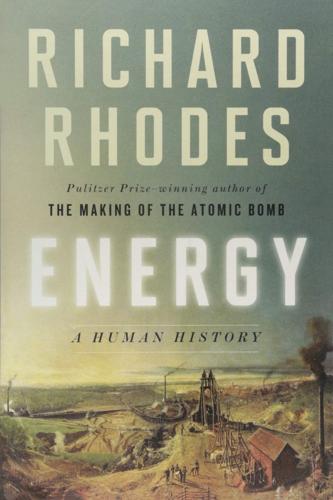
Energy: A Human History
by
Richard Rhodes
Published 28 May 2018
Denis Papin, “A New Method of Obtaining Very Great Moving Powers at Small Cost,” reprinted in translation in James Patrick Muirhead, The Life of James Watt, with Selections from His Correspondence (New York: D. Appleton, 1859), 136–42, q.v. (1690), 105–6. 27. Ibid., 108–9 (tran. ed.). 28. Landgrave fountain project: Sigvard Strandh, A History of the Machine (New York: A&W, 1979), 115. 29. Quoted in Valenti, “Leibniz, Papin, and the Steam Engine,” 10. 30. Ibid. 31. Papin, “A New Method of Obtaining,” in Muirhead, The Life of James Watt, 106. 32. Quoted in Valenti, “Leibniz, Papin, and the Steam Engine,” 10. 33. Papin’s book: Recueil de diverses Pieces touchant quelques nouvelles Machines, &c.
…
He and his partners dismantled it (the landowner claimed they stole it) for the wood in a time when wood had become scarce around London. They carted it across the Thames River to build the larger Globe Theatre in naughty Southwark, next door to a bear-baiting arena. A Frenchman, Denis Papin, concerned with feeding the poor, whose invention of the pressure cooker prepared the way for the steam engine. James Watt, of course, the Scotsman who gave us the steam engine itself, but also Thomas Newcomen before him, whose great galumphing atmospheric steam machine preceded Watt’s elegant elaboration. I visited a replica Newcomen engine in England on one of the few days a year when its keepers fire it up. It was the size of a house and a champion coal hog.
…
Parliament authorized the first such railway on 13 May 1776, from Caldon Low Quarries in Staffordshire, below Liverpool, to Froghall Wharf on the Trent & Mersey Canal, a distance of 3.1 miles.12 From that beginning, the British network of feeder railways grew with the canal network. Three other developments, two of them fortuitous, then stimulated innovative change. James Watt’s steam engine patent expired in June 1800. Its patent protection had discouraged other inventors from exploring improvements. Now, as both Watt and Boulton retired, the field of steam engine design opened up to new ideas. Casting iron pigs, so-called because of the resemblance of the casting molds to rows of suckling pigs. In 1803, another fortuity put the cost of railway horses and fodder almost out of reach: England declared war on the France of Emperor Napoleon Bonaparte, beginning twelve years of European military conflict.

Fred Dibnah's Age of Steam
by
David Hall
and
Fred Dibnah
Published 1 Jan 2003
It was an incredible skyline, and of course most other industrial towns in Lancashire and the northern half of England were pretty much the same. What you’ve got to think is that at the bottom of every one of those chimneys was a steam engine of one sort or another. A steam engine is virtually indestructible, some of them were literally made in James Watt’s period back in the eighteenth century. There’s a great mill in Bolton called the Gilner Mill that was still driven right up to 1947 by a beam engine with Watt’s parallel motion. A steam engine really is a fascinating thing. When it is running it comes alive in a strange way. It has an unbelievable smell about it for a start. Even people who come to my garden now notice it when they go near my boiler.
…
It was an exciting period when anything seemed to be possible. It was the Age of Steam. Of course, the development of the steam engine carried on right up to the 1920s when it became obvious that the steam turbine was a much better piece of equipment and much more economical. In fact, the steam turbine is still our main source of electricity. Its invention revolutionized electricity generation and, although he’s nothing like as well known, the man who invented it, Charles Parsons, and his steam turbine were to the twentieth century what James Watt and the steam engine were to the nineteenth. Steam locomotives continued to be built and operated on the railways until the 1960s and many of the great steam-driven mill engines and colliery winding engines were used until the same time to provide direct steam power.
…
Steam was the answer. The steam engine is really a fairly simple machine. The principles of steam power are based around two major properties. First, the expansion of steam in an enclosed cylinder pushing a piston which is connected to a crankshaft by a connecting rod. And second, the sudden condensation of steam, which creates a vacuum in the cylinder, making it easier for the steam to push the piston back along the cylinder to its starting place. Thomas Newcomen invented the first successful steam engine in 1705, but later in the eighteenth century it was greatly improved by James Watt. Before this time, though, it had been known for many centuries that steam was capable of moving a mass.
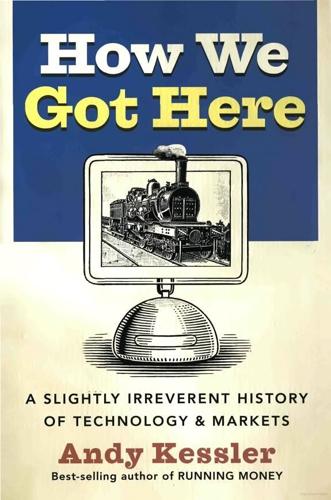
How We Got Here: A Slightly Irreverent History of Technology and Markets
by
Andy Kessler
Published 13 Jun 2005
Wilkinson desperately needed a source of power to operate his bellows to smelt iron ore to pore into cannon casts. He stumbled on the solution while watching a funky new steam engine pumping out his own flooded coalmines. This almost 3.0 steam engine would have a profound influence on industry, but that wasn’t so obvious at first. *** It was, of course, James Watt’s steam engine, but it still wasn’t all that good. Back in 1763, James Watt was employed at Glasgow University, with the task of fixing a Newcomen steam engine. Fifty years after Newcomen’s invention, five horsepower was still not very efficient, plus it broke down all the time. And, someone had to constantly seal the cylinder to prevent the steam from leaking out and the vacuum from weakening.
…
The biggest problem facing any new business, be it steam engines or static memory, iron foundries or semiconductor fabs, is finding capital to fund the business. Banks won’t lend money to businesses they don’t understand. That’s because their method is to study the past financial history of a business to predict the future cash flow and the likelihood they will be paid back. New business? Forget it. Come back when the profits roll in. *** Back in 1769, Matthew Boulton was attracted to James Watt and his steam engine and provided him with risk capital because he understood early how the steam engine could change the manufacturing business.
…
It’s nice to have connections. *** James Watt, meanwhile, was still haunted by the bad rap that the early high-pressure steam engines got when their boilers exploded, and he refused to use high-pressure steam. But others eventually would. High-pressure steam provided much more horsepower for the same displacement cylinders and the same weight engines. Watt’s engine was all right for factories, even for paddleboats on a flat river, but pulling 30 tons of coal uphill on a railroad track would have required an impractically large, low pressure Boulton and Watt steam engine. Until 1800, the Watt patent ruled.

Against Intellectual Monopoly
by
Michele Boldrin
and
David K. Levine
Published 6 Jul 2008
Later drafts of this chapter benefited enormously from the arrival of Google Book Search, which allowed us to check many original historical sources about James Watt and the steam engine we would have never thought possible before. 4. Lord (1923) gives figures on the number of steam engines produced by Boulton and Watt between 1775 and 1800, and The Cambridge Economic History of Europe (1965) provides data on the spread of total horsepower between 1800 and 1815 and the spread of steam power more broadly. However, Kanefsky (1979) has largely discredited Lord’s numbers, which is why we use figures on machines and horsepower from Kanefsky and Robey (1980). Our horsepower calculations are based on 510 steam engines generating about 5,000 horsepower in the United Kingdom in 1760.
…
This retardation of innovation is a classic case of what we shall refer to as intellectual property inefficiency (or IP inefficiency). Finally, there is the slow rate at which the steam engine was adopted before the expiration of Watt’s patent. By keeping prices high and preventing others from producing cheaper or better steam engines, Boulton and Watt hampered capital accumulation and slowed economic growth. The story of James Watt is a damaging case for the benefits of a patent system, but we shall see that it is not an unusual story. New ideas accrue almost by chance to innovators while they are carrying out a routine activity aimed at a completely different end.
…
A great many attendees at conferences and seminars listened patiently to variations on our analysis: the economic departments of Arizona State University, Beijing University, European University Institute, Florence, New York University, Oxford University, Purdue University, SUNY Buffalo, University of California, Los Angeles, Universidad Aut ónoma, Madrid, Venice International University, University of Wisconsin–Madison, and Wuhan University; theory and/or macroeconomics workshops at Brown University, Carlos III, City University of Hong Kong, Columbia University, Cornell University, Harvard University, Humboldt University of Berlin, Indiana University, Iowa State University, London School of Economics, North-western University, Rochester University, Stanford University, Universitat Pompeu Fabra, University of Toulouse, University of Alabama, University of California, Berkeley, University of Chicago, and University of Kansas; and conferences and seminars including American Economic Association meetings in Atlanta, Carnegie Rochester Conference, Federal Reserve Bank of Dallas conference on globalization, Federal Reserve Bank of Richmond, Fundaci ón Urrutia Elejalde Conference, Madrid, Innocenzo Gasparini Institute for Economic Research, Milan, Instituto Tecnol ógico Aut ónomo de México, Mexico City, Loyola University, Chicago, Rochester University Weg-mans Conference, Society for Economic Dynamics Conference, Paris, World Bank–Pompeu Fabra conference, and Yale University’s Cowles Commission. P1: KNP head margin: 1/2 gutter margin: 7/8 CUUS245-01 cuus245 978 0 521 87928 6 April 29, 2008 17:24 ONE Introduction In late 1764, while repairing a small Newcomen steam engine, the idea of allowing steam to expand and condense in separate containers sprang into the mind of James Watt. He spent the next few months in unceasing labor building a model of the new engine. In 1768, after a series of improvements and substantial borrowing, he applied for a patent on the idea, which required him to travel to London in August. He spent the next six months working hard to obtain his patent.
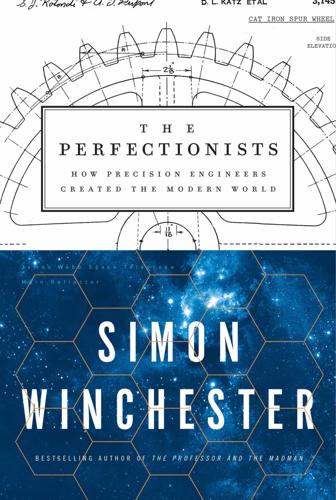
The Perfectionists: How Precision Engineers Created the Modern World
by
Simon Winchester
Published 7 May 2018
The distance suggests a certain lack of yearning for him back in his native England. And the New Testament remark about a prophet being without honor in his own country would seem to apply in his case, as Wilkinson is today rather little remembered. He is overshadowed quite comprehensively by his much-better-known colleague and customer, the Scotsman James Watt, whose early steam engines came into being, essentially, by way of John Wilkinson’s exceptional technical skills. History will show that the story of such engines, which were so central to the mechanics of the following century’s Industrial Revolution, is inextricably entwined with that of the manufacture of cannons, and not simply because both men used components made from heavy hunks of iron.
…
Yet what elevates Wilkinson’s new method to the status of a world-changing invention, and Bersham’s consequent elevation from the local to the world stage, would come the following year, 1775, when he started to do serious business with James Watt. He would then marry his new cannon-making technique, though this time without a brand-new patent, incautiously, with the invention that Watt was just then in the throes of completing, the invention that would ensure that the Industrial Revolution and much else besides and beyond were powered by the cleverly harnessed power of steam. The principle of a steam engine is familiar, and is based on the simple physical fact that when liquid water is heated to its boiling point it becomes a gas.
…
The beam could lift floodwater, say, out of a waterlogged tin mine. Thus was born a very rudimentary kind of steam engine, almost useless for any application beyond pumping water, but given that early eighteenth-century England was awash with shallow mines that were themselves awash with water, the mechanism proved popular and useful to the colliery community. The Newcomen engine and its like remained in production for more than seventy years, its popularity beginning to lessen only in the mid-1760s, when James Watt, who was then employed making and repairing scientific instruments six hundred miles away at the University of Glasgow, studied a model of its workings closely and decided, in a series of moments of the purest genius, that it could be markedly improved.
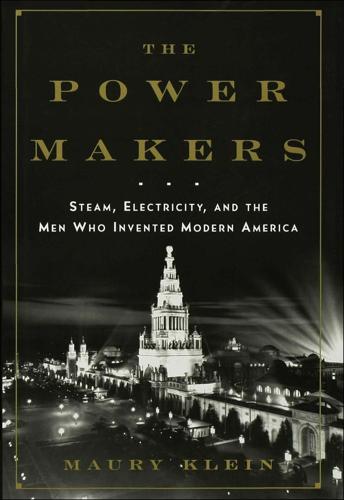
The Power Makers
by
Maury Klein
Published 26 May 2008
Quoted in Hills, Power from Steam, 1. 2. H. W. Dickinson, James Watt: Craftsman and Engineer (Cambridge, Eng., 1936), 1–28. 3. Ibid., 29–35. Unless otherwise indicated, the descriptions of Watt’s experiments are drawn from this source. 4. Isaac Asimov, Biographical Encyclopedia of Science and Technology (Garden City, N. Y ., 1982), 194 –96. This is the second revised edition. See also Dickinson, James Watt, 35–36, and Eric Robinson and A. E. Musson (eds.), James Watt and the Steam Revolution (New York, 1969), 39–40. 5. Dickinson, James Watt, 35–36; H. W. Dickinson, A Short History of the Steam Engine (New York, 1939), 66 –69; Hills, Power from Steam, 51–54; Robert H.
…
Both works give more detailed explanations of how the atmospheric steam engine works. See also the brief but clear explanation at /www.egr.msu.edu/~lira/supp/steam/. 21. H. W. Dickinson, Matthew Boulton (Cambridge, Eng., 1937), 38, 79–80. 22. Ibid., 80–82. Boulton’s letter can also be found in Robinson and Musson, Watt and the Steam Revolution, 62– 63. 23. Dickinson, James Watt, 38– 43, 67–77. See also Watt’s patent application of 1769 in Robinson and Musson, Watt and the Steam Revolution, 60– 61. 24. Quoted in Dickinson, James Watt, 57. 25. Dickinson, Matthew Boulton, 76, 83; Dickinson, James Watt, 79. 26. Dickinson, Matthew Boulton, 83–84; Dickinson, James Watt, 81–85. 27.
…
Conot, Robert. A Streak of Luck: The Life and Legend of Thomas Alva Edison (New York, 1979). Coulson, Thomas. Joseph Henry: His Life and Work (Princeton, 1950). Dickinson, H. W. James Watt: Craftsman and Engineer (Cambridge, Eng., 1936). ———. Matthew Boulton (Cambridge, Eng., 1937). ———. Robert Fulton, Engineer and Artist: His Life and Works (London, 1913). Dickinson, H. W., and Rhys Jenkins. James Watt and the Steam Engine (Oxford, 1927). Dray, Philip . Stealing God’s Thunder: Benjamin Franklin’s Lightning Rod and the Invention of America (New York, 2005). Dyer, Frank Lewis, and Thomas Commerford Martin.
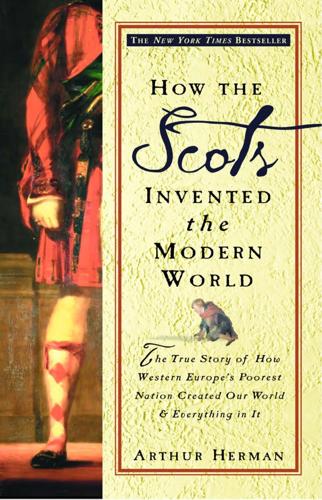
How the Scots Invented the Modern World: The True Story of How Western Europe's Poorest Nation Created Our World and Everything in It
by
Arthur Herman
Published 27 Nov 2001
“I was thinking upon the engine at the time,” he wrote later, “when the idea came into my mind that as steam was an elastic body it would rush into a vacuum, and if a communication were made between the cylinder and an exhausted vessel it would rush into it, and might be there condensed without cooling the cylinder. . . . I had not walked farther than the golf-house when the whole thing was arranged in my mind.” Contrary to myth, James Watt did not invent the steam engine. Two Englishmen, Newcomen and Thomas Savery, did that. What Watt did was typically Scottish: he perfected something created by someone else, and gave it a higher and wider application than its original inventor had imagined. Watt applied to the steam engine the idea of separate condensation, which allowed it to generate a constant motion, which, in 1781, Watt turned into a rotary motion. He had created the work engine of the Industrial Revolution.
…
Table of Contents Title Page Prologue Preface PART ONE - Epiphany CHAPTER ONE - The New Jerusalem I II CHAPTER TWO - A Trap of Their Own Making I II CHAPTER THREE - The Proper Study of Mankind I I II CHAPTER FOUR - The Proper Study of Mankind II I II III CHAPTER FIVE - A Land Divided I II CHAPTER SIX - Last Stand I II III CHAPTER SEVEN - Profitable Ventures I II III CHAPTER EIGHT - A Select Society: Adam Smith and His Friends I II III PART TWO - Diaspora CHAPTER NINE - “That Great Design”: Scots in America I II III IV CHAPTER TEN - Light from the North: Scots, Liberals, and Reform I II CHAPTER ELEVEN - The Last Minstrel: Sir Walter Scott and the Highland Revival I II III CHAPTER TWELVE - Practical Matters: Scots in Science and Industry I II III CHAPTER THIRTEEN - The Sun Never Sets: Scots and the British Empire I II III III CHAPTER FOURTEEN - Self-Made Men: Scots in the United States I II III IV Conclusion Sources and Guide for Further Reading Acknowledgments Copyright Page Preface People of Scottish descent are usually proud about their history and achievements. Yet even they know only the half of it. They can recite many names and details in the familiar story of their people. “Braveheart” William Wallace and Robert the Bruce; the Arbroath Declaration and Mary Queen of Scots; Robert Burns and Bonnie Prince Charlie. They point out how James Watt invented the steam engine, John Boyd Dunlop the bicycle tire, and Alexander Fleming penicillin. Yet no one else seems to pay much attention. Scots often complain that Scotland’s place among nations deserves more exposure than it gets. But their complaints have an ironic, rather than a beseeching, tone. They seem to take a perverse pride in being so consistently underestimated.
…
But just as in these other cases, the version of technology we live with most closely resembles the one that Scots such as James Watt organized and perfected. It rests on certain basic principles that the Scottish Enlightenment enshrined: common sense, experience as our best source of knowledge, and arriving at scientific laws by testing general hypotheses through individual experiment and trial and error. Science and technology give civilization its dynamic movement, like the ceaselessly moving pistons of Watt’s steam engine. To the Scots, they were the key to modern life, just as they are for us. A rapid succession of Scottish inventors, engineers, doctors, and scientists proved their point to the rest of the world.
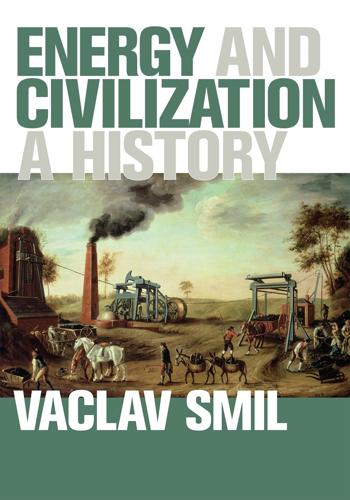
Energy and Civilization: A History
by
Vaclav Smil
Published 11 May 2017
BCE 1,700,000 + Oldowan stone tools (<0.5 m of edge/kg of stone) 250,000 + Acheulean stone tools 150,000 + Mousterian stone flake tools 50,000 + Bone objects 30,000 + Aurignacian stone tools Bow and stone arrows 15,000 + Magdalenian stone tools (12 m of edge/kg of stone) 9,000 + Sheep domesticated in the Middle East 7,400 + Corn in Oaxaca Valley 7,000 + Wheat in Mesopotamia Pigs domesticated in the Middle East 6,500 + Cattle domesticated in the Middle East 6,000 + Copper artifacts more common in the Middle East 5,000 + Barley in Egypt Corn in the basin of Mexico 4,400 + Potatoes in highland Peru and Bolivia 4,000 + Light wooden plows in Mesopotamia 3,500 + Pack asses in the Middle East Wooden ships in the Mediterranean Pottery and bricks fired in kilns in Mesopotamia Irrigation in Mesopotamia 3,200 + Wheeled vehicles in Uruk 3,000 + Square sail in Egypt Draft oxen in Mesopotamia Camel domesticated Potter’s wheel in Mesopotamia 2,800 + Pyramid construction in Egypt 2,500 + Bronze in Mesopotamia Small glass objects in Egypt 2,000 + Spoked wheel in Mesopotamia Horse-drawn vehicles in Egypt Shaduf in Mesopotamia 1,700 + Horse riding 1,500 + Copper in China Paddy rice in China Axle lubricants in the Middle East 1,400 + Iron in Mesopotamia 1,300 + Seed drill in Mesopotamia Horse-drawn chariots in China 1,200 + Iron more common in India, Middle East, Europe 800 + Mounted archers on Asian steppes Candles in the Middle East 600 + Tin in Greece Penteconter ships common in Greece Archimedean screw in Egyptian irrigation 500 + North Arabian camel saddle Trireme in Greece 400 + Crossbow in China 432 Parthenon completed 300 + Stirrups in China Gears in Egypt and Greece 312 Roman Via Appia and Aqua Appia completed 200 + Breastband harness in China Sailings to windward advances in China Batten-strengthened sails in China Percussion drilling in Sichuan Crank handle in China 150 + Iron moldboard plows in China 100 + Beginnings of collar harness in China House heating by coal in China Waterwheels in Greece and Rome Wheelbarrow in China Norias in the Middle East 80 + Hypocaust heating in Rome CE 300 Roman cursus publicus surpasses 80,000 km 600 + Windmills (Iran) 850 + Triangular sail in the Mediterranean 900 + Collar harness and horseshoes common in Europe Bamboo fire-lances in China 980 + Canal pound lock in China 1000 + Widespread adoption of waterwheels in Western Europe 1040 Clear directions for gunpowder preparation in China 1100 + Long bow in England 1150 + Windmills spreading in Western Europe 1200 + Inca road construction 1280 + Cannons in China 1300 + Gunpowder and cannons in Europe 1327 Beijing-Hangzhou Grand Canal (1,800 km long) completed 1350 + Handheld guns in Europe 1400 + Heavy draft horses in Europe Drainage windmills in the Netherlands Blast furnaces in the Rhine region 1420 + Portuguese caravels make longer sailings 1492 Columbus sails across the Atlantic 1497 Vasco da Gama sails to India 1519 Magellan’s Victoria circumnavigates the Earth 1550 + Large full-rigged sail ships with guns in Western Europe 1600 + Ball bearings in Western Europe 1640 + English coal mining expands 1690 Experiments with atmospheric steam engine (Denis Papin) 1698 Simple, small steam engine (Thomas Savery) 1709 Coke from bituminous coal (Abraham Darby) 1712 Atmospheric steam engine (Thomas Newcomen) 1745 Fantail for automatic turning of windmills 1750 + Intensive canal construction in Western Europe Use of coke spreads in English iron making Newcomen’s engine more common in English coal mines 1757 Precision-cutting lathe (Henry Maudslay) 1769 James Watt patents a separate condenser for steam engine 1770s Factories powered by waterwheels 1775 Watt’s patent extended to 1800 1782 Hot air balloon (Joseph and Etienne Montgolfier) 1794 Lamps with wick holders and glass chimneys (Aimé Argand) 1800 Electric battery (Alessandro Volta) 1800s Steamboats (Charlotte Dundas, Clermont) High-pressure steam engines (R.
…
Collapse: How Societies Choose to Fail or Succeed. New York: Penguin Books. Dickens, C. 1854. Hard Times. London: Bradbury & Evans. Dickey, P. A. 1959. The first oil well. Journal of Petroleum Technology 59:14–25. Dickinson, H. W. 1939. A Short History of the Steam Engine. Cambridge: Cambridge University Press. Dickinson, H. W., and R. Jenkins. 1927. James Watt and the Steam Engine. Oxford: Oxford University Press. Diderot, D., and J.L.R. D’Alembert. 1769–1772. L’Encyclopedie ou dictionnaire raisonne des sciences des arts et des métiers. Paris: Avec approbation et privilege du roy. Dieffenbach, E. M., and R. B. Gray. 1960.
…
Figure 1.3 Two horses turning a capstan geared to pumping well water in a mid-eighteenth-century French carpet manufactory (reproduced from the Encyclopédie [Diderot and d’Alembert 1769–1772]). An average horse of that period could not sustain a steady work rate of one horsepower. James Watt used an exaggerated rating to ensure customers’ satisfaction with his horsepower-denominated steam engines installed to place harnessed animals. Figure 1.4 Charcoaling in early seventeenth-century England as depicted in John Evelyn’s Silva (1607). Figure 2.1 Acheulean stone tools, first made by Homo ergaster, were formed by the removal of stone flakes to create specialized cutting blades (Corbis).
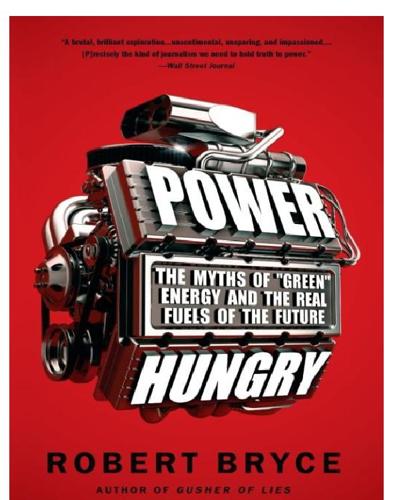
Power Hungry: The Myths of "Green" Energy and the Real Fuels of the Future
by
Robert Bryce
Published 26 Apr 2011
And given that our effort requires basic physics, the first stop on our power quest is the work done by a Scotsman whose last name has become synonymous with power: James Watt. We use Watt’s name on a near-daily basis. But few people know what a “watt” is or why Watt’s work was so important. Here are the essential facts: Watt, born in 1736, made critical improvements to the steam engine. Those inventions raised the efficiency of steam engines so much that Watt, having patented the improvements, became a wealthy man.1 But Watt knew that improvements to the steam engine were not enough. He needed a metric that could help his customers understand the amount of work done by his steam engines in an hour or in a day. Given the centrality of horse-pulled power to eighteenth-century industry, and his ability to measure the work done by horses, it’s not surprising that he dubbed his new unit a “horsepower.”
…
Over time, the gains in efficiency get swamped by the increased consumption that follows each gain. Numerous other analysts have come to the same conclusion as Polimeni.29 We can also look at historical trends for evidence of the Jevons Paradox. James Watt’s improvements to the steam engine led to huge improvements in energy efficiency, with the immediate result being a sharp drop in coal consumption. Watt continued making improvements in the steam engine until he died in 1819, before he was fully able to appreciate the revolution he helped to ignite.30 And the dimensions of that change can be seen in the amount of energy that was consumed: Between 1830 and 1863, British coal use increased by about 1,000 percent.31 Given that energy efficiency results in increased energy use, it’s obvious that, although energy efficiency should be pursued, it cannot be expected to solve the dilemmas posed by the world’s ever-growing need for energy.
…
The first railroads were built to haul coal, and the locomotives that hauled the coal also burned coal. As author Jeff Goodell wrote in his book Big Coal, the railroads were a key invention that led to more coal production because, “In effect, coal hauled itself.”5 Of course, the railroads were only part of the equation. By perfecting the steam engine, James Watt enabled British mines to produce coal more economically, because his engines pumped water and lifted coal out of the mines.6 The idea that hydrocarbons beget more hydrocarbons can also be seen by looking at the Cardinal coal mine in western Kentucky. The mine produces more than 15,000 tons of coal per day.
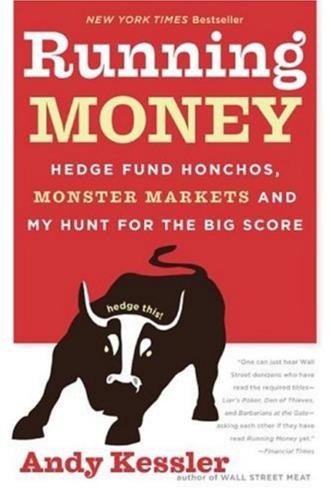
Running Money
by
Andy Kessler
Published 4 Jun 2007
Many had tried to harness the power of steam for hundreds of years. But just a few years earlier in 1706, a steam engine invented by Thomas Newcomen actually, kind of, sort of worked. It was a clanky contraption that theoretically could lift two tons of water up 165 feet. Sometimes it did, most times it didn’t. But miners were desperate, and Newcomen engines were the only game in town for the next 60 years. In 1763, a technician named James Watt was employed at Glasgow University. His task was to maintain—more like fix—a Newcomen steam engine that the university owned. It was, as techies like to say, a POS, a piece of shit.
…
He needed to crank 15-foothigh bellows to blow enough air to heat up the coke to an intense Wilkinson and Watt 57 enough heat. His boring tool also needed a source of power to turn. It required teams of horses, which were expensive to feed, let alone clean up after. James Watt’s steam engines were in the area, pumping water out of coal mines, and Wilkinson thought he could use one to crank his bellows instead of horses. So, Wilkinson tried one. Success? Nope. Instant failure. There was barely any power from Watt’s engine to pump the bellows. So Wilkinson took the steam engine apart and probably started laughing. Watt’s cylinder was awful— as jagged as England’s shoreline. Even wrapped with wet hemp, it leaked steam with every stroke, robbing the engine of most of its power.
…
He was constantly on the lookout for ideas and processes that could improve his 1,000-employee, three-story shop. Back in 1768, James Watt had stopped by to check out Boulton’s manufactory. They discussed Watt’s new engine, now up to 5 or so horsepower, as well as its potential uses in the factory and 56 Running Money even in driving carriages. It was a fateful meeting, because a year later, Watt needed to raise some money fast to buy out the nowseared Roebuck. When Watt came back begging, Boulton agreed to buy out Roebuck’s two-thirds interest in the patent. More importantly, Boulton agreed to fund the continued research by Watt into making his external condenser steam engine work. The Newcomen design was still selling, despite all its flaws, but the market wanted more powerful engines.
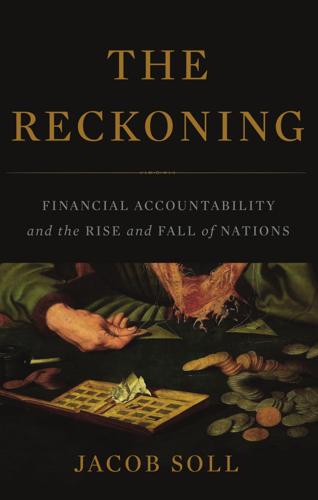
The Reckoning: Financial Accountability and the Rise and Fall of Nations
by
Jacob Soll
Published 28 Apr 2014
Although companies did do periodic accounts for distinct elements of their factories (materials, labor, production machines, cash, payments, share payments, profit and loss), few ever did general, overall audits.14 Yet the leaders of industry knew that their wealth sat on the foundations of accurate accounting. James Watt (1736–1819), scientist, inventor of the steam engine, and Scottish Presbyterian, was deeply aware of the importance of accounting in his various enterprises and factories. As a young apprentice, Watt had borrowed money from his father, and to repay the debt—and to show his father his progress—every day, after working more than twelve hours, he still found time to keep good double-entry books.15 Watt’s partner, Matthew Boulton (1728–1809), saw the lab, factory, and account books as part of the machinery of industry.
…
The effects of industrial pollution on Wedgwood’s workers and their families made him wonder why science had not brought more human improvement. As war and violent revolution gripped Europe, tuberculosis ravaged Wedgwood’s and other industrial families. Joseph Priestley’s and James Watt’s daughters both suffered from it, and the lead and coal of the Wedgwood factory damaged the lungs of Josiah’s son Tom. In his later years, James Watt wrote, “Nothing now remains, as I can find it [money] can neither bring health nor happiness.” With his constant faith in science, Wedgwood spent money on research to cure these diseases, but his heart was more in profit and industry than in medical progress and human well-being.32 The horrors of industry inspired Romantic poets like William Wordsworth to lament that industry was England’s “bane” and had spread darkness “O’er hill and vale.”
…
Quotations are in the same volume, from Wedgwood to Bentley, October 1, 1769, 1:297; Wedgwood to Bentley, September 3, 1770, 1:375; Wedgwood to John Wedgwood, June 4, 1766, 1:87; Wedgwood to his brother, John Wedgwood, March 1765, 1:39. Also see Sidney Pollard, The Genesis of Modern Management: A Study of the Industrial Revolution in Great Britain (London: Edward Arnold, 1965), 211. 12. Yamey, Art and Accounting, 36. 13. Pollard, The Genesis of Modern Management, 210. 14. Ibid., 222–223. 15. James Watt Papers, James Watt to his father, July 21, 1755, MS 4/11 letters to father, 1754–1774, Birmingham City Library. 16. A. E. Musson and Eric Robinson, Science and Technology in the Industrial Revolution (Manchester, UK: Manchester University Press, 1969), 210–211; Pollard, The Genesis of Modern Management, 214, 229, 231. 17.

The Tyranny of Experts: Economists, Dictators, and the Forgotten Rights of the Poor
by
William Easterly
Published 4 Mar 2014
Innovation will happen in a decentralized market system, and growth will happen thanks to innovation. James Watt was able to anticipate returns from his steam engine, not only because of his patent, but also because of his temporary monopoly on the steam engine. He continued to make better steam engines than anyone else, as he continually tinkered to improve the fuel efficiency of his engines. By the mid-1780s James Watt had perfected an engine that would not be overtaken for another fifty years. His son James Watt Jr. (1769–1848) took over the business for many years after his father had retired. THE SPREAD OF TECHNOLOGY The other new wrinkle in Romer’s theory is extremely important because it gives us a simple theory of how technology spreads.
…
This has the strong advantage of raising the returns to invention, to get inventors to do more of what is so beneficial to society. By the time he installed his first steam engine in 1776, James Watt had been working on his steam engine for twelve years. He kept going with financing from a factory owner with deep pockets. Watt’s spending twelve years improving an invention and a factory owner’s financing him only happened because Watt had gotten a patent on his steam engine. Conventional wisdom is that patents are the main or only way the West solved the inadequate incentives for invention problem. But there is also an even more bottom-up solution that was first sketched out by Joseph Schumpeter early in the twentieth century in his famous theory of “creative destruction.”
…
But the population story is of no help in explaining why the Western edge of Eurasia would pull ahead beginning in the late eighteenth century and leave the Eastern edge far behind. Why did the West invent the steam engine and railroad, and not the East? We need something else. That something else is already on the table: the Western idea of the individual that emerged from the Enlightenment. That miraculous year 1776 is again the key symbol: Jefferson declares all men equal, Adam Smith declares all men free to choose, and James Watt installs his first steam engine. There are two key mechanisms by which the new Western idea of the individual helped innovation: the challenge to authority and the private return to innovation.
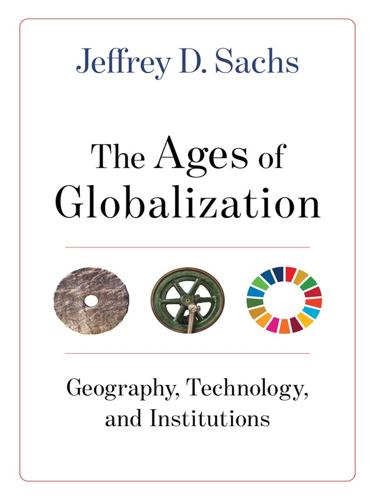
The Ages of Globalization
by
Jeffrey D. Sachs
Published 2 Jun 2020
This is the year when the inventor James Watt successfully commercialized his new steam engine. We have discussed many pivotal inventions throughout history: agriculture, animal domestication, the alphabet, gunpowder, the printing press, ocean navigation, and others. Yet with the possible exception of Gutenberg’s printing press, it is very hard to think of an invention by a single inventor as consequential as Watt’s steam engine (figure 7.1). The steam engine gave birth to the Industrial Age and the modern economy. While the steam engine is not solely responsible for economic modernity, without the steam engine most of the other technological breakthroughs of the past two centuries would not have been possible.2 7.1 James Watt’s Steam Engine, c. 1776 Source: Wikimedia Commons contributors, “File:Maquina vapor Watt ETSIIM.jpg,” Wikimedia Commons, the free media repository, https://commons.wikimedia.org/w/index.php?
…
While the steam engine is not solely responsible for economic modernity, without the steam engine most of the other technological breakthroughs of the past two centuries would not have been possible.2 7.1 James Watt’s Steam Engine, c. 1776 Source: Wikimedia Commons contributors, “File:Maquina vapor Watt ETSIIM.jpg,” Wikimedia Commons, the free media repository, https://commons.wikimedia.org/w/index.php?title=File:Maquina_vapor_Watt_ETSIIM.jpg&oldid=362051513 Newton had declared “If I have seen further it is by standing on the shoulders of giants.” Watt too made his great breakthroughs by building on the innovations of worthy predecessors. Thomas Savery invented the first modern steam engine in 1699, using steam created by burning coal to pump water. The aim was to use the steam engine to pump water from coal mines to raise the productivity of the mine.
…
It required an enormous input of energy and was not economical to use for other applications. In the 1760s, James Watt, employed in a workshop at the University of Glasgow in Scotland making scientific instruments, began thinking about how to make Newcomen’s steam engine more efficient. Brilliantly, Watt made two great innovations to Newcomen’s engine. One involved the translation of the steam energy into motion. Rather than the alternating beam that Newcomen had used, Watt introduced rotary motion into a steam engine. Watt’s second change was even more revolutionary: the addition of a separate condenser. Newcomen’s steam engine involved heating and then cooling the boiler to create the alternation of hot and cold temperatures to create and condense steam.
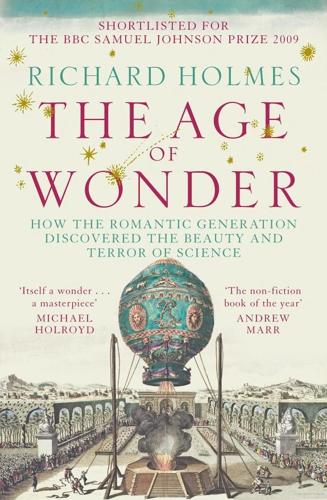
The Age of Wonder
by
Richard Holmes
Published 15 Jan 2008
He worked immensely hard, giving his first Bakerian Lecture to the Royal Society in 1829, and also accepting a simultaneous post as Professor of Chemistry at the Royal Military Academy, Woolwich. He expanded his work on electromagnetism, and began the construction of the first electrical generators, by producing an ‘alternating’ electrical current. This would lead to electrical dynamos that would ultimately revolutionise industry as much as James Watt’s steam engine. His experiment with magnetic coils and a galvanometer (which was made to move without physical contact), carried out at the Institution’s laboratory on 29 August 1831, was said to have ended ‘the Age of Steam’ at a stroke, and begun the new ‘Age of Electricity’.48 Faraday also took on from Davy the great task of educating the public in scientific matters.
…
During a long and eccentric career he invented the patent empyreal air-stove, the Celestine harpsichord and the eidouranion or transparent orrery, a portable device for projecting an illuminated model of the solar system and the main constellations. His Course of Lectures on Natural and Experimental Philosophy (1805) was eagerly read by the young Shelley, and covered the basics of Romantic science including astronomy, chemistry, electricity, geology and meteorology. JAMES WATT, 1736-1819. Engineer and member of the Lunar Society. In partnership with Matthew Boulton he developed new forms of steam engine, for use in mines and textile manufacture. The international unit of electricity, the watt (a measure of the overall power of an electrical current), was named after him. Helped Davy construct his gas-breathing devices at Bristol. His ailing son Gregory Watt junior was a gifted geologist, and an early friend of Davy’s at Bristol until his premature death in 1804.
…
See also John Allen, ‘The Early History of Varfell’, in Ludgvan, Ludgvan Horticultural Society, no date 45 Golinski, pp157-83 46 Reply from James Watt, Birmingham, 13 November 1799, in JD Fragments, pp24-6 47 HD Works 3, pp278-9 48 HD Works 3, pp278-80; on Davy’s impetuosity and courage see Oliver Sacks, Uncle Tungsten: Memories of a Chemical Boyhood, Picador, 2001 49 Joseph Cottle, Reminiscences, vol 1, 1847, p264 50 HD Works 3, pp246-7; James Watt, Birmingham, 13 November 1799, in JD Fragments, pp24-6; equipment partly illustrated in Fullmer, p216 51 Treneer, p72 52 Fullmer, p213 53 Ibid., p214 54 HD Works 3, p272 55 HD, Researches Chemical and Philosophical chiefly concerning Nitrous Oxide, London, 1800, p461.

Empire of Guns
by
Priya Satia
Published 10 Apr 2018
The Ordnance Board canceled the patent a year later to open up solid boring to more contractors, who also experimented with casting methods. Meanwhile, Wilkinson devised a cylinder lathe based on his cannon lathe, and it alone could accurately bore the cylinders for James Watt’s steam engines: its importance to Watt’s experiments “cannot be exaggerated.” Wilkinson was already the iron supplier for the Boulton & Watt steam engine enterprise. In typical Birmingham style, Boulton, another government contractor (on which more below), was applying the lessons of button manufacture to steam engine manufacture. Wilkinson was also one of the earliest purchasers of Boulton & Watt engines, which he used to raise water from mine shafts.
…
He helped fund his former Warrington Academy teacher Joseph Priestley’s experiments with air, and in 1795 (the year of the scandal around him in the Quaker church) he was a trustee for James Watt for the Soho Foundry’s investments in the manufacture of steam engines. His father and siblings lent Boulton money on a mortgage on Boulton’s shares in the Birmingham Canal Navigation Company. He and Boulton colluded to control canal construction in the city, one of the sticking issues being that competitors were not going to use Boulton’s engines. They also worked together to create an assay office in town. Both invested in the Rose Copper Company, in Swansea, in 1802. Galton Jr. assisted Boulton and Watt in steam engine orders and other business matters.
…
Samuel also set the manufacture of navy biscuits on a production-line basis. Maudslay’s factory at Lambeth set new standards of precision engineering using lathes but also made steam engines; he sold one to the Woolwich Arsenal in 1809. Boulton puzzled over: P. Jones, Industrial Enlightenment, 89. In 1775, the Society: Aris’s Birmingham Gazette, December 25, 1775, 3. This is the primary: Mathias, The Transformation of England, 65–66, 82–83. This community also: See, for instance, BCA: MS3782/12/27/102: SGII to Matthew Boulton (and James Watt), [1782]. “culture of apartness”: P. Jones, Industrial Enlightenment, 187–88. a range of devices: Pearson, The Life, Letters and Labours of Francis Galton, 1:43–44, 47.

The Technology Trap: Capital, Labor, and Power in the Age of Automation
by
Carl Benedikt Frey
Published 17 Jun 2019
.… But if a person had predicted these discoveries without being guided by any analogies or indications from past facts, he would deserve the name of seer or prophet, but not of philosopher.”48 Many of the technologies discussed here are still prototypes, but their arrival in the marketplace is not unforeseeable, and while they are still imperfect, every technological revolution began with imperfect technology. The early steam engines were used only to drain mines, and they did not even do that particularly well. Yet Thomas Savory, Thomas Newcomen, and James Watt, all realized that the steam engine was a GPT, and they conceived many applications for it. As noted above, AI is another GPT, and it is already being used to perform both mental and manual tasks. Because its potential applications are so vast, Michael and I began by looking at tasks that computers still perform poorly and where technological leaps have been limited in recent years.
…
As late as 1770, it was almost exclusively used for draining coal mines and in places where coal was very cheap. Steam power became economically viable only with James Watt’s separate condensation chamber, which allowed condensation to take place without much loss of heat from the cylinder.21 However, it took several decades for the Watt engine to become viable and required a partnership with Matthew Boulton for financial backing. Watt’s steam engine was first used in 1784 in the Albion Flour Mill, in which the Boulton & Watt company had invested for promotional purposes. One year later, it was applied in cotton production and gradually spread to woollen spinning mills, sawmills, malt mills for breweries, pottery manufacturing, food processing, sugarcane mills, and iron and coal mining.
…
Consequently, the rational response of labor was to allow mechanization to progress while minimizing the adjustment costs imposed on working people. 6 FROM MASS PRODUCTION TO MASS FLOURISHING When Thomas Jefferson visited Britain in 1786, America was a young republic and a technological backwater. James Watt’s steam engine was the technological wonder of the time and proof of Britain’s relative technological progressiveness. It is “simple, great, and likely to have extensive consequences,” Jefferson remarked.1 Those consequences would eventually become apparent in America as well. During his travels across North America in 1831, Alexis de Tocqueville marveled that “no people in the world have made such rapid progress in trade and manufactures as the Americans.”2 The once-lagging United States was catching up in some sectors and would soon take the technological lead in others.
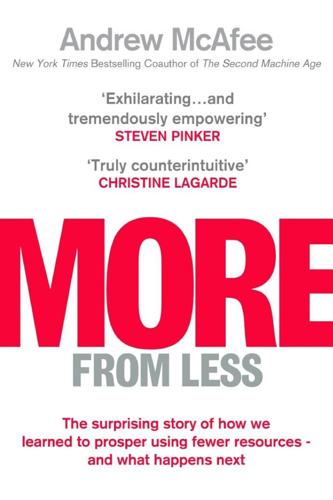
More From Less: The Surprising Story of How We Learned to Prosper Using Fewer Resources – and What Happens Next
by
Andrew McAfee
Published 30 Sep 2019
They interact in a self-reinforcing and ever-expanding cycle, and they’re now creating a dematerializing world. Innovators come up with new and useful technologies. They then partner with entrepreneurs or become entrepreneurs themselves as James Watt did. A new company is the result. Investors such as steam-engine backer Matthew Boulton often join in to provide the capital needed for growth in its early days. The start-up enters a market and takes on incumbents like the Newcomen steam engine. Customers like the new technology better and are free to choose it. Rivals can’t just copy the new technology because it’s protected by patents. So they either have to license it or come up with innovations themselves.
…
In particular, a machine unveiled twenty-two years before Malthus published his Essay assured that the widespread famine he predicted would rank among the worst predictions anyone has ever made. The Most Powerful Idea in the World In March of the earthshaking year 1776I the inventor and investor team of James Watt and Matthew Boulton demonstrated their new steam engine at the Bloomfield coal mine outside Birmingham, England. The idea of using steam-powered machines to pump out flooded English coal mines was not new; an engine developed by Englishman Thomas Newcomen had been used for that purpose for decades. In fact, it was used for little else because the Newcomen engine was so coal hungry that it was economical to use only where its fuel was most cheap and abundant, which was right at the mouths of mines.
…
The World’s Wealthiest It’s easy to see how increased industrial concentration of the kind described by Van Reenen would lead to increased concentration in people’s wealth and incomes. The share prices of publicly traded superstar firms become valuable and so increase the wealth of their founders and investors. This has happened during previous bursts of tech progress—as we saw in chapter 2, both James Watt and Matthew Boulton became wealthy because of the steam engine—but wealth creation in the Second Machine Age is exceptional. Since 1925 (when systematic data collection began), six of the eight highest public-market valuations ever recorded for American companies have belonged to modern high-tech superstars such as Amazon, Alphabet (Google’s parent company), Intel, and Microsoft.

This Changes Everything: Capitalism vs. The Climate
by
Naomi Klein
Published 15 Sep 2014
As the Industrial Revolution matured and workers in the mills started to strike and even riot for better wages and conditions, this decentralization made factory owners highly vulnerable, since quickly finding replacement workers in rural areas was difficult. Beginning in 1776, a Scottish engineer named James Watt perfected and manufactured a power source that offered solutions to all these vulnerabilities. Lawyer and historian Barbara Freese describes Watt’s steam engine as “perhaps the most important invention in the creation of the modern world”—and with good reason.25 By adding a separate condenser, air pump, and later a rotary mechanism to an older model, Watt was able to make the coal-fired steam engine vastly more powerful and adaptable than its predecessors. In contrast, the new machines could power a broad range of industrial operations, including, eventually, boats.
…
Or as one of Watt’s early biographers put it, the generation of power “will no longer depend, as heretofore, on the most inconstant of natural causes—on atmospheric influences.”27 Similarly, when Watt’s engine was installed in a boat, ship crews were liberated from having to adapt their journeys to the winds, a development that rapidly accelerated the colonial project and the ability of European powers to easily annex countries in distant lands. As the Earl of Liverpool put it in a public meeting to memorialize James Watt in 1824, “Be the winds friendly or be they contrary, the power of the Steam Engine overcomes all difficulties. . . . Let the wind blow from whatever quarter it may, let the destination of our force be to whatever part of the world it may, you have the power and the means, by the Steam Engine, of applying that force at the proper time and in the proper manner.”28 Not until the advent of electronic trading would commerce feel itself so liberated from the constraints of living on a planet bound by geography and governed by the elements.
…
Put another way, if extractive energy sources are NFL football players, bashing away at the earth, then renewables are surfers, riding the swells as they come, but doing some pretty fancy tricks along the way. It was precisely this need to adapt ourselves to nature that James Watt’s steam engine purportedly liberated us from in the late 1770s, when it freed factory owners from having to find the best waterfalls, and ship captains from worrying about the prevailing winds. As Andreas Malm writes, the first commercial steam engine “was appreciated for having no ways or places of its own, no external laws, no residual existence outside that brought forth by its proprietors; it was absolutely, indeed ontologically subservient to those who owned it.”9 It is this powerfully seductive illusion of total control that a great many boosters of extractive energy are so reluctant to relinquish.

The Relentless Revolution: A History of Capitalism
by
Joyce Appleby
Published 22 Dec 2009
By that they mean that workshops, if they are clustered together, will be able to draw on a pool of skilled laborers, specialized services, and raw materials at lower prices, an unintended and beneficial consequence of what was really a limitation.34 By 1800, sixteen hundred Newcomen engines were in operation in England; one hundred in Belgium; and forty-five in France. The Netherlands, Russia, and Germany had a few; Portugal and Italy, none.35 Something new was needed to make steam engines economically viable in places where coal was scarce, but in the meantime the success of Newcomen’s machines in solving the drainage problems of coal mines turned England into Europe’s principal mining center with 81 percent of its tonnage. James Watt, a Scottish instrument maker, entered the picture when he was given a Newcomen engine to repair. This encounter inspired him to become a mechanical engineer. Though largely self-taught, Watt drew on the knowledge from the savants he knew in Glasgow.
…
Those in the know advised mineowners, who might be the Church of England, an Oxford college, or noblemen whose land had mineral deposits, to buy a steam engine. Around the same time Abraham Darby figured out how to use coke, a solid derivative of burning coal, instead of carbon from wood in blast furnaces. In a nice symbiosis, his steam engines used coal under their boilers and were used to pump water from the mines that were producing the coal. As with so many other inventions, it took almost a half century before cast iron could be made easily with coke, using the pumping action of steam engines to blast air into the furnaces.33 Newcomen’s steam engine replaced both waterwheels and bellows in mining and ironmaking, the first of an endless succession of substitutions.
…
For this problem, he designed a condenser to send the exhaust to a separate, but connected, chamber. He patented this invention in 1769. Like the use of steam as a force to move objects, the condenser drew upon a basic property of nature, in this case atmospheric pressure. Through a long career of making steam engines and training steam engineers, much of it spent at his factory in Birmingham, Watt continued to work on his design, transforming it, as one scholar recently noted, from “a crude and clumsy contraption into a universal source of industrial power.” The average capacity of Watt’s late-eighteenth-century models was five times that of waterwheels, and they could be located anywhere.37 A horse could expend ten times more energy than a man.
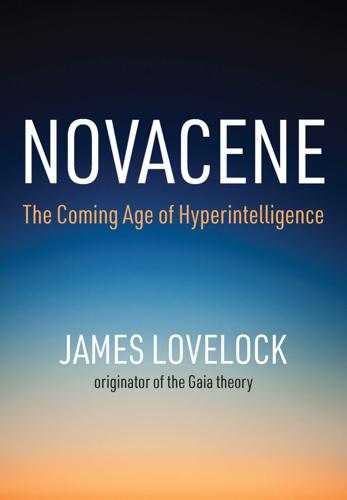
Novacene: The Coming Age of Hyperintelligence
by
James Lovelock
Published 27 Aug 2019
The ‘A causes B’ way of thinking is one-dimensional and linear whereas reality is multi-dimensional and non-linear. One has only to think of one's own life to see how absurd it is to think everything can be explained as a simple linear process of cause and effect. There are also examples from basic engineering. Take the steam engine governor invented by James Watt in the nineteenth century. This was a solution to controlling the speed of a locomotive. The governor consists of a vertical steel shaft rotated by a tiny proportion of the main drive power and it simply spins out a pair of brass balls. The faster the rotation, the more they spread out.
…
Nevertheless, the truth is that, despite being associated with mechanical things, the Anthropocene is a consequence of life on Earth. It is a product of evolution; it is an expression of nature. Evolution by natural selection is often expressed in the statement, ‘The organism that leaves the most progeny is selected.’ The steam engine was certainly prolific, and so were its successors, which rapidly evolved through improvements by inventors such as James Watt. The process went on to become the Industrial Revolution and gave us a century of technical and scientific glory. Of course, through its technological advances, the Anthropocene produced cruel competition for those whose only means of sustenance was selling their physical work.
…
The piston rose and then cold water from a stream nearby was sprayed into the cylinder; the steam condensed, the pressure dropped and the piston moved back to its starting position, doing a substantial amount of work in the process and clearing the mines of water. This ‘atmospheric steam engine’ was not the first steam engine, but it was the best so far and its descendants powered the railway engines of the nineteenth century. For my purposes, what it was used for is of less significance than its impact. This little engine did nothing less than unleash the Industrial Revolution. This was the first time that any form of life on Earth had purposefully used the energy of sunlight to deliver accessible work and do so in a way that was profitable.
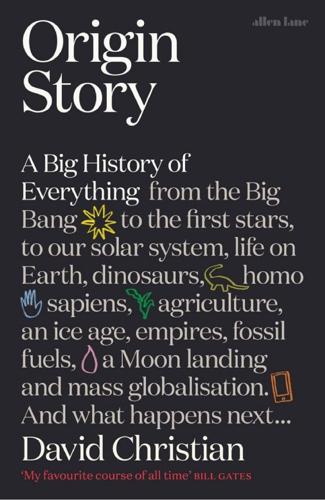
Origin Story: A Big History of Everything
by
David Christian
Published 21 May 2018
Seventeenth-century scientists had begun to understand how atmospheric pressure worked, and by the early eighteenth century, that knowledge was put to use in Newcomen steam engines to pump water from coal mines.16 But the Newcomen steam engine was inefficient and used huge quantities of coal, so it made commercial sense only in coal mines, where coal was cheap. Investors, inventors, and engineers understood that improved pumps could earn them huge profits and revolutionize the supply of coal to English homes and industries. James Watt, the engineer who eventually solved these technical problems, was a Scottish instrument maker, well connected to engineers, scientists, and businessmen.
…
Watt seriously considered taking the offer, but Boulton persuaded him to stay. By 1776, the work was done. The James Watt steam engine gave a first taste of energy flows so vast that they would transform human societies in just two centuries. Like the activation energies that kick-start chemical reactions, energy from fossil fuels provided a pulse of energy that started the technological equivalent of a global chain reaction. Within twenty-five years, five hundred of the new machines were at work in England, and by the 1830s, coal-fired steam engines were the main source of power in British industry. English consumption of energy soared.
…
To the natives, however, both of the East and West Indies, all the commercial benefits which can have resulted from those events have been sunk and lost in the dreadful misfortunes which they have occasioned. —ADAM SMITH, AN INQUIRY INTO THE NATURE AND CAUSES OF THE WEALTH OF NATIONS I sell here, sir, what all the world desires to have—POWER. —MATTHEW BOULTON, THE MAJOR INVESTOR IN JAMES WATT’S IMPROVED STEAM ENGINE When describing previous thresholds of increasing complexity, we have offered some educated guesses about the Goldilocks conditions that made them possible. As we approach today’s world, we can see with much more precision how new Goldilocks conditions accumulated, eventually preparing the way for the astonishing burst of innovation that would create today’s world, the world of the Anthropocene.
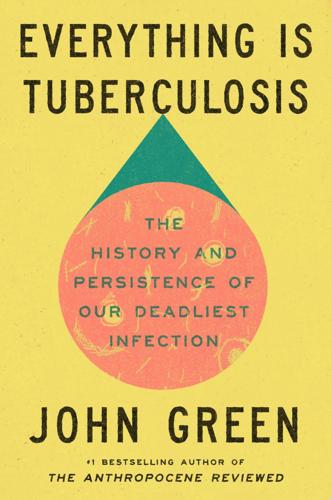
Everything Is Tuberculosis: The History and Persistence of Our Deadliest Infection
by
John Green
Published 18 Mar 2025
Girum Chapter 16: Henry Chapter 17: “Beat Me Later” Chapter 18: Superbug Chapter 19: Vicious Cycles Chapter 20: Hail Mary Chapter 21: Like Magic Chapter 22: Virtuous Cycles Chapter 23: The Cause and the Cure Postscript Acknowledgments Further Reading About the Author _150537054_ This book is dedicated to Shreya Tripathi, Henry Reider, and TB Fighters everywhere Introduction Gregory and Stokes Around the turn of the nineteenth century, the Scottish tinkerer and chemist James Watt began working on a new project. He had already achieved fame and success for making steam engines more efficient, helping to fuel the industrial revolution that would radically reshape human history. The steam engine would lead to everything from air-conditioning to air travel to AirPods, while also unleashing over a trillion tons of carbon dioxide into the atmosphere, reshaping the planet’s climate.
…
* * * — This is a book about that cure—why we didn’t find it until the 1950s, and why in the decades since discovering the cure, we’ve allowed over 150,000,000 humans to die of tuberculosis. I started writing about TB because I wanted to understand how an illness could quietly shape so much of human history. But along the way, I learned that TB is both a form and expression of injustice. And I learned that how we imagine illness shapes our societies and our priorities. James Watt understood consumption as a mechanical failure by the lungs to ingest the proper ratio of gases. My great-grandfather understood his son’s sickliness to have been driven by ingesting coffee and sweets in childhood. Others would understand TB as an inherited disease that affected certain types of personalities.
…
Scarring leaves so little healthy lung tissue that breathing becomes impossible. The infection spreads to the brain or spinal column. Or they suffer a sudden, uncontrollable hemorrhage, leading to a quick death as blood drowns the lungs. * * * — Let’s turn back now to 1804, the year that James Watt’s son Gregory died of tuberculosis. In May of that year, Napoleon Bonaparte was named Emperor of France; in July, Aaron Burr shot Alexander Hamilton. I understand if this all feels like ancient history, but it’s really not. As of 2025, around 117 billion modern humans have lived. Over 100 billion were born before 1804.

Power and Progress: Our Thousand-Year Struggle Over Technology and Prosperity
by
Daron Acemoglu
and
Simon Johnson
Published 15 May 2023
A shared vision among innovators is critical for the accumulation of knowledge and is also central to how we use technology. Take the steam engine, which transformed Europe and then the world economy. Rapid innovations from the beginning of the eighteenth century built on a common understanding of the problem to be solved: to perform mechanical work using heat. Thomas Newcomen built the first widely used steam engine, sometime around 1712. Half a century later, James Watt and his business partner Matthew Boulton improved Newcomen’s design by separating the condenser and producing a more effective and commercially much more successful engine.
…
Not that Stephenson had a locomotive in hand or had solved the practical problems standing in the way of producing working engines for railroads. Existing low-pressure or “atmospheric” steam engines, of the kind that Thomas Newcomen had first built, James Watt later significantly improved, and George Stephenson himself had fixed at High Pit, were too bulky and did not generate enough power. More powerful high-pressure engines existed but had never been demonstrated to work consistently at scale, let alone pull heavy coal wagons up and down hills every day. Building a high-pressure steam engine that was light enough to move itself was a spectacular challenge; early models leaked, were underpowered, or even blew up with tragic consequences.
…
It was in this context that innovators around what we now call industrial processes began to emerge. The most successful of the early entrants include Abraham Darby (pig iron in blast furnaces fueled by coke, 1709), Thomas Newcomen (steam engine, 1712), Richard Arkwright (spinning frame, 1769), Josiah Wedgwood (Etruria pottery works, 1769), and James Watt (much improved steam engine, 1776). These men could not, for the most part, read Latin and did not spend much time with scholarly works. Darby was the son of a yeoman farmer. Newcomen was an ironmonger who sold tools to mines. Arkwright’s parents were too poor to send him to school, and his first occupation was barber and wigmaker.
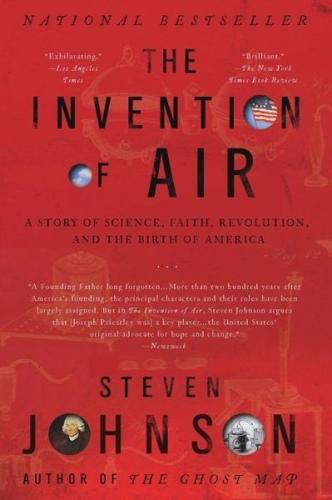
The Invention of Air: A Story of Science, Faith, Revolution, and the Birth of America
by
Steven Johnson
Published 26 Dec 2008
But word of Priestley’s situation soon began to circulate among the Midlands industrialists, originating most likely with Wilkinson, and by early spring of 1781, a group had formed that would collectively keep Priestley in business for the next thirteen years. These were the shining lights of industrial and intellectual England outside the metropolis of London: Wilkinson; Wedgwood; the “toymaker” Matthew Boulton, whose small metal goods had become the signature export of Birmingham; James Watt, the steam-engine pioneer; and the physician, poet, and naturalist Erasmus Darwin, Charles’s grandfather. The men constituted the core members of the legendary Lunar Society, Birmingham’s version of the Club of Honest Whigs. The Lunaticks—as they playfully referred to themselves—had first assembled in the mid-1760s, scheduling meetings during the full moon to assist their passage home after a long night of boozy debate.
…
And they were all fundamentally correct, at least in their contention that class identity, capital, and technological acceleration would be prime movers in the coming centuries, and that each one had an independent life, outside the direct control of human decision-makers. Humans made the steam engine, but the steam engine ended up remaking humanity, in ways that the original inventors never anticipated. The contemporary view of intellectual progress is dominated by one book: Thomas Kuhn’s The Structure of Scientific Revolutions, published in 1962, from which the now conventional terms “paradigm” and “paradigm shift” originate.
…
Most of the Lunar Men were religious Dissenters as well, and thus doubly ostracized by the Parliamentary system. Recall Priestley’s line about the “English hierarchy” with its potentially “unsound constitution.” If they had reason to “tremble at an air pump,” they had even more to fear from a steam engine. Herein lies the unique value proposition the Lunar Men saw in Joseph Priestley: as a scientist, he could improve the efficiency of their steam engines and ironworks; and as a famously prolific political engagé, he could fight for the reform that those booming factories had made necessary. Birmingham lay at a rare historical nexus: rapidly accumulating wealth that was simultaneously dedicated to overthrowing the status quo.
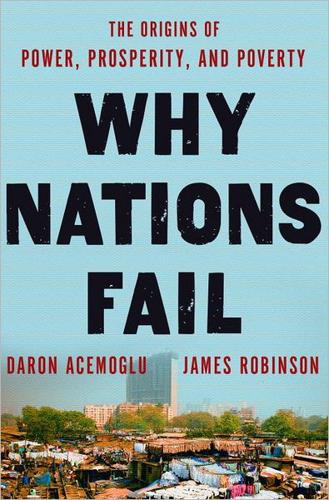
Why Nations Fail: The Origins of Power, Prosperity, and Poverty
by
Daron Acemoglu
and
James Robinson
Published 20 Mar 2012
The great inventors such as James Watt (perfecter of the steam engine), Richard Trevithick (the builder of the first steam locomotive), Richard Arkwright (the inventor of the spinning frame), and Isambard Kingdom Brunel (the creator of several revolutionary steamships) were able to take up the economic opportunities generated by their ideas, were confident that their property rights would be respected, and had access to markets where their innovations could be profitably sold and used. In 1775, just after he had the patent renewed on his steam engine, which he called his “Fire engine,” James Watt wrote to his father: Dear Father, After a series of various and violent Oppositions I have at last got an Act of Parliament vesting the property of my new Fire engines in me and my Assigns, throughout Great Britain & the plantations for twenty five years to come, which I hope will be very beneficial to me, as there is already considerable demand for them.
…
One crucial area was power, most famously the transformations in the use of the steam engine that were a result of James Watt’s ideas in the 1760s. Watt’s initial breakthrough was to introduce a separate condensing chamber for the steam so that the cylinder that housed the piston could be kept continually hot, instead of having to be warmed up and cooled down. He subsequently developed many other ideas, including much more efficient methods of converting the motion of the steam engine into useful power, notably his “sun and planets” gear system. In all these areas technological innovations built on earlier work by others. In the context of the steam engine, this included early work by English inventor Thomas Newcomen and also by Dionysius Papin, a French physicist and inventor.
…
North of the fence: Nogales, Arizona Jim West/imagebroker.net/Photolibrary South of the fence: Nogales, Sonora Jim West/age fotostock/Photolibrary Consequences of a level playing field: Thomas Edison’s 1880 patent for the lightbulb Records of the Patent and Trademark Office; Record Group 241; National Archives Economic losers from creative destruction: machine-breaking Luddites in early-nineteenth-century Britain Mary Evans Picture Library/Tom Morgan Consequences of a complete lack of political centralization in Somalia REUTERS/Mohamed Guled/Landov Successive beneficiaries of extractive institutions in Congo: King of Kongo © CORBIS King Leopold II The Granger Collection, NY Joseph-Désiré Mobutu © Richard Melloul/Sygma/CORBIS Laurent Kabila © Reuters/CORBIS The Glorious Revolution: William III of Orange is read the Bill of Rights before being offered the crown of England by parliament After Edgar Melville Ward/The Bridgeman Art Library/Getty Images The bubonic plague of the fourteenth century creates a critical juncture (The Triumph of Death painting of the Black Death by Brueghel the Elder) The Granger Collection, NY Beneficiary of institutional innovation: the King of Kuba Eliot Elisofon/Time & Life Pictures/Getty The emergence of hierarchy and inequality before farming: the grave goods of the Natufian elite http://en.wikipedia.org/wiki/File:Natufian-Burial-ElWad.jpg Extractive growth: Soviet Gulag labor builds the White Sea canal SOVFOTO Britain falls far behind: the ruins of the Roman empire at Vindolanda Courtesy of the Vindolanda Trust and Adam Stanford Innovation, essence of inclusive economic growth: James Watt’s steam engine The Granger Collection, NY Organizational change, a consequence of inclusive institutions: the factory of Richard Arkwright at Cromford The Granger Collection, NY Fruits of unsustainable extractive growth: Zheng He’s ship alongside Columbus’s Santa Maria Gregory A. Harlin/National Geographic Stock Bird’s-eye view of the dual economy in South Africa: poverty in Transkei, prosperity in Natal Roger de la Harpe/Africa Imagery Consequences of the Industrial Revolution: the storming of the Bastille Bridgeman-Giraudon/Art Resource, NY Challenges to inclusive institutions: the Standard Oil Company Library of Congress Prints and Photographs Division Washington, D.C.
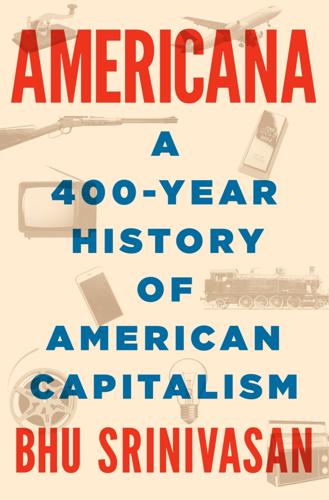
Americana: A 400-Year History of American Capitalism
by
Bhu Srinivasan
Published 25 Sep 2017
And the facilities could be only so large; one windmill or watermill could power only so much activity. The steam engine, however, eliminated these limitations and allowed power to be generated at a previously unimaginable scale. The principle was simple. Steam was created by heating water in a sealed enclosure. Once the steam pressure built, it could be released in such a way as to move a machine. Conceptions of the steam engine had been a long experimental process. But the techniques for scaling the theory into increasingly large units and dimensions led to an evolving series of breakthroughs and insights in the middle of the eighteenth century. The critical break came from James Watt, a Scotsman employed as an instrument maker at the University of Glasgow.
…
the more progressive view: Taylor, Internal Enemy, 21–22. skilled in the letters: Chernow, Washington, 186; Meacham, Thomas Jefferson, 86. a number of Jefferson’s slaves: Taylor, Internal Enemy, 24. eight of Washington’s escaped slaves: Chernow, Washington, 441. Chapter 4: Cotton for the steam: James Watt, Specification of James Watt: Steam Engines (London: G. E. Eyre, 1855), 2–7. valued for millennia: Sven Beckert, Empire of Cotton: A Global History (New York: Alfred A. Knopf, 2014), 5. new ways replaced old: Adam Smith, An Inquiry into the Nature and Causes of the Wealth of Nations, vol. 1 (1776; repr., Indianapolis, IN: Liberty Fund, 1981), 18–20.
…
With the power of the steam engine, the scale and scope of factories became much larger. As the functions became widely mechanized, increases in this labor productivity reduced the price of finished cloth, making it far more affordable and accessible. Lower prices meant much greater demand for cloth, which in turn grew the demand for labor needed in the textile factories. Counterintuitively, great labor savings through mechanization created the need for more labor overall. This became humanity’s first dividend from the Industrial Revolution. Remarkably, a friend of James Watt at the University of Glasgow best understood how this phenomenon of labor savings would unfold.

Americana
by
Bhu Srinivasan
And the facilities could be only so large; one windmill or watermill could power only so much activity. The steam engine, however, eliminated these limitations and allowed power to be generated at a previously unimaginable scale. The principle was simple. Steam was created by heating water in a sealed enclosure. Once the steam pressure built, it could be released in such a way as to move a machine. Conceptions of the steam engine had been a long experimental process. But the techniques for scaling the theory into increasingly large units and dimensions led to an evolving series of breakthroughs and insights in the middle of the eighteenth century. The critical break came from James Watt, a Scotsman employed as an instrument maker at the University of Glasgow.
…
the more progressive view: Taylor, Internal Enemy, 21–22. skilled in the letters: Chernow, Washington, 186; Meacham, Thomas Jefferson, 86. a number of Jefferson’s slaves: Taylor, Internal Enemy, 24. eight of Washington’s escaped slaves: Chernow, Washington, 441. Chapter 4: Cotton for the steam: James Watt, Specification of James Watt: Steam Engines (London: G. E. Eyre, 1855), 2–7. valued for millennia: Sven Beckert, Empire of Cotton: A Global History (New York: Alfred A. Knopf, 2014), 5. new ways replaced old: Adam Smith, An Inquiry into the Nature and Causes of the Wealth of Nations, vol. 1 (1776; repr., Indianapolis, IN: Liberty Fund, 1981), 18–20.
…
With the power of the steam engine, the scale and scope of factories became much larger. As the functions became widely mechanized, increases in this labor productivity reduced the price of finished cloth, making it far more affordable and accessible. Lower prices meant much greater demand for cloth, which in turn grew the demand for labor needed in the textile factories. Counterintuitively, great labor savings through mechanization created the need for more labor overall. This became humanity’s first dividend from the Industrial Revolution. Remarkably, a friend of James Watt at the University of Glasgow best understood how this phenomenon of labor savings would unfold.
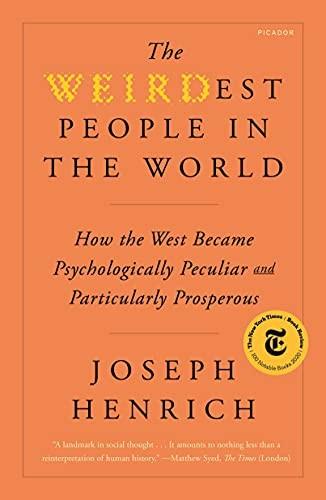
The WEIRDest People in the World: How the West Became Psychologically Peculiar and Particularly Prosperous
by
Joseph Henrich
Published 7 Sep 2020
For this last crucial idea, Gutenberg combined his knowledge of soft metals, acquired from his father (who worked in the Mainz mint), with the idea of movable type (which he may have learned about from a traveling apprentice whose Dutch master had experimented with movable wooden type). Of course, the rapid diffusion of Gutenberg’s press was driven by its complementarity with new religious commitments to scriptural literacy.12 Steam engine (1769): While working on a repair job, the instrument maker James Watt figured out how to improve the efficiency of a Newcomen steam engine by adding a separate condenser for the steam. In 1712, this early steam engine had been developed by the ironmonger and Baptist elder Thomas Newcomen. Newcomen had recombined insights from air pumps with the idea of using a piston, which he likely found in a book about pressure cookers (published in 1687) by the French Huguenot Denis Papin.
…
These voluntary associations were crucial because they connected local intellectuals with a broader class of engineers, entrepreneurs, artisans, and tinkerers. The Birmingham Lunar Society, for example, fostered interactions between scientists like Benjamin Franklin and Joseph Black (who discovered latent heat), mechanics like James Watt and John Whitehurst (hydraulics), and entrepreneurs like Matthew Boulton and John Roebuck. If you’re an inventor like James Watt, trying to troubleshoot a broken Newcomen steam engine owned by the University of Glasgow, it’s nice to be able to chat with Joseph Black about thermodynamics and then access Boulton’s staff of smiths and artisans. Illustrating the proliferation of knowledge societies from 1600 to 1800, Figure 13.4 shows that the number of knowledge societies, and specifically those focused on science and technology, grew especially rapidly after 1750.44 Making the case for the importance of the Republic of Letters and these proliferating knowledge societies, the renowned economic historian Joel Mokyr notes how communities evolved a set of social norms about freely sharing knowledge.
…
The mass action of cities, particularly when propelled by individualists seeking out mutually beneficial relationships, creates innovations as ideas meet, recombine, and make baby ideas. Cities also allow people with different skills and areas of expertise to encounter one another, discover complementary interests, and collaborate. Suppose I’m James Watt and my new design for a steam engine demands a precision-bored cylinder. I’d best live in a place where I can both find out that such precision work is possible and also actually be able to locate someone to do the job. The bigger and more fluid the city or urban cluster, the better.35 To illustrate the power of the metropolis, Figure 13.2 plots the size of the working-age population in contemporary U.S. cities against their annual innovation rates, captured here using the total number of patent applications in 2002.
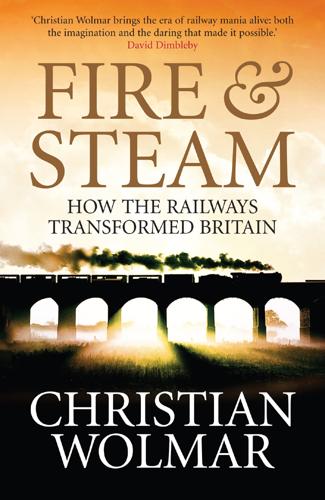
Fire and Steam: A New History of the Railways in Britain
by
Christian Wolmar
Published 1 Mar 2009
Other builders in Britain manufactured 300 during the next fifty years, exporting them to countries such as the USA, Germany and Spain. One was even purchased to drive the fountains for Prince von Schwarzenberg’s palace in Vienna. Working in the second half of the eighteenth century, James Watt made steam commercially viable by improving the efficiency of engines, and adapting them for a wide variety of purposes. Boulton & Watt, his partnership with the Birmingham manufacturer Matthew Boulton, became the most important builder of steam engines in the world, providing the power for the world’s first steam-powered boat, the Charlotte Dundas, and ‘orders flooded in for engines to drive sugar mills in the West Indies, cotton mills in America, flour mills in Europe and many other applications’.3 Boulton & Watt had cornered the market by registering a patent which effectively gave them a monopoly on all steam engine development until the end of the eighteenth century.
…
Opposition may have been boosted by the fact that the Grand Junction was a project initiated from the north end of the line, without the involvement of any prominent Birmingham or even Midlands investors, and therefore the local benefits were not immediately apparent. Remarkably, a key objector was James Watt, none other than the son of the great steam-engine pioneer and the owner, thanks to his father’s legacy, of considerable canal interests. He lived in Aston Hall and refused to cede any of his land to the railway company. Reluctant to force a confrontation in Parliament with such a powerful opponent, the company was obliged to reroute the line around the estate to connect with the London & Birmingham at Curzon Street in a station alongside the Grand Junction’s terminus.
…
Even more remarkably, the parliamentary Bill for the sixty-two-mile-long Newcastle & Carlisle, which won parliamentary approval in 1829, envisaged the railway to be exclusively horse-drawn and went as far as including a clause that specifically ruled out the use of ‘steam locomotives and moveable steam engines’.20 The thirty-three-mile Cromford and High Peak railway, a virtual contemporary of the Liverpool & Manchester, used a mix of traction methods and was a bizarre hybrid of canal and railway. The railway, authorized in 1825 and opened five years later, was designed to carry minerals and freight but not passengers21 between two canals across the Peak District. It was built on canal principles with horses being used to pull wagons along the flat sections of track while the nine inclines were worked by stationary steam engines which hauled the wagons up the gradients – the rail equivalent of a flight of locks.
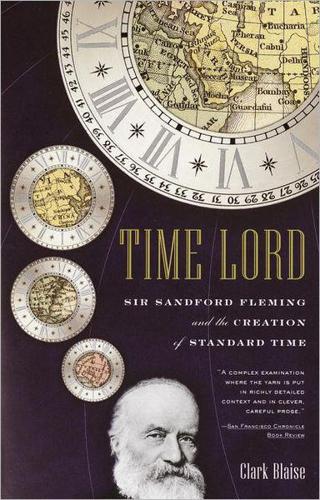
Time Lord: Sir Sandford Fleming and the Creation of Standard Time
by
Clark Blaise
Published 27 Oct 2000
Unless the ever-deeper mines of Newcastle could be pumped dry, England faced a serious crisis in providing sufficient coal for the open-hearth ovens of its growing iron industry. It took another half-century for the expansive power of steam, and—with the addition of an exterior condenser unit—the contractive force of the vacuum, to be combined in a single effective energy source, James Watt and Matthew Boulton’s reciprocating steam engine (1769). It is the basic invention from which all rotary movement (thanks to Watt’s further refinements), including the railway locomotive, takes off. But steam power had to be wedded to rails before the story of standard time could truly begin. Learning to take coals from Newcastle underlay the eventual development of standard time.
…
Gradually, all those new ideas and new applications, moving in the same direction but at varying speeds, created a new comprehension of time and space. And so it took two centuries of steady incremental invention to bring the reciprocating steam engine, in the form of the locomotive, and the iron rail together. Once that happened, the pace of change increased geometrically. The early Industrial Age, which closed the Romantic era (James Watt and John Keats both died in 1819), had challenged, or had at least redefined, the Romantic assumption that life was a contest between “mechanical” and “organic” sources of inspiration. The Quarterly Review in 1825 had laid down the challenge, boldly but myopically: “What can be more palpably absurd and ridiculous than the prospect held out of locomotives travelling twice as fast as stagecoaches!”
…
Steam transformed more than the landscape. Steam was hot, loud, smoky, smelly, and dangerous, but there was also something intuitive about its working, and its direct successor, the internal combustion engine. One can imagine the 1850s version of the 1950s teenage grease-monkey, working on a steam engine, polishing, oiling, improving its efficiency. The leap from a James Watt to a Gottlieb Daimler or a Henry Ford is not unimaginable. Steam was sophisticated, but apprenticeable. Unlike electricity, it was visible, a celebration of practice over theory. With steam, mountains could be bored and harbors dredged. Rivers were crossed, ships’ designs turned from wood and sail to steel and iron, hold capacities and passenger cabins expanded a hundredfold, with a need to fill their holds with thousands of tons of coal for ocean passage.

Losing Earth: A Recent History
by
Nathaniel Rich
Published 4 Aug 2018
On Tuesday, four days later, Ronald Reagan was elected president. And Rafe Pomerance found himself wondering whether what had seemed to be a beginning had actually been the end. In the following months, Reagan floated plans to close the Energy Department, increase coal production on federal land, and deregulate surface coal mining. He appointed James Watt, the president of a legal firm that fought to open public lands to mining and drilling, to run the Interior Department. The president of the National Coal Association pronounced himself “deliriously happy.” After some debate about whether to terminate the EPA, Reagan relented and did the next best thing, appointing as administrator Anne Gorsuch, an anti-regulation zealot who proceeded to cut the agency’s staff and budget by a quarter.
…
And the climate crisis had a publicity nightmare. The Florida meeting had failed to articulate a coherent statement, let alone legislation, and now everything was going backward. Even Pomerance himself couldn’t devote much time to climate change; Friends of the Earth was busier than ever. The campaigns to defeat the nominations of James Watt and Anne Gorsuch were just the beginning; they were joined by desperate efforts to block mining in wilderness areas, uphold the Clean Air Act’s standards for air pollutants, and preserve funding for renewable energy (Reagan “has declared open war on solar energy,” said the director of the nation’s lead solar-energy research agency, after he was asked to resign).
…
But the early demonstrations of autocratic force had retreated into compromise and deferral. By the end of 1982, multiple congressional committees had begun investigating Anne Gorsuch for her indifference to enforcing the cleanup of Superfund sites, and the House voted to hold her in contempt; congressional Republicans turned on James Watt after he eliminated thousands of acres of land from consideration for wilderness designation. Both cabinet members would resign within the year. The carbon dioxide issue was beginning to trouble the public consciousness—Hansen’s own findings had become front-page news, after all. What started as a scientific story was turning into a political story.
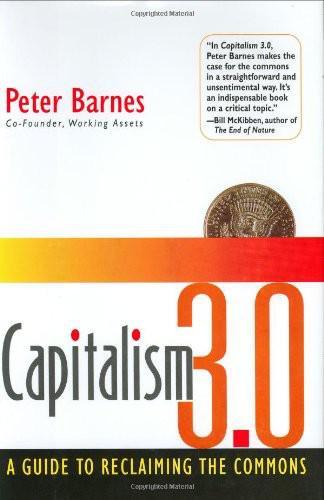
Capitalism 3.0: A Guide to Reclaiming the Commons
by
Peter Barnes
Published 29 Sep 2006
These feed- Time to Upgrade | 9 back loops can be virtuous (the reaction fixes the problem) or vicious (the reaction makes the problem worse). A stable system has lots of virtuous loops and is good at weeding out vicious loops. Sometimes, in human-made systems, virtuous loops have to be consciously added. Consider the steam engine of eighteenth-century inventor James Watt. Watt’s design included two critical mechanisms: the steam-driven engine itself, and a centrifugal governor to keep the engine from getting out of control. When the latter detects a potentially dangerous behavior—speeding—it automatically corrects that behavior. Illth and Thneeds More than a century ago, English economist John Ruskin observed that the same economic system that creates glittering wealth also spawns what he called illth—poverty, pollution, despair, illness.
…
We needn’t shut the machine down, or delete the old operating system, before installing the new one. Indeed, we’re not even replacing most of the old operating system, which is fine as it is. Rather, we’re attaching add-ons, or plug-ins, that allow for a gradual and safe transition. A formula for describing this is: Corporations + Commons = Capitalism 3.0 Like the governor of James Watt’s steam engine, these add-ons will curb our current engine’s unchecked excesses. When illth of one sort gets too great, the new bits of code will turn the illth valve down, or give authority to trustworthy humans to do so. If money circulates too unequally, the new code will alter the circulation, not by redistributing income but by pre distributing property.
…
If an “unmanaged commons” is inevitably self-destructive, and a “managed commons” is, by definition, either socialism or privatism, we are still left with only three alternatives: tragedy, statism, or privatism. In this book I describe a fourth alternative: trusteeship. See www.sciencemag.org/cgi/content/full/280/5364/682. 19 feedback loops: For some reason, scientists call virtuous feedback loops negative and vicious ones positive. I’ll stick with the more intuitive adjectives. 19 James Watt’s design: Here’s how Watt’s governor works. As the engine speeds up, a spindle spins faster and centrifugal force lifts two flyballs on hinged arms. This movement decreases the size of the air inlet valve, slowing the engine. Modern equivalents include thermostats on heaters, shutoff valves on toilets, and cruise control on cars. 110 the Once-ler replies: Theodor Seuss Geisel, The Lorax (New York: Random House, 1971).
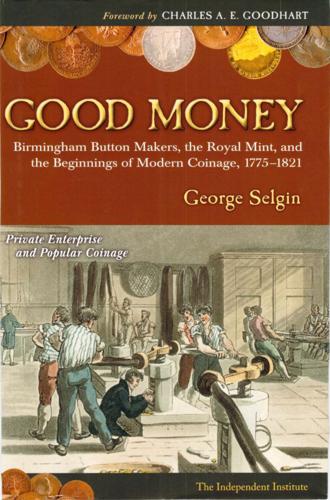
Good Money: Birmingham Button Makers, the Royal Mint, and the Beginnings of Modern Coinage, 1775-1821
by
George Anthony Selgin
Published 13 Jul 2008
However, their lack of proof, combined with their desire to preserve what had become a crucial business relationship (Wilkinson was still their only reliable source of engine parts) , kept them from taking any action. Boulton's son, Matthew Robinson, who (together with James Watt Jr.) had recently been made a partner in what was now Boulton, Watt & Sons, also suspected John Wilkinson and, unlike his father, felt no com1 1. The rate was adjusted to a "mere" one hundred blows per minute. Wilkinson had tried once before, at New Willey in 1778, to power a forge hammer using a steam engine. But at that time, only reciprocating engines were available, and the experiment failed: instead of delivering sixty blows per minute, as it was supposed to do, the engine ended up knocking itself into little cast-iron bits (Soldon Igg8, 63). 12.
…
To understand Boulton's dim view of commercial coins, and of Williams's coins especially, we must delve into Boulton's reasons for becoming involved in coinage in the first place; and to do that, we must know something about Boulton's general business background. To the extent that Boulton's name rings a bell today, it is likely to do so only because he joined forces with James Watt in 1775 for the purpose of developing and manufacturing Watt's steam engine. But before he ever shook hands with Watt, Boulton was already one of Birmingham's leading figures, who, besides running what was by then the Midland's most impressive manufactury, also played a prominent role in Birmingham's civic and cultural life. Well before going into business with Watt, he helped found the famous Lunar Society, so named because its monthly meetings were held on the day of the full moon, to facilitate participants' late-night return journeys.
…
Although Doty claims that "the concept of a flywheel tends to go along with the idea of autolnatic machinery," a look at any contelnporary dictionary of Inechanics makes clear that the "Flys" referred to in the first iteln are merely the hand- STEAM, HOT AIR, AND SMALL CHANGE 271 direct reference to rivals' steam presses doesn't prove beyond all doubt that such presses were used only at Soho, no firm could have purchased Boulton & Watt's own presses without the fact being recorded somewhere in the company's very complete accounts, and it seems just as unlikely that any firm could have replicated Boulton's innovation without Boulton or Watt referring to the fact even once in their voluminous correspondence. Next let's look at what Birmingham's steam engines were up to during the first commercial coinage episode. 6 In 1840, the Royal Statistical Society published a survey of all steam engines ever erected in Birmingham up to that date. Using information from it and from a number of other sources, one can locate and identify the owners and principal uses of all of Birmingham's pre-17g8 rotary steam engines. Table 4 lists the engines-there were only eight of them all told-along with their locations and some other information. TABLE 4. Rotary-Motion Steam Engines in Birmingham through 1797 Erection date 1780 1783 1787 1788 1791 1792 1796 1797 Horsepower 14 25 18 18 12* 16 24 16* Firm Principal use Location Charles Twigg & Co.
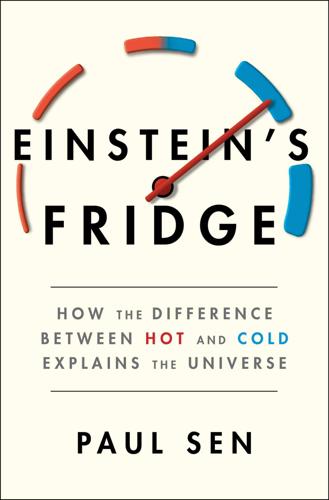
Einstein's Fridge: How the Difference Between Hot and Cold Explains the Universe
by
Paul Sen
Published 16 Mar 2021
Britain’s mines produced 16 million tons every year: Data from Unbound Prometheus by Landes and A Short History of the British Industrial Revolution by Emma Griffin. coal often sold at less than ten shillings per ton: Data from “Unravelling the Duty: Lean’s Engine Reporter and Cornish Steam Engineering” by Alessandro Nuvolari and Bart Verspagen, Eindhoven Centre for Innovation Studies, Netherlands (2005). James Watt had patented a modification to the Newcomen engine: For more on the way Watt improved the steam engine, see the next chapter. roughly quadrupled their duty: A precise figure comparing the efficiency of Watt and Newcomen engines is difficult to state because the engines varied so much.
…
Or put another way, if, say, one hundred calories of heat flow out of a furnace, what’s the greatest possible height to which this can raise a weight of one kilogram? (For simplicity’s sake, think of one unit of “motive power” as the amount that will lift a one kilogram weight by a height of one meter.) To answer this question, Carnot considers a typical early nineteenth-century steam engine that works along the lines devised by James Watt. Two aspects greatly interested the Frenchman. Impressionistic view of key aspects of a Watt engine First, Watt had noticed that hot steam exerts a great deal of pressure, more even than the downward weight of the atmosphere. To exploit this, he contrived his engine design so expanding steam from a boiler pushed a piston.
…
And as proof of what steam power is capable of, Carnot points across the English Channel: “To take away today from England her steam engines… would be to ruin all on which her prosperity depends… to annihilate that colossal power.” Carnot ends his introduction with this statement of intent: “Notwithstanding the work of all kinds done by steam engines… their theory is very little understood, and the attempts to improve them are still directed almost by chance.” For Carnot, deducing the theory underpinning steam engines was therefore no academic exercise. Doing so, he felt, would provide a way of improving their fuel efficiency, thus reducing costs for his country’s industrialists and helping them catch up with their British counterparts.

Open: The Story of Human Progress
by
Johan Norberg
Published 14 Sep 2020
A substantial and growing middle class of consumers started to steer the direction of the economy. ‘The English have the wit to make things for the people, rather than for the rich,’ observed the French politician Charles de Biencourt.34 A few spectacular intellectual property rights successes, like James Watt’s steam engine, goaded many would-be innovators to try their luck, and so benefited the economy immeasurably.35 They helped create the concept of the professional inventor who spent all his time tinkering and experimenting to solve mankind’s problems. When we talk about the Industrial Revolution we think about steam power and textile machines, but this was an era of belief in progress more broadly.
…
On leaving these peaceful and free assemblies some go to the Synagogue and others for a drink, this one goes to be baptized in a great bath in the name of the Father, Son and Holy Ghost, that one has his son’s foreskin cut and has some Hebrew words he doesn’t understand mumbled over the child, others go to their church and await the inspiration of God with their hats on, and everybody is happy.44 The union between England and Scotland was another injection of energy. Not only were the most important thinkers and interpreters of the era Scottish, like David Hume and Adam Smith, but so were many of the innovators. Often Scots and English combined their ideas and ambitions to unleash innovation. The prime mover of the era, the steam engine, was the combined effort of the Scottish inventor James Watt (an instrument maker) and the English industrialist Matthew Boulton, who funded the efforts and induced Watt to move to Birmingham to create a commercially viable version that would transform the economy. Scotland was also a leading iron producer, and it was a Scot, James Beaumont Neilson, who came up with one of the most important innovations, hot-blast iron smelting.
…
With this came a radical new culture of individualism, an emphasis on self-discovery and self-improvement.7 People from different backgrounds were competing with innovations and technologies unlike anything the world had ever seen. Song China was the world’s most advanced civilization, based on open trade, open doors and open minds. And it was ready to take the next step, into the modern world. It was close to unleashing an industrial revolution, half a millennium before it was even a glint in James Watt’s eye. The Chinese cleared whole forests to smelt ores into iron in gigantic foundries, and when this led to a shortage of wood, some innovative businessmen discovered how they could find and use power stored as coal. According to tax returns, by the late eleventh century, iron output in China was almost as much as the whole of Europe produced in 1700.
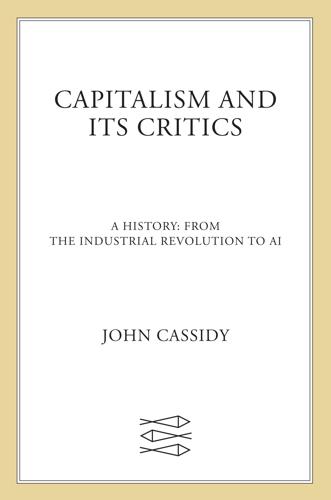
Capitalism and Its Critics: A History: From the Industrial Revolution to AI
by
John Cassidy
Published 12 May 2025
That capital accumulation came from the slave trade, whose importance was appreciated more by contemporaries than by later historians.49 After making this claim, Williams immediately qualified it, writing: “Between the cotton manufacturers of Manchester and the slave traders there were not the close connections that have already been noticed in the case of the shipbuilders of Liverpool.”50 But “two exceptional instances of such connections exist,” he went on: Sir William Fazackerly and Samuel Touchet, a pair of Manchester businessmen who “were both members of the Company of Merchants trading to Africa.”51 Williams noted that Touchet had a partnership, with his brothers, “in about twenty ships in the West Indian trade,” and the Hibberts, a family of Manchester merchants, “owned sugar plantations in Jamaica, and at one time supplied [cottons] to the African Company for the slave trade.”52 Extending his argument beyond Lancashire, Williams cited a number of other British industrialists who gained access to capital generated in the triangular trade. The most famous of them was the Scottish inventor James Watt, whose steam engines were one of the key innovations of the industrial revolution. “It was the capital accumulated from the West Indian trade that financed James Watt and the steam engine,” Williams wrote.53 Watt and Matthew Boulton, his partner in the famous engine maker Boulton and Watt, “received advances” from the finance house Lowe, Vere, Williams, and Jennings, which also provided credit to ships that plied the Caribbean trade, he explained.54 Williams also brought up the ironmonger Anthony Bacon, who cofounded a large ironworks at Merthyr Tydfil in South Wales.
…
In the years after Cromford Mill opened, Thomas Arkwright licensed his water frame technology to other entrepreneurs, and by 1788 well over a hundred Cromford-like mills were operating across northern England, Wales, and Scotland. Another important moment came in 1781, when the Scottish inventor James Watt patented his rotative steam engine. Four years later, a mill near Nottingham became the first cotton spinning factory to use Watt’s engine. The cotton industry represented the future, but it was deeply integrated into the old colonial system that Smith had critiqued. Even before it started importing raw cotton produced on slave plantations in the American South, it sourced its key input from plantations in the West Indies and mainland South America, particularly Brazil.
…
These exports “flowed, in effect, within the same channels of the Atlantic economy that Britain had spent two hundred years and untold treasure building,” the Harvard historian Sven Beckert noted in his 2014 opus, Empire of Cotton.52 Smith, for all his perspicacity, could have no inkling of the impact that cotton and industrialization would have on the economy, society, and policymaking. On July 17, 1790, at the age of sixty-seven, he died at his house in Edinburgh. That same year, an enterprise called Piccadilly Mill became the first cotton mill in Manchester to use a steam engine manufactured by Boulton and Watt, a firm that James Watt had established with his business partner Matthew Boulton. The fast-growing Lancashire city was on its way to replacing Bengal as the global leader in cotton manufacturing, and to giving its name to a school of economics based on Smith’s ideas: the Manchester School. 3 “On the brink for the last struggle” The Logic of the Luddites In the early hours of April 12, 1812, more than one hundred men approached Rawfolds Mill, a four-story building on the banks of the River Spen at Liversedge in West Yorkshire.

The Rational Optimist: How Prosperity Evolves
by
Matt Ridley
Published 17 May 2010
There is a lively debate going on about whether James Watt’s aggressive enforcement of his broadly worded patents on steam engines in 1769 and 1775 actually shut down innovation in the steam industry. See Rolt, L.T.C. 1960. George and Robert Stephenson. Longman. (‘With coal so readily available, the north country colliery owners preferred to forgo the superior economy of the Watt engine rather than pay the dues demanded by Messrs. Boulton and Watt.’); also www.thefreemanonline.org/featured/do-patents-encourage-or-hinder-innovation-the-case-ofthe-steam-engine/; Boldrin, M. and Levine, D.K. 2009. Against intellectual monopoly.
…
A famous print entitled ‘The Distinguished Men of Science of Great Britain Living in the Year 1807–8’, the year that Parliament abolished the slave trade, depicts fifty-one great engineers and scientists all alive at the time – as if they were gathered together by an artist in the library of the Royal Institution. Here are the men who made canals (Thomas Telford), tunnels (Marc Brunel), steam engines (James Watt), locomotives (Richard Trevithick), rockets (William Congreve), hydraulic presses (Joseph Bramah); men who invented the machine tool (Henry Maudslay), the power loom (Edmund Cartwright), the factory (Matthew Boulton), the miner’s lamp (Humphry Davy) and the smallpox vaccine (Edward Jenner).
…
The jennies, gins, frames, mules and looms that revolutionised the working of cotton were invented by tinkering businessmen, not thinking boffins: by ‘hard heads and clever fingers’. It has been said that nothing in their designs would have puzzled Archimedes. Likewise, of the four men who made the biggest advances in the steam engine – Thomas Newcomen, James Watt, Richard Trevithick and George Stephenson – three were utterly ignorant of scientific theories, and historians disagree about whether the fourth, Watt, derived any influence from theory at all. It was they who made possible the theories of the vacuum and the laws of thermodynamics, not vice versa.
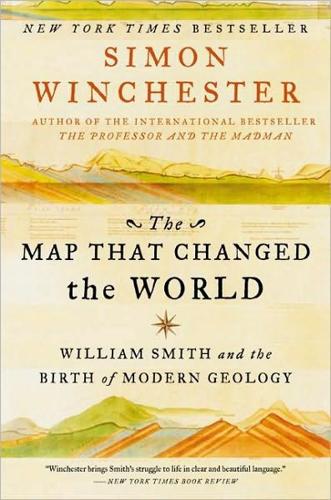
The Map That Changed the World
by
Simon Winchester
Published 1 Jan 2001
Chain pumps were brought in from Germany, and mines became drier. Thomas Newcomen invented the atmospheric engine, allowing pits to go deeper, and allowing drowned mines to be pumped out and worked again. At around the time of Smith’s birth, as we have seen, James Watt came along with his condensing steam engine, and mines could be dug to reach seams four and five hundred feet deep; and then again a decade later, once Watt’s double-acting steam engine had been perfected and its rocking beams had been adapted to move huge iron wheels, so everything changed. Air could be pumped down to the miners, water could be pumped from where it gathered, elevators could be created that would speed workers down to the coalface and that would haul them and their coal back up to the surface again.
…
As indeed it was: For the first time in British history the word industry was no longer being used simply to describe the nobility of human labor and had come instead to mean what it does today: the systematic and organized use of that labor, generally with the assistance of mechanical devices and machines, to create what would thenceforth be called manufactured goods. The Industrial Revolution, in short, was at hand, and three creations from Smith’s birth year are well worth noting, since they more than anything suggest the temper of the times. As it happened, for instance, 1769 was the year of grant of patent for James Watt’s first condensing steam engine—perhaps the most important invention of the entire era. Josiah Wedgwood, who had been busily making fine pottery in Staffordshire for some years past, opened his great factory, known as Etruria, near Hanley, also in 1769. And the great field of textile making, which was being steadily revolutionized by a cannonade of new inventions, was most notably advanced by the creations of Richard Arkwright—who made the first water-powered cotton-spinning frame, also in 1769.* Watt, Wedgwood, and Arkwright—a holy trinity from the brave new world that was coming into being—were now unknowingly ushering in the man who would change the view of that world for all time.
…
Unlike Smith’s small cottage on Junction Road, the house in which Warren Hastings was born still stands. There is some greater fairness in the nomenclature of contemporary geography, however—notably the existence in modern Churchill both of a Hastings Hill and a William Smith Close. * Joseph Priestley and Erasmus Darwin, along with Josiah Wedgwood and James Watt, were all Lunaticks, members of Birmingham’s Lunar Society, which met monthly on the occasion of the full moon. Freethinking, radical ideas were welcomed by a group that was principally involved in applying scientific discovery to the newly flourishing world of industry. * The word is first used in English in its modern sense in 1735, though only rarely—and probably not until 1795 can it be considered a mature and full-fledged concept.
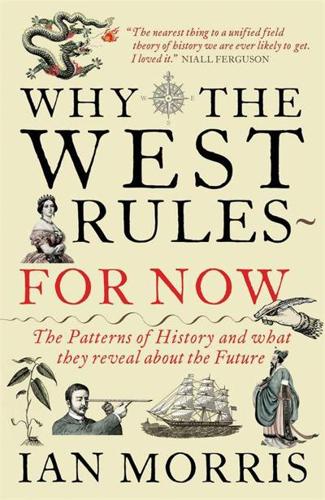
Why the West Rules--For Now: The Patterns of History, and What They Reveal About the Future
by
Ian Morris
Published 11 Oct 2010
For decades, this inefficiency restricted steam power to the single job of pumping out coal mines, and even for that, one owner complained, “the vast consumption of fuel of these engines is an immense drawback on the profit of our mines … This heavy tax amounts almost to a prohibition.” For any business that had to ship coal from mines to factories, steam engines were just too expensive. Engines were, however, fun for professors. Glasgow University bought a miniature example, but when none of the scholars could get it to work, it made its way in 1765 to the workshop of James Watt, Mathematical Instrument Maker to the University. Watt got it going, but its inefficiency sinned against his craftsman’s soul. In between other tasks he obsessed about better ways to evaporate and condense water, until, as he told it, I had gone to take a walk on a fine Sabbath afternoon … when the idea came into my mind, that as steam was an elastic body it would rush into a vacuum, and if a communication was made between the [heated] cylinder and an exhausted vessel, it would rush into it, and might there be condensed without cooling the cylinder … I had not walked further than the Golf-house when the whole thing was arranged in my mind.
…
Already in the eighteenth century there was a flourishing Chinese diaspora in Southeast Asia; other things being equal, the kind of geographical interdependence that characterized the Atlantic economy might have emerged in the nineteenth century. But other things were not equal. It took Westerners two hundred years to get from Jamestown to James Watt. If the East had been left in splendid isolation, if it had moved down the same path as the West across the nineteenth and twentieth centuries toward creating a geographically diversified economy, and if it had moved at roughly the same pace as the West, a Chinese Watt or Japanese Boulton might at this very moment be unveiling his first steam engine in Shanghai or Tokyo. But none of those ifs eventuated, because once the West’s industrial revolution began, it swallowed the world.
…
Wordsworth was speaking specifically of the French Revolution. 494 “the vast consumption”: Mineralogia Cornubiensis (1778), cited from Landes 2003, pp. 99–100. 494 “I had gone”: James Watt, as told to Robert Hart, 1817 (the walk took place in 1765), cited from Uglow 2002, p. 101. 495 “rather successful”: James Watt, letter to James Watt, Sr., December 11, 1774 (James Watt Papers, Birmingham City Archives, 4/60), cited from Uglow 2002, p. 248. 495 “If we had”: Matthew Boulton, letter to James Watt, summer 1776, cited from Uglow 2002, p. 256. 495 “It crept into”: Daniel Defoe, Weekly Review, January 31, 1708, cited from Ferguson 2003, p. 17. 501 “The poverty”: Adam Smith, Wealth of Nations (1776), book 1, chapter 8. 503 “has pitilessly torn”: Karl Marx and Friedrich Engels, The Communist Manifesto (1848), chapter 1. 503 “energy and perseverance”: Samuel Smiles, Industrial Biography (1863), pp. 325, 332. 503 “Facts alone”: Charles Dickens, Hard Times (1854), chapter 1. 504 “a triumph of fact”: ibid., chapter 5. 504 “He listened patiently”: Friedrich Engels, The Condition of the Working Class in England (1844), chapter 12. 504, 505 “What the bourgeoisie” and “Let the ruling classes”: Marx and Engels, Communist Manifesto, chapters 1, 4. 506 “We consider it”: Anonymous, “The First Half of the Nineteenth Century,” The Economist 9 (1851), p. 57. 507 “Here I am, gentlemen!”
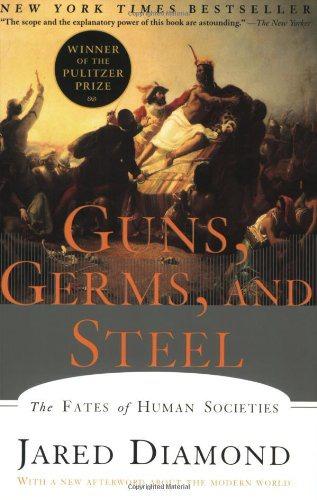
Guns, germs, and steel: the fates of human societies
by
Jared M. Diamond
Published 15 Jul 2005
For instance, we are regularly told, “James Watt invented the steam engine in 1769,” supposedly inspired by watching steam rise from a tea- kettle's spout. Unfortunately for this splendid fiction, Watt actually got the idea for his particular steam engine while repairing a model of Thomas Newcomen's steam engine, which Newcomen had invented 57 years ear- lier and of which over a hundred had been manufactured in England by the time of Watt's repair work. Newcomen's engine, in turn, followed the steam engine that the Englishman Thomas Savery patented in 1698, which followed the steam engine that the Frenchman Denis Papin designed (but did not build) around 1680, which in turn had precursors in the ideas of the Dutch scientist Christiaan Huygens and others.
…
In 1942, in the middle of World War II, the U.S. government set up the Manhattan Project with the explicit goal of inventing the technology required to build an atomic bomb before Nazi Germany could do so. That project succeeded in three years, at a cost of $2 billion (equivalent to over $20 billion today). Other instances are Eli Whitney's 1794 invention of his cotton gin to replace laborious hand cleaning of cotton grown in the U.S. South, and James Watt's 1769 inven- tion of his steam engine to solve the problem of pumping water out of British coal mines. These familiar examples deceive us into assuming that other major inventions were also responses to perceived needs. In fact, many or most inventions were developed by people driven by curiosity or by a love of tinkering, in the absence of any initial demand for the product they had in mind.
…
Each year, the United States issues about 70,000 patents, only a few of which ultimately reach the stage of commercial production. For each great invention that ulti- mately found a use, there are countless others that did not. Even inventions that meet the need for which they were initially designed may later prove more valuable at meeting unforeseen needs. While James Watt designed his steam engine to pump water from mines, it soon was supplying power to cotton mills, then (with much greater profit) propelling locomotives and boats. THUS, THE COMMONSENSE view of invention that served as our start- ing point reverses the usual roles of invention and need. It also overstates the importance of rare geniuses, such as Watt and Edison.

The AI Economy: Work, Wealth and Welfare in the Robot Age
by
Roger Bootle
Published 4 Sep 2019
The strength of the world economy in 2017 and 2018 provides some support for this view. The third counterargument is that the digital revolution needs time to play out. Economic history is full of relevant examples. The machine at the heart of the Industrial Revolution, the steam engine, was invented by Thomas Newcomen in 1712 to pump water out of flooded coal mines. It was more than 50 years later that James Watt, while repairing a Newcomen engine, developed it to produce more power, thereby enabling it to be deployed more widely. Moreover, the distinguished historian Jared Diamond says that Newcomen himself based his engine on earlier prototypes developed by others.32 Indeed, he claims that this is the normal pattern.
…
Moreover, the distinguished historian Jared Diamond says that Newcomen himself based his engine on earlier prototypes developed by others.32 Indeed, he claims that this is the normal pattern. We have been led to believe that the great inventors come up with a revolutionary new idea or piece of machinery out of nothing. In fact, they are usually building on foundations laid down by others. What’s more, although James Watt patented the first steam engine in 1769, it wasn’t until about a hundred years later that the full impact on labor productivity was felt. Similarly, it seems that electricity didn’t have a major impact on GDP growth in the USA until about a half-century after the first generating stations were built. Whatever the truth of these three counterarguments, the optimists have a fourth one up their sleeve.
…
• Rapid growth in available data. • The development of improved technologies, including advances in text and image, including facial, as well as voice, recognition. • The development of “deep learning”. • The advent of algorithm-based decision-making. So now AI seems close to its “James Watt moment.” Just as the steam engine was in existence for some time before Watt developed it and it came to transform production, so AI, which has been on the scene for some time, is about to stage a leap forward. Moreover, its impact is likely to be felt right across the economy. Some technological improvements are specific to particular sectors or narrow aspects of production and have only limited impact on the wider scheme of things.
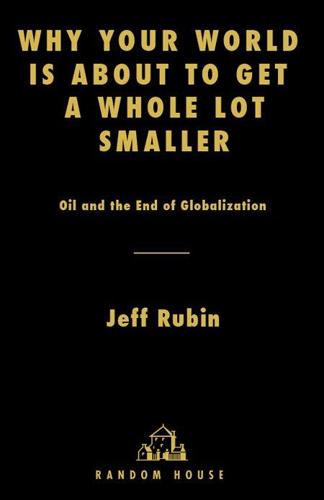
Why Your World Is About to Get a Whole Lot Smaller: Oil and the End of Globalization
by
Jeff Rubin
Published 19 May 2009
Jevons observed that after the huge efficiency gains following the advent of James Watt’s steam engine, coal consumption initially dropped, then rose tenfold between 1830 and 1860. The same phenomenon occurred with efficiencies in steel production in that era. The Bessemer process for producing steel was one of the greatest fuel-saving innovations in the history of metallurgy, but its ultimate effect was to increase, not reduce, the industry’s demand for fuel due to the subsequent surge in steel production. While each ton of Bessemer steel or increase in horsepower of James Watt’s steam engine might require less fuel than before, skyrocketing increases in the demand for steel and power overwhelmed the efficiency gains, leading to significantly greater fuel consumption.
…
Overall fuel consumption in aviation has risen by 150 percent in the United States. The engineers did their jobs. And their innovations accomplished what they were meant to—namely, allowing us to use energy more efficiently. But in neither case did that efficiency lead to the conservation of any energy. Like James Watt’s steam engine or Bressemer’s energy-saving steel process for coal use, improvements in the energy efficiency of vehicles and airlines have simply meant more people on the roads and more people in the skies. THE REBOUND EFFECT AT HOME The same perverse patterns between improved fuel efficiency and increased fuel usage found throughout the transportation sector can also be found in the average home, where roughly another 20 percent of energy usage in the economy occurs.

Wonders of the Universe
by
Brian Cox
and
Andrew Cohen
Published 12 Jul 2011
Time is something we all understand, and yet a plausible scientific reason as to why time marches inexorably forward wasn’t offered until the late nineteenth century, coming about as the solution to a practical problem on Earth THE ORDER OF DISORDER In 1712 the English inventor Sir Thomas Newcomen created the first commercially successful steam engine, paving the way for the Industrial Revolution. This accolade is more usually awarded to the Scottish inventor James Watt. In 1763 Watt was asked to repair a Newcomen engine by the University of Glasgow, and in doing so he developed a new steam engine which, it is appropriate to say without hyperbole, transformed the landscape of modern life. Watt’s steam engine was more efficient and more flexible than its predecessor; it used far less coal than the Newcomen for a given power output, and was therefore much cheaper to run.
…
Rudolf Clausius made the first explicit statement of the law, and laid down the foundations of the science of thermodynamics, in his landmark 1850 publication ‘On the mechanical theory of heat’. Newcomen’s engine, created in 1712, was the first commercially successful steam engine and laid the foundations for the work of other inventors, such as James Watt, which would power forward the industrial revolution in Britain. the Newcomen atmospheric engine was used to pump water out of coal mines, using a pivoted arm (top) to transfer power between the piston and the rod. the piston was driven down by the pressure of a partial vacuum in the cylinder, which drew the rod upwards. as steam in the cylinder condensed, the piston was forced up, and the rod down.
…
Clausius was interested in heat, which until the first half of the nineteenth century was thought to be a fluid that flowed from hot things to cold things. Clausius and others realised that this description was not able to explain the cycle of a steam engine. The foundation for Clausius’s theoretical advances was laid by one of his contemporaries, the English physicist and brewer James Joule, who was working to improve the efficiency of the steam engines in his brewery. What finer motivation for the advance of fundamental physics? The quest for cheaper beer motivated him to investigate the relationship between the work his steam engines could do, and heat. In doing so he managed to reduce the costs of beer production and lay one of the cornerstones of the science of thermodynamics.

An Empire of Wealth: Rise of American Economy Power 1607-2000
by
John Steele Gordon
Published 12 Oct 2009
Thus a note payable to him in three days, Scrooge was relieved to know, was not as worthless as “a mere United States’ security.” Chapter Eight NEW JERSEY MUST BE FREE! THE STEAM ENGINE DEVELOPED by James Watt and patented in 1769 was something very new indeed under the sun: the first source of work-doing energy since the windmill had appeared in Persia in the seventh century. But Watt did not invent it; Thomas Newcomen had patented the first practical steam engine in 1712. Watt’s improvements, however, made the Newcomen engine four times as fuel efficient, greatly increasing the number of possible applications. When Watt developed a rotary steam engine in 1784, which converted the reciprocal up-and-down motion of the Newcomen engine into rotary motion that could turn a shaft, the steam engine’s economic potential became boundless.
…
In the United States, however, with its industry at first centered in New England, where water power was abundant, steam was adopted only slowly for industrial purposes. As late as 1832 a census of 249 factories east of the Appalachians showed only 4 were steam-powered. But almost from the moment that James Watt patented his rotary steam engine, men were at work trying to apply it to the task of moving boats through the water. The advantages of steam were more than obvious. Small vessels could be moved by oars, paddles, or sculls worked by men; large ones could move only by wind pushing on sails. The “fuel” for sailing ships is free, as they are, in the last analysis, solar-powered.
…
Returning to the United States for the first time in nearly twenty years in 1806, Fulton settled in New York City and set about building a steamboat to run on the Hudson River. When completed, it was 146 feet long and 12 feet wide, with a flat bottom and straight sides. The wrought-iron paddle wheel mechanism and the copper boiler were constructed locally, but the twenty-four-horsepower steam engine came from James Watt’s firm in England. On the morning of August 1, 1807, the North River Boat, as Fulton rather unimaginatively named it (only after his death would it come to be remembered as the Clermont), set off from the Christopher Street dock. A large crowd had assembled to see it off, many of them undoubtedly expecting the vessel—which someone likened to a sawmill placed on a raft and set afire—to sink or explode.

The Economic Singularity: Artificial Intelligence and the Death of Capitalism
by
Calum Chace
Published 17 Jul 2016
A century later, around 1590, Queen Elizabeth (the First) of England refused a patent to William Lee for a mechanical knitting machine because it would deprive her subjects of employment. In the second half of the 18th century, the Scottish inventor James Watt teamed up with the English entrepreneur Matthew Boulton to improve Newcomen’s steam engine so that it could power factories, and make manufacturing possible on an industrial scale. At the same time, iron production was being transformed by the replacement of charcoal by coal, and “canal mania” took hold, as heavy loads could be transported more cheaply by canal than by road or sea. Later, in the mid-19th century, steam engines were improved sufficiently to make them mobile, which ushered in the UK's “railway mania” of the 1840s.
…
Automation means that machines are controlling and overseeing the process as well: they continuously compare the operation to a pre-set set of parameters, and adjust the process if necessary. Although the word "automation" was not coined until the 1940s by General Electric,[xiv] this description applies pretty well to the operation of 19th-century steam engines once James Watt had perfected his invention of governors. Automated controllers which were able to modify the operation more flexibly became increasingly common in the early 20th century, but the start-stop decisions were still normally made by humans. In 1968 the first programmable logic controllers (PLCs) were introduced[xv].
…
As the 20th century arrived, oil and electricity provided versatile new forms of power and the industrial world we recognise today was born. The changes brought about by these technologies are still in progress. In summary, we can identify four phases of the industrial revolution: 1712 onwards: the age of primitive steam engines, textile manufacturing machines, and the canals 1830 onwards: the age of mobile steam engines and the railways 1875 onwards: the age of steel and heavy engineering, and the birth of the chemicals industry 1910 onwards: the age of oil, electricity, mass production, cars, planes and mass travel. From an early 21st-century standpoint, it seems entirely natural that the industrial revolution took off where and when it did.

Do Nothing: How to Break Away From Overworking, Overdoing, and Underliving
by
Celeste Headlee
Published 10 Mar 2020
And yet perhaps the most direct stimulus of the industrial era occurred in Scotland at the University of Glasgow, when a mostly self-taught instrument maker named James Watt was asked to repair a Newcomen steam engine. He fixed it, but found the engine still put out very little power. So he started fiddling with the machinery and experimenting with steam until he developed a model that used 75 percent less fuel than the Newcomen and was considerably more powerful. More than a decade later, in 1776, as John Adams and Thomas Jefferson were signing the Declaration of Independence in Philadelphia, the first Watt engines were being sold commercially and installed in Great Britain. The Watt steam engine was originally used, mostly, for pumping water out of coal mines, but it didn’t take long for people to realize you could attach the engines to just about anything.
…
I became more successful in my career, but that success was not accompanied by less stress and increased well-being. Instead, the more success I had, the more anxious I became. I had spent years peeling back the layers to find out what had gone wrong. The next step was to devise a solution. Luckily, that wasn’t difficult once I learned how humans lived before James Watt first decided to tinker with a steam engine. The revelation that emerged after all my research into neuroscience and evolutionary biology and primatology was that we know how to do this already. We’ve gotten a little off-track, but we can right the ship now. As soon as the business community landed on efficiency as a pathway to greater profits, many other considerations were made a lower priority, and the same has occurred in our personal lives.
…
Classification: LCC BJ1498 .H385 2020 | DDC 158—dc23 LC record available at https://lccn.loc.gov/2019023166 ISBN 9781984824738 International ISBN 9780593138939 Ebook ISBN 9781984824745 Cover design by Dan Donohue v5.4 ep CONTENTS Cover Title Page Copyright INTRODUCTION PART I: THE CULT OF EFFICIENCY Chapter 1: MIND THE GAP Chapter 2: IT STARTS WITH A STEAM ENGINE Chapter 3: WORK ETHIC Chapter 4: TIME BECOMES MONEY Chapter 5: WORK COMES HOME Chapter 6: THE BUSIEST GENDER Chapter 7: DO WE LIVE TO WORK? Chapter 8: UNIVERSAL HUMAN NATURE Chapter 9: IS TECH TO BLAME? PART II: LEAVING THE CULT—HOW TO GO FROM LIFE HACK TO LIFE BACK Life-Back One: CHALLENGE YOUR PERCEPTIONS Life-Back Two: TAKE THE MEDIA OUT OF YOUR SOCIAL Life-Back Three: STEP AWAY FROM YOUR DESK Life-Back Four: INVEST IN LEISURE Life-Back Five: MAKE REAL CONNECTIONS Life-Back Six: TAKE THE LONG VIEW CONCLUSION DEDICATION ACKNOWLEDGMENTS NOTES ABOUT THE AUTHOR INTRODUCTION It will be said that, while a little leisure is pleasant, men would not know how to fill their days if they had only four hours of work out of the twenty-four.

On Time and Water
by
Andri Snaer Magnason
Published 15 Sep 2021
Although the atomic bomb is the chosen benchmark for marking a new geological era, that geologic turning point, that new geological century, might be dated earlier: the geological era of the Anthropocene, which will be known by Earth’s warming, by glaciers melting, by rising sea levels, by acidifying oceans, by species going extinct, can be traced directly to James Watt, born in Greenock, Scotland, in the year 1736. Watt was a skilled mechanical engineer who designed measuring devices for the University of Glasgow’s laboratories. He revolutionized the steam engine in 1765, formally taking over Prometheus’s torch. Watt hid the fire inside a metal cylinder in which water was heated to boiling point. He managed to harness the resulting steam energy to turn a piston that propelled machines that pumped water, shoveled in coal and iron ore, and allowed humans to create even bigger and more powerful machines, which in turn created even bigger machines.
…
To send four people to the moon, the United States donated 2.5 percent of national product over a ten-year period.55 The world’s average defense contribution amounts to about 2.5 percent of global national production. Precedents exist. But no army can defend its people against our greatest threat: man-made climate disasters. Casting James Watt in such a negative light is ungrateful, never mind linking him to the defeat of humankind. He’s the father of us all: we owe Watt our lives, for the way he hacked Mother Earth, found a loophole in her system, let us suck the oily black milk from deep below our feet. We’re flying high on a million-year-old photosynthesis, tearing ourselves away from seasons to live forever in summer.
…
Baba Dioum Contents May you live in interesting times A little treasure A future conversation A projection The all-encompassing silence of God’s great expanse Writer’s block Telling stories The words we do not understand Searching for the Holy Cow A visit from a holy man A revelation from the wrong god Back in time Crocodile dreams A mythology for the present N 64° 35.378’, W 16° 44.691’ The mother of the universe, white as rime Farewell to the white giants The god in the steam engine Just more words See the blue sea Maybe everything will be all right Interview with the Dalai Lama, in his guest room, Dharamsala In a mother’s milk Crocodylus thorbjarnarsoni 2050 A future conversation Apausalypse Now: Covid-19 postscript Endnotes Photo credits Index Copyright May you live in interesting times “Take notice what you notice.”
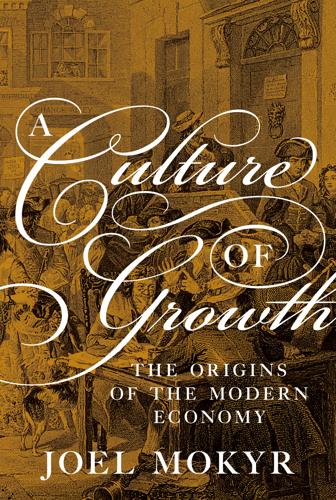
A Culture of Growth: The Origins of the Modern Economy
by
Joel Mokyr
Published 8 Jan 2016
The central finding was one of fairly high correlation on some matters such as religion where the correlation was .57 but a much lower correlation for belief on “contentious issues” such as horoscopes and UFOs. The conclusion is that individuals clearly choose whether they want to adopt the default option or adopt a different belief, acquired horizontally or obliquely. 4 The classic example is the development of the steam engine in the eighteenth century; the exact understanding of how and why a steam engine worked and what determined its efficiency were not really mastered until the second quarter of the nineteenth century, but some knowledge of atmospheric pressure and the behavior of steam under pressure was essential for the machine to be built at all. Much of the improved understanding was the result of practical experimentation with the engine. 5 Moreover, more widely diffused and more accessible knowledge of other techniques facilitated the rate of technological progress because many inventions involved the recombination of other technological components and analogies from different techniques.
…
As already noted earlier, Newcomen’s atmospheric engine required some notions that had been developed by experimental philosophers, above all the realization of atmospheric pressure and that a vacuum was possible and could be exploited (Wootton, 2015, pp. 500–8). This is not to suggest by any means that the concepts of energy were well understood: the well-worn adage that science owed more to the steam engine than the steam engine owed science is certainly apt. Yet it still is undeniable that without the work of a long line of well-trained natural philosophers beginning with that of the Neapolitan Giambattista della Porta via the discovery of the atmosphere by Torricelli in 1643 and all the way to Denis Papin, who built the first workable model of an atmospheric engine in the 1690s, it is hard to see Newcomen’s device succeeding (Kerker, 1961; Cohen 2012, pp. 476–78, 729; Wootton, 2015, pp. 490–95).
…
He was knighted, elected to Parliament, and became quite wealthy.18 In 1727 he was given a splendid funeral and interned in a prominent place in Westminster Abbey. Voltaire remarked that he was buried like a well-loved king. No wonder that his life provided an iconic model that other would-be scientists were hoping to follow, much like James Watt’s career did for engineers a century later (MacLeod, 2007). In early eighteenth-century France, the new science was especially valued and became part of high society and a new political culture in which a powerful alliance was created between the savants of the Republic of Letters and the royal administration (Shank, 2008, p. 88).
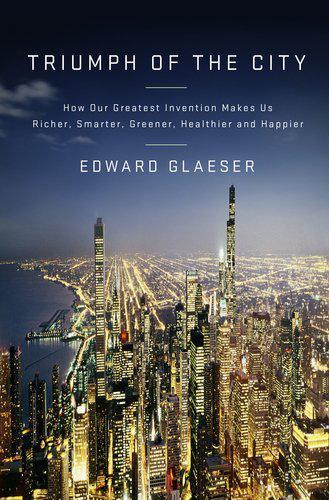
Triumph of the City: How Our Greatest Invention Makes Us Richer, Smarter, Greener, Healthier, and Happier
by
Edward L. Glaeser
Published 1 Jan 2011
Elisha Otis didn’t invent the elevator; Archimedes allegedly built one, possibly in Sicily, twenty-two hundred years ago. And Louis XV had his own personal lift in Versailles so that he could visit his mistress. Yet for the elevator to become mass transit, it needed a good source of power, and it needed to be safe. Messrs. Matthew Boulton and James Watt provided the early steam engines used to power industrial elevators, which were either pulled up by a rope or pushed up hydraulically. As engines improved, so did the speed and power of elevators, which could haul massive amounts of coal out of mines or grain from boats. But humans were still pretty wary of traveling long distances upward in a machine that could easily break and send them hurtling downward.
…
In the 1950s, when Jane Jacobs fought against running a road through Washington Square Park, she was fighting to save nineteenth-century sprawl from twentieth-century sprawl. The next step after the omnibus was to power carriages with something other than equine muscle. Matthew Boulton understood that the steam engine could move wheels, and Richard Trevithick built the first functioning train in 1804. As steam engines became more reliable and coaches more comfortable, entrepreneurs started laying down rail networks. Intra-urban systems were built on existing roads, in tunnels, and on elevated rails. Building at street level was cheap but used valuable city real estate and created lots of noise and smoke.
…
Today, especially in the developed world, skilled people have usually been well educated in traditional schools—although their most important knowledge is usually acquired after graduation. At other times, and in poorer places today, human capital is more likely to come in the form of intelligent, energetic entrepreneurs who, like Henry Ford or James Watt, received little formal education. The best cities have a mix of skills and provide pathways for those who start with less to end with more. But different cities have found different ways to attract talent. In some cases, either raw political power or sensible probusiness policies attract skilled people.

Makers
by
Chris Anderson
Published 1 Oct 2012
But after his death, as I went through his scores of patent filings, including a clock timer for a stove and a Dictaphone-like recording machine, I couldn’t help but observe that of his many ideas, only the sprinklers actually made it to market at all. Why? Because he was an inventor, not an entrepreneur. And in that distinction lies the core of this book. It used to be hard to be an entrepreneur. The great inventors/businessmen of the First Industrial Revolution, such as James Watt and Matthew Boulton of steam-engine fame, were not just smart but privileged. Most were either born into the ruling class or lucky enough to be apprenticed to one of the elite. For most of history since then, entrepreneurship has meant either setting up a corner grocery shop or some other sort of modest local business or, more rarely, a total pie-in-the-sky crapshoot around an idea that is more likely to bring ruination than riches.
…
Hargreaves left for Nottingham, where the booming cotton hosiery industry needed more cotton thread. He died a few years later, in 1778, having made a little money from his invention, but still far from rich. While this was happening, the American colonies were declaring independence and war. James Watt invented the steam engine in 1776. Although the exact timing with the Declaration of Independence is a coincidence, the connection between the two is not. Britain was finding it increasingly difficult to support its empire on resource extraction from its colonies alone, especially as they became more difficult to manage.
…
The hand-powered spinning wheel was introduced in China and the Islamic world in the eleventh century, and the foot treadle appeared in the 1500s. You only have to look at illustrated fairy tales to see spinning wheels in widespread use. But the earlier machines didn’t launch an industrial revolution, while Hargreaves’s invention, along with the steam engine and even more sophisticated power looms that came later, did. Why? Historians have been debating this for centuries, but they agree on a few reasons. First, unlike silk, wool, and hemp, which were used in many of the earlier machines, cotton was a commodity that could reach everyone. It was simply the cheapest and most available fiber in the world, even more so once the expanding British trade empire brought bales of the stuff from India, Egypt, and the New World.
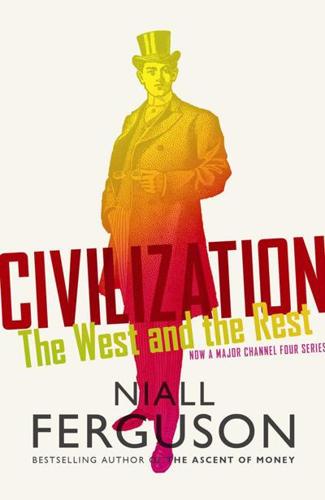
Civilization: The West and the Rest
by
Niall Ferguson
Published 28 Feb 2011
Iron output at Darby’s Coalbrookdale furnace leapt from 81 tons a year in 1709 to 4,632 in 1850. Likewise, Thomas Newcomen’s 1705 steam engine was of little practical use; but James Watt’s addition of a separate condenser greatly improved it, and Richard Trevithick’s high-pressure version was better still. Newcomen’s engine had burned 45 pounds of coal to produce a single horsepower hour. A late nineteenth-century steam engine could do the same with less than 1 pound.8 By 1870 Britain’s steam engines together were generating 4 million horsepower, equivalent to the work of 40 million men. Feeding such a large human workforce would have required three times Britain’s entire wheat output.9 None of this was as intellectually profound as the big scientific breakthroughs of the seventeenth century, though Boulton’s and Watt’s membership of the Birmingham Lunar Society, which also counted the pioneering chemist Joseph Priestley among its luminaries, shows how close the connections were between the two revolutions.10 Rather, it was a cumulative, evolutionary process of improvement characterized by tinkering, sometimes carried out by men with minimal scientific education.
…
It was always more likely that the latter, with its distinctive culture of experimental tinkering and patient observation, would produce the technological advances without which there could have been no Industrial Revolution (see Chapter 5).45 The line that led from Newton’s laws to Thomas Newcomen’s steam engine – first used to drain the Whitehaven collieries in 1715 – was remarkably short and straight, though Newcomen was but a humble Dartmouth ironmonger.46 It is not accidental that three of the world’s most important technological innovations – James Watt’s improved steam engine (1764), John Harrison’s longitude-finding chronometer (1761) and Richard Arkwright’s water frame (1769) – were invented in the same country, in the same decade.
…
The first true cotton mill, Richard Arkwright’s at Cromford in Derbyshire, was built in 1771. Within seven years a copy appeared in France. It took just three years for the French to copy Watt’s 1775 steam engine. By 1784 there were German versions of both, thanks in large measure to industrial espionage. The Americans, who had the advantage of being able to grow their own cotton as well as mine their own coal, were a little slower: the first cotton mill appeared in Bass River, Massachusetts, in 1788, the first steam engine in 1803.23 The Belgians, Dutch and Swiss were not far behind. The pattern was similar after the first steam locomotives began pulling carriages on the Stockton and Darlington Railway in 1825, though that innovation took a mere five years to cross the Atlantic, compared with twelve years to reach Germany and twenty-two to arrive in Switzerland.24 As the efficiency of the technology improved, so it became economically attractive even where labour was cheaper and coal scarcer.
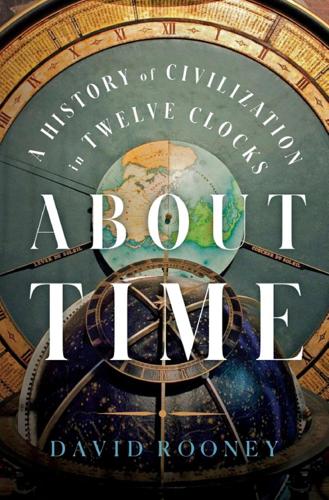
About Time: A History of Civilization in Twelve Clocks
by
David Rooney
Published 16 Aug 2021
As it grew, commented the textile industrialist John Kennedy in 1815, “a higher class of mechanics, such as watch and clock-makers, white-smiths, and mathematical instrument-makers, began to be wanted.”10 In an industry far removed from their own, the clockmakers of England were changing the face of manufacturing—and the modern world. It was not just the textile mills. All the industrialists had been at it. When Josiah Wedgwood, the pottery entrepreneur, wanted machine tools for his new factory in 1767, he approached the clockmaking trade. When the mechanical engineer and steam-engine maker James Watt needed tools for his Birmingham works, it was to the clockmakers he went. When his business partner, the manufacturer Matthew Boulton, was asked for advice on who made the best machines, he recommended the clockmakers of Lancashire. Two decades later, the civil engineer John Rennie complained to Boulton that the cotton trade had deprived London of its best clockmakers, leaving the London trade deficient.
…
But I always came away with new knowledge and insights from these impromptu conversations. I like to think that Henry Dickinson felt the same sense of anticipation as he walked a path I came to know so well, striding through the museum’s majestic East Hall, filled with steam engines from the eighteenth and nineteenth centuries by engineers such as Thomas Newcomen, Richard Trevithick and James Watt, before bounding up the stairs into the museum’s entrance hall to meet his visitor. Having ushered Ford through the doors that morning in 1928, Dickinson proceeded to tour the carmaker around the museum’s rich array of exhibits, doubtless asking more questions than he answered.
…
A new system of manufacture had been developing slowly through the nineteenth century and, by the 1870s, cheap watches and clocks, mass-produced in factories using specialist machines powered by steam engines and operated by low-skilled workers, were rolling off the production lines that formed part of the system. The old ways of manufacture were disappearing, trumpeted a British watchmaking journal in 1875, to be “superseded by the disciplined organization of the factory, the youthful hand, the automaton machine, and the steam-engine! Even Switzerland itself is threatened by the all-conquering power.”16 The new conquering power was America; the new system became known as the American System of Manufactures; and while clocks were its first products, the system changed the face of manufacturing, worldwide, forever.

Possible Minds: Twenty-Five Ways of Looking at AI
by
John Brockman
Published 19 Feb 2019
Written at the height of the Cold War, it contains a chilling reminder of the dangers of totalitarian organizations and societies, and of the danger to democracy when it tries to combat totalitarianism with totalitarianism’s own weapons. Wiener’s Cybernetics looked in close scientific detail at the process of control via feedback. (“Cybernetics,” from the ancient Greek for “helmsman,” is the etymological basis of our word “governor,” which is what James Watt called his pathbreaking feedback control device that transformed the use of steam engines.) Because he was immersed in problems of control, Wiener saw the world as a set of complex, interlocking feedback loops, in which sensors, signals, and actuators such as engines interact via an intricate exchange of signals and information. The engineering applications of Cybernetics were tremendously influential and effective, giving rise to rockets, robots, automated assembly lines, and a host of precision-engineering techniques—in other words, to the basis of contemporary industrial society.
…
As to that original coinage, Wiener had reached back to the ancient Greek to borrow the word for “steersman” (κυβερνήτης/kubernétés), a masculine figure channeling power and instinct at the helm of a ship, who read the waves, judged the wind, kept a hand on the tiller, and directed the slaves as they mindlessly (mechanically) churned their oars. The Greek had already migrated into modern English via Latin, going from kuber- to guber—the root of “gubernatorial” and “governor,” another term for masculine control, deployed by James Watt to describe his 19th-century device for modulating a runaway steam engine. Cybernetics thus took ideas that had long analogized people and devices and generalized them to an applied science by adding that “-ics.” Wiener’s three c’s (command, control, communication) drew on the mathematics of probability to formalize systems (whether biological or mechanical) theorized as a set of inputs of information achieving outputs of actions in an environment—a muscular, fleshy agenda often minimized in genealogies of AI.
…
To me, and from today’s vantage point seventy years on, his tools seem woefully inadequate for describing the mechanisms underlying biological systems, and so he missed out on how similar mechanisms might eventually be embodied in technological computational systems—as now they have been. Today’s dominant technologies were developed in the world of Turing and von Neumann, rather than the world of Wiener. In the first industrial revolution, energy from a steam engine or a waterwheel was used by human workers to replace their own energy. Instead of being a source of energy for physical work, people became modulators of how a large source of energy was used. But because steam engines and waterwheels had to be large to be an efficient use of capital, and because in the 18th century the only technology for spatial distribution of energy was mechanical and worked only at very short range, many workers needed to be crowded around the source of energy.
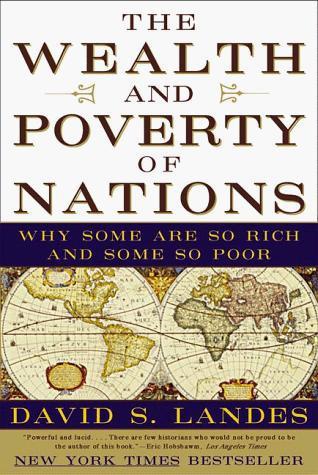
The Wealth and Poverty of Nations: Why Some Are So Rich and Some So Poor
by
David S. Landes
Published 14 Sep 1999
The first device to use steam to create a vacuum and work a pump was patented in England by Thomas Savery in 1698; the first steam engine proper (with piston) by Thomas Newcomen in 1705. Newcomen’s atmospheric engine (so called becuase it relied simply on atmospheric pressure) in turn was grossly wasteful of energy because the cylinder cooled and had to be reheated with every stroke. The machine therefore worked best pumping water out of coal mines, where fuel was almost a free good. A long time—sixty years—passed before James Watt invented an engine with separate condenser (1768) whose fuel efficiency was good enough to make steam profitable away from the mines, in the new industrial cities; and it took another fifteen years to adapt the machine to rotary motion, so that it could drive the wheels of industry.
…
No technique drew so closely on experiment—a long inquiry into vacuums and air pressure that began in the sixteenth century and reached fruition in the late seventeenth in the work of Otto von Guericke (1602-1686), Evangelista Torricelli (1608-1647), Robert Boyle (1627-1691), and Denys Papin (?1647-1712), German, Italian, English, French. To be sure, the scientists of the eighteenth century could not have explained why and how a steam engine worked. That had to wait for Sadi Carnot (1796-1832) and the laws of thermodynamics. But to say that the engine anticipated knowledge is not to say that the engine builder did not draw on earlier scientific acquisitions, both substantive and methodological. James Watt made the point. His master and mentor Joseph Black (1728-1799) did not give him the idea for the separate condenser, but working with Black gave him the practice and method to probe and resolve the issue.16 Even at that, the heroic inventor did not give full credit.
…
Besides, it takes two to tango, and skilled craftsmen, like savants and artists, took all of Europe as their home.4 One of the most valuable secrets of French metalworkers, for example, was the gilding, usually on brass or bronze, known as ormolu (or moulu)—bright, shiny, phony, hence immensely profitable. Matthew Boulton gained fame as James Watt’s partner in the manufacture of steam engines, but he began as master maker of buttons, buckles, watch chains, candlesticks, and all manner of metal objects. Boulton put money and men out in every direction to learn this French technique; also to seduce French craftsmen and artists, with their tools if possible. Eventually he succeeded and thought himself the patriot as well as the smart businessman.5 In the meantime, Boulton himself was the target of numerous attempts at seduction.

Human Frontiers: The Future of Big Ideas in an Age of Small Thinking
by
Michael Bhaskar
Published 2 Nov 2021
You had new, much more cost-efficient goods with which to do so. Some changes were wrought by those without scientific backgrounds – think of George Stephenson and his Rocket – but science did still contribute to technology, as with Joseph Black or Alessandro Volta. New business forms, pioneered by technologists like James Watt or entrepreneurs like Arkwright, dovetailed with original theories from the likes of Adam Smith. They are all connected – ideas in science and philosophy, politics and technology, directed and undirected, lucky accidents and long programmes, all co-evolving and informing one another.8 Whether you were a grand philosophe at an aristocratic Parisian salon or a sooty-handed Derbyshire engineer, you could be part of a revolution in ideas, built from ideas.
…
A challenge at least as hard as realising AGI or elaborating a Theory of Everything. There will be several levels to any response. First is to build ethical and safety oversight into research and ideation. Both have become major topics in AI research, for example, which is encouraging, as if environmental factors were taken into account by James Watt or Karl Benz. But there is so much more to do, especially given that this focus is hardly uniform: some groups care deeply, others probably less so. Over the coming years we will see more forms of what the life sciences call ‘dual-use research of concern’ – essentially where, say, academic biosciences research could be repurposed to produce new biological weapons.
…
They are all connected – ideas in science and philosophy, politics and technology, directed and undirected, lucky accidents and long programmes, all co-evolving and informing one another.8 Whether you were a grand philosophe at an aristocratic Parisian salon or a sooty-handed Derbyshire engineer, you could be part of a revolution in ideas, built from ideas. What's more, it's clear that the set of ideas behind the Great Divergence were of unusual consequence. Some were utterly practical, like the flying shuttle or the seed drill, others more abstract, like Newtonian mechanics. Some originated in one realm but led to another – steam engines were the product of tinkerers, built without exact underlying scientific principles, but their invention and refinement later led to an understanding of thermodynamics. Some big ideas related to concepts of political freedom or economic organisation, some to art and entertainment. Sometimes change was gradual, by increments that evolved thanks to countless artisan experimenters.
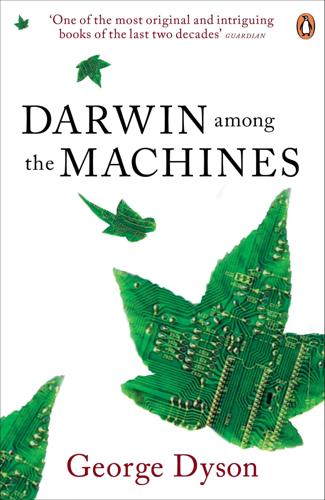
Darwin Among the Machines
by
George Dyson
Published 28 Mar 2012
“By ye management of the steam cocks ye motion may be accelerated, retarded, destroy’d, revised, instantly & easyly. And if this answers in Practise as it does in theory, ye Machine can not fail of success.” Boulton, the original pioneer of mass production (from belt buckles to steam engines), was too far in debt to act on Darwin’s suggestion at the time, but the concept would resurface, like Darwinism, first in the age of railroads and then in the age of automobiles. A few years later, when James Watt developed the condenser engine, it was Darwin who promoted the Boulton & Watt partnership that brought the Industrial Revolution—and, soon enough, the “fiery chariot”—to life. Below Darwin’s signature was appended a prophetic postscript: “I think four wheels would be better—adieu.”28 Science fiction, as well as the automobile, owes Erasmus Darwin a founding credit.
…
As Charles’s son Francis Darwin (1848–1925) remarked, “Erasmus had a strong love of all kinds of mechanism, for which Charles Darwin had no taste.”26 In the 1760s, inspired by the Birmingham visits of Benjamin Franklin and drawing on his friendships with Matthew Boulton, Josiah Wedgwood, James Keir, William Small, and James Watt, Darwin founded the Lunar Society of Birmingham, an informal association of natural philosophers and industrialists whose meetings were scheduled to allow the full moon to assist its members home. The group of self-styled “Lunaticks” formed a nucleus for the industrialization of Britain, and either directly or via the interlocking relationships of the Lunar Society Erasmus Darwin had a hand in the origin of almost every species of mechanism explicit or implicit in the technologies of today.
…
Under the neo-Darwinian regime—not so much a consequence of the origins of life as a consequence of the origins of death—replicators will, in the long run, win. But there is no law against changing the rules. Intelligence and technology are bringing Lamarckian mechanisms into play, with results that may leave the slow pace of Darwinian trial and error behind. “And though steam engines are as the angels in heaven, with respect to matrimony, yet in their reproduction of machinery we seem to catch a glimpse of the extraordinary vicarious arrangement whereby it is not impossible that the reproductive system of the mechanical world will be always carried on,” noted Samuel Butler in 1865.63 Seven years later he was more explicit about the reproductive strategies of machines: “Surely if a machine is able to reproduce another machine systematically, we may say that it has a reproductive system.

Bourgeois Dignity: Why Economics Can't Explain the Modern World
by
Deirdre N. McCloskey
Published 15 Nov 2011
Surprisingly, in northwestern Europe and later elsewhere, betterment tested by success in domestic and foreign trade—and, as I’ve said, in scientific, artistic, sporting, journalistic, and political “markets” as well—came to be seen as splendid heroism, such as Henry Ford’s assembly line or Steve Jobs’s iPad. Why did Leonardo da Vinci in 1519 conceal many of his (not entirely original) engineering dreams in secret writing, whereas James Watt, of steam-engine fame (famous too for his fiercely defended anti-betterment patents), would in 1825, six years after his death, be honored with a planned statue in Westminster Abbey?43 Why did bourgeois Shakespeare in 1610 sneer loftily at the bourgeoisie, yet gentrified Jane Austen in 1810 smiled amiably at it?
…
But until lately the bulk of technological change was not applied science, with rare exceptions such as Franklin’s lightning rods on church steeples or Humphrey Davy’s and George Stephenson’s safety lamps in coal mining. Well after the theorizing of the steam engine by Carnot, as Lawrence Joseph Henderson put it in 1917, the science of thermodynamics owed more to the steam engine than the steam engine owed to science. Margaret Jacob argues plausibly for an ideal cause working earlier through a material one. The steam engine, itself a material consequence of seventeenth-century ideas about the “weight of air,” inspired new ideas in the 1740s about machinery generally. Yet it is doubtful that the inventor of the “atmospheric” steam engine, Newcomen, an artisan familiar with pumps, knew much about high science.
…
The goldsmith John Tuite’s patent of 1742 modifying Newcomen’s steam engine was, according to Margaret Jacob, the first British patent to be granted that says boldly in the application that it will put people out of work, saving labor. Before that time all patents needed to claim in a medieval and then mercantilist rhetoric that employment would be increased. In 1744 the British Newtonian, Freemason, and chaplain to the Prince of Wales, Jean Desaguliers, of Huguenot origin, was the first person to emphasize in print, Jacob continues, the labor-saving character of steam engines.2 Mokyr concludes that “the British government was by and large unsupportive of reactionary forces that tried to slow down the Industrial Revolution.”3 It was a rhetorical change with big consequences, a change, as the classical rhetoricians put it, in stasis (Greek “standing, position”), the initial framing of the question of how one should view betterments.

Growth: From Microorganisms to Megacities
by
Vaclav Smil
Published 23 Sep 2019
Wärtsilä RT-flex96C and Wärtsilä RTA96C technology review. http://wartsila.com. WaterAid. 2015. Undernutrition and Water, Sanitation and Hygiene. London: WaterAid. Watkins, G. 1967. Steam power—an illustrated guide. Industrial Archaeology 4:81–110. Watt, J. 1769. Steam Engines, &c. 29 April 1769. Patent reprint by G. E. Eyre and W. Spottiswoode, 1855. https://upload.wikimedia.org/wikipedia/commons/0/0d/James_Watt_Patent_1769_No_913.pdf. Watts, P. 1905. The Ships of the Royal Navy as They Existed at the Time of Trafalgar. London: Institution of Naval Architects. WBCSD (World Business Council for Sustainable Development). 2004. Mobility 2030: Meeting the Challenges of Sustainability.
…
But even the 18th-century wheels were more efficient than the contemporary steam engine and the development of these two very different machines expanded in tandem, with wheels being the key prime movers of several important pre-1850 industries, above all textile weaving. In 1849 the total capacity of US waterwheels was nearly 500 MW and that of steam engines reached about 920 MW (Daugherty 1927), and Schurr and Netschert (1960) calculated that American waterwheels kept supplying more useful power than all steam engines until the late 1860s. The Tenth Census showed that in 1880, just before the introduction of commercial electricity generation, the US had 55,404 waterwheels with a total installed power of 914 MW (averaging about 16.5 kW per wheel), which accounted for 36% of all power used in the country’s manufacturing, with steam supplying the rest (Swain 1885).
…
Watt’s largest engine rated just over 100 kW but that power was rapidly raised by post-1800 developments that resulted in much larger stationary engines deployed not only in mining but in all sectors of manufacturing, from food processing to metal forging. During the last two decades of the 19th industry, large steam engines were also used to rotate dynamos in the first coal-fired electricity-generating stations (Thurston 1886; Dalby 1920; von Tunzelmann 1978; Smil 2005). The development of stationary steam engines was marked by increases of unit capacities, operating pressures, and thermal efficiencies. The most important innovation enabling these advances was a compound steam engine which expanded high-pressure steam first in two, then commonly in three, and eventually even in four stages in order to maximize energy extraction (Richardson 1886).

More: The 10,000-Year Rise of the World Economy
by
Philip Coggan
Published 6 Feb 2020
Wrigley estimates that a third of England would have had to be covered in trees to supply the energy created by coal in 1800.14 The ability to exploit coal, a present from the primeval past, was like one of those fortunate bequests that restored the wealth of the heroes and heroines of Victorian novels. James Watt developed a more efficient form of steam engine that used a separate condenser, allowing the cylinder to be kept hot, thereby saving energy. Watt’s engines made rotary motion possible and thus allowed for more sophisticated uses than simply pumping water. But Watt’s fierce defence of his patent rights (along with his partner, Matthew Boulton) limited the widespread adoption of engines before 1800. By that date only 2,200 steam engines had been built in Britain, some two-thirds of which were Newcomen engines, and only a quarter Boulton and Watt engines.15 Water power was still very important and, as late as 1830, industry generated equal quantities of power from steam and water.16 Gradually, in the first half of the 19th century, steam engines became adopted by the cotton business, one of Britain’s leading industries.
…
Arnold Toynbee, a historian, popularised the term Industrial Revolution in a series of lectures (and a subsequent book) in the 1880s. When this author was at school, the revolution was dated to around 1760, largely based in England, and was linked to a series of inventions including textile machinery like the spinning jenny and the steam engine developed by James Watt. But the picture is a lot more complex and uncertain than the school textbooks suggested. In the mid-18th century, around 70% of humans were still living in “agrarian empires” of one kind or another, whether in China, India, Japan, Russia, or under the Habsburg monarchy.1 The term “revolution” implies a sudden change but that is not what the numbers (such as we have) appear to suggest.
…
As the efficiency of textile production improved, the price of finished goods fell and this increased demand for the product. Manufacturers were able to benefit from economies of scale. Steam engines were introduced to pump water. But producers had long used water and wind power for other purposes like grinding grain or treating textiles. There was every incentive to try to adapt steam engines for similar purposes. At some mines, the coal that powered engines was transported from the pithead on rails; again, this led to the adaptation of steam engines to run on those rails. Iron rails were better than wooden ones and this boosted demand for the iron industry. Even more fundamentally, the introduction of printing (another technological advance) made it easier for knowledge of the new techniques to spread more quickly than in the past.
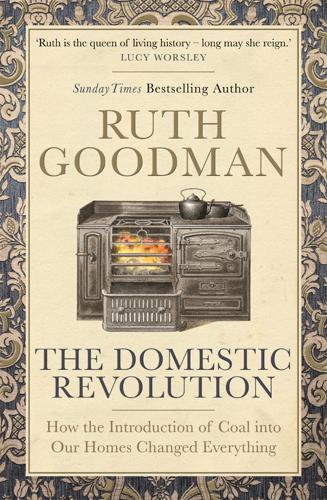
The Domestic Revolution
by
Ruth Goodman
Published 15 Apr 2020
When owners and inventors in industry after industry began to see the potential for growth that came with coal, they did so in part because this fuel was much more visible and much more available than it had been a century earlier. Domestic use had raised coal’s profile, as people learnt how to manage and exploit it in the home. Those who experimented with coal in furnaces, kilns, fireboxes and engines did so from a position of personal experience, the famous though probably apocryphal story of James Watt gaining inspiration for his steam engine from witnessing a kettle boil being a colourful example. Coal, as we have seen, was not an easy fuel to burn. It required coaxing. People knew they had to devise ways to harness its potential. Chimneys, flues, iron grates and plates were constantly tweaked and readjusted to maximize their efficiency and their ability to redirect heat and smoke.
…
Bringing the Empire Home: Race, Class, and Gender in Britain and Colonial South Africa. Chicago: University of Chicago. Martin, Robert Montgomery. 1833–4. Taxation of the British Empire. London: E. Wilson. Mascall, Leonard. 1583. A Profitable Boke Declaring Divers Approved Remedies, to Take Out Spottes and Staines. London: s.n. Miller, David Philip. 2004. ‘True Myths: James Watt’s Kettle, His Condenser, and His Chemistry’. History of Science 42: 333–60. Misson de Valbourg, Francis Maximilian [or Henri]. 1719. Memoirs and Observations in His Travels over England, trans. by Ozell. London: D. Browne; A. Bell; J. Darby; et al. Nightingale, Florence. 1859. Notes on Nursing: What It Is and What It Is Not.
…
This is one of the key innovations that sparked the Industrial Revolution, they say, although they don’t generally have cooking pots in mind when they do. Casting intricate and strong shapes in coke-produced iron opened up a huge range of possibilities. By a stroke of pure luck, it turned out to be just what Thomas Newcomen needed for certain of his steam engine parts, what George Stephenson needed for his iron rails, what so many architects needed for their new ideas in construction. Cast-iron pots, kettles and grates provided the spur to further invention. And their sales provided the capital for further industrial experimentation and development. As important as the technological leap was the economic one.

Them And Us: Politics, Greed And Inequality - Why We Need A Fair Society
by
Will Hutton
Published 30 Sep 2010
This is a world of tumult, where productive entrepreneurs challenge boundaries and build on each other’s technological achievements in conditions of considerable uncertainty, even if there is an inevitability about where collective knowledge will drive technology. Thus, it fell to Gutenberg to combine iron and copper moulds with new advances in inks to create a printing press, but he could not have dreamed of the implications of what he was achieving. Equally, while James Watt patented the steam engine, it would fall to others to perfect what he had begun – exploiting the pool of common knowledge – when the patent expired in 1800. They surely all hoped to profit from their innovations, but they could only dimly foresee the dramatic impact of what they were doing. Capitalism in these terms does not regulate itself into an equilibrium or organise itself into optimal outcomes because of spontaneous proclivities to buy cheap and sell dear in the quest for profit.
…
At this time, Britain was responsible for the creation and development of four great GPTs – the steam engine, the factory system, the railway and the iron steamship – which underpinned its industrial, imperial, military and technological pre-eminence. Its great inventors, scientists and technologists – Watt, Stephenson and Brunel among them – were members of a wider culture that celebrated science. Importantly, they were also outsiders, disproportionately drawn from the ranks of Protestant nonconformists and dissenters. James Watt, Josiah Wedgwood and George Stephenson were all non-conformists. Before 1829, dissenters were all prohibited from joining Parliament, the military or the civil service.
…
The great general purpose technologies that have changed the world – such as the railway, the internal combustion engine and the internet – are transformations driven by this fecund interaction between capitalist dynamism and ever-expanding knowledge. The actors at the mobilising centre of this process are the entrepreneurs. Thus the roll-call of the great figures of the Industrial Revolution – James Watt, George Stephenson, Richard Arkwright, Josiah Wedgwood, John Harrison, Matthew Boulton and many more. These people were prepared to bet their company, their career or their fortune on the belief that the market was ready for a new process, new good or new service that they had devised and in which they had total faith.
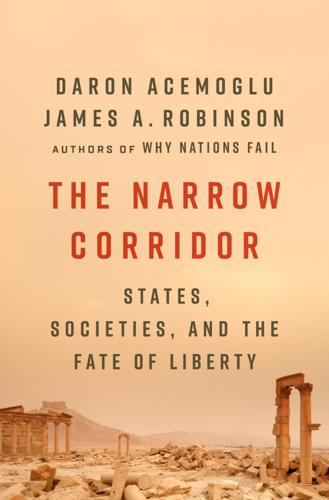
The Narrow Corridor: States, Societies, and the Fate of Liberty
by
Daron Acemoglu
and
James A. Robinson
Published 23 Sep 2019
Leading the way were textiles, where a series of innovative breakthroughs in spinning, such as the water frame, the spinning jenny, and the mule revolutionized productivity. Similar innovations occurred in weaving, with the introduction of the flying shuttle and various types of power looms. Equally transformative were the novel forms of inanimate power starting with Thomas Newcomen’s atmospheric engine and then James Watt’s steam engine. The steam engine not only made mining much more productive by enabling the pumping of water out of mines, but also changed transportation and metallurgy. The landscape for transport was reconfigured both because of steam trains in the nineteenth century and because a series of canals and new roads linked up major cities starting in the late seventeenth century.
…
So different people could pursue distinct approaches in order to innovate better, succeed where others failed, and perhaps more important in the process, formulate completely new problems and ideas. We see the significance of this type of experimentation in some of the iconic technologies of the Industrial Revolution, such as the steam engine. Innovators and entrepreneurs such as Robert Boyle, Denis Papin, Thomas Savory, Thomas Newcomen, John Smeaton, and James Watt all approached the problem of using steam power differently and experimented in their own ways in a cumulative process that ultimately led to much more efficient and powerful steam engines. Both the nature of experimentation, with plenty of false starts and a multitude of disparate approaches, and its critical role in innovative breakthroughs are perhaps best illustrated by the quest for a way for ships to tell their longitude at sea.
…
Arkwright was the youngest of seven children whose father was a tailor, poor enough that he was unable to send Richard to school. But Arkwright ended up with a knighthood, ascending to the heights of English society. Or take the case of James Watt, the inventor of the Watt steam engine, who came from a middle-class Scottish family. Within ten years of his death in 1819 James Watt had a statue of himself in Westminster Abbey (and there is also a memorial tablet there for John Harrison). The Abbey houses the tombs of many English kings and queens and famous people, such as William Wilberforce, the man who spearheaded the campaign to abolish the slave trade in the eighteenth and early nineteenth centuries.
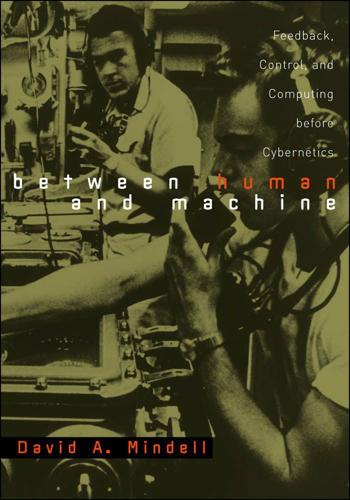
Between Human and Machine: Feedback, Control, and Computing Before Cybernetics
by
David A. Mindell
Published 10 Oct 2002
The term contre-rolle originally referred to a register for accounts, and control has a history that runs through economics, science, and politics before making its way into engineering. 25 The historian James Beniger labeled as “the control revolution” the transformation of business and technology that occurred from the late nineteenth to the early twentieth century. 26 The two preeminent historians of feedback control, Otto Mayr and Stuart Bennett, have both written extensively and insightfully about the history of feedback control. James Watt’s centrifugal flyball governor for steam engines, for example, became the first feedback mechanism to be widely employed by technologists and to enter popular consciousness. The device, derived from the rotating pendulums used to regulate windmills, appeared in 1788, and the spinning balls became familiar icons of mechanical motion.
…
In fact, Black’s conceptions of both stability and negative feedback differed markedly from those of much of the engineering community at the time, although they would have been familiar to engineers working on the telephone network . Two Cultures of Feedback and Stability Today, the adjective negative in the term negative feedback means that the feedback signal subtracts from the input signal rather than adding to it (i.e., the sign of the feedback signal is reversed). In analogy to James Watt’s flyball governor on a steam engine, when the engine speeds up, the spinning balls slow it down, and when the balls spin slower, they speed up the engine. Hence the feedback is negative. In Black’s time, however, even the specific-sounding term negative feedback had yet to acquire a stable definition. The idea of positive feedback had become current in the 1920s with the introduction of the regenerative amplifier.
…
Positive feedback, or regeneration , in a radio amplifier increased the sensitivity of a receiving tube by sending a wave back through an amplifier many times. Black insisted that his “negative feedback” referred to the opposite of regeneration: gain was reduced, not increased. Yet in the analogous steam-engine governor Black’s sense of negative means that the power required to spin the balls reduces the power output of the engine (as opposed to the balls’ triggering an action that slows it)—hardly a significant effect for a steam engine. In their 1924 paper, Friis and Jensen had made the same distinction Black used between “positive feed-back” and “negative feed-back,” based not on the sign of the feedback itself but rather on its effect on the amplifier’s gain. 37 In contrast, Nyquist and Bode, when they built on Black’s work, referred to negative feedback as that with the sign reversed.
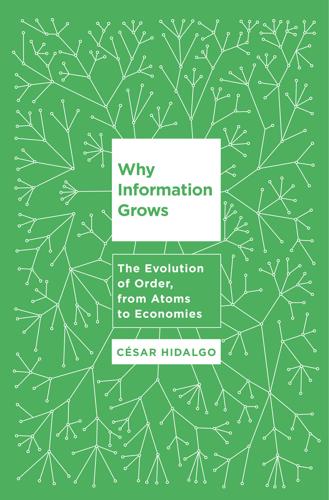
Why Information Grows: The Evolution of Order, From Atoms to Economies
by
Cesar Hidalgo
Published 1 Jun 2015
Adam Smith decomposed the economy into land, labor, and machinery—the last being a mixture of what modern economists refer to as physical capital and technology.1 Smith equated machinery, or fixed capital, with an increase in people’s ability to produce work, and hence he saw the accumulation of physical capital as a determinant of economic growth. “The intention of fixed capital is to increase the productive powers of labour, or to enable the same number of labourers to perform a much greater quantity of work,” he wrote.2 Smith saw improvements in mechanics, such as those embodied in the steam engine created by his contemporary James Watt, as improvements in the ability of people to produce work: “Improvements in mechanics . . . enable the same number of workmen to perform an equal quantity of work with cheaper and simpler machinery.”3 During the twentieth century Smith’s ideas were mathematized by economists, who used calculus and differential equations to create models of economic growth that hinged on the accumulation of different forms of capital.
…
The idea of crystallized imagination should make it clear that Chile is the one exploiting the imagination of Faraday, Tesla, and others, since it was the inventors’ imagination that endowed copper atoms with economic value. But Chile is not the only country that exploits foreign creativity this way. Oil producers like Venezuela and Russia exploit the imagination of Henry Ford, Rudolf Diesel, Gottlieb Daimler, Nicolas Carnot, James Watt, and James Joule by being involved in the commerce of a dark gelatinous goo that was virtually useless until combustion engines were invented.10 Making a strong distinction between the generation of value and the appropriation of monetary compensation helps us understand the difference between wealth and economic development.

Scotland Travel Guide
by
Lonely Planet
Scots established the modern disciplines of economics, sociology, geology, electromagnetic theory, anaesthesiology and antibiotics, and pioneered the steam engine, the pneumatic tyre, the telephone and the TV. Given the weather in Scotland perhaps it’s not surprising that it was a Scot – the chemist Charles Macintosh (1766–1843) – who invented the waterproof material for the raincoat that still bears his name. James Watt (1736–1819) didn’t invent the steam engine (that was done by an Englishman, Thomas Newcomen), but it was Watt’s modifications and improvements – notably the separate condenser – that led to its widespread usefulness in industry.
…
There’s also a pictorial history of Greenock through the ages, while upstairs there are very good temporary exhibitions and small displays from China, Japan and Egypt. The natural history section highlights the sad reality of species extinction in the modern world. Greenock was the birthplace of James Watt , the inventor whose work on the steam engine was one of the key developments of the Industrial Revolution. A statue of him marks his birthplace; behind this looms the spectacular Italian-style Victoria Tower on the municipal buildings, constructed in 1886. SHIPBUILDING ON THE CLYDE One of the earliest permanent Lower Clyde shipyards was established in 1711 by John Scott at Greenock.
…
START: GEORGE SQ FINISH: GLASGOW CATHEDRAL DISTANCE: 1.5 MILES DURATION: 1½ HOURS Walking Tour: Glasgow This stroll takes you to Glasgow Cathedral through trendy Merchant City, once headquarters for Glasgow industrialists. The tourist office on George Square is a good starting point. The square is surrounded by imposing Victorian architecture: the old post office, the Bank of Scotland and the grandiose City Chambers . Statues include Robert Burns, James Watt, and, atop a Doric column, Sir Walter Scott. Walk one block south down Queen St to the Gallery of Modern Art . This striking colonnaded building was once the Royal Exchange and now hosts some of the country’s best contemporary art displays. The gallery faces Ingram St, which you should cross and then follow east four blocks to Hutcheson’s Hall .

The Men Who United the States: America's Explorers, Inventors, Eccentrics and Mavericks, and the Creation of One Nation, Indivisible
by
Simon Winchester
Published 14 Oct 2013
And though neither machine was designed for transportation, the irony is inescapable: a man whose renown was to be very much defined by his mapping of American roads was also toying with the machine that would soon be, with the invention of the railway engine, the early roadways’ temporary undoing. Colles’s first engines were in no way portable. But such contraptions were indeed coming and had been for a while. Ten years earlier, James Watt had invented the condensing steam engine. In doing so, he had opened the way for all manner of more complicated and flexible ways of designing wood- and coal-fired boilers to produce steam to push pistons and turn cranks and drive rotary engines of one kind or another and thus make things move along a road, a waterway, or a specially designed track—a railroad.
…
DC, 367–69, 371–75, 410–11 See also radio; telegraph; telephone Ellsworth, Annie, 346 Ellsworth, Henry Leavitt (patent commissioner), 346 Erie Canal about American efforts prior to, 189–95 beginning plans, 196–203 building phase, 203–6 celebrating completion, 206–9 impact of railroads on, 253 revisiting, 209–14 ethnicity, as unifying force, xvi–xviii Exclusion Act of 1882, 269n Facebook, 425 Fall River, Maine, 171 Farnsworth, Philo (inventor), 410 Farny, Henry (artist), 328, 333 Featherstonhaugh, George (geologist), 94 Federal-Aid Highway Act of 1956, 305 Fessenden, Reginald Aubrey (engineer), 387–92, 406 fire. See also airplanes/air travel; automobiles; steam/steam engines fire as one of five classical elements, v, xx, xxi–xxii unifying role in America, xxii See also airplanes/air travel; automobiles; steam/steam engines On First Seeing the Grand Canyon (Powell), 72 “First Sight” (Larkin), 125 Fitch, John (creator of paddleboat), 249, 251 five classical elements, v, xx Floyd, Charles (Sergeant, Corps of Discovery), 43–44 Ford, Henry (auto maker), 278, 282, 296, 298 Fort Calhoun Nuclear Generating Station (Nebraska), 41 Fort Clatsop (Oregon), 70–71 Fort Thompson, South Dakota, 39 Four Great Surveys of the West, 112–13, 151, 160 49th Parallel (movie), 261n Frankenheimer, John (television director), 407 Franklin, Benjamin, 79, 336 Frémont, John Charles (military officer/explorer), 94, 100, 105–6 French and Indian War (aka Seven Years’ War), 178–79 frontier thesis, 24–32, 377–79.
…
Waterways were the first to benefit from the newly discovered physics of steam. John Fitch, a Connecticut button maker, watch repairer, and silversmith, took an early interest in the waterborne side of things. He proposed in 1785 that “there might be a force governed by steam,” promptly built a paddleboat with a James Watt–type engine inside, and chugged up and down the Delaware River in 1787, little more than a decade after George Washington had rowed across it on the way to war. But he could never interest investors; he faded into obscurity, a figure of pity and ridicule. In 1798 he killed himself by taking an overdose of opium pills, believing that his pioneering would one day be recognized.

The Great Derangement: Climate Change and the Unthinkable
by
Amitav Ghosh
Published 16 Jan 2018
Harris, What’s Wrong with Climate Politics and How to Fix It (Cambridge: Polity Press, 2013), 109. 126 to much of the world: Thus, for example, vulcanologist Bill McGuire cites 1769 CE as a key date in the history of the Anthropocene because that was the year when Richard Arkwright invented the spinning jenny, a machine that would serve as a critical link in the transition to carbon-intensive forms of production: ‘Arkwright’s legacy,’ writes McGuire, ‘is nothing less than the industrialization of the world.’ See Bill McGuire, Waking the Giant, Kindle edition, loc. 363. For Timothy Morton, on the other hand, the key moment is April 1784, a date about which, he asserts, ‘we can be uncannily precise’ because that was when James Watt ‘patented the steam engine’. See Timothy Morton, Hyperobjects, loc. 210. 126 ‘particularly the U.S.’: Anil Agarwal and Sunita Narain, Global Warming in an Unequal World: A Case of Environmental Colonialism (New Delhi: Centre for Science and Environment, 1991), 1. 126 removed from each other: These connections and processes are explored at length by Jack Goody in The Eurasian Miracle (Cambridge: Polity Press, 2010). 127 and the Indian subcontinent: Sheldon Pollock, The Language of the Gods in the World of Men: Sanskrit, Culture, and Power in Premodern India (Berkeley: University of California Press, 2009), 437–52. 127 by the Islamic expansion: Ibid., 489–94. 127 across the Eurasian landmass: Cf.
…
The first marine steam engines to see commercial service in India were purchased by a group of Calcutta businessmen from a British trader in Canton in 1823. The two engines were mounted on a locally built vessel, which was launched upon the Hooghly under the name Diana. Although the Diana attracted much attention, the venture was a commercial failure. But the import of steam engines continued at a steady pace: the records of one of Britain’s most important manufacturers of steam engines show that India was the company’s second-largest market after the Netherlands. Around this time, several steam engines were also built in Calcutta.
…
But he was outdone by his relative, the engineer Ardeseer Cursetjee Wadia, who entered into apprenticeship in the Bombay Dockyard in 1822 at the age of fourteen and was eventually elected a Fellow of the Royal Society. Ardeseer wrote in his memoirs: ‘My enthusiastic love of science now led me to construct, unassisted, a small steam engine of about 1 HP. I likewise endeavored to explain to my countrymen the nature and properties of steam; and to effect this point I had constructed at a great expense in England, a marine steam-engine, which, being sent out to Bombay, I succeeded with the assistance of a native blacksmith in fixing in a boat of my own building.’ It will be evident from this that Indian entrepreneurs were quick to grasp the possibilities of British and American steam technology.
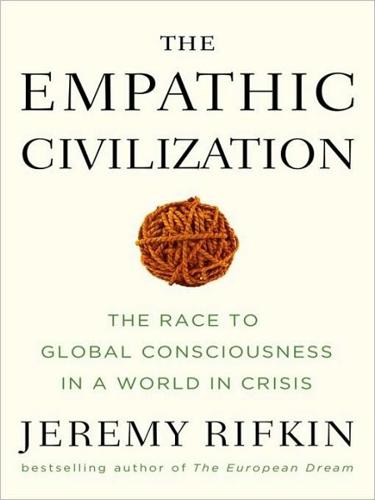
The Empathic Civilization: The Race to Global Consciousness in a World in Crisis
by
Jeremy Rifkin
Published 31 Dec 2009
Part of the reason its origins lie in ambiguity is that there was no epiphanic moment. While historians are fond of identifying coal as the defining energy and the steam engine as the defining technology of the Industrial Revolution, reality didn’t conform quite so neatly to the official chronicle. Coal was already in widespread use as a thermal source in scattered parts of England by the 1760s, and it wasn’t until 1776, at the dawn of the American Revolution, that James Watt invented and patented the modern steam engine. Even with the emergence of coal and steam power in the last quarter of the eighteenth century, most mills continued to operate by water and wind power.
…
The Great Schism of Christianity, beginning with the Reformation and followed by the Counter-Reformation, the Thirty Years’ War, and the Peace of Westphalia—which helped establish the modern notion of national sovereignty—changed the social and political face of Europe.47 But the full economic impact of the print revolution had to await the invention of the steam engine by James Watt in 1769.48 The print revolution converged with the coal, steam, and rail revolution to create the First Industrial Revolution. Between 1830 and 1890, in both Europe and North America, print communications underwent a revolution. Efficient steam-powered print presses made the print production process both quick and cheap.49 Public schooling and mass literacy were introduced on both continents, and within two generations produced the first nearly fully literate populations in history.
…
The textile industry, which was the first to be transformed into what we might consider a factory mode operated by men working with machinery, increased its output tenfold between 1760 and 1787, and it was powered by watermills.24 The first steam engines, using coal as an energy source, were employed in the British cotton industry in the late 1780s. The productivity gains were dramatic. Between 1787 and 1840, British cotton production “jumped from 22 million to 366 million pounds,” while the cost of production plummeted.25 After 1830, coal-powered steam technology crossed the English Channel and began to be harnessed in earnest. Belgium doubled its steam engines in use between 1830 and 1838. By 1850, the country had become one of the most industrialized on the continent, with 2,300 engines producing 66,000 horsepower.26 The Krupps introduced the steam engine into Germany in 1835.27 Even with these advances in coal-powered steam technology, the reality is that as late as 1848, the year of the great European Revolution, French hydraulic power “accounted for two and a half times more power than steam engines. . . .”
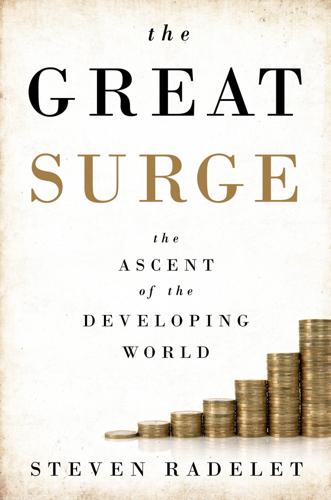
The Great Surge: The Ascent of the Developing World
by
Steven Radelet
Published 10 Nov 2015
Human welfare and average incomes began to improve slowly, in some parts of the world, starting in the twelfth and thirteenth centuries, but progress was incremental and not widespread. That pattern began to change rapidly in the nineteenth century, as the impacts of the industrial revolution took hold, and increasing numbers of people began to escape the ravages of extreme poverty. James Watt’s invention of the steam engine in the 1770s ignited a surge of new innovations and technologies, including the transformation from hand to machine production, the introduction of mechanized cotton spinning (and with it the mass production of textiles), Jethro Tull’s (earlier) development of the horse-drawn seed drill (which helped increase food and agricultural production), the shift in energy sources from wood and charcoal to much cheaper coal, and the large-scale production of chemicals and iron.
…
As developing countries have become more integrated with the global economy over the last two decades, they have been able to take advantage of computers, the internet, cell phones, containerized shipping, cheaper and safer air travel, new plant varieties and agricultural techniques, and new medicines. Part of the importance of the recent global integration of developing countries is that it has taken place exactly when it did: during a period of some of the greatest advances in technology in the last two hundred years. Just as the industrial revolution can be traced to James Watt’s invention of the steam engine, which drove innovations and changes across the economic landscape, much of the current technological revolution can be traced back to the semiconductor and the computer, a history that Erik Brynjolfsson and Andrew McAfee recount in The Second Machine Age: Work, Progress, and Prosperity in a Time of Brilliant Technologies.14 There are multiple examples, but I will focus on technological advances in four areas that have been important to developing countries: transportation, agriculture, information, and health.
…
Managing the peaceful rise of China will be one of the most important global challenges of the next two decades, with profound effects on global development progress. TECHNOLOGY AND INNOVATION We live in a period of some of the most dramatic technological changes in history—what Erik Brynjolfsson and Andrew McAfee called “the second machine age.”10 Many view the microprocessor as the single most important invention since the steam engine kicked off the industrial revolution. Advances in information technology, energy, transportation, health, and agriculture have propelled the world economy forward. Developing countries have not fully reaped the benefits of existing powerful technologies, not to mention those of the future. The internet has barely begun to reach many of the poorest countries; its continued spread will create new economic opportunities, reduce costs, and facilitate the exchange of ideas and innovations.

Blood in the Machine: The Origins of the Rebellion Against Big Tech
by
Brian Merchant
Published 25 Sep 2023
In the 1760s, a weaver and cotton spinner named James Hargreaves invented the spinning jenny, which let a single worker spin multiple threads into yarn with the crank of a handle—previously it took six. Just a couple years later, Arkwright built his water frame, applying hydropower to the spinning device and assuring the production of vast volumes of yarn. To cap off the remarkable decade, James Watt patented his steam engine, in 1769, promising a more efficient and affordable power source for the turning spindles and clattering shafts all across the country. Coal mines were dug to feed the engines, canals were blasted to connect them, and new brick edifices began to dot the pastoral skyline. The next generation of cloth workers would watch smoke plumes begin to rise over the sheep pastures, heralding the arrival of the modern factory and the industrial age.
…
We have acclimated to the idea that such exploitation was somehow inevitable, even natural, while casting aspersions on movements like the Luddites as being technophobic for trying to stop it. We forget that working people vehemently opposed such exploitation from the beginning. Arkwright’s imprint feels familiar to us, in our own era where entrepreneurs loom large. So might a litany of other first-wave tech titans. Take James Watt, the inventor of the steam engine that powered countless factories in industrial England. Once he was confident in his product, much like a latter-day Bill Gates, Watts sold subscriptions for its use. With his partner, Matthew Boulton, Watts installed the engine and then collected annual payments that were structured around how much the customer would save on fuel costs compared to the previous engine.
…
In fact, all George’s life, change had seemed to consume his homeland, and, as he saw it, little for the better. The public land across Huddersfield had been steadily walled off and enclosed into private property, and was now controlled by a handful of elite landowners. Factories blotted the landscape, and coal mines and steam engines blighted it. Huddersfield was on the front lines of the Industrial Revolution, though in 1811 no one was calling it that yet. For George, it was personal. Two new machines, the gig mill and the shearing frame, were turning up around Huddersfield, and they could do with an unskilled operator, even a child, what croppers like George had taken years to perfect.
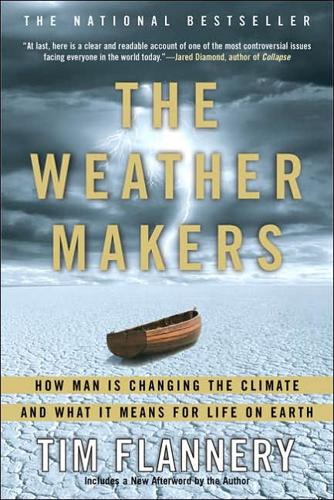
The Weather Makers: How Man Is Changing the Climate and What It Means for Life on Earth
by
Tim Flannery
Published 10 Jan 2001
Fifty years later, hundreds of them were at work in mines across the nation, and England’s coal production had grown to 6 million tonnes per year. The ingenious James Watt improved on Newcomen’s design and, with the assistance of his able business partner Matthew Boulton, created a market for a new, improved steam engine. Boulton never doubted the enormous potential of his business. When George III asked him how he made his living, he replied, ‘I am engaged, your Majesty, in the production of a commodity which is the desire of kings.’ When the King asked what he meant, Boulton simply said, ‘Power, your Majesty.’4 In 1784 Watt’s associate and friend William Murdoch produced the first mobile steam engine, transforming coal into a transport fuel, and from that moment on it was clear that the new century—the nineteenth—was to be the century of coal.
…
Pursuing wind and solar technologies, on the other hand, opens the possibility that people will generate most of their own power, transport fuel and even water (by condensing it from the air). If we follow this second path, we will have opened a door to a world the likes of which have not been seen since the days of James Watt, when a single fuel powered transport, industrial and domestic needs alike, the big difference being that the fuel will be generated not by large corporations, but by every one of us. THIRTY-ONE OF HYBRIDS, MINICATS AND CONTRAILS What is it that roareth thus? Can it be a Motor Bus? Yes, the smell and hideous hum Indicat Motorem Bum… How shall wretches live like us Cincti Bis Motoribus?
…
Despite the attraction they may have held for Scandinavians and others afflicted by hard winters, his ideas were soon forgotten. Yet quietly, and without a systematic plan, industry was performing Arrhenius’s bidding and increasing the amount of coal burned. Regardless of these advances climatologists seemed uninterested in the role greenhouse gases play in determining climate. Then in 1938 a steam engineer named Guy Callendar addressed the Royal Meteorological Society in London on the subject. Callendar had an amateur interest in climate trends, and his thorough compilation of statistics, he believed (correctly as it turned out), showed that the world was warming. Moreover, he announced that he knew the cause—the burning of coal and other fossil fuels in industrial machines.7 Unfortunately, Callendar’s prescient study was dismissed by the academicians as the dabbling of an amateur, and soon after the warming trend went into reverse, bringing a temporary end to this line of inquiry.
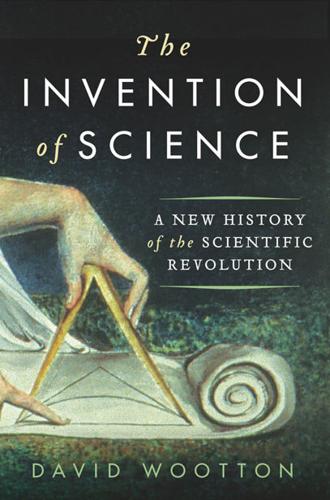
The Invention of Science: A New History of the Scientific Revolution
by
David Wootton
Published 7 Dec 2015
The fact that the outcome of the Scientific Revolution as a whole was not foreseen or sought by any of the participants does not make it any the less a revolution – but it does mean it was not a neat epistemological break of the sort described by Koyré.vii So, too, when first Thomas Newcomen (1711) and then James Watt (1769) invented powerful new steam engines, neither foresaw that the age of steam would see the construction of a great railway system girdling the Earth – the first public steam railway did not open until 1825. It is this sort of revolution, a revolution of unintended consequences and unforeseen outcomes, that Butterfield intended to evoke by the term ‘the Scientific Revolution’.
…
Between the recognition that the Torricellian tube is a pressure gauge and the invention of the atmospheric steam engine there was no intervention of an extraneous factor. Boyle’s law was a natural development of Pascal’s Puy de Dôme experiment, and the atmospheric steam engine was a natural development of Boyle’s law (even if the technical problem of building an engine that worked was considerable). Torricelli did not for a moment imagine the steam engine, any more than Columbus imagined America; the path that led from the barometer to the steam engine was not as straight or as short as the path that led from Palos de la Frontera to the Bahamas; but the path was there, waiting to be found.
…
A key case-study was provided by Watt’s steam engine (1765). Watt developed his new engine in Glasgow, where Joseph Black had proposed the concept of latent heat (c.1750). Black later collaborated with Watt and invested in his new engine. Was Watt familiar with the concept of latent heat when he devised his new engine, and did the new theory inform his new technology? He insisted that he was not, and historians came (almost reluctantly) to take him at his word.7 Lawrence Joseph Henderson is frequently quoted as saying (apparently in 1917), ‘Science owes more to the steam engine than the steam engine owes to science.’8 After all, Sadi Carnot finally produced a satisfactory theory of the steam engine only in 1824, more than a hundred years after Newcomen’s first engine, and sixty years after Watt’s.

The God Species: Saving the Planet in the Age of Humans
by
Mark Lynas
Published 3 Oct 2011
Our mastery of fire was a product of the adaptability and innovativeness with which evolution had already equipped us long before, and that no other species had heretofore possessed. Humanity’s Great Leap Forward was not about evolution, but adaptation—and could therefore move a thousand times faster. I don’t want to oversimplify: The Stone Age did not end in 1764 with James Watt’s invention of the steam engine. Clearly great leaps in human behavior and organization took place over preceding millennia with the advent of language, trade, agriculture, cities, writing, and the myriad other innovations in production and communications that laid the foundations for humanity’s industrial emergence.
…
This new boundary is the acidification of the world’s oceans, which, as they absorb the carbon dioxide released by human burning of fossil fuels, are gradually turning more hostile to many forms of marine life. Homo sapiens currently releases 10 billion tonnes of carbon per year—a million tonnes every hour. Since James Watt’s invention of the steam engine in 1784, humans have released more than half a trillion tonnes of carbon from geological safe storage underground into the atmosphere.1 Up to 85 percent of this liberated carbon, somewhere between 340 and 420 billion tonnes, has soaked into the oceans.2 This is a stroke of luck for us, because rates of greenhouse warming are sharply reduced as a result: Were the oceans not performing this free service, the Earth’s temperature would be rising at double or triple today’s rate.

Tesla: Inventor of the Electrical Age
by
W. Bernard Carlson
Published 11 May 2013
The lesson to be drawn from Tesla and Peck is that we need to understand and appreciate how inventors and entrepreneurs forge relationships that foster a balance between imagination and analysis: the businessperson “grounds” the inventor’s dreams in existing business practices and expectations but at the same time the inventor “inspires” the businessperson to see new possibilities in the technology. Alexander Graham Bell had this sort of relationship with his father-in-law, Gardiner Hubbard, as did Thomas Edison with William Orton of Western Union, but we should ask the same questions about the relationship between steam-engine pioneers James Watt and Matthew Boulton or Steve Wozniak and Steve Jobs with Mike Markula in the early days of Apple Computer.22 For ideas to become disruptive technology, inventors must balance imagination and analysis not only in their own minds but also in relationships with their backers. In thinking about how inventors interact with their backers, it’s now time to turn from ideals to illusions.
…
Moreover, the oscillations produced were completely isochronous, so much so that Tesla boasted that they could be used to run a clock.13 Tesla called this new machine his oscillator and he filed patent applications covering several versions in August and December 1893. He unveiled this new invention in a lecture he gave at the Chicago World’s Fair.14 FIGURE 10.2. Tesla’s oscillator, or combination steam engine and generator. This device consisted of three units: a generator at the top, an air spring in the middle, and a steam engine at the bottom. All three units were connected to the shaft that runs up the middle. When steam (or compressed air) was introduced into the cylinder of the steam engine, a piston on the main shaft moved upward and pushed a second wider piston, constituting an air spring. The air compressed behind this wider piston created a cushion which eventually pushed back on both pistons, thus reversing the motion of main shaft (center).
…
Because of the low price of coal in Buffalo, Westinghouse was dubious that electric power could compete with steam power in that city. Also aware that factory owners might balk at the cost of replacing their existing steam engines with electric motors, Westinghouse recommended transmitting power via a compressed-air pipeline. Westinghouse was knowledgeable about compressed air since he used it in his railway air brakes, and he suggested to Adams that compressed air could power existing steam engines. In general, Westinghouse was concerned that Adams was underestimating the problems of finding enough customers for all the power generated by the falls.18 Faced with a medley of opinions about power transmission, Adams consulted with engineers in England, Germany, and Switzerland.
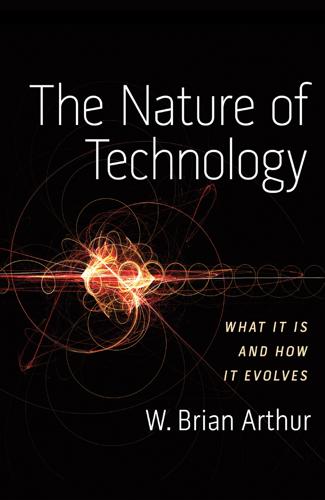
The Nature of Technology
by
W. Brian Arthur
Published 6 Aug 2009
Usually several decades lie between the coming of enabling technologies that bring a new domain into being and the domain’s full impact. The enabling technologies of electrification, the electric motor and generator, arrived in the 1870s, but their full effects on industry were not felt until well into the 1910s and 1920s. James Watt’s steam engine was developed in the 1760s, but steam power did not come into prevalent use until the 1820s. In more modern times, the enabling technologies of digitization, the microprocessor and the Arpanet (the forerunner of the Internet), were available by the early 1970s; but again, their impact in digitizing the economy has still not been fully realized.
…
If you woke some morning and found that by some odd magic the technologies that have appeared in the last six hundred years had suddenly vanished: if you found that your toilet and stove and computer and automobile had disappeared, and along with these, steel and concrete buildings, mass production, public hygiene, the steam engine, modern agriculture, the joint stock company, and the printing press, you would find that our modern world had also disappeared. You—or we, if this strange happening befell all of us—would still be left with our ideas and culture, and with our children and spouses. And we would still have technologies.
…
We also feel vaguely that because we have created technology, we already understand it. And there is another reason. The people who have thought hardest about the general questions of technology have mostly been social scientists and philosophers, and understandably they have tended to view technology from the outside as stand-alone objects. There is the steam engine, the railroad, the Bessemer process, the dynamo, and each of these is a boxed-up object with no visible insides—a black box, to use economic historian Nathan Rosenberg’s term. Seeing technologies this way, from the outside, works well enough if we want to know how technologies enter the economy and spread within it.

Firepower: How Weapons Shaped Warfare
by
Paul Lockhart
Published 15 Mar 2021
Hence a nation’s industrial output was just as important as its ability to recruit or conscript manpower, and a nation’s labor force was just as vital to victory as were its men on the front lines. Industrial power equaled military might. Second, the Industrial Revolution was also a transportation and communications revolution. The steam engines patented by Thomas Newcomen and James Watt later in the eighteenth century helped to fuel, quite literally, the growth of industry in Britain. Steam engines made it possible to power factory machinery without direct access to moving water and hydrokinetic energy. Soon steam engines propelled cargo vessels and warships, and then an entirely new kind of land transportation: the railroad. Industry gave birth to the steamship and the railroad, and the steamship and the railroad in turn bolstered industry.
…
Steamboats were pricey things, and it wasn’t immediately obvious that they held any commercial potential—the main motivator for innovation in the industrial age. Their power plants and their fuel load took up too much cargo space. Plus they were slow, unreliable, noisy, sooty, and, well, weird. But James Watt’s smaller, more efficient steam engine (1776) ameliorated most of these issues. It was far better suited to maritime purposes than Newcomen’s had been. In Scotland, William Symington used a Watt engine to power his ship Charlotte Dundas (1803); in the United States, Robert Fulton’s North River Steamboat, more familiar as the Clermont, was also powered by a Watt.
…
Steam power made armored and iron-hulled ships possible; the shell gun made them necessary. But steam power came first, and its potential for travel by water was tested before it was first successfully applied to land-based locomotion. That realization—that the steam engine could be applied to water transportation—came right on the heels of the invention of the steam engine itself. Thomas Newcomen patented his “atmospheric engine,” designed to pump water out of flooded subterranean mines, around 1712; the first patents for steamboats that used the Newcomen engine as a means of propulsion were issued in the 1720s.

Fully Automated Luxury Communism
by
Aaron Bastani
Published 10 Jun 2019
The general-purpose technology on which this was based was steam power, the first commercial application of which was Thomas Newcomen’s 1712 atmospheric engine. And yet it wasn’t until the closing decades of the century that capturing the power of steam proved transformational. While the steam engine was not a new creation, an improved version designed by James Watt turned it from a tool of marginal use to the focal point of what became the Industrial Revolution. Just as with agriculture twelve thousand years earlier, this was a shift so big that there was no reverse gear. The consequences of all of this were extraordinary.
…
Yes, there was progress, as civilisations emerged and empires conquered, but fundamentally, the same sources of light, energy and warmth were available five thousand years ago as five hundred years ago. Life expectancy depended more on geography, social status and war than on technology and, until the last few centuries, most people’s ‘work’ involved subsistence agriculture. Then, around the middle of the eighteenth century, a new transformation began. The steam engine – along with coal – became the backbone of the Industrial Revolution and the first machine age. While it had taken all of recorded history for the world’s human population to reach 1 billion, it would take little more than a century to double once more. Now, new vistas of abundance opened up, with extended life expectancy, near-universal literacy, and increased production of just about everything.
…
Information Unbound: The Third Disruption This tendency to perpetually innovate as a result of competition, to constantly supplant work performed by humans and maximise productivity, would ultimately lead to a Third Disruption, one whose fullest conclusions are no less dizzying than the two which preceded it. This Third Disruption has already started, with evidence of its arrival all around us. As with the Second Disruption its basis is a general-purpose technology: the modern transistor and integrated circuit, contemporary analogues to Watt’s steam engine over two centuries ago. While the Second Disruption was marked by a relative freedom from scarcity in motive power – coal and oil rather than muscle and wind moving wheels, pulleys, ships, people and goods – the defining feature of the Third Disruption is ever-greater abundance in information.
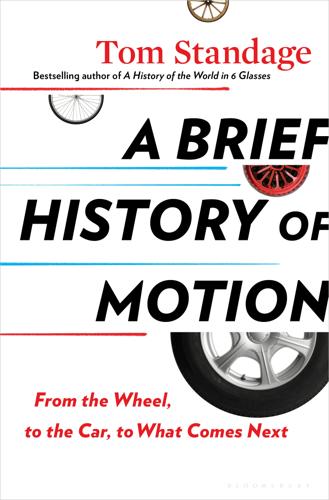
A Brief History of Motion: From the Wheel, to the Car, to What Comes Next
by
Tom Standage
Published 16 Aug 2021
The idea of steam power was known to the ancient Greeks, but practical devices that exploited steam power to do useful work first emerged in the eighteenth century. The stationary steam engine constructed by the English inventor Thomas Newcomen in 1712, building on the work of previous experimenters, was used to pump water out of flooded coal mines. Early steam engines were large (Newcomen engines were typically housed in buildings three stories tall) and inefficient, but this did not matter much because they were powered by coal, and being next to a coal mine meant the fuel was available in abundance. Over the following decades Newcomen’s design was improved by successive inventors, notably by James Watt, a Scottish engineer who was asked to repair a Newcomen engine in 1763 and quickly saw how its wasteful design could be improved upon.
…
His addition of a separate condensing chamber reduced the amount of heat lost during operation, greatly improving efficiency: Watt’s steam engine used half as much coal as a comparable Newcomen engine. Just as important, Watt modified his engine to produce rotary motion, rather than the back-and-forth pumping action of a Newcomen engine, which allowed Watt’s engine to be used to drive machinery of various kinds in the emerging factories and mills of the industrial revolution. Such machinery had previously been driven by waterwheels, and Watt’s steam engine meant factories no longer had to be located next to rivers, as long as coal was available. His improved design also accelerated efforts to develop steam engines that were small enough to drive a wheeled vehicle.
…
The steam-powered artillery carriage built by Nicolas-Joseph Cugnot, a French inventor, in 1769. Swiveling the front wheel involved moving the entire mechanism of the steam engine, making the vehicle difficult to control. Richard Trevithick, a British inventor, took a different approach with the vehicle he built in 1801. It was a steam engine mounted on four wheels, the rear ones being driven by the reciprocating motion of a piston, with smaller front wheels controlled by a tiller for steering. This machine made its maiden run up Camborne Hill in Cornwall on December 24, 1801, with Trevithick operating the steam engine, his associate Andrew Vivian handling the steering, and five or six other men hanging on to small platforms at the back and front of the vehicle.
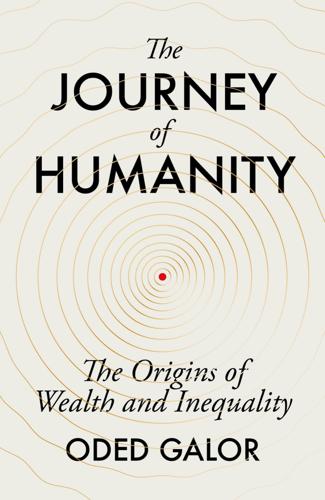
The Journey of Humanity: The Origins of Wealth and Inequality
by
Oded Galor
Published 22 Mar 2022
Nonetheless, one of the most important inventions of the period was indeed an industrialising one. The steam engine, designed by the British ironmonger Thomas Newcomen, entered commercial use in 1712. It had a fairly simple and banal purpose: to pump water out of coal mines – a complex task that demanded a significant workforce back in the eighteenth century. This novel technology was further advanced in the years 1763–75 by the Scottish engineer James Watt, who adapted the engines for the operation of factory machinery, proliferating its commercial use. The repetitive operation of the steam engine might seem as uninspiring as the content of the first written documents in human history – Sumerian tablets recording ordinary business deals and tax rates, around 3400 BCE.
…
Geographical distance from Fresnes-sur-Escaut could therefore predict the relative presence of steam engines in each region. In other words, while the actual number of steam engines in any place may have been affected by the pre-existing level of education in that département and other potential confounders, distance from Fresnes-sur-Escaut can be used to assess the potential causal impact of technology on education because it (a) directly predicts the presence of steam engines, (b) cannot be affected by pre-existing levels of education or indeed by other confounders and (c) has no direct effect on the level of education, only an indirect one through its impact on the number of steam engines.
…
In order to establish a line of causality between technological acceleration and industrialisation on the one hand and human capital formation on the other, we can refer to a quasi-natural historical experiment. In France, the steam engine – one of the most important inventions in the early stages of the Industrial Revolution – was first introduced in a mine in Fresnes-sur-Escaut, a sleepy village near the French–Belgian border. Evidence suggests that, due to the regional diffusion of this novel technology, over the course of the mid-nineteenth century the closer a local region or département (an administrative unit created in 1790) was to this village, the more rapidly it adopted the steam engine for itself. Geographical distance from Fresnes-sur-Escaut could therefore predict the relative presence of steam engines in each region.
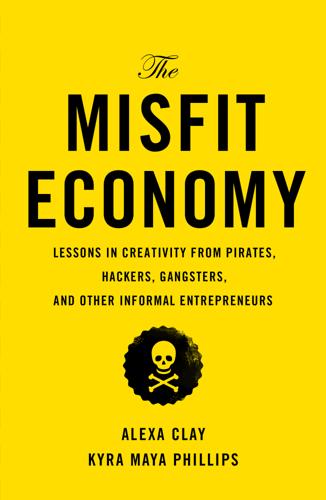
The Misfit Economy: Lessons in Creativity From Pirates, Hackers, Gangsters and Other Informal Entrepreneurs
by
Alexa Clay
and
Kyra Maya Phillips
Published 23 Jun 2015
While it seems contrary to share intellectual property, in the case of the steel industry, Allen writes, “collective invention spread costs among the firms in the industry.”13 Given the economic constraints of many small businesses in today’s economy, this concept sounds far more prudent than far-fetched. As relayed in Charlie Leadbeater’s book, We-Think, the tin and copper mines in Cornwall, in the southwest of England, provide another example of how industries can succeed through the dissemination of intellectual property. To make the process of mining easier and safer, James Watt invented the now-well-known “Watt engine,” a design that cut down the amount of coal required by two thirds.14 Watt marketed and sold the engine with his partner, Matthew Boulton, spreading the innovation within the Cornish mining industry. The inventors patented their design and decided to charge mine owners a royalty.
…
If an idea is “in the air” and capable of being thought of by many, can it be owned by anyone? INVENTION IS COLLECTIVE The term “collective invention” was popularized by economic historian Robert C. Allen in writing about one of the most mainstream, formal-market industries: steel. With steam engine technology, there were a plethora of firms eager to exchange information, practices, techniques, and designs, to the extent that no single inventor was responsible for major innovations in the steel sector. As Allen states with reference to the blast furnace industry in England: If one examines a sector like the blast furnace industry and determines the inventions whose diffusion were important for the growth in efficiency, it proves impossible to attribute their discovery to any single inventor.
…
They felt that the itch to invent was inborn. In a nod to collective innovation, they didn’t feel that any one inventor could or should claim credit or royalties when “there is no need to reward him who might be lucky enough to be the first to hit on the thing required.”20 Arriving at the invention of the steam engine or the cotton gin was attributed to right time, right place. If you hadn’t done it, well, someone else would have. You just got there first. It seems, then, that the patent system has always been an instrument of extraction, a collusion between the wealthy and their government. Historian Adrian Johns notes in his book Piracy: The Intellectual Property Wars from Gutenberg to Gates that these same anti-patent Englishmen felt that lower-class inventors were “hopeless in the face of big capital” due to the cost of patent fees, which in 1860 ranged from £100 to £120 (around $585), or approximately four times per capita income.
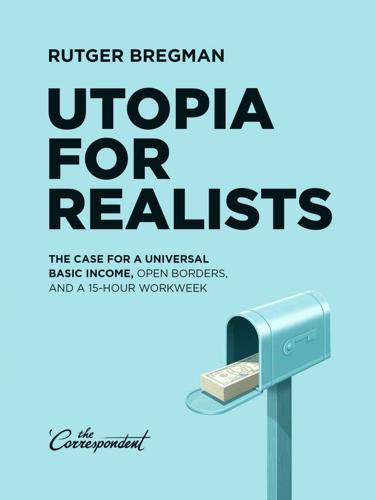
Utopia for Realists: The Case for a Universal Basic Income, Open Borders, and a 15-Hour Workweek
by
Rutger Bregman
Published 13 Sep 2014
“‘Quiz show contestant’ may be the first job made redundant by Watson,” Jennings observed, “but I’m sure it won’t be the last.”22 The new generations of robots are proxies not only for our muscle power, but for our mental capacity, too. Welcome, my friends, to the Second Machine Age, as this brave new world of chips and algorithms is already being called. The first began with the Scottish inventor James Watt, who during a stroll in 1765 came up with an idea for improving the efficiency of the steam engine. It being a Sunday, the pious Watt had to wait another day before putting his idea into action, but by 1776, he’d built a machine able to pump 60 feet of water out of a mine in just 60 minutes.23 At a time when nearly everyone, everywhere was still poor, hungry, dirty, afraid, stupid, sick, and ugly – the line of technological development began to curve.
…
Whereas in 1800, water power still supplied England with three times the amount of energy as steam, 70 years later English steam engines were generating the power equivalent of 40 million grown men.24 Machine power was replacing muscle power on a massive scale. Now, two centuries later, our brains are next. And it’s high time, too. “You can see the computer age everywhere but in the productivity statistics,” the economist Bob Solow said in 1987. Computers could already do some pretty neat things, but their economic impact was minimal. Like the steam engine, the computer needed time to, well, gather steam. Or compare it to electricity: All the major technological innovations happened in the 1870s, but it wasn’t until around 1920 that most factories actually switched to electric power.25 Fast forward to today, and chips are doing things that even ten years ago were still deemed impossible.
…
Indeed, ever more countries are arriving in the “Land of Plenty,” at the top right of the diagram, where the average income now tops $20,000 and life expectancy is over 75. Source: Gapminder.org Historians estimate that the average annual income in Italy around the year 1300 was roughly $1,600. Some 600 years later – after Columbus, Galileo, Newton, the scientific revolution, the Reformation and the Enlightenment, the invention of gunpowder, printing, and the steam engine – it was… still $1,600.3 Six hundred years of civilization, and the average Italian was pretty much where he’d always been. It was not until about 1880, right around the time Alexander Graham Bell invented the telephone, Thomas Edison patented his lightbulb, Carl Benz was tinkering with his first car, and Josephine Cochrane was ruminating on what may just be the most brilliant idea ever – the dishwasher – that our Italian peasant got swept up in the march of progress.
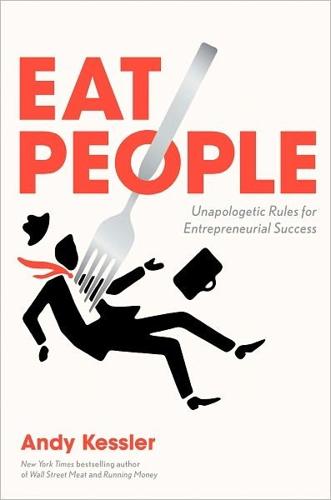
Eat People: And Other Unapologetic Rules for Game-Changing Entrepreneurs
by
Andy Kessler
Published 1 Feb 2011
The profit motive has been a giant carrot for centuries and is what drives innovation and productivity, which (you should know by now!) creates increased living standards and wealth. I spent pages and pages of my book How We Got Here on James Watt, a University of Glasgow flunky who studied latent heat and tinkered for years until he came up with a more efficient steam engine, selling off two thirds of his future invention to venture capitalist Matthew Boulton in exchange for capital to fund his work. The whole thing was a profit deal! Watt’s steam engine was originally built to pump water out of flooded mines, replacing horses that would walk around in circles running a manual pump. Boulton and Watt charged one third of the annual costs of the horses mine owners no longer needed.
…
The best advice is to go upstream. I wrote about an old upstream story in my book How We Got Here, which incidentally was both sold and given away free off my Web site—and still is! British clergyman and businessman Edmund Cartwright figured out that he could use cheap power from water wheels and steam engines to run looms, getting rid of the expensive people who then operated them. He knew that once Richard Arkwright’s patent on cotton spinning expired, there would be a flood of producers turning out ever cheaper yarn. Yeah, yeah, not quite zero marginal cost, but thread and yarn did get so incredibly cheap the cost might as well have been zero.
…
Boulton and Watt charged one third of the annual costs of the horses mine owners no longer needed. They all gladly, uh, ponied up. A few horses were out of a job, and a lot more miners were hired. But Boulton and Watt plowed their profits back into scores of innovations and their steam engine ended up powering jennies and yarn pullers and looms, displacing entire villages of cottage workers, who later were employed in the very manufactories that eliminated their jobs. Say what you will about industrialization and soot and Mary Poppins chimney sweeps, the life expectancy in England doubled from 1800 to 1900 and then doubled again by 2000.

On the Slow Train Again
by
Michael Williams
Published 7 Apr 2011
For steam enthusiasts the site of the former Lostock Hall Engine Shed is the equivalent of the hallowed turf of Lords, Wembley, Anfield and Old Trafford rolled together. This was the depot that supplied the motive power for the last-ever steam trains in normal service, bringing to an end an epic era that began with James Watt, George Stephenson, Richard Trevithick and Timothy Hackworth. Even today, getting on for half a century later, many have never got over it. A poignant notice that until recently was pinned to the wire outside the derelict site, next to a drooping cellophane-wrapped bunch of red lilies, said it all: IN MEMORIAM.
…
And how many departures from city stations have been celebrated in classics of children’s literature? A journey beginning at Norwich Thorpe station was the introduction to Dick and Dorothea Callum’s Broadland holiday adventure in Arthur Ransome’s 1934 novel Coot Club. It might have been a proud LNER Sandringham Class steam engine on the front in those days, but the scene is the same today. ‘They crossed a bridge,’ wrote Ransome, ‘and there was the river on both sides of the line, the old river on the left curving round by the village of Thorpe with crowds of yachts and cabin cruisers tied up under the gardens.’ There’s a carnival atmosphere on the train this afternoon, as we rattle north over the points at Whitlingham Junction.
…
Just that sentence can make an English person over 40 fall silent with the memory of what has become a golden fantasy of an idealised England: the comfortable dusty coaches rolling through the low woods, the sun gilding the green leaves and striking through the carriage windows; the breeze tickling the hot flowers in the fields, birdsong and the thump of a powerful locomotive; the pleasant creak of the wood panelling on the coach; the mingled smells of fresh grass and coal smoke … All very well, you might say, so where’s the steam engine? Well, one will be along tomorrow, pulling four special trains up and down the line on its special double birthday – 175 years of the mighty Great Western and 150 years of the little branch to Looe. As we nudge up to the buffers at Looe’s tiny single platform, I think of how close we got to losing it.

Reinventing Capitalism in the Age of Big Data
by
Viktor Mayer-Schönberger
and
Thomas Ramge
Published 27 Feb 2018
It’s the same rationale that, from time immemorial, has led firms to supplant humans with machines, from the steam engine to the factory robot. The strategy predates the Industrial Revolution. And it was well before the windmill replaced humans grinding grains and the printing press supplanted scribes. In fact, the ancient invention (or perhaps discovery) of the wheel itself enabled cargoes to be transported much more efficiently than through human carriage. The strategy to favor machines over humans gathered speed with the introduction of John Kay’s flying shuttle and James Watt’s steam engine in the eighteenth century. Initially, machines often were only marginally more efficient.
…
A delicate give-and-take is essential to achieving the goal, as has been the case for generations of castellers. Despite the importance of the moments when humans first tamed fire, invented the wheel, or developed the steam engine, these discoveries and inventions pale compared to our human ability to coordinate. Without coordination, a flame would not warm more than one human being; the wheel could not transport but a single individual; and the steam engine would have no tracks to roll on and no factory to operate in. If there is a single crucial thread that has persisted through human history, it is the importance of coordination, whether our aim is to build a castell or a country.
…
Profitability depends on setting premiums at the right level and assessing claims efficiently, but these decisions, although fairly straightforward, weren’t standardized enough to have been easily automated until sophisticated data-driven machines like Watson arrived. In that sense, insurance today is like steel production before the invention of Watt’s steam engine. Fukoku’s strategy to start automating these clerical decision processes is likely to pay off nicely. Installing Watson cost the company $1.7 million in up-front investment. Yearly maintenance is estimated to be around $130,000, and the company aims to save roughly $1.1 million per year on salaries.

The Zero Marginal Cost Society: The Internet of Things, the Collaborative Commons, and the Eclipse of Capitalism
by
Jeremy Rifkin
Published 31 Mar 2014
A Coal-Powered Steam Infrastructure In 1769, James Watt invented and patented the modern steam engine powered by coal.7 The cotton industry became the first to deploy the new technology. The productivity gains were dramatic. Between 1787 and 1840, British cotton production “jumped from 22 million to 366 million pounds” while the cost of production plunged. By 1850, coal-powered steam engines could be found across Europe and America. Still, as late as 1848—the year of the great European revolutions—hydraulic power “accounted for two and a half times more power than steam engines” in France. Hydraulic energy continued to be used in more French factories than coal-fired steam technology.
…
Maurice Dobb, Studies in the Development of Capitalism (New York: International Publishers, 1947), 143. 3. Adam Smith, An Inquiry into the Nature and Causes of the Wealth of Nations (Edinburgh: Thomas Nelson, 1843), 20. 4. Ibid. 5. Ibid., 21. 6. Ibid., 22. 7. Carl Lira, “Biography of James Watt,” May 21, 2013, http://www.egr.msu.edu/~lira/supp/steam /wattbio.html (accessed January 7, 2014). 8. Jean-Claude Debeir, Jean-Paul Deléage, and Daniel Hémery, In the Servitude of Power: Energy and Civilization through the Ages (London: Zed Books, 1992), 101–104. 9. Eric J. Hobsbawm, The Age of Capital, 1848–1875 (New York: Charles Scribner’s Sons, 1975), 40. 10.
…
For an increasing number for young people, the emerging social economy on the Commons offers greater potential opportunity for self-development and promises more intense psychic rewards than traditional employment in the capitalist marketplace. (The migration of employment from the capitalist market economy to the social economy on the Collaborative Commons will be addressed more fully in chapter 14.) If the steam engine freed human beings from feudal bondage to pursue material self-interest in the capitalist marketplace, the Internet of Things frees human beings from the market economy to pursue nonmaterial shared interests on the Collaborative Commons. Many—but not all—of our basic material needs will be met for nearly free in a near zero marginal cost society.

The Second Machine Age: Work, Progress, and Prosperity in a Time of Brilliant Technologies
by
Erik Brynjolfsson
and
Andrew McAfee
Published 20 Jan 2014
So you’ve most likely figured out that these technological developments underlie the sudden, sharp, and sustained jump in human progress. If so, your guess is exactly right. And we can be even more precise about which technology was most important. It was the steam engine or, to be more precise, one developed and improved by James Watt and his colleagues in the second half of the eighteenth century. Prior to Watt, steam engines were highly inefficient, harnessing only about one percent of the energy released by burning coal. Watt’s brilliant tinkering between 1765 and 1776 increased this more than threefold.9 As Morris writes, this made all the difference: “Even though [the steam] revolution took several decades to unfold . . . it was nonetheless the biggest and fastest transformation in the entire history of the world.”10 The Industrial Revolution, of course, is not only the story of steam power, but steam started it all.
…
Paul David, an economic historian at Stanford University and the University of Oxford, examined the records of American factories when they first electrified and found that they often retained a similar layout and organization to those that were powered by steam engines.9 In a steam engine–driven plant, power was transmitted via a large central axle, which in turn drove a series of pulleys, gears, and smaller crankshafts. If the axle was too long the torsion involved would break it, so machines needed to be clustered near the main power source, with those requiring the most power positioned closest. Exploiting all three dimensions, industrial engineers put equipment on floors above and below the central steam engines to minimize the distances involved. Years later, when that hallowed GPT electricity replaced the steam engine, engineers simply bought the largest electric motors they could find and stuck them where the steam engines used to be.
…
Now comes the second machine age. Computers and other digital advances are doing for mental power—the ability to use our brains to understand and shape our environments—what the steam engine and its descendants did for muscle power. They’re allowing us to blow past previous limitations and taking us into new territory. How exactly this transition will play out remains unknown, but whether or not the new machine age bends the curve as dramatically as Watt’s steam engine, it is a very big deal indeed. This book explains how and why. For now, a very short and simple answer: mental power is at least as important for progress and development—for mastering our physical and intellectual environment to get things done—as physical power.
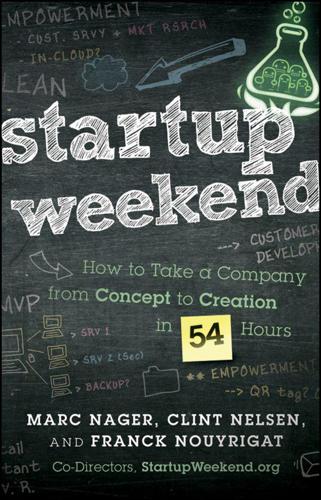
Startup Weekend: How to Take a Company From Concept to Creation in 54 Hours
by
Marc Nager
,
Clint Nelsen
and
Franck Nouyrigat
Published 8 Nov 2011
It will spread to the enterprise, and ultimately, to every other business segment. When It's Darkest, We See the Stars What does it mean that we are at the cusp of a revolution as important as the scientific and industrial ones? Revolutions are not obvious when they are happening. When James Watt launched the Industrial Revolution with the invention of the steam engine in 1775, no one said, “This is the day everything changes.” When Karl Benz drove around Mannheim in 1885, no one said, “There will be 500 million of these driving around in a century.” And certainly in 1958, when Noyce and Kilby invented the integrated circuit, the notion of a quintillion (10 to the 18th power) transistors being produced each year seemed ludicrous.
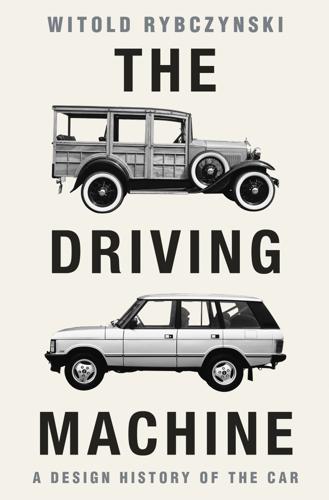
The Driving Machine: A Design History of the Car
by
Witold Rybczynski
Published 8 Oct 2024
At the time that Egger and Lohner started their project, it was far from clear which motive power was best suited to the automobile: steam, gas-fired internal combustion, or electricity. Many argued for steam, which had the advantage of being a tried and true technology—after all, James Watt’s steam engine dated from 1776—and steam had been used to power tractors, omnibuses, and fire trucks since the mid-nineteenth century. Not only were steam engines safe and reliable, and mechanically straightforward, but steam could be produced by burning kerosene, which—unlike gasoline—was widely available. One of the pioneers was the Frenchman Amédée Bollée (1844–1917), whose steam-powered omnibus, called L’Obéissante (the Obedient One), could carry twelve passengers.
…
It took him eighteen hours to make the 150-mile journey, with stops for meals, for replenishing the boiler, and not least for speeding tickets (the vehicle had a top speed of twenty-five miles per hour), although the fines were rescinded following Bollée’s triumphant arrival in Paris. The disadvantage of a steam-powered vehicle was the heavy boiler, which needed constant attention, and the external combustion steam engine, which was considerably less efficient than an internal combustion gasoline-powered engine. What is widely considered the world’s first successful internal combustion–engine motorcar was built by Carl Benz (1844–1929) in 1885. The vehicle resembled a large tricycle: the padded bench was supported on a tubular-steel frame, and the three wire-spoked wheels had solid rubber tires.

The Wood Age: How One Material Shaped the Whole of Human History
by
Roland Ennos
Published 18 Feb 2021
These guns alone would have used around twenty-five thousand tons of iron; this would have been a year’s production in 1700. John Wilkinson’s new boring tool also helped develop another invention of the industrial revolution that enabled even more coal to be used: the steam engine. In 1765, James Watt had patented the invention that was to dramatically improve the efficiency of steam engines and turn Newcomen’s atmospheric engine into a workable power plant. Watt devised a separate condenser to remove steam from the cylinder and create a vacuum to drag the piston down without actually cooling the cylinder and wasting heat. Watt’s problem was that he could not make the cylinders of this engine perfect enough to be airtight; steam continually leaked out of them, wasting heat and power.
…
Watt’s problem was that he could not make the cylinders of this engine perfect enough to be airtight; steam continually leaked out of them, wasting heat and power. The problem was quickly overcome by Wilkinson, who had ordered two steam engines from Watt. Wilkinson simply used his cannon-boring technique to cut a perfectly circular cylindrical hole through a solid iron block, to create the smooth inner surface of the cylinder, which allowed the piston to fit snugly inside the cylinder and move freely up and down. The major technical difficulty in making steam engines had been overcome. It is hard to overestimate the importance of this development. Engines designed by Watt, built by the firm of Boulton and Watt, and with cylinders cut by Wilkinson were soon being shipped in their hundreds across Britain and the Continent.
…
Although full of pretentious literary allusions and passages of whimsy, Sylva sought to bring together all that was known about the types of trees in the country and how they were grown and exploited. From the late seventeenth century onward, therefore, technological information became widely available, with rapid benefits to material progress. Perhaps the most important invention to spring from this first flowering of applied science was the steam engine. The ever-expanding demand for coal had put the mining industry under increasing pressure. Miners were forced to dig ever-deeper underground to obtain the coal, and they soon ran into problems with flooding. The water levels in mines were traditionally lowered by cutting shafts or soughs that let water drain to outlets on the seashore or along the banks of rivers, but this technique could not, of course, drain mines below sea level.
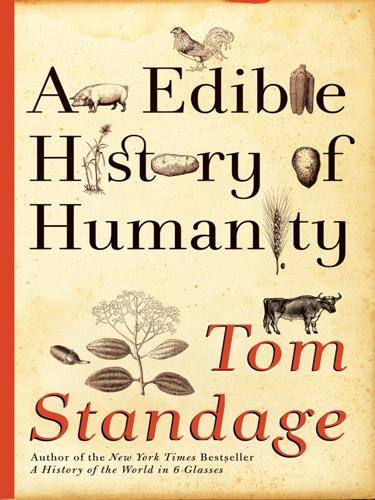
An Edible History of Humanity
by
Tom Standage
Published 30 Jun 2009
Coal enabled a rapid expansion in the production of iron and steel, which had previously been smelted using wood. And, of course, coal was used to power steam engines, a technology that emerged from the coal industry itself. Once England’s outcropping surface deposits of coal had been depleted, it was necessary to sink mine shafts, and to ever greater depths—but the deeper they went, the more likely they were to flood with water. The steam engine invented by Thomas Newcomen in 1712, building on the work of previous experimenters, was built specifically to pump water out of flooded mines. Early steam engines were very inefficient, but this did not matter very much since they were powered by coal—and in a coal mine the fuel was, in effect, free.
…
Early steam engines were very inefficient, but this did not matter very much since they were powered by coal—and in a coal mine the fuel was, in effect, free. Hundreds of Newcomen engines had been installed in mines around England by 1800. The next step was taken by James Watt, a Scottish inventor who was asked to repair a Newcomen engine in 1763 and quickly realized how its wasteful design could be improved upon. His design, completed in 1775, was much more efficient and was also better suited to driving machinery. This meant steam power could be applied to the various laborsaving devices that had been devised in the textile industry, providing an enormous increase in productivity.
…
Sullivan Typeset by Westchester Book Group Printed in the United States of America by Quebecor World Fairfield To Kirstin, my partner in food—and everything else CONTENTS INTRODUCTION Ingredients of the Past PART I THE EDIBLE FOUNDATIONS OF CIVILIZATION 1 The Invention of Farming 2 The Roots of Modernity PART II FOOD AND SOCIAL STRUCTURE 3 Food, Wealth, and Power 4 Follow the Food PART III GLOBAL HIGHWAYS OF FOOD 5 Splinters of Paradise 6 Seeds of Empire PART IV FOOD, ENERGY, AND INDUSTRIALIZATION 7 New World, New Foods 8 The Steam Engine and the Potato PART V FOOD AS A WEAPON 9 The Fuel of War 10 Food Fight PART VI FOOD, POPULATION, AND DEVELOPMENT 11 Feeding the World 12 Paradoxes of Plenty EPILOGUE Ingredients of the Future ACKNOWLEDGMENTS NOTES SOURCES INTRODUCTION INGREDIENTS OF THE PAST There is no history of mankind, there are only many histories of all kinds of aspects of human life.

Owning the Earth: The Transforming History of Land Ownership
by
Andro Linklater
Published 12 Nov 2013
Richard Arkwright, who in 1775 built and patented a water-powered frame for carding cotton and spinning it into long, tough thread, spent an estimated £2,200 in four years in unsuccessful attempts to defend his patent. Despite winning some cases, John Kaye found that every woollen manufacturer who pirated his patented flying shuttle had banded together to fight his claims for compensation, until the expense forced him to give up. Even James Watt, the canniest of patent holders, worried constantly about whether the risk of allowing competitors to build variants of his improved steam engine, outweighed the danger, if he went to court, of the judge removing his numerous patents altogether because of their inadequate specifications. “We had better bear with some inconvenience than lose all [in a lawsuit],” he told his partner, Matthew Boulton, “yet if we do not vindicate our rights we run a risk of losing all that way.”
…
By the start of the nineteenth century, it was plain to lawyers and inventors, and even to pirates, that an idea detached from the uncharted wasteland of the mind belonged to the encloser, at least for a limited time, by the same natural right that made a plot of land the property of the improver. James Watt and Matthew Boulton’s partnership in the Soho Works in Birmingham was built on that insubstantial concept. What they sold for the most part was the blueprint for a steam engine, not the machine itself, and the price was simply a portion of the savings that it produced for its new owner. The creation of this new kind of property was essential in determining the pattern of industrialization that began to transform the country during the eighteenth century.
…
And most amorphously but recognizably, it fostered a highly personalized, self-motivated outlook on the use to which possessions might be put. When Samuel Garbett, cofounder of the Carron Ironworks, Britain’s first mass-production armaments factory, wrote in 1782 to Matthew Boulton, partner of the inventor James Watt and owner of the Soho manufactory, about founding a bank to invest in new industrial ventures, he picked out two vital ingredients that only the descendants of the land revolution could supply. “Nothing but real and well known landed property joined with ministerial connections,” he said, “can make a bank at Birmingham so lucrative as to be worth your or my notice as principals.”

Democratizing innovation
by
Eric von Hippel
Published 1 Apr 2005
Nuvolari (2004) studied a topic and time similar to that studied by Allen and found a similar pattern of free revealing in the case of improvements made to steam engines used to pump out mines in the 1800s. At that time, mining activities were severely hampered by water that tended to flood into mines of any depth, and so an early and important application of steam engines was for the removal of water from mines. Nuvolari explored the technical history of steam engines used to drain copper and tin mines in England’s Cornwall District. Here, patented steam engines developed by James Watt were widely deployed in the 1700s. After the expiration of the Watt patent, an engineer named Richard Trevithick developed a new type of highpressure engine in 1812.

The Globotics Upheaval: Globalisation, Robotics and the Future of Work
by
Richard Baldwin
Published 10 Jan 2019
The colossal shift of the population from country to city, and the economy from agriculture to industry required astronomical amounts of energy—amounts that would have been impossible to satisfy with firewood, water, and wind power.3 The next century and a half witnessed a “waltz” between steam power and mechanization. Steam engines got stronger, lighter and more fuel efficient as machine manufacturing got more precise. In turn, better steam engines made it easier and more worthwhile to develop better machinery. The process was cumulative. An especially notable milestone in this process came a half century after Newcomen took the horse out of horsepower. In 1769, James Watt’s steam engine put the watt into wattage. While this progress was revolutionary at the time—especially compared with the previous stagnation—it was slow by today’s standards.
…
Or, in the more rotund nineteenth-century phraseology of Jean-Baptiste Say: “As each of us can only purchase the productions of others with his own productions—as the value we can buy is equal to the value we can produce, the more men can produce, the more they will purchase.”4 Globalization exaggerated both the push and pull factors in sectors that were open to trade. But the trade half of the tech-trade team lagged far behind. Steam power fired the starting gun on globalization a full century after Newcomen’s steam engine unleased automation. The reason, quite simply, was that it took decades of refinements to make steam engines that were compact enough to put on wheels and ships. Modern Globalization Starts Railroads dramatically reduced the cost of moving goods. For the first time in history, the interiors of the world’s great land masses were linked to the global economy.
…
In their breakthrough book, The Second Machine Age, Erik Brynjolfsson and Andy McAfee point out the implications. A big difference between digital technology and traditional technology is that new products and components can be reproduced costlessly, instantly, and perfectly. Imagine how much faster the Industrial Revolution would have spread if Newcomen’s steam engine could have been reproduced costlessly, instantly, and perfectly. Self-driving cars are an example of Varian’s law. They are one of the sure-fire, high-tech wonders of the future. Yet they use no breakthrough technology. They are a recombination of existing technologies like GPS, Wi-Fi, advanced sensors, anti-lock brakes, automatic transmission, traction and stability control, adaptive cruise control, lane control, and mapping software—all integrated by tons of processing power, and an AI-powered white-collared robot.
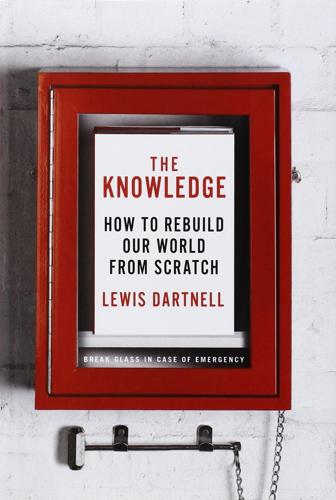
The Knowledge: How to Rebuild Our World From Scratch
by
Lewis Dartnell
Published 15 Apr 2014
* As they achieved an impressive degree of sophistication in the late nineteenth century, windmills became controlled by a centrifugal governor—two heavy balls that swing out on arms—that automatically regulated the spacing between milling stones to suit the variable wind speed. Today we instantly associate this control system with the steam engine, where it acts to close the throttle valve admitting high-pressure steam into the piston if it begins to whirl too rapidly, but James Watt had in fact borrowed it wholesale from windmill technology. * If you have any of the old-style tooth fillings you can even demonstrate this in your own mouth. Chewing a piece of aluminum foil introduces a second metal that reacts with the mercury-silver filling in your tooth, your own saliva serving as the electrolyte.
…
Thermal energy can be provided on demand, by burning any of a number of fuels, and the capability to transform this heat into mechanical power would release you from reliance on the vagaries of wind or water and also offer a power plant for mechanical transport. The first machine in history able to effect this transformation—to convert heat into useful motion—was the steam engine. The central concept behind the steam engine goes all the way back to the ages-old mystery, well known to Galileo in the late 1500s, that a suction pump can’t raise water more than about 10 meters up a pipe. The explanation of this is that the air itself exerts a pressure, a force squeezing everything on the Earth’s surface, including the column of water.
…
Rather than using the sucking effect of steam condensing in the cylinder, build the steam up to a higher pressure and you can use the expansive force of the hot gas—the same whoosh as in an espresso machine—to drive the piston first one way within the cylinder, then back again from the other side. The primary output of a steam engine (as with any piston-based heat engine, like the car motor we’ll return to in Chapter 9) is the plunging back and forth of the piston. This is fine for pumping water from mines, but for most applications you’ll want to transform that reciprocating motion into a smooth rotation. The crank will perform this conversion for you, just as we saw for windmills, and produce an action suitable for driving machinery or a vehicle’s wheels. You might think that steam engines represent exactly the sort of transitional technological level that you would aspire to leapfrog over during a reboot, straight to internal combustion engines or steam turbines, which we’ll explore in detail later.
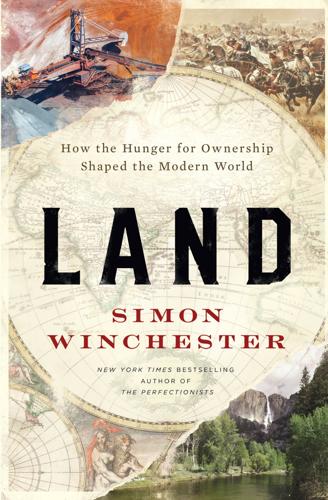
Land: How the Hunger for Ownership Shaped the Modern World
by
Simon Winchester
Published 19 Jan 2021
The Dutch national philosophy is related to the polder system—unarguably making the Netherlands the only nation on earth with its guiding principles based on the theory and practice of the making of land. Nature, of course, didn’t always allow the polders to enjoy a sense of permanence—even though James Watt’s late-eighteenth-century invention of the steam engine allowed for the construction of a large number of pumping stations, far more efficient and effective than the windmills and the Archimedes’-screw lifting systems that had been used before. But huge storms and their attendant floods more than occasionally reversed all of even this great progress, and most Dutch people today know all too well the dates of the worst of them—this being a country of long water-related memories.
…
*Arguments over land and surveys in the late seventeenth century between the two neighbor colonies of New York and Connecticut resulted in the curious bizarreries of their current shapes: the strange Connecticut panhandle down south, now stiff with millionaires’ mansions, and the more bizarre sixty-mile-long and two-mile-wide Oblong—its official name—granted to New York on its eastern edge. My land lies very much in the middle of the Oblong, and until 1713, was part of Connecticut Colony. Had it remained so, my property taxes would have been much reduced. *James Watt’s first properly efficient steam engine, its much sought-after efficiency the direct result of the mechanical perfection of its main cylinder which was created for Watt in North Wales by the technologically adept ironmaster John Wilkinson, had its first trial run on May 4, 1776—inaugurating the new era of modern mechanical world.
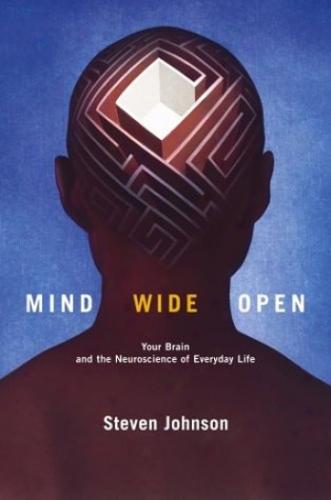
Mind Wide Open: Your Brain and the Neuroscience of Everyday Life
by
Steven Johnson
Published 2 Jan 1999
If you’re the kind of person who doesn’t like to dwell on your accomplishments, get over it. If it’s good news, by all means dwell. We’ve kept the core insights of the Freudian model: the divided self and the unconscious. But the guiding metaphors have changed: the brain is more Charles Darwin than James Watt, more ecosystem than steam engine. Our unconscious thoughts are not repressed by an austere censor, and many feelings of unpleasure that they trigger are signs of a functional psyche, not a dysfunctional one. The brain is more likely to free-associate than speak in code, though any free-associating sojourn is likely to lead back to emotionally charged memories.
…
This is one of those places where Freud’s metaphoric scaffolding ended up misleading him. If you think of the brain as a kind of steam engine, filled with energy that seeks release, then repressed drives are either stored somewhere in the brain or they discover indirect outlets to liberate themselves. It’s the first law of thermodynamics applied to the mind: the conservation of psychic energy. But all that changes if you use another metaphor: the brain as Darwinian ecosystem, instead of steam engine. This is a metaphor proposed by the brilliant neuroscientist Gerald Edelman, who won a Nobel Prize for his research into the immune system in the early ’70s, and who has subsequently devoted much of his research to the brain.
…
As a consequence of the old conflict which ended in repression, a new breach has occurred in the pleasure principle at the very time when certain instincts were endeavoring, in accordance with the principle, to obtain fresh pleasure. The apparatus in question, of course, is the human psyche, though it might as well be a steam engine, given Freud’s emphasis on its surging, shifting energy. Like almost all his writing, this is a complex, combinatorial language, filled with negations of negations and participatory metaphors. For all its complications, though, I think this passage does an admirable job of conveying both the insights and the blind spots of the Freudian model, at least when viewed through the lens of modern neuroscience.
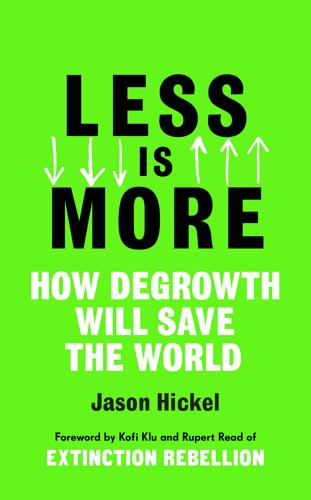
Less Is More: How Degrowth Will Save the World
by
Jason Hickel
Published 12 Aug 2020
As these results trickled out, UNEP had no choice but to change its position, admitting that green growth was a pipe dream: absolute decoupling of GDP and material use is simply not possible on a global scale. What’s going on here? What explains these bizarre results? The thing about technology Back in 1865, during the Industrial Revolution, the English economist William Stanley Jevons noticed something rather strange. James Watt had just introduced his steam engine, which was significantly more efficient than previous versions: it used less coal per unit of output. Everyone assumed that this would reduce total coal consumption. But oddly enough, exactly the opposite happened: coal consumption in England soared. The reason, Jevons discovered, was that the efficiency improvement saved money, and capitalists reinvested the savings to expand production.
…
Two Rise of the Juggernaut Capitalism can no more be ‘persuaded’ to limit growth than a human being can be ‘persuaded’ to stop breathing. Murray Bookchin I still remember when I first learned about the history of capitalism in school. It was a happy story that started with the invention of the steam engine in the eighteenth century and worked its way through a parade of technological innovations, from the flying shuttle all the way up to the personal computer. I remember marvelling at the glossy pictures in the textbook. As this story would have it, economic growth is like a fountain of money that springs forth from technology itself.
…
Yes, capitalism has driven some extraordinary technological innovations, and these innovations have driven an extraordinary acceleration of growth. But the main contribution that technology makes to growth is not that it produces money out of thin air, but rather that it enables capital to expand and intensify the process of appropriation.1 This was true well before the steam engine. Even in the early 1500s, innovations in sugar-milling technology allowed plantation owners to put more land under sugar than they otherwise would have been able to process. Similarly, the invention of the cotton gin enabled producers to expand cotton monoculture. New wind-powered pumps were used to drain Europe’s wild wetlands, opening vast tracts of land to farming.
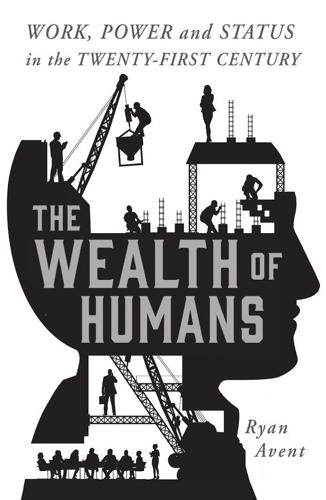
The Wealth of Humans: Work, Power, and Status in the Twenty-First Century
by
Ryan Avent
Published 20 Sep 2016
Britons were invited; a few showed off their newly developed penny-farthing bicycle – the one with the giant front wheel. But among the most impressive exhibits on display was the Corliss steam engine: a behemoth of a mechanical device, seventy feet high and weighing 650 tonnes. The 1,400 horsepower Corliss engine drove a system of belts that powered the whole of the fair’s machinery hall. George Corliss, an American engineer, patented his engine in 1849, more than eighty years after James Watt made his most critical contributions to steam-engine design. At the time, American manufacturers used a total of less than 2 million horsepower (or roughly the output of a large turbine in a modern power plant), most of which was generated by water.
…
A half-century later, American manufacturers used more than 10 million horsepower in operating their factories, the vast majority of which was generated by steam engines, and the American economy was overtaking Britain as the world’s leading industrial and technological power.6 Economic historians label things such as steam power as a ‘general purpose technology’: an advance that can be used to do things more effectively across many different facets of life. A steam engine could be hooked up to any production facility that previously relied on wind or water or animal power. It could be affixed to transport devices – boats, cars, train engines – to make them go farther, faster, with more horsepower.
…
‘He becomes an appendage of the machine, and it is only the most simple, most monotonous, and most easily acquired knack, that is required of him.’6 At the time, ever more of the manufacturing sector was moving towards a factory model. That was in part due to the economic logic of production with large capital equipment. These machines were often big, power-hungry things running in line with water wheels or steam engines. The capitalists who invested enormous sums in their hulking machines had a great interest in seeing that the machines were not damaged through carelessness, but were manned diligently to the greatest extent possible. Big machinery was therefore a powerful force behind the migration of workers into centralized plants.7 Humanity had to be moulded to fit the demands of industrial economic structures and the machines that powered them.

Cathedrals of Steam: How London’s Great Stations Were Built – and How They Transformed the City
by
Christian Wolmar
Published 5 Nov 2020
Under those circumstances, closure was inevitable.’7 London was also the site of one of the most significant demonstrations of the potential of steam locomotives, although it was a trial of the technology rather than a showcase for the concept of railways. Richard Trevithick is one of the lesser-known pioneers of the development of the railways, but he is deserving of wider recognition. Born in 1771 in Cornwall, where steam pumps to keep mines clear of water were commonplace, Trevithick first developed a more efficient version of James Watt’s groundbreaking steam engine, and then came up with the idea of putting one on wheels. After a successful first test at Camborne in Cornwall on Christmas Eve 1801 of his Puffing Devil, the subsequent trial three days later has gone down in history for all the wrong reasons. When the locomotive, which had no steering mechanism, got stuck in a gully, Trevithick and his team adjourned to the pub for a meal that history notes was of roast goose watered down with considerable amounts of ale.
…
The North was the cradle of the Industrial Revolution, where the various inventions that were beginning to harness the power of steam ever more efficiently had been developed. Putting the source of this power, a steam engine, on wheels that ran on rails had slowly emerged as the best way to make use of the energy that had become available as the equipment became ever more efficient. It had taken years, decades even, for the idea of wheels on rails to emerge, after many false starts. Attempts to run wheeled steam engines on roads had floundered because the surface of early nineteenth-century highways simply wasn’t up to the task and steering for these behemoths had yet to be developed.
…
While the company itself is long forgotten, having soon merged with the London & Brighton to form the far bigger London, Brighton & South Coast Railway, it was highly innovative and supported a technological experiment that, had it been successful, could have led to the creation of a very different type of railway system across the UK. In place of the established steam locomotive technology, the London & Croydon attempted to build an ‘atmospheric’ railway. This was powered by static steam engines that created a vacuum in a continuous pipe between the tracks into which a piston, attached to the train, would be pulled along by the creation of a vacuum. The potential advantage was that the locomotive did not have to haul its own considerable weight, which saved on fuel. However, there was a major problem maintaining the vacuum between the tracks.

The Rise of the Network Society
by
Manuel Castells
Published 31 Aug 1996
Wall Street Journal, The Wallerstein, Immanuel Walnut Creek Wang, Georgette Wang, Yeu-fain Warburg Dillon Read warfare; continuing; deaths; life-cycle; news reporting; social acceptability; state; time factors Wark, McKenzie Warme, Barbara Warnken, Jurgen Watanabe, Susumu Watanuki, Joji water power Watson, James Watt, James Watts, Duncan J. web browsers Weber, Max Webster, Andrew WebTV Weiss, Linda Welch, Finis welfare state welfarism Wellman, Barry Westney, D. Eleanor Wexler, Joanie Wheeler, James O. Whightman, D. W. Whitaker, D. H. Whitley, Richard Whitrow, G. J. Wieczorek, Jaroslaw Wieviorka, Michel Wilkinson, Barry Williams, Frederick Williams, R.
…
R. J. Forbes, a classic historian of technology, affirms that “the invention of the steam engine is the central fact in the industrial revolution,” followed by the introduction of new prime movers and by the mobile prime mover, under which “the power of the steam-engine could be created where needed and to the extent desired.”35 And although Mokyr insists on the multifaceted character of the industrial revolution, he also thinks that “the protestations of some economic historians notwithstanding, the steam engine is still widely regarded as the quintessential invention of the industrial revolution.”36 Electricity was the central force of the second revolution, in spite of other extraordinary developments in chemicals, steel, the internal combustion engine, telegraphy and telephony.
…
Indeed, while factories have been associated with the first industrial revolution, for almost a century they were not concomitant with the use of the steam engine that was widely used in craft shops, while many large factories continued to use improved waterpower sources (and thus were known for a long time as mills). It was the electrical engine that both made possible and induced large-scale organization of work in the industrial factory.37 As R. J. Forbes wrote (in 1958): During the last 250 years five great new prime movers have produced what is often called the Machine Age. The eighteenth century brought the steam-engine; the nineteenth century the water-turbine, the internal combustion engine and the steam-turbine; and the twentieth the gasturbine.

The Battery: How Portable Power Sparked a Technological Revolution
by
Henry Schlesinger
Published 16 Mar 2010
After years of haggling and no small amount of backroom politicking between the French and British, the standard units of watt, ampere, and volt emerged. The term “volt,” after Alessandro Volta, the Italian inventor of the battery, was pushed hard by the French in large part because of his support of Napoleon. Watt, for James Watt, who perfected the steam engine for industrial use, had nothing to do with electricity at all. However, he had coined the idea of horsepower as a unit of measurement, primarily as a way to make his engine’s power understandable to potential buyers accustomed to equine-powered machinery. What would come to be known as the amp or ampere, was named after André-Marie Ampère, the French mathematician turned physicist who studied electromagnetic fields.
…
However, a few years later when Benjamin Franklin unwisely used a lightning rod to pull an electrostatic charge down into his parlor from approaching storm clouds to ring bells, they quickly became known as “Franklin chimes.” Gordon is also credited with creating the first electric motor. An ingenious device, it was based on the same principle as the ancient steam engine known as the aelopile of Hero, invented by the Alexandrian mathematician around 200 BC, which released steam through two openings on opposite sides that sent the sphere spinning on a spitlike device. Called the “electric whirl,” Gordon’s motor was a metallic star that pivoted at its center. When subjected to an electrical charge at the points, it spun.
…
By the standards of the day, Henry’s electromagnets were impressive devices. Never before had electricity been used to perform such heavy lifting, hoisting more than a man could manage without levers or pulleys—and doing it with the mysterious power of electricity generated by careful arrangement of metal and chemicals. Unlike a steam engine whose complex mechanical workings could be more or less understood through careful examination of boilers or gears, one needed to know the principles of electromagnetism and batteries to fully grasp the workings of the magnet. It did not take a great leap of imagination to see that the power generated by the simple device would someday find use in industry.

Wonderland: How Play Made the Modern World
by
Steven Johnson
Published 15 Nov 2016
The great takeoff of industrialization, for instance, has inevitably been told as the work of European and North American men—heroes and villains both—building steam engines and factories and shipping networks. But those dyers tinkering with calico prints on the Coromandel coast, creating new designs for the sheer beauty of it; those English women enjoying the “agreeable amusements” of shopping on Ludgate Hill—these were all active shapers of the modern reality of industrialization, as important, in a way, as the James Watts and Eli Whitneys of conventional history. The account is necessarily murky because so few contemporaries found it necessary to take note of these new shopfronts until the calico craze had threatened to decimate the English economy.
…
The immense value of the cotton trade had already set a generation of British inventors off in search of mechanical tools that could mass-produce cotton fabrics: beginning with John Kay’s flying shuttle, patented in 1733, followed several decades later by Richard Arkwright’s spinning (or water) frame, then Eli Whitney’s cotton gin, not to mention the endless refinements to the steam engine rolled out during the 1700s, many of which were originally designed to enhance textile production. (Steam engines would eventually power a wide range of industrial production and transportation, but their initial application was dominated by mining and textiles.) Instead of deflating the British economy, the Calico Madams unleashed an age of British industrial and economic might that would last for more than a century.
…
Float valves that prefigure the design of modern toilets, flow regulators that would eventually be used in hydroelectric dams and internal combustion engines, water clocks more accurate than anything Europe would see for four hundred years. The two books contain some of the earliest sketches of technology that would become essential components in the industrial age, enabling everything from assembly-line robots to thermostats to steam engines to the control of jet airplanes. Pages from the Banu Musa’s The Book of Ingenious Devices These two books of “ingenious” machines deserve a prominent place in the canon of engineering history, in part as a corrective to the too-frequent assumption that Europeans single-handedly invented most modern technology.
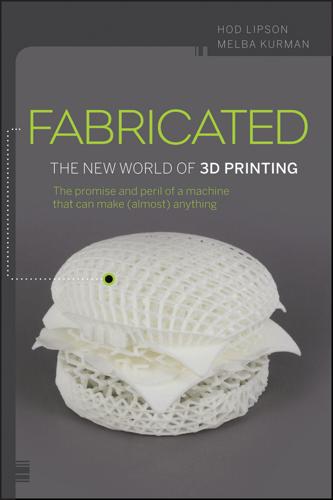
Fabricated: The New World of 3D Printing
by
Hod Lipson
and
Melba Kurman
Published 20 Nov 2012
“Patents do inhibit development—it’s unquestionably the case,” said Adrian. “It’s in the nature of patents that they give a monopoly to whoever holds them for 20 years.” He continued, “James Watt patented various vital aspects of the steam engine. Yet, you look at steam engine development and nothing happened for 20 years during the life of Watt’s patent. When that patent lapsed, there was a great flaring of steam engine innovation and then the industrial revolution.” When Adrian and his students created RepRap in 2004, they didn’t know it at the time but RepRap printers would become a game-changing technology and intellectual property experiment.
…
There’s another complicating factor that increases the allure of personal computing and industrial revolution metaphors: 3D printing is more than a single technology. It’s a broad platform technology that will drag along other technologies in its wake. Similarly transformative technologies like the steam engine or telegraph also sent shock waves in every which direction. The experience economy In their book The Experience Economy, authors Joseph Pine and James Gilmore predict that a company’s competitive advantage will be increasingly based on the intensity of customer experience. Pine and Gilmore explain that the economy has evolved several times already, from an agrarian economy, to an industrial economy, to today’s service economy.2 In Pine and Gilmore’s experience economy, a product’s value falls somewhere into a continuum of intensity of experience.
…
On the person who made the faulty design file? The person who 3D printed and sold it? The website that advertised the part? Perhaps the manufacturer of the car the faulty wheel was installed onto, the printer manufacturer, or the material supplier? Standards can help set clear boundaries of responsibilities. In the early days of steam engines, boilers used to blow up, frequently causing injury and damage. It was insurance companies that insisted on delineating responsibilities by setting clear standards of production. A set of criteria were eventually created that specified the minimum requirement to certify a boiler for a certain operating steam pressure, such as material thickness, safety margins and pressure release valves.
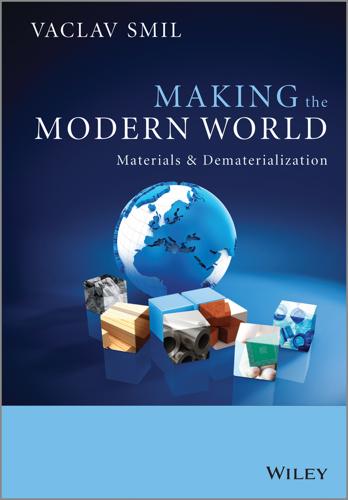
Making the Modern World: Materials and Dematerialization
by
Vaclav Smil
Published 16 Dec 2013
Famines were infrequent, but prevailing diets were barely adequate, monotonous, and overwhelmingly cereal-based; high infant mortality reduced the average life expectancy at birth to less than 40 years; housing was crowded, unhygienic, and uncomfortable; wood (and charcoal made from it) and crop residues (mostly cereal straws) were the dominant fuels; human and animal muscle were the most important prime movers; and wood, stone, and clay (shaped and fired as bricks) furnished the basic building materials, while possession of objects made from metals and alloys (iron, copper, bronze, brass) was uncommon. Only in England did coal displace wood as the dominant fuel. James Watt's (still quite inefficient) steam engines began to offer the first competition to windmills and waterwheels as reliable, and increasingly powerful, prime movers, while replacement of charcoal by coal made it possible to build larger blast furnaces, to produce more iron, and to lower the cost of many common iron objects.
…
The rate's inverse (W/g), commonly known as power-to-weight ratio (or specific power), is one of the most revealing characteristics used when assessing and comparing the performance of engines or machines; and its variant, thrust-to-weight ratio, is used for gas turbines and rocket engines deployed in commercial and military jet propulsion and in launching payloads to space. The baseline for comparison is the performance of the first fuel-powered mechanical prime movers, steam engines of the eighteenth century. By 1750, after decades of marginal improvements, a standard-sized, Newcomen, inefficient steam engine developed about 15 kW, weighed nearly 9.6 t, and had a mass/power ratio of about 640 g/W (Smil, 2008). Three decades later even Watt's famous improved design (patented in 1765) remained a very heavy machine (9.2 t, 15 kW) rated at just over 600 g/W.
…
The heaviest working horses (English Clydesdales, French Percherons) weigh nearly 1 t and develop more than 1 hp (745 W), that is, again, specific power close to 1000 g/W during prolonged pulls (Smil, 1994). By the mid nineteenth century the specific mass of many steam engines was below 500 g/W and by the late nineteenth century the best design (triple-expansion engines) rated less than 100 g/W, still too heavy to energize affordable road transport. Internal combustion engines changed that. In 1874, Otto's first (noncompression and stationary) internal combustion engine had a nearly 4-m tall cylinder and was very heavy: at about 900 g/W its mass/power ratio was several times that of the best contemporary steam engines. Compression lowered the engine's size and weight and reduced the ratio to about 270 g/W by 1890, less than that of the small stationary steam engines used in workshops and factories.
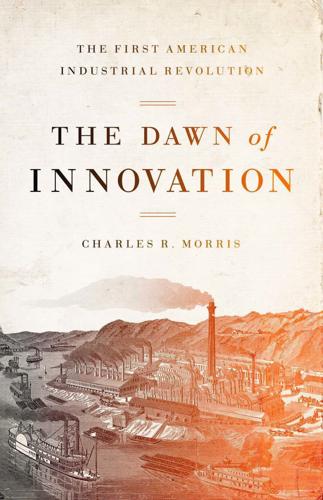
The Dawn of Innovation: The First American Industrial Revolution
by
Charles R. Morris
Published 1 Jan 2012
The fly-shuttle loom almost cried out for mechanization; the challenge lay in tuning the pressures on the threads to produce acceptable cloth while minimizing breakage, the way a skilled human did by feel. It was much the same with the steam engine. Galileo’s pupil Evangelista Torricelli did much of the early basic science, and a Frenchman, Denis Papin, constructed early working models. The first useful industrial-scale steam engine was built by Thomas Newcomen in 1712 to lift water out of a tin mine—flooding of underground mines was a chronic problem. It used a vacuum to produce work. Steam entered a cylinder and raised a piston; a jet of water cooled the cylinder, and the steam condensed, causing the piston to fall, and thereby lift water.
…
A postwar shakeout left fewer, larger companies, which paid greater attention to branding and catalog selling, supplemented by retail stores and floor inventory in the biggest markets—in short, a modern industry.30 Steam engines, finally, illustrate the extreme end of the transportation challenge in early America. They were also a key to solving the transportation problem by improving water transport and freeing powered industries from water sites. Oliver Evans was a Delaware merchant who became one of the most prolific of American inventors. (He patented a highly automated flour mill and sold one to George Washington.) He is best known, along with the British inventor Richard Trevithick, as the father of the high-pressure steam engine. Newcomen and Watt engines condensed steam to create a vacuum and used the vacuum to move the piston.
…
Even as much safer designs became available in the last half of the century, they were strongly resisted because of their cost. As steam engines proliferated, disasters kept rising. A study covering 1867–1870 showed about a hundred major explosions a year, killing about 200 people and injuring a similar number.34 The dominance of efficiency over any other value may have also been characteristic of American industries. Evans died in 1819; by then his Mars Works in Philadelphia had produced more than one hundred steam engines for both water transportation and industrial power. After his patents expired in 1824, his designs were widely copied and improved on.

A Short History of Progress
by
Ronald Wright
Published 2 Jan 2004
A state of affairs maintained, to a large degree, by the consumerist pornography of advertising. 69. George W. Bush’s astronomical deficits seem designed to cripple the American state in all fields except the military. The result, if this goes on, will be to make America more like Latin America, where the army is often the only effective public institution. 70. James Watt, speaking in 1981. As noted above, social Darwinism claims that the poor are inferior, and that the best thing for the progress of the human race is to let them die. 71. Bush’s attorney general, John Ashcroft, has said, “In America, there is no king but Jesus.” See Lewis Lapham, “Reading the Mail,” Harper’s, November 2003, p. 9. 72.
…
From Dickens’s portrait of “Coketown” in Hard Times ([1854] 1969, p. 65): “It was a town of machinery and tall chimneys, out of which interminable serpents of smoke trailed themselves for ever and ever, and never got uncoiled. It had a black canal in it, and a river that ran purple with ill-smelling dye, and vast piles of building full of windows where there was a rattling and a trembling all day long, and where the piston of the steam-engine worked monotonously up and down, like the head of an elephant in a state of melancholy madness. It contained several large streets all very like one another, and small streets still more like one another, inhabited by people equally like one another, who all went in and out at the same hours, with the same sound upon the same pavements, to do the same work, and to whom every day was the same as yesterday and tomorrow.” 40.
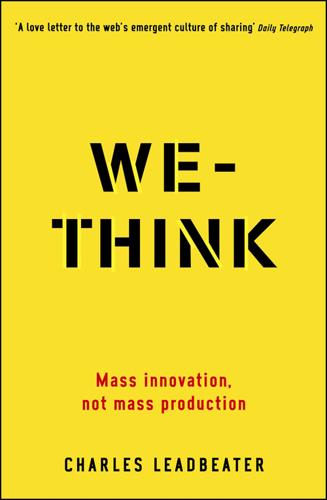
We-Think: Mass Innovation, Not Mass Production
by
Charles Leadbeater
Published 9 Dec 2010
Cornwall was the Silicon Valley of its day, home to the most impressive innovations in industrial technology. Cornish tin and copper mines posed the trickiest problems for engineers and so demanded the greatest ingenuity. The deeper the mines went, the more prone to flooding they became. In 1769 the inventor James Watt came up with an engine design that incorporated a separate condenser, which cut the amount of coal needed by two-thirds. This transformed the economics of mining. The Watt engine, which he marketed with his business partner Matthew Boulton, quickly spread through Cornish mines – but the mine-owners became disenchanted.30 Boulton and Watt charged them a royalty fee equivalent to a third of the amount of money that a mine saved each year after the installation of their engine, the design of which was protected by a very broad patent enforced ferociously.
…
By 1845, engines in Cornish mines were more than three times more efficient than the Boulton and Watt engine of 1800. They became known as ‘Cornish’ engines in recognition of the cumulative, collaborative and collective nature of the innovation. During this period Cornwall had the fastest rate of steam-engine innovation in the world and the lowest rate of patenting in Great Britain. The Cornish engine story prefigures today’s contest between Microsoft and open-source software: sharing can be a highly effective basis for commercial endeavour. In Cornwall rival firms released to one another ideas that brought significant cost reductions to all.
…
David, ‘From Keeping “Nature’s Secrets” to the Institutionalization of “Open Science”‘, in Rishab Aiyer Ghosh (Ed.), Code (Cambridge, MA/London: MIT Press, 2005) 30 Alessandro Nuvolari, ‘Open Source Software Development: Some Historical Perspectives’, Eindhoven Centre for Innovation Studies Working Paper 03.01 (2003); Koen Frenken and Alessandro Nuvolari, ‘The Early Development of the Steam Engine: An Evolutionary Interpretation Using Complexity Theory’, Eindhoven Centre for Innovation Studies Working Paper 03.15 (2003) Chapter 3 1 Andrew Brown, In the Beginning Was the Worm (Pocket Books, 2003) 2 Eric S. Raymond, The Cathedral and the Bazaar (O’Reilly, 2001) 3 Doc Searls, ‘Making a New World’, in Chris DiBona, Danese Cooper and Mark Stone (Eds), Open Sources 2.0 (O’Reilly, 2006) 4 Glyn Moody, Rebel Code: Linux and the Open Source Revolution (Penguin, 2002) 5 Like many radical innovations Linux is not as revolutionary as it first seems.

How to Fix the Future: Staying Human in the Digital Age
by
Andrew Keen
Published 1 Mar 2018
There is “truth to the idea that machines can take jobs” and even “lower our quality of life,” he explained to me. It’s the shift in the distribution of wealth from labor to capital that really worries the economist. “And it’s certainly not Luddite to have these forebodings,” he insisted. Sachs acknowledges that the same debate has been raging for the past two hundred years, ever since James Watt invented the steam engine and a combination of a mechanized textile industry and the development of railroads created the first industrial civilization. For two hundred years, Sachs admits, we’ve been debating whether ever-more-powerful machines would enslave or empower us. But now, he insists, the question of the impact of smart technology on jobs is “becoming urgent.”
…
In 2016, I participated in a two-day World Economic Forum (WEF) workshop in New York City about the “digital transformation” of the world. The event’s focus was on what it called the “combinatorial effects” of all these new internet-based technologies—including mobile, cloud, artificial intelligence, sensors, and big data analytics. “Just as the steam engine and electrification revolutionized entire sectors of the economy from the eighteenth century onward,” the seminar concluded, “modern technologies are beginning to dramatically alter today’s industries.”1 The economic stakes in this great transformation are dizzying. Up to $100 trillion can be realized in the global economy by 2025 if we get the digital revolution right, the WEF workshop promised.
…
As Eric Hobsbawm, the Anglo-German historian of the industrial revolution, reminds us, the world in 1789 was “overwhelmingly rural” and for most of its inhabitants, who had no access to either newspapers or any other information about the outside world, “incalculably vast.”4 It was a localized, agricultural society that wouldn’t have appeared strikingly foreign to Thomas More, who died more than two hundred years earlier. But sixty years later, by February 1848, when Karl Marx and Friedrich Engels published their Communist Manifesto in London, that rural world had been radically transformed by the steam engine, electrification, and mass mechanical production. “The mid-nineteenth century was pre-eminently the age of smoke and steam,”5 Hobsbawm tells us about a world in which, between 1850 and 1870, global production of coal multiplied by more than 250 percent, global iron output grew by 400 percent, and total global steam power went up more than 450 percent.6 “All that is solid melts into air.”

Evil Geniuses: The Unmaking of America: A Recent History
by
Kurt Andersen
Published 14 Sep 2020
I used to hire freelance transcribers and translators, but in the last few years I’ve replaced them with software that does the work a little roughly but well enough to serve my needs. The first industrial revolution took off around 1800 when steam technology improved from impractical to okay after James Watt designed an engine that captured 3 percent of the energy of the coal it burned instead of his forerunners’ 1 percent. (Two centuries later the giant steam engines that still generate most of our electricity still operate at less than 40 percent efficiency.) The good enough beats the perfect. As for when and how many particular jobs will be taken over by machines, either disembodied AI or robots, the estimates range widely, but pre-pandemic most predicted that between 15 and 30 percent of current jobs in the United States and the rest of the developed world will be eliminated during the next ten to twenty years, with many more “at risk.”
…
Reagan helped: he fast-tracked Murdoch for U.S. citizenship so that his company could get around the federal law forbidding foreigners from owning stations, then waived the federal rule forbidding anyone from owning a TV station and a newspaper in the same city, as Murdoch suddenly did in New York and Boston. The footings were now in place to build the important final piece of the right’s counter-Establishment. *1 The one right-wing fanatic in Reagan’s first cabinet was Interior Secretary James Watt, a Pentecostal Christian who’d run the new anti-environmental-regulation law firm funded by Joseph Coors. Watt was forced out after two years for what he said about a federal commission he oversaw, a remark I doubt would have cost him his job in a current Republican administration: “We have every kind of mix you can have.
…
You probably imagine, as I did, that the average European’s standard of living gradually improved as the Middle Ages ended in the 1400s. In fact, in the economies of America and Britain, measured by the average person’s share of total production, as the economist Robert Gordon says, “there was virtually no economic growth before 1750.” And that changed only because in the 1760s and ’70s practical large-scale steam engines were perfected, just as manufacturing was being otherwise mechanized. Suddenly life was transformed: the industrial revolution began at the same moment as our Revolution. In fact, one reason Americans fought the war was because the English back home weren’t eager for the colonies to industrialize and had even banned some kinds of manufacturing in America.
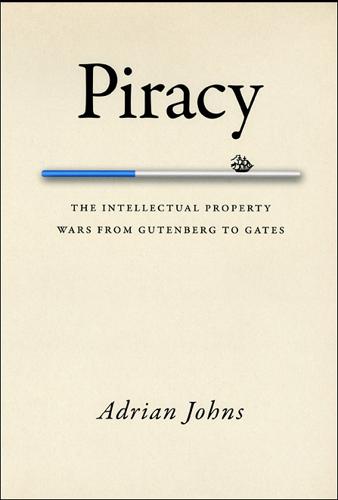
Piracy : The Intellectual Property Wars from Gutenberg to Gates
by
Adrian Johns
Published 5 Jan 2010
That elevation was at least as consequential as the farbetterknown shift from “natural philosophers” to “scientists.” Indeed, it could be said that the Industrial Revolution emerged as a transition from the age of projects to the age of invention. The pivotal figure in this transformation was James Watt, who had staunchly defended his patented steam engine and was apotheosized after his death in 1819. Yet there was still not really such a thing as a patents system in Britain. Each grant was still an individual grace proffered by the Crown out of its goodwill. Obtaining one was an expensive and dauntingly bureaucratic operation.
…
And both were much less clearly distinct from the realm of radical and materialist pirate printers like Richard Carlile, William Benbow, and Thomas Tegg – the nineteenthcentury successors to Hills and Rayner – than their denizens liked to admit. from reform to abolition Agitation to reform the operation of patenting can be traced back a long way. As early as the 1780s, in the midst of fears aroused by Pitt’s proposed free trade arrangement with Ireland, James Watt and his friends had banded together to urge major changes. Among the themes Watt articulated were a number that became key to the subsequent century’s debate. Should patents be admissible for merely introducing a device from abroad, for example? Watt thought so, and this practice had in fact long been accepted, but increasingly others rejected it.
…
Projects were ambitious proposals for schemes of all kinds – inventions, trade ventures, lotteries, and so on. They were nothing new; a century earlier, Elizabethan London had been full of projectors. But now the projectors sought their investment less through court patronage than in the avowedly public realm of coffeehouse and pamphlet. From treasurehunting expeditions to new steam engines for draining mines, projects of all kinds sought investment from lay subscribers lured by print and tempted by the promise of future returns. The phenomenon seemed to characterize a new age. And, of course, the book trade depended on projecting too. To propose a subscription for a new atlas or history meant asking others to trust that that project would be brought to fruition.
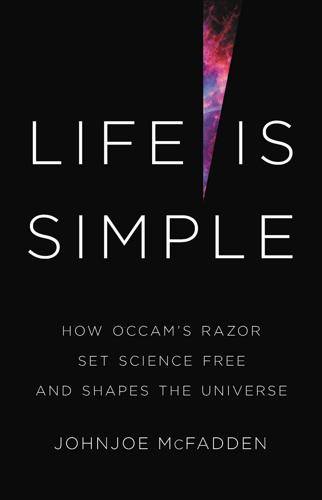
Life Is Simple: How Occam's Razor Set Science Free and Shapes the Universe
by
Johnjoe McFadden
Published 27 Sep 2021
Newcomen’s pump was an atmospheric engine that, just as in Boyle’s experiment, relied on the weight of atmospheric air to drive the pistons. In 1764, the Scottish inventor, mechanical engineer and chemist James Watt (1736–1819) separated the power stroke cylinder from the condensing cylinder, which made the engine much more energy efficient. He also came up with the revolutionary idea of sealing the cylinders at both ends and using the heat-driven expansion of steam to push the piston out, and the coolant-driven condensation of steam to pull the piston in. He had invented the steam engine. The first steam engines were only useful as pumps, but Watt replaced Newcomen’s rocking beam with a flywheel driven from the engine’s beam by a set of gears: a rotary engine.
…
This system was soon adopted by the mill owners of industrial Britain, such as the cotton textile manufacturer Richard Arkwright, and the cotton industry shifted from water into steam-powered hyperdrive. The Cornish mining engineer Richard Trevithick (1771–1833) had the great idea of bolting a portable steam engine onto a wheeled carriage and thereby built an autonomous motor vehicle, the Puffing Devil. On Christmas Eve 1801, the Puffing Devil carried six passengers up Fore Street in Camborne and then continued on to the nearby village of Beacon. The Industrial Revolution was on the move. FIGURE 21: Newcomen’s atmospheric steam engine. Trevithick’s engine was further improved by engineers, such as George (1781–1848) and Robert (1803–59) Stephenson, to become the powerhouse of the Industrial Revolution and the source of the biggest increase in industrial productivity that the world had ever seen.
…
In the Industrial Revolution progress and productivity became exponential.ii Of course, like the Renaissance or Reformation, there were clearly multiple reasons for this change of gear, including the rise of capitalism and imperialism, the ready supply of coal, cheap labour, import of foreign technologies from as far away as China, bigger markets and the availability of easy profits from the slave trade. Even so, inventions such as the various kinds of steam engine undoubtedly played a huge role, yet their exponential improvement in output was only possible through the use of models, mostly drawn with ink on paper but instantiating simple laws such as those of Boyle, Newton, Carnot or Boltzmann. Models instantiate knowledge. They model the structure, dynamics and function of machines, usually in the language of geometry and mathematics. They can be as simple as the drawing of a steam engine, such as Newcomen’s in 1712 that refers to Boyle’s ‘weight of air’ to account for the motion of the piston.
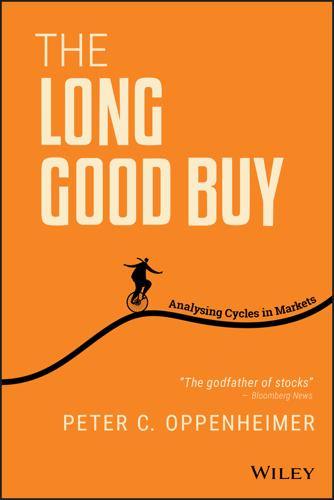
The Long Good Buy: Analysing Cycles in Markets
by
Peter Oppenheimer
Published 3 May 2020
Some have argued that this is a paradox and that it illustrates the limited impact of such technologies and that stock prices must therefore be overvaluing their potential. But there is strong evidence from history that previous waves of technology have also resulted in slower growth in productivity and economic activity than is generally believed. For example, although James Watt marketed a relatively efficient engine in 1774, it took until 1812 for the first commercially successful steam locomotive to appear, and it wasn't until the 1830s that British output per capita clearly accelerated. Several academic studies have shown that the improvements in productivity in Britain in the late 19th century were small.9 Productivity growth was slow during the last decades of the 18th century, and it did not improve until 1830.
…
As it turned out, the ultimate winners in the emerging technology spaces were often not those that people expected, or that even existed, in the first wave. Furthermore, many telecom and media companies have been disrupted by the very technological innovations that, 20 years ago, were expected to be so transformative. During the railway boom, the steam engine spawned the development of the railways, and the network effect and connectivity then enabled other technologies to develop. This pattern has also been evident over the past two decades. The development and rapid take-up of the internet has enabled the development, and rapid penetration, of the smartphone.
…
In this context, it makes sense that the digital revolution has not yet boosted productivity.11 New technologies often have huge potential for productivity growth but can be difficult to adopt efficiently until there is a reorganisation in the manufacturing process and, in many cases, there exists a global standard in the technology. At the same time, the requirement to build out the full network effects can slow the initial penetration and therefore the productivity boost. The use of the steam engine, and coal for smelting, was also subject to these network effects. Coal transport was eventually a major boost to growth and productivity but could not be fully adopted until transport networks were in place. Equally, the large fixed costs of investment could be recouped only when enough new users had switched to the new power source.
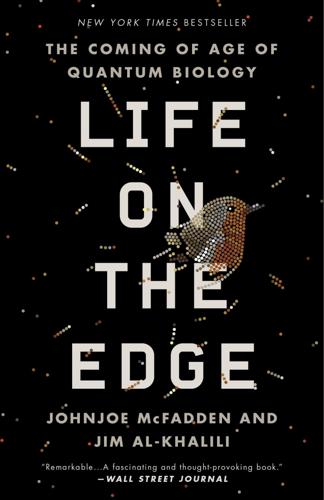
Life on the Edge: The Coming of Age of Quantum Biology
by
Johnjoe McFadden
and
Jim Al-Khalili
Published 14 Oct 2014
He also demonstrated some of his father’s engineering insight, writing a remarkable book entitled Reflections on the Motive Force of Fire (1823), which is often credited as initiating the science of thermodynamics. Sadi Carnot drew inspiration from the design of steam engines. He believed that France had been defeated in the Napoleonic wars because it hadn’t harnessed the power of steam to build heavy industry in the way that England had. However, although the steam engine had been invented and successfully commercialized in England, its design had been mostly down to trial and error and the intuition of engineers such as the Scottish inventor James Watt. What it lacked was any theoretical foundation. Carnot sought to rectify this situation by describing in mathematical terms how any heat engine, such as those that drove steam trains, could be used to do work via a cyclical process that is to this day known as the Carnot cycle.
…
Some of the instruments are still knocked into a different beat when an occasional crisp bag is popped by a rowdy spectator, but, with a wave of his baton, the conductor is able to bring them back into sync to deliver the music of photosynthesis. Reflections on the motive force of life In chapter 2 we peered inside a steam engine to discover that its motive force involved capturing the random motion of the sea of billiard-ball-like molecules and directing the molecular turbulence toward driving the piston within the cylinder. We then asked whether life can be entirely accounted for by the same “order from disorder” thermodynamic principle that drives steam engines. Is life just an elaborate steam engine? Many scientists are convinced that it is, but in a subtle way that needs a little elaboration. Complexity theory studies the tendency of certain forms of random chaotic motion to generate order through the phenomenon of self-organization.
…
At a molecular level, there is only chaos—but chaos with a slight bias that can generate order at a macroscopic level: order from chaos, as this principle is sometimes termed.7 Order from chaos is conceptually quite similar to Erwin Schrödinger’s “order from disorder,” which, as we have already described, lies behind the motive force of steam engines. But, as we have discovered, life is different. Although there is plenty of disorderly molecular motion inside living cells, the real action of life is a tightly choreographed motion of fundamental particles within enzymes, photosynthetic systems, DNA and elsewhere. Life has built-in order at a microscopic level; and so “order from chaos” cannot be the only explanation for life’s fundamental distinguishing features. Life is nothing like a steam train. However, recent research suggests that life may operate along the lines of a quantum version of the steam engine. The principle of how steam engines work was first outlined in the nineteenth century by a Frenchman, Sadi Carnot.
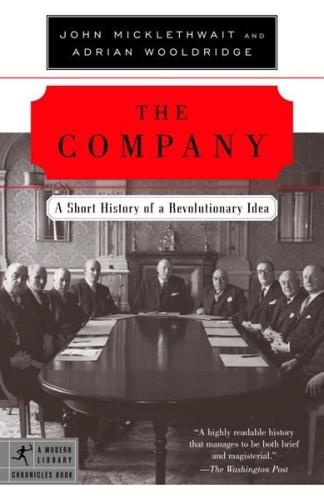
Company: A Short History of a Revolutionary Idea
by
John Micklethwait
and
Adrian Wooldridge
Published 4 Mar 2003
His Soho Manufactory, which employed eight hundred workers to turn out metal boxes, buttons, chains, and sword hilts, was so famous that guided tours had to be arranged. (People were equally amazed by Boulton’s centrally heated mansion, Soho House.) Then, in 1774, he went into partnership with James Watt (1736–1819), the Scottish pioneer of the steam engine, whose first partner-backer had just gone bust following a poor mining investment. On March 8, 1776, they demonstrated Watt’s machine in Birmingham: it rapidly became indispensable to the coal industry and then cotton mills. By the time they retired in 1800, handing the business over to their sons, Boulton and Watt counted among the richest people in the country, and Britain was producing 15 million tons of coal a year, about five times the total production of continental Europe.

In Our Own Image: Savior or Destroyer? The History and Future of Artificial Intelligence
by
George Zarkadakis
Published 7 Mar 2016
Everything about our world changed after that, including the level of sophistication in our social organisation, the ways in which we build our cities and fight our wars, how we share and process information, as well as the amount of energy we can harness and use.4 The key technology that ignited the Industrial Revolution was the steam engine. James Watt’s ingenious improvement of the efficiency of the steam engine, introduced in 1775, transformed the global economy by mechanising labour. Many historians refer to this period as the ‘first machine age’, when machines became an integral part of human society and changed it forever. By the time Charles Babbage came of age, Great Britain, the first country to industrialise, was the unchallenged imperial, economic and naval power.
…
Similarly to Hellenistic innovations such as the Hero’s Steam Engine and Hipparchus’ Antikythera Mechanism, Babbage’s great invention was well before its time. Nevertheless, Babbage’s achievement is profoundly remarkable. He had invented a machine that could perform multiple functions without the need to reconfigure its mechanical parts. By separating hardware from software, Babbage created unlimited possibilities for computation. Arguably, the full significance and repercussions of this separation are yet to be fully comprehended, and in all probability it will take several more decades to do so. Like Watt’s steam engine, which heralded the start of the ‘first machine age’ of the Industrial Revolution in the late eighteenth century, modern computers are currently ushering in the ‘second machine age’12 through the digital transformation of our economy and societies.
…
During this period – which lasts until the total conquest of the Greek world by the Romans during the reign of Octavian4 – a creative explosion takes place in engineering, mathematics and medicine. Inventions and ideas from Alexandria and Antioch are transplanted into Rome, and inform European civilisation ever after. The steam engine of Hero of Alexandria, the astrolabe of Hipparchus, the mathematics of Euclid are all examples of this creative outburst. Hydraulics and pneumatic systems are discovered. As a consequence, the use of water and steam to cause the movement of inanimate objects through clever engineering creates a new paradigm shift concerning the concept of life.
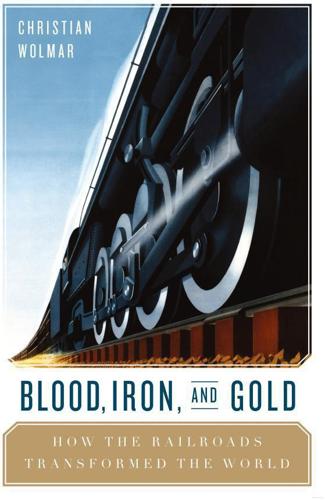
Blood, Iron, and Gold: How the Railways Transformed the World
by
Christian Wolmar
Published 1 Mar 2010
He created something of a cottage industry, making sixty engines himself and, after his patents ran out, a further three hundred were built by other engineers over the next half-century, many for export to countries such as the USA, the German states and the Austrian Empire where one was even used to drive the fountains for Prinz von Schwarzenberg’s palace in Vienna. Towards the end of the eighteenth century, it was James Watt who made steam power commercially viable by improving the efficiency of steam engines, and adapting them for a wide variety of purposes. The engines manufactured by the company he formed with Matthew Boulton were used to provide power for everything from ships and looms to sugar mills in the West Indies and cotton mills in the USA, but not for developing steam locomotives. Other inventors did try to put steam engines on wheels. The first to do so was the Frenchman Nicholas Cugnot whose fardier was intended to be used as an artillery tractor.
…
Yet, in this difficult transitional period for the railways, there were still doubts as to whether diesel or steam technology represented the future. While the introduction of the early diesel services proved popular, the romance of powerful steam engines remained enticing and technological improvements appeared to suggest that steam still represented the future for rail. Certainly steam engines, helped by improvements, put up a good fight before being outdone by the two superior and more efficient technologies of diesel and electric traction. Although various radical changes to the basic steam engine were tried, such as the Russian locomotives which used a combination of both diesel and steam power, the future of the technology seemed to lie more in attempts to refine rather than radically change traditional design.
…
As the putative railways increased in sophistication and length, wagons were coupled together to improve efficiency and by the 1750s, iron rails were introduced which proved far more durable than the wooden ones. The other major technical development required for the establishment of the railways was, of course, the steam engine and, later, the development of self-propelled locomotives, a far more complex and difficult process. Again, the idea of steam power dated to classical times but the first working steam engines were probably those of John Newcomen, an ironmaster from Devon who built them in the early years of the eighteenth century. Applying principles which had been observed by a French scientist, Denis Papin, who had noticed that a piston contained within a cylinder was a potential way of exploiting the power of steam, Newcomen developed the idea to produce engines to pump water from the mines.
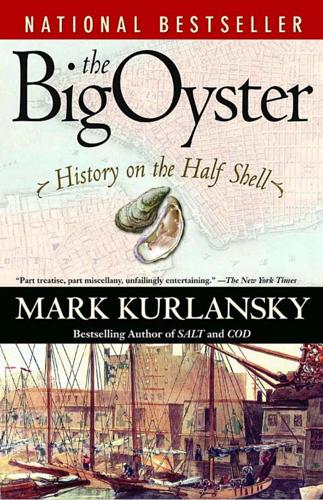
The Big Oyster
by
Mark Kurlansky
Published 20 Dec 2006
Livingston had a long-standing interest in steamboats, though, which was why he had been on board Fitch’s invention on the Collect. Being from New York City, Livingston immediately grasped the significance of Fulton’s idea for using the steam engine. The engine Fulton wanted to use had been developed by James Watt, a Scot who is also sometimes credited with inventing steam engines but had not—Thomas Savery did in 1698— 1 0 0 • T h e B i g O y s te r to drive two paddle wheels and power a vessel. Livingston contracted Fulton to build a boat with steam-powered paddle wheels that would work the Hudson River between New York City and Albany.
…
Virtually the same technique, stern dragging, was raising comparatively little controversy in the fisheries targeting cod, flounder, and other bottom fish until the midtwentieth century. The crisis of overfishing became apparent in oyster beds more than a century before it became apparent in fish stocks. Dredging and bottom dragging were first done under sail, but it was the steam engine that made them dangerously efficient. An oyster dredge dragged a heavy bar along the bed with a netting basket behind it. Immediately it was seen that such a device could clear out the ocean floor. Victor Coste vehemently opposed oyster dredges. In an 1858 report to the French emperor Napoléon III, he stated, “Six weeks of daily dragging would be enough to denude the whole coast of France.”
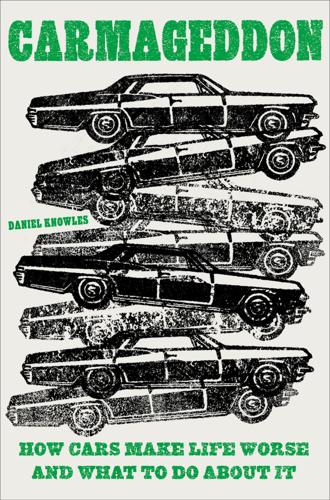
Carmageddon: How Cars Make Life Worse and What to Do About It
by
Daniel Knowles
Published 27 Mar 2023
That is, if you make something more abundant, the price of it will fall, and people will use it much more than they previously did. William Stanley Jevons was an English economist in the nineteenth century who looked at coal. Jevons noticed that when James Watt improved the efficiency of the steam engine, so that it did not need anywhere near as much coal to use, the result was not that demand for coal fell. Rather, it meant that running steam engines was much cheaper, so people did it much more. In a similar way, increasing the amount of road space does not lead to less congestion. Rather, it increases the number of cars. The problem, Jacobs recognized, was not the cars themselves.
…
profits property development protests public policy public transportation buses in cities in India in Japan in London Los Angeles Musk on subsidies race real estate redlining new roads registration, car Republicans rickshaws ride-sharing services ring roads road building Rothstein, Richard safety bicycle San Francisco, California Saumarez Smith, Otto scandals Schwartz, Sam, 1114 Sea Link (toll road) segregation pedestrian “self-driving” cars Shoup, Donald Shuto Kōsoku-dōro Kabushiki-gaisha (Metropolitan Expressway Company) Singapore size, car skyscrapers “slums” The Slums of Beverly Hills (film) solar power Sorensen, Andre South Side Chicago Speck, Jeff speed cameras speed limits sprawl in cities Standard Oil steam engines streetcars streets/roads costs of demand for residential ring subsidies car ownership public transportation suburbs suburbs sprawl in subsidies for white flight and subway systems SUVs taxes French, 249 gasoline taxis technology electronic vehicles internal combustion engine ride-sharing services Tesla Texas Toderian, Brent Tokyo, Japan tolls Toyota traffic accidents in cities city planning and gridlock Jacobs on lanes New York ride-sharing services increasing segregation trams impacted by traffic engineers trains/rail lines high-speed HS2 Japanese nationalized trams trucks tunnels Turbocharged Direct Injection (TDI) engines Uber United Kingdom (UK) car ownership Department for Transport Parliament United States (US) car ownership cars per capita cities Department of Energy Department of Transportation free parking in government National Transportation Safety Board oil industry in vehicular deaths Vancouver, Canada Victorian era Voie Georges-Pompidou Volkswagen walking Washington, D.C.

The Rough Guide to England
by
Rough Guides
Published 29 Mar 2018
Unlike the more specialist industrial towns that grew up across the north and the Midlands, “Brum” – and its “Brummies” – turned its hand to every kind of manufacturing, gaining the epithet “the city of 1001 trades”. It was here that the pioneers of the Industrial Revolution – James Watt, Matthew Boulton, Josiah Wedgwood, Joseph Priestley and Erasmus Darwin (grandfather of Charles) – formed the Lunar Society, an extraordinary melting pot of scientific and industrial ideas. They conceived the world’s first purpose-built factory, invented gas lighting and pioneered both the distillation of oxygen and the mass production of the steam engine. Thus, a modest Midlands market town mushroomed into the nation’s economic dynamo, with a population to match: in 1841 there were 180,000 inhabitants; just fifty years later that number had trebled.
…
The Industrial Revolution England’s triumph over Napoleon was underpinned by its financial strength, which was itself born of the Industrial Revolution, the switch from an agricultural to a manufacturing economy that transformed the face of the country within a century. The earliest mechanized production was in the northern cotton mills, where cotton-spinning progressed from a cottage industry to a highly productive factory-based system. Initially, river water powered the mills, but the technology changed after James Watt patented his steam engine in 1781. Watt’s engines needed coal, which made it convenient to locate mills and factories near coal mines, a tendency that was accelerated as ironworks took up coal as a smelting fuel, vastly increasing the output from their furnaces. Accordingly, there was a shift of population towards the Midlands and the north of England, where the great coal reserves were located, and as the industrial economy boomed and diversified, so these regions’ towns mushroomed at an extraordinary rate.
…
St Paul’s church St Paul’s Square, B3 1QZ • Ring for opening times • 0121 236 7858, stpaulsjq.church On St Paul’s Square, an attractive ensemble of old houses flank St Paul’s church, whose rational symmetries, dating to the 1770s, are an excellent illustration of Neoclassical design. To the people who paid for it (by public subscription), though, there was much more to the building than aesthetics: gone were the mysteries of the medieval church, replaced by a church of the Enlightenment and one that proved popular with the new industrialists – both Matthew Boulton and James Watt had family pews here, though Watt never actually turned up. Jewellery Quarter Birmingham’s long-established Jewellery Quarter is located to the northwest of Snow Hill station. Buckle- and toy-makers first colonized this area in the 1750s, opening the way for hundreds of silversmiths, jewellers and goldsmiths, and today there are still several hundred jewellery-related companies in the district.
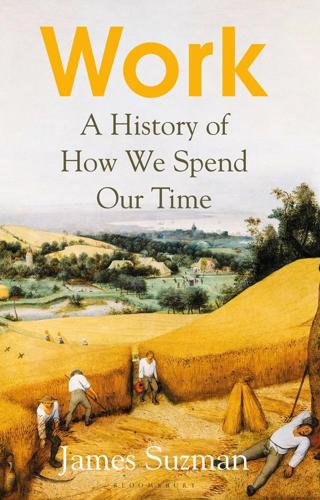
Work: A History of How We Spend Our Time
by
James Suzman
Published 2 Sep 2020
When Coriolis referred to the process of hitting a billiard ball as doing ‘work’, he was, of course, not focused singularly on billiards. The first economically viable steam engines had been invented a few years previously, showing that fire was capable of much more than charring meat and melting iron in a smithy’s forge. Yet there was no satisfactory way of evaluating the capabilities of the steam engines that were powering Europe’s Industrial Revolution. Coriolis wanted to describe, measure and compare accurately the capabilities of things like water wheels, carthorses, steam engines and human beings. By then many other mathematicians and engineers had already arrived at concepts broadly equivalent to what Coriolis called ‘work’.
…
The only places where coal ever rivalled wood as a domestic fuel source were those where shallow deposits were easily accessed and dense populations had already burned their way through most of the local forests. Elsewhere it was only after steam engines came into widespread use that coal and other fossil fuels became an important energy source. This was not only because demand for combustible fuel sky-rocketed as people became aware of its potential, but also because the first widespread use of steam engines was to pump water from sodden coal pits, so making it possible for miners to dig out more coal than they ever could before. The first rudimentary steam engines were built long before any Enlightenment scientists began to worry about how to measure how much work these machines were capable of doing.
…
Philip Larkin, ‘Toads’ Contents Illustrations Introduction: The Economic Problem PART ONE IN THE BEGINNING 1 To Live is to Work 2 Idle Hands and Busy Beaks 3 Tools and Skills 4 Fire’s Other Gifts PART TWO THE PROVIDENT ENVIRONMENT 5 ‘The Original Affluent Society’ 6 Ghosts in the Forest PART THREE TOILING IN THE FIELDS 7 Leaping off the Edge 8 Feasts and Famines 9 Time is Money 10 The First Machines PART FOUR CREATURES OF THE CITY 11 The Bright Lights 12 The Malady of Infinite Aspiration 13 Top Talent 14 The Death of a Salaryman 15 The New Disease Conclusion Notes Acknowledgements Index A Note on the Author Illustrations A male masked weaver in the final stages of completing a nest An Acheulean hand-axe Ju/’hoan hunter’s kit Relative brain sizes of ancestral humans Reconstruction of a 70,000–75,000-year-old Nassarius shell necklace recovered from Blombos Cave in South Africa Independent centres of plant domestication Reconstruction of a Natufian stone sickle A monolithic ‘zookeeper’ at Göbekli Tepe Neolithic Middle East The Oberkassel Puppy meets Aibo Timeline indicating estimated dates and location of major animal domestications 10,000-year-old skeleton of a 1,000kg, two-metre-tall auroch recovered from Vig in Denmark in 1905 Proportion of the population living in urban areas 1500–2016 The world’s oldest pay-record: a cuneiform tablet documenting payment of workers in beer c.3000 BC An aelopile – the first steam engine as described by Hero of Alexander in AD 50 Changes in weekly working hours in the UK, USA and France 1870–2000 Graph showing real GDP per capita in the USA nearly doubles between 1980 and 2015 but real median incomes stagnate Changes in household income USA 1945–2015 Clark’s tri-sector model indicating how service-sector sector employment offset declines in primary and secondary industries Introduction THE ECONOMIC PROBLEM The first industrial revolution was coughed out of the soot-blackened chimneys of coal-fired steam engines; the second leapt from electric wall sockets; and the third took the form of the electronic micro-processor.

Empire of Cotton: A Global History
by
Sven Beckert
Published 2 Dec 2014
The stretched roving was then twisted into yarn and wound onto the spindles as the carriage was pushed back in. Unlike with the water frame, which operated continuously, yarn was produced in five-foot bursts, but was stronger and finer than yarn produced on water frames. The mule was first powered by water (which remained the dominant source of power until the 1820s), but later mostly by steam engines (which James Watt patented in 1769).13 With spinning no longer a laggard, pressure shifted back to weaving. First came a vast expansion of home-based weaving. With new machines and an abundant supply of thread, this was a golden age for weavers all over the Lancashire and Cheshire countryside, as tens of thousands of cottagers spent endless hours on their looms working up the rapidly increasing output of British spinning factories.
…
Konotopov et al., Istoriia otechestvennoi tekstil’noi promyshlennosti (Moscow: Legprombytizdat, 1992), 268–69; For Atkinson see Edward Atkinson, Cotton: Articles from the New York Herald (Boston: Albert J. Wright, 1877), 31. 25. As reflected, for example, in the Proceedings of the Manchester Chamber of Commerce; in M8/2/1/16, Proceedings of the Manchester Chamber of Commerce, 1919–1925, Manchester Library and Local Studies, Manchester. 26. Times, October 3, 1923, 9; see also James Watt Jr. to Richard Bond, Esq., July 7, 1934, in DDX1115/6/26, Liverpool Records Office, Liverpool; as quoted in Spector-Marks, “Mr. Ghandi Visits Lancashire,” 44. 27. “Textile Shutdown Visioned by Curley: New England Industry Will Die in Six Months Unless Washington Helps, He Says,” New York Times, April 15, 1935.
…
The cotton men debated the affairs of the world with surprising nonchalance, even though their own occupations were almost banal—making and hawking cotton thread and cloth. They owned noisy, dirty, crowded, and decidedly unrefined factories; they lived in cities black with soot from coal-fueled steam engines; they breathed the stench of human sweat and human waste. They ran an empire, but hardly seemed like emperors. Only a hundred years earlier, the ancestors of these cotton men would have laughed at the thought of a cotton empire. Cotton was grown in small batches and worked up by the hearth; the cotton industry played a marginal role at best in the United Kingdom.

Under a White Sky: The Nature of the Future
by
Elizabeth Kolbert
Published 15 Mar 2021
“The start of the switchover from control of climate by nature to control by humans occurred several thousand years ago,” William Ruddiman, a professor emeritus at the University of Virginia and the most prominent proponent of an “early Anthropocene,” has written. According to a second, more widely held view, the switchover only really started in the late-eighteenth century, after the Scottish engineer James Watt designed a new kind of steam engine. Watt’s engine, it’s often said, anachronistically, “kick-started” the Industrial Revolution. As water power gave way to steam power, CO2 emissions began to rise, at first slowly, then vertiginously. In 1776, the first year Watt marketed his invention, humans emitted some fifteen million tons of CO2.

Stakeholder Capitalism: A Global Economy That Works for Progress, People and Planet
by
Klaus Schwab
Published 7 Jan 2021
But even with these advances in technology and wealth, the vast majority of people in Europe by the end of the 18th century were still active in farming, their lives having changed little from that of their forebears many centuries ago. The First Industrial Revolution This all changed with the arrival of the so-called First Industrial Revolution, primarily in Great Britain. By the 1760s, James Watt and his steam engine were poised to revolutionize industry. Progress was irregular at first, but by the early 19th century Britain's entrepreneurs were well on their way to becoming the world's most successful. In a matter of decades, British steam trains, ships, and machinery took over the world, and Great Britain became the most powerful empire in the world.
…
First Wave of Globalization (19th Century–1914) This started to change with the first wave of globalization, which occurred over the century, roughly ending in 1914. By the end of the 18th century, Great Britain had started to dominate the world both geographically, through the establishment of the British Empire, and technologically, with innovations such as the steam engine, the industrial weaving machine, and more. It was the era of the First Industrial Revolution. Britain in particular positioned itself as a fantastic twin engine of global trade. On the one hand, steamships and trains could transport goods over thousands of miles, both within countries and across countries.
…
Back in 2015, I realized we were at the dawn of a new era—one of artificial intelligence, advanced robotics, and integrated cyber-physical systems—and that together they constituted a Fourth Industrial Revolution. The new technologies we were witnessing, including also 3D printing, quantum computing, precision medicine, and others, I came to believe, were on par with that of the First Industrial Revolution—the steam engine—those of the Second Industrial Revolution—the combustion engine and electricity—and that of the Third Industrial Revolution—information technology and computing. They were leading to a disruption of the workforce, changing the nature of not just what we do but who we are, something I previously described in my book The Fourth Industrial Revolution.4 In their landmark 2013 study “The Future of Employment,” Carl Frey and Michael Osborne of Oxford first warned of the kind of disruption this could bring about.5 They notoriously estimated up to half of jobs would be altered in the coming years because of these new technologies, with many of them disappearing altogether.

Stakeholder Capitalism: A Global Economy That Works for Progress, People and Planet
by
Klaus Schwab
and
Peter Vanham
Published 27 Jan 2021
But even with these advances in technology and wealth, the vast majority of people in Europe by the end of the 18th century were still active in farming, their lives having changed little from that of their forebears many centuries ago. The First Industrial Revolution This all changed with the arrival of the so-called First Industrial Revolution, primarily in Great Britain. By the 1760s, James Watt and his steam engine were poised to revolutionize industry. Progress was irregular at first, but by the early 19th century Britain's entrepreneurs were well on their way to becoming the world's most successful. In a matter of decades, British steam trains, ships, and machinery took over the world, and Great Britain became the most powerful empire in the world.
…
First Wave of Globalization (19th Century–1914) This started to change with the first wave of globalization, which occurred over the century, roughly ending in 1914. By the end of the 18th century, Great Britain had started to dominate the world both geographically, through the establishment of the British Empire, and technologically, with innovations such as the steam engine, the industrial weaving machine, and more. It was the era of the First Industrial Revolution. Britain in particular positioned itself as a fantastic twin engine of global trade. On the one hand, steamships and trains could transport goods over thousands of miles, both within countries and across countries.
…
Back in 2015, I realized we were at the dawn of a new era—one of artificial intelligence, advanced robotics, and integrated cyber-physical systems—and that together they constituted a Fourth Industrial Revolution. The new technologies we were witnessing, including also 3D printing, quantum computing, precision medicine, and others, I came to believe, were on par with that of the First Industrial Revolution—the steam engine—those of the Second Industrial Revolution—the combustion engine and electricity—and that of the Third Industrial Revolution—information technology and computing. They were leading to a disruption of the workforce, changing the nature of not just what we do but who we are, something I previously described in my book The Fourth Industrial Revolution.4 In their landmark 2013 study “The Future of Employment,” Carl Frey and Michael Osborne of Oxford first warned of the kind of disruption this could bring about.5 They notoriously estimated up to half of jobs would be altered in the coming years because of these new technologies, with many of them disappearing altogether.

The Stonemason: A History of Building Britain
by
Andrew Ziminski
Published 5 Mar 2020
Without these engines and the new world they powered, the further development of trade along quiet backwater routes such as the Kennet and Avon to the rest of the nation and burgeoning empire, would have been unthinkable. Thomas Newcomen put together the first successful piston steam engine in the first decade of the eighteenth century. Scotsman James Watt, with his business partner Matthew Boulton, created the even more efficient engine in 1781, one that reduced the consumption of coal by three quarters. This is what the elder at Crofton evolved from. As it wheezed its way to the end of its cycle, I retired with the help of an amiable boiler man, happy to spend the chill autumnal evening beside the boiler’s warm oily glow on my foam mat and bivvy bag reflecting on the changes that this technology wrought to our world.
…
Leaving the bridge in my wake, I saw the distant polluting pall of the pumping station’s chimney smeared across the chilly blue sky before I heard, carried along the waterway, the engine’s wheezing beats. The brick stabling seemed only just able to contain the two beasts inside, as the engines gurgled and grunted their way through the day. The elder, built by Boulton and Watt at the Soho Works in Smethwick near Birmingham, is the world’s oldest steam engine still capable of carrying out its original job in the place it was designed for. It has been running on and off since the year of Napoleon’s retreat from Moscow. The other engine was built by Harvey & Co. of Hayle, Cornwall, in 1846. I thought the great brick chimney a piece of architecture far more worthy than the showy domesticity of its cousins at Hampton Court, which do nothing better than aid the provision of heat and hot food.

The Rise and Fall of American Growth: The U.S. Standard of Living Since the Civil War (The Princeton Economic History of the Western World)
by
Robert J. Gordon
Published 12 Jan 2016
The importance of the horse became apparent when in the fall of 1872 horses in cities throughout the northeast caught a virulent strain of horse flu and could not be used for work: City life came to a standstill … Streetcar companies suspended service, undelivered freight accumulated at wharves and railroad depots, consumers lacked milk, ice, and groceries, saloons lacked beer, work halted at construction sites, brickyards, and factories, and city governments curtailed fire protection and garbage collection.53 A full century after James Watt’s steam engine, why were cities so dependent on horses rather than steam-powered devices? Disadvantages of steam engines within the narrow confines of cities included the ever-present danger of fires started by sparks, their acrid black smoke, their deafening noise, and their heavy weight, which cracked street pavements. LEISURE, FROM NEWSPAPERS TO SALOONS By 1870, the American invention of the telegraph had announced the joining together of the transcontinental railway, had in 1861 made the Pony Express obsolete, and had allowed local print newspapers to report the events of national and world affairs on the day that they happened, including daily chronicles of carnage in the Civil War.
…
Although this book’s coverage begins in 1870, we should not neglect the role of individuals before that year. Among the Americans notable for pre-1870 inventions are Samuel F. B. Morse for his 1844 invention of the telegraph and Cyrus McCormick for his 1834 invention of the reaper. They were preceded by many British inventors going back to Thomas Newcomen and James Watt (the inventors of the steam engine) and George Stephenson (who shares in the invention of the railroad). Most studies of long-term economic growth attempt to subdivide the sources of growth among the inputs, particularly the number of worker-hours and the amount of physical capital per worker-hour, and the “residual” that remains after the contributions of labor and capital are subtracted out.
…
Mechanization of agriculture lagged behind that of manufacturing, in part because steam engines were too expensive and bulky to be purchased by individual farmers. Thus the horse became dominant over the steam engine in farming and intra-urban transportation for the same reasons—its bulkiness and expense (additional factors inside cities were noise that disturbed citizens and vibration that destroyed the streets).31 Unsolved until the arrival of the internal combustion engine was the problem of devising a self-propelled steam engine that could operate “on soft, uneven ground without sinking in or tipping over. In other words, a self-propelled steam engine had to be like a horse.”32 Though drought, heat, and insects were particular problems in the Great Plains, even farmers in the most fertile areas of the Midwest within 200 miles of Chicago were suffering by the late 1880s.

Paper: A World History
by
Mark Kurlansky
Published 3 Apr 2016
A NUMBER OF eighteenth-century discoveries were emblematic of the nineteenth century. The use of coke—baked carbon with sulfur removed—improved metal and eventually led to steel. The steam engine was first invented in 1698 by Thomas Savery in England to pump water out of mines. In 1712 a blacksmith, Thomas Newcomen, designed a steam-powered piston-driven engine for the same purpose. The steam engine was greatly improved in 1765 by James Watt, who created a revolution in powering machines. Then in 1804, the British Royal Navy built a steam-powered conveyor belt for the production of a type of crackers called ship’s biscuits.
…
It was far faster than the flatbed type press used earlier—millions of copies of a page could be printed in a day. NOW THERE WAS both the demand and the capacity for much more printing, but where could additional paper be found? In the first two decades of the nineteenth century, steam engines made their way into paper mills, replacing waterpower. This meant that paper mills could operate at the same pace year-round regardless of the water level in the rivers. But since steam engines were coal fired, it also meant that papermaking was dependent on the price of coal. The problem of the demand for rags outstripping the supply had not been resolved, but was slightly eased when German chemist Carl Scheele, working in Sweden, discovered chlorine in 1774.
…
But it was not until they began learning the Arab ways of mathematics and science, and started expanding literacy, that parchment made from animal hides—their previous writing material—became too slow and expensive to make in the face of their fast-growing needs. The growth of intellectual pursuits and government bureaucracy, along with the spread of ideas and the expansion of commerce, is what led to papermaking. But its international growth was a remarkably slow process. The use of printing presses, steam engines, automobiles, and computers spread internationally over far shorter periods of time than did paper. Paper seems an unlikely invention—breaking wood or fabric down into its cellulose fibers, diluting them with water, and passing the resulting liquid over a screen so that it randomly weaves and forms a sheet is not an idea that would logically come to mind, especially in an age when no one knew what cellulose was.

The Burning Answer: The Solar Revolution: A Quest for Sustainable Power
by
Keith Barnham
Published 7 May 2015
We will meet other renewable technologies that you may not have been aware originate in solar power. There is a simple way to check if numbers you come across in the energy debate are referring to energy or power. If the number represents power, then the number must be followed by a letter W. This stands for watts, the unit of power, named after the Scottish engineer James Watt who developed one of the earliest steam engines. You will often find a k, M or G before the W – as in kW, MW and GW – where the k, M and G stand for a thousand, a million and a thousand million respectively. If the number represents energy, a number of units are commonly used. The most likely one in any debate about electricity supply is kWh, which is short for 1,000 watts times hours.
…
Heat pumps Like the solar technologies in Chapter 8, the quotation from Ecclesiastes is appropriate yet again for heat pumps. The Industrial Revolution took off in the nineteenth century because engineers developed steam engines. These used the heat energy at high temperature produced by burning coal to generate steam that pushed pistons that powered the Industrial Revolution. The pioneers who developed the first steam engines were practical types, not particularly interested in the physics that made them work or any theoretical ideas that might make them more efficient. The first person to think seriously about such matters was Sadi Carnot, a French army engineer.
…
It was not until 31 December, in our representative year, that human development really started to speed up. Late in the morning on the last day of the year our upright walking ancestors in Africa and Asia, known as the Ergasts, discovered fire and the burning began. At two minutes to midnight on New Year’s Eve, Stonehenge was built. Around nine seconds before midnight, the first coal-burning steam engines started working. At three seconds before midnight, the motor car was invented, the large-scale exploitation of oil started and the two equations E = mc2 and E = hf were discovered. Around two seconds before midnight, plutonium was reinvented. It is midnight on 31 December. What does the future hold?
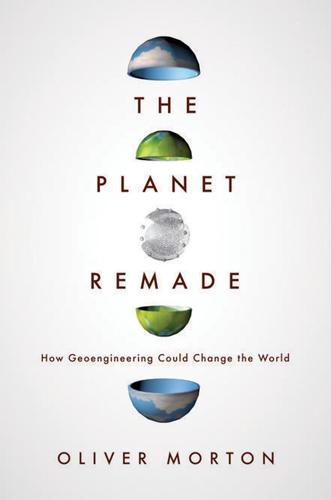
The Planet Remade: How Geoengineering Could Change the World
by
Oliver Morton
Published 26 Sep 2015
Such a committee is currently discussing both whether there should be an Anthropocene and, if so, where it should begin. They could conceivably just choose to set a date. Thus some argue for fixing the beginning at 1750 – a date frequently used in climate circles as a stand-in for the pre-industrial, with the steam engines designed by James Watt and Matthew Boulton just about to come on to the market. Others prefer 1950, which marks an inflection point after which the industrialization of the earthsystem picked up pace considerably, with carbon-dioxide emissions, industrial nitrogen fixation and all sorts of other processes kicking into their present high gear.
…
Representing the size of an energy flow with the width of an arrow, as Trenberth does, is a visual convention instituted for the comparison of steam engines by an Anglo-Irish engineer in the late nineteenth century, Matthew Sankey.* That an engineer’s approach to representing steam engines should end up applied to all sorts of other systems – and, in the hands of climate scientists, to the flows of energy that animate the earthsystem itself – should not come as a surprise. Thermodynamics, the science of energy, heat, work and power, began as the science of steam engines; as it developed over the nineteenth century, it became clear that it had to be a study of those engines and the environment in which they operate – that is to say, a science of systems and flows.
…
Library of Congress Control Number 2015946728 ISBN 978-0-691-14825-0 Typeset by Avon DataSet, Bidford on Avon, Warwickshire Printed on recycled paper Printed in the United States of America 1 3 5 7 9 10 8 6 4 2 For Joe Morton, Dominic Harrison, Eva Herle Schaffer and Jack Bacon – My millennials Contents Introduction: Two Questions 1 Climate Risks and Responsibilities 5 The Second Fossil-Fuel Century 8 Altering the Earthsystem 22 Deliberate Planets, Imagined Worlds 26 Part One: Energies 1 The Top of the World 35 Discovering the Stratosphere 38 Fallout 43 The Ozone Layer 47 The Veilmakers 54 2 A Planet Called Weather 57 The Worldfalls 62 The Trenberth Diagram and Climate Science 66 Steam Engines and Spaceship Earth 71 3 Pinatubo 83 Volcanoes and Climate 86 Predictions and Surprises 93 4 Dimming the Noontime Sun 100 Rough Magic 107 Promethean Science 112 5 Coming to Think This Way 124 Martians and Moral Equivalents 129 The Day Before Yesterday 135 The Rise of Carbon Dioxide Politics 139 6 Moving the Goalposts 148 From Plan B to Breathing Space 156 Expanding the Boundaries 165 Part Two: Substances 7 Nitrogen 175 The Making of the Population Bomb 184 Defusing the Population Bomb 189 Far from Fixed 195 How to Spot a Geoengineer 201 8 Carbon Past, Carbon Present 209 The Anthropocene 219 The Greening Planet 229 9 Carbon Present, Carbon Future 243 Ocean Anaemia 251 Cultivating One’s Garden 259 10 Sulphur and Soggy Mirrors 268 Global Cooling 274 Cloudships 283 Bright Patchwork Planet 288 What the Thunder Didn’t Say 298 Part Three: Possibilities 11 The Ends of the World 305 Control and Catastrophe 312 Doom and Denial 317 The Traditions of Titans 323 A Tale of Two Cliques 332 After Such Knowledge 338 12 The Deliberate Planet 344 The Concert 347 Small Effects, and Bad Ones 359 And Straight on ’til Morning 369 Envoi 375 Acknowledgements 379 References, Notes and Further Reading 383 Bibliography 393 Index 415 Introduction Two Questions Let us go then, you and I, When the evening is spread out against the sky Like a patient etherized upon a table T.

QI: The Book of General Ignorance - The Noticeably Stouter Edition
by
Lloyd, John
and
Mitchinson, John
Published 7 Oct 2010
She carried it with her at all times in a velvet bag until she died twenty-nine years later and it was returned to Raleigh’s tomb at St Margaret’s, Westminster. Who invented the steam engine? a) James Watt b) George Stephenson c) Richard Trevithick d) Thomas Newcomen e) A Heron from Egypt Heron (sometimes called Hero) takes the prize, some 1,600 years before Newcomen’s engine of 1711. Heron lived in Alexandria around AD 62, and is best known as a mathematician and geometer. He was also a visionary inventor and his aeolopile or ‘wind-ball’ was the first working steam engine. Using the same principle as jet propulsion, a steam-driven metal sphere spun round at 1,500 rpm.
…
How many galaxies are visible to the naked eye? What man-made artefacts can be seen from the moon? Which of these are Chinese inventions? Where did Marco Polo come from? What is Croatia’s most lasting contribution to world business? Who introduced tobacco and potatoes to England? Who invented the steam engine? Who invented the telephone? What’s quite interesting about Scotland, kilts, bagpipes, haggis, porridge, whisky and tartan? Where does Chicken Tikka Masala come from? Is French toast from France? Who invented champagne? Where was the guillotine invented? Where was ‘La Marseillaise’ written?
…
F. 1 sleep, healthy amount of 1 sloths as most dangerous animal 1 metabolism of 1 three-toed 1 two-toed 1, 2 Slovakia, smallest dog from 1 smallpox 1, 2 smoking 1, 2, 3, 4 snakes charming of 1 poisonous, not venomous 1 probability of a bite 1 rattlesnakes on 1970s TV 1 tolerant of poison 1 snow, Eskimo words for 1 soccer 1 Solanges, Comte de 1 solanine 1 sound barrier, first invention to break 1 South Africa 1, 2, 3 South America 1, 2, 3 cannibalism in 1 flamingos in 1 guinea pigs in 1 peanuts in 1 Spanish pronunciation in 1 South China tigers 1, 2 Spain 1, 2, 3, 4, 5, 6, 7, 8, 9 cannibalism in 1 pronunciation in, and the ‘lisp’ 1 Spam 1 Spears, Britney 1 Spencer, Herbert 1 sperm and division of labour 1 of dogs 1 sensitivity to scents 1 sperm whales 1 Sphinx 1 spiders 1, 2, 3 spirulina 1 Spitfire 1 ‘sport of kings’ 1 squirrels, fur of 1 stamps 1 stars Boomerang Nebula 1 names of constellations 1 Olbers’ paradox 1 shape of 1 visible 1 steam engine, inventor of 1 stomach ulcers, cause of 1 Stone Age peoples, habitats of 1 strawberries 1 Strutt, William John, Lord Rayleigh 1 Stuart, Gilbert 1 Suetonius 1 suicide rate, highest 1 Sundblom, Haddon 1, 2 superconductors 1, 2 superstitions, and pragmatism 1 ‘survival of the fittest’, coining of term 1 Sweden 1, 2, 3 suicide rate in 1 Swiss Family Robinson, surname of 1 Switzerland biscuits in 1 inventions of 1 St Bernards 1 Swiss rolls 1 synaesthesia 1 Tammann, Gustav 1 Tanzania 1 tartans, origins of 1 Taylor, David 1 Taylor, Montague 1 Tchaikovsky, Pyotr Ilyich 1 tea 1, 2, 3 teeth celluloid 1, 2 decay of, and bacteria 1 dental statistics (modern) 1 Washington’s false teeth 1, 2, 3 ‘Waterloo teeth’ 1 Teflon, discovery of 1 telephone, inventor of 1 television, effects on health 1 Tennant, Smithson 1 Thailand 1, 2 capital of 1 chicken ancestor in 1 Theory of Relativity, inventor of 1 thermoception 1 Thom, Charles 1 Thoreau, Henry David 1 Thule 1 Tibet 1 tigers 1 age of, when dangerous 1 highest concentration of 1 see also South China tigers tobacco 1 chemicals in 1 introduced to England 1 as a medicine 1 unusual fertilisers for 1 as world’s biggest killer 1 togas 1 Tokyo 1 toothpaste, bears and 1 Tour de France 1 Toynbee, Arnold 1 Trafalgar, Battle of 1 transport car accidents 1, 2 hydrofoil 1 railways 1 rickshaws 1 Treaty of Madrid 1 Treaty of Versailles 1 trees ‘anti-greenhouse effect’ 1 and loofahs 1 ozone released from 1 role of forest fires 1 in thunderstorms 1, 2 world’s most useful 1 Truman, Harry S. 1 tsunamis 1, 2 tulips, origins of 1 tungsten 1 Turkey 1, 2, 3, 4 turkeys farming techniques 1 origins of 1 Turner, Herbert Hall 1 Turner, J.

Crossing the Heart of Africa: An Odyssey of Love and Adventure
by
Julian Smith
Published 7 Dec 2010
In the late nineteenth century, the concept of marriage was shifting from purely practical to one that was more romantic. But among the upper classes of Victorian England (and her colonies, such as New Zealand), marriage was still more akin to a business merger than a starry-eyed union of hearts. Gertrude was a direct descendant of James Watt, the Scottish inventor of the steam engine. She lived in a forty-room Mediterranean-style villa overlooking the Pacific Ocean, with double tennis courts and a retinue of servants. Grogan came from a respectable family, but after being kicked out of Cambridge and serving in the army, he was painfully aware of how little he had to offer a wife except “a skinful of amoeba, malaria germs and similar parasitic mementoes … [and] … a head full of vagrant ideas.”
…
As the British closed in, her captain ordered the three engineers who had brought her all the way from Germany to sink the ship to keep her out of enemy hands. The poor bastards filled the Graf with sand and sent her to the bottom near the settlement of Kigoma, near Ujiji. Less than ten years later, the British refloated the ship, replaced her steam engines with twin diesels, and recommissioned her the MV Liemba. Her strange story inspired C. S. Forester’s 1935 novel The African Queen. Today she is the oldest passenger ship in the world. You made it halfway! All downhill from here—I’m thinking of you every day. I opened Laura’s next card on the Liemba’s rear deck, sitting on a pile of orange life jackets.
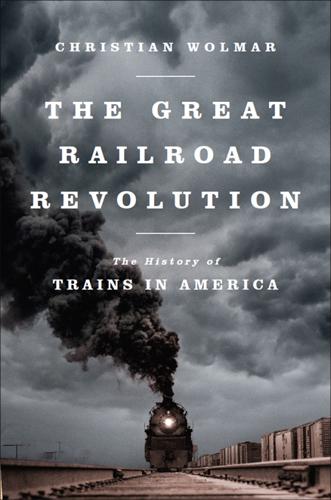
The Great Railroad Revolution
by
Christian Wolmar
Published 9 Jun 2014
By 1733, when Newcomen’s patents ran out, around sixty of his engines had been produced. Working in the second half of the eighteenth century, Scottish inventor and engineer James Watt made steam commercially viable by improving the efficiency of engines and adapting them for a wide variety of purposes. Boulton & Watt, his partnership with Birmingham manufacturer Matthew Boulton, became the most important builder of steam engines in the world, cornering the market by registering a patent that effectively gave them a monopoly on all steam-engine development in the UK until the end of the eighteenth century. Steam power quickly became commonplace in the early nineteenth century, and it was Boulton & Watt that provided the engine for the world’s first “practical” steamboat, the Charlotte Dundas, which made its short maiden voyage on a Glasgow canal in 1803.
…
It was not, therefore, the competition of canals and railroads that did in the turnpikes, but their own shortcomings: “Many turnpike companies had failed even before this [railroad and canal] competition appeared and those which lasted after about 1830 [the advent of the railroads] had for the most part already demonstrated their financial unprofitability.”14 Moreover, railroads would have the advantage of a technology that ultimately proved to be their most effective weapon. Whereas steam engines were quickly adapted to operate on rails, they could not function on roads because they were too heavy and appropriate steering mechanisms had not yet been devised. A road carriage had to be light enough to spare the road surface while having to carry all the paraphernalia of its own heavy and hot machinery in addition to the payload of passengers or freight, all crammed into a single vehicle and perhaps, at most, one trailer.
…
The engines in steamships may have been precursors of those used in locomotives, but they were different in several respects: most notably, they could be far bigger, since they did not have to drag their weight along on land, and they could be less efficient, since ships had the capacity to carry vast quantities of fuel. Nevertheless, thanks to the steamships, by the time serious thought was being given to railroads, the key requirements for locomotive technology were in place. However, it was one thing to fit a large steam engine into a ship, where space was not at a premium, and quite another getting it down to a size small enough to move itself under its own power. To progress from the production of steam power to the development of a railroad required two significant steps. First, the engine had to be put on wheels to make it mobile, and then the wheels had to be placed on rails.

The Quest: Energy, Security, and the Remaking of the Modern World
by
Daniel Yergin
Published 14 May 2011
The stakes are huge in this new race: the fuel of the future for the automobile, the shape of tomorrow’s transportation, and global political and economic power. This time out, the total purse to the winners will be measured in trillions of dollars. THE STEAM ENGINE In 1712 Thomas Newcomen invented the first mechanical steam engine, used to pump water out of coal mines. Many decades later, the Scottish inventor James Watt dramatically improved the design and efficiency of the steam engine, bringing it, as one historian wrote, “within reach of all branches of the economy.” The result was the “Age of Steam.” Around the same time, a Swiss engineer, Nicolas Joseph Cugnot, with funding from France’s King Louis XV, developed a steam-powered vehicle that would transport artillery on the battlefield at speeds approaching five miles per hour, carrying four passengers.
…
Environmental priorities need to continue to be integrated into the production and consumption of energy. They should be analyzed and assessed in terms of impact and scale and cost-benefit analysis, assuring access to energy, with appropriate environmental safeguards. The whole sweep of Carnot’s great revolution—from the steam engine start-up of James Watt in the eighteenth century and the oil start-up of Colonel Edwin Drake in the nineteenth century to the latest cleantech start-ups to be spun out of Sand Hill Road and whatever is currently bubbling in the lab—demonstrates that the advances of energy are the result of innovation and conviction.
…
Cugnot’s mechanical beast performed badly and was vexingly unbalanced for traversing the French countryside. The king finally gave up on Cugnot and cut off the funding.3 Over the nineteenth century, enormous advances were made in the steam engine, which powered not only the mills and factories of the Industrial Revolution but also the railways and ships. By the latter decades of the nineteenth century, the steam engine was a highly developed machine that tied together the world. By then, however, a competitor had appeared. HERR OTTO In 1864 a 31-year-old entrepreneur, Eugene Langen, made his way to a workshop on Gereonswall street in the city of Cologne, Germany, where he heard an “erratic thrashing.”
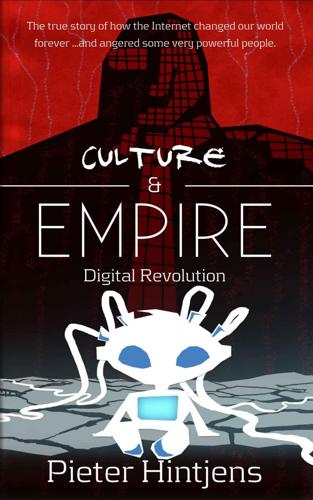
Culture & Empire: Digital Revolution
by
Pieter Hintjens
Published 11 Mar 2013
If email had been patented -- which happily it was not -- then we would have suffered two decades of stagnation and suspension of cost gravity. This has happened often in history, notably during the Industrial Revolution, with James Watt's steam engine patents. As Michele Boldrin and David K. Levine wrote, in their book "Against Intellectual Monopoly", "During the period of Watt's patents the United Kingdom added about 750 horsepower of steam engines per year. In the thirty years following Watt's patents, additional horsepower was added at a rate of more than 4,000 per year." Any expensive product or service that is widely used, yet immune to cost gravity -- such as medicines or mobile phone calls -- is protected by a patent cartel.
…
Two thousand years ago, we invented clean water, hot baths, social security, highways, concrete, and civil engineering, and built continent-wide trading empires. We invented public and private law as the basis for modern legal systems, and the free market. It all went well except for the lead in the water. Two hundred and fifty years ago, we invented the steam engine and decided it was more profitable to build factories than grow sugar. We invented "intellectual property" on the basis that if we didn't own the ideas in our minds, we would stop thinking. About five decades ago, we invented the Internet as a few megabytes of technical protocols anyone could implement for free.
…
The end result is that firms like Buffalo that are doing real innovation are taxed by private interests who make no products and do no innovation at all. In the worst cases, where patents hit a really crucial area of technology, cost gravity slows down for two decades while the monopoly owner tries to bully the industry into licensing deals. It happens over and over, from steam engines to touch screens. Patent holders and their wealth offer such a powerful example of the "success of strong private property rights," and the costs remain hidden. Who is measuring expected cost gravity, and raising the alarm bells when it doesn't happen? Answering the Pro-Patent Arguments Now let's give the pro-patent arguments a fair and open trial before we take them out back and shoot them.
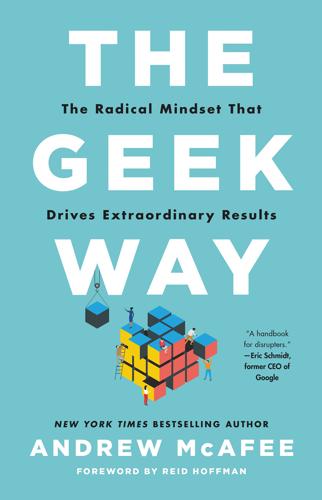
The Geek Way: The Radical Mindset That Drives Extraordinary Results
by
Andrew McAfee
Published 14 Nov 2023
questions go back and forth and improve the state of the world. The tinkerers often start the dialogue by making an improvement that gets the scientists curious. For example, scientists’ questions about why James Watt’s steam engine worked so much better than its predecessors helped create the discipline of thermodynamics. The scientists then deepen the tinkerers’ understanding and give them better tools. The formulation of the famous three laws of thermodynamics has helped countless designers and engineers build better engines. The interplay between how and why happens in all fields. Antonio Stradivari worked for decades on how to make string instruments sound better.
…
The tinkerers want to get something to work better. That something could be a sea kayak, poison made from a frog’s skin, a steam engine, or a company. These folk rely mainly on their intelligence, experience, and intuition to guide their efforts. Their guiding question is “How can I improve this?” The scientists are more theoretical. Their guiding question is “Why does this work the way it does?” Why is one sea kayak faster than another? Why is poison prepared one particular way more potent? Why is this steam engine, or that company, more efficient? “How…?” questions and “Why…?” questions go back and forth and improve the state of the world.
…
As we wrote in our 2014 book, The Second Machine Age, “The Industrial Revolution… allowed us to overcome the limitations of muscle power, human and animal, and generate massive amounts of useful energy at will… Now comes the second machine age. Computers and other digital advances are doing for mental power—the ability to use our brains to understand and shape our environments—what the steam engine and its descendants did for muscle power. They’re allowing us to blow past previous limitations and taking us into new territory.” The Right Word Erik and I also published two other books about digital transformation: Race Against the Machine (2011) and Machine | Platform | Crowd (2017).
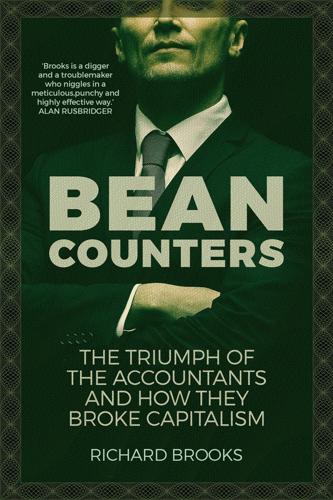
Bean Counters: The Triumph of the Accountants and How They Broke Capitalism
by
Richard Brooks
Published 23 Apr 2018
Double-entry bookkeeping was central to that diligence. Many British industrial pioneers were avid bookkeepers. James Watt, whose steam engine propelled the Industrial Revolution, owed his commercial success to accounting as well as engineering. The Clydeside Presbyterian kept double-entry books charting the progress of his early enterprises, partly to justify the funding provided to him by his shipowning father. By the time Watt and his partner Matthew Boulton were making steam engines in Birmingham in the 1790s, it wasn’t just the invention of a separate condenser that was giving them the edge over less sophisticated rivals.
…
McKinsey & Co., 75 Japan, 2, 82, 230–31, 234–5, 240–41 Jennings, Andrew, 220, 224 Jerome, Saint, 35 Jersey, 89, 94–5, 158 job costing, 43 Johnson Matthey Bank, 91, 128 Johnson, Lyndon Baines, 63 joint stock companies, 41 Joint Stock Companies Act 1844: 47 1856: 50 Jones, Lewis Davies, 54, 55, 56 Jowell, Tessa, 196 junk bonds, 85 Kanebo, 240 Kapital, Das (Marx), 3 Kattner, Markus, 225 Keating, Charles, 85–6, 91 Kellaway, Lucy, 275 Kershaw, Sue, 199 Kgosana, Moses, 250 Khodorkovsky, Mikhail, 237 King, Mervyn, 273 Kirby, Paul, 208 Klynveld Kraayenhof, 235 Klynveld, Piet, ix KMG, 235 Knievel, Robert Craig ‘Evel’, 182 Koch Industries, 171 Kohl, Marius, 168, 174–7 KPMG, ix–x, 2, 10, 11, 48, 97, 116–19, 141–2, 149–50, 256–9, 264–7, 276 and Barnier proposals, 255 and Bradford & Bingley, 141–2, 149 and Brexit, 203, 204 and British Aerospace/BAE Systems, 213 Canary Wharf base, 256 Chelsea Flower Show, 200 in China, 244, 245, 251–2 and Civil Service Live conference, 201 Claridges conference (2007), 122 and Co-operative Bank, 142, 149, 150 and Comroad, 240 and collateralized debt obligations (CDOs), 121 and Countrywide Financial Corporation, 48, 118, 257 ‘Cutting Through Complexity’, 11–12 Data & Analytics (D&A), 272 and defence, 188, 189, 200, 202, 216, 217, 265 establishment of (1987), 235 and European Central Bank, 10 and Federal National Mortgage Association (‘Fannie Mae’), 118–19, 257 and FIFA, 220–28 and Financial Crisis Inquiry Commission, 145 and Financial Reporting Council, 144, 209 and General Electric, 5–6 governments, advice to, 186, 187, 188, 189, 191, 192–3, 197–9, 202–6, 249 and GPT, 216, 217 and HBOS, 141, 142–3, 149, 150, 257 and Hinkley Point, 204–6 and Hollinger, 154–5 and Hong Kong protests (2014), 251–2 and House of Lords committee (2010), 146 and HS2, 197–9 and HSBC, 229–30 and Imperial Tobacco, 202, 266–7 in India, 249 integrated reporting, 18 key performance indicators, 12 and Lockheed Martin, 202, 265 and Miller Energy, 261 and Ministry of Defence, 188, 189, 202, 216, 217, 265 and National Health Service (NHS), 192–3, 202, 266 and New Century Financial Corporation, 48, 116–18, 257 No. 20, Grosvenor Street, Mayfair, ix–x, x, 277–8 ‘One Firm’ philosophy, 275 and ‘patent box’ tax breaks, 180 Performance Club 1999 trips, 160 and Petrofac, 218 and private finance initiative (PFI), 186, 187, 188, 189, 191, 249 and Privy Purse, 68 revolving door, 206, 207, 208 and Saudi British Joint Business Council, 218 Scott London Rolex scandal (2013), 15 and securitization, 121, 122 and Siemens, 240 in South Africa, 249–50 and subprime mortgages, 10, 48, 116–19 and sustainable development, 200 and tax avoidance, 154–5, 157, 158, 159–62, 180–81, 182, 186 thought leadership, 12 and thrifts, 87 and Tier One, 257 and Wachovia, 257 and Xerox, 109–10 Kreuger, Ivar, 57 Kubena, Mike, 237 Labour Party, 66, 94, 114, 178, 179, 184–92, 194, 201, 209, 230 Lake Michigan, 73 Land, Nick, 144, 182 Lang, Ian, 95 Last Supper, The (Leonardo da Vinci), 33 Lateran Council, Third (1179), 24 Law Commission, 93 Lawson, Nigel, 146 Lay, Kenneth, 99–100, 104, 107, 108 Leary, Simon, 191 Lehman Brothers, 12, 13, 92, 119, 131–3, 138, 144, 145, 148–9 Leigh, Edward, 189 Lend-Lease programme, 60 Leonardo da Vinci, 33 Levin, Carl, 159, 161 Levitt, Arthur, 96–8, 104 Lewis, Leigh, 207 Lewis, Michael, 112, 118 Liber Abaci (Fibonacci), 21–2 Liberal party, 50, 52 Liechtenstein, 220 limited liability, 50, 52, 91–5, 114 Lincoln Savings and Loan, 85–7 Linklaters, 140 Little, Royal, 61 Liverpool, Merseyside, 49 LJM, 104–5 Lloyds Bank, 140 Lockheed Martin, 202, 212, 265 London, England Big Bang (1986), 156 Canary Wharf, 256 Chelsea Flower Show, 200 Claridges, 122 Gordon Riots (1780), 38 Imperial College, 197 ‘light touch’ regulation, 114, 131, 209 Medici Bank, 26, 30 Olympic Games (2012), 196 Price Waterhouse, 54 Royal London Hospital, 190 School of Economics, 197 St Bartholomew’s Hospital, London, 190 Tate Modern, 16 Long Term Capital Management, 113 Louis XI, king of France, 31 low-balling, 79, 91 Lowe, Robert, 50 Luce, Edward, 17 Lucerne, Switzerland, 220 Luthiger, Fredy, 222, 223, 227 Luxembourg, 165–77, 179, 180, 181, 182, 245, 267–71, 278 LuxLeaks, 169–77, 179, 181, 245, 268, 269, 278 Lybrand, Ross Bros & Montgomery, 87 Lybrand, William, 56 Lynch, Loretta, 219, 223 Lyons, 31 MacGregor, John, 128 Mair, John, 42, 53 Management Consultancies Association, 190 Mandelson, Peter, 95, 207 Mapping the Market, 193 mark-to-market, 99–102, 113, 123, 124, 129–31 mark-to-model, 124–5, 126, 127, 131 mark-to-myth, 124, 131 Marlborough, Duke of, see Churchill, John Martin, William, 122–3 Marwick, James, ix, 48–9, 56, 62, 119, 158, 217, 233, 277 Marx, Karl, 3 Masters Tournament, 104 Masters, Adrian, 191 matches, 57 Mauritius, 158 Maxwell, Robert, 66, 87–8, 91 May, George, 73, 78, 82, 277 May, Theresa, 203 McConnell, Jack, 207 McCreevy, Charles, 164 McDonald’s, 170 McFall, John, 207 McKenna, Francine, 145, 274 McKinsey, 17, 74–7, 79, 81, 99, 108, 183, 191, 226, 263 McKinsey, James, 74–7 McLean, Bethany, 101 Measelle, Richard, 103 Medici family, 16, 26–32, 36 Cosimo, 26, 27, 28, 29, 31 Giovanni, 26 Lorenzo, 28, 29, 30 Medvedev, Dmitry, 17 Melbourne, Victoria, 48 mergers and acquisitions, 11, 54, 59–69, 71, 87 Merrill Lynch, 121 Mesopotamia, 1 Messezentrum conference centre, Zurich, 228 Metcalf, Lee, 80 Metz, France, 172, 173, 176 Mexico, 229 Michael, Bill, 149–50 Microsoft, 271 Milburn, Alan, 184, 191, 194, 207 Mill, John Stuart, 50 Miller Energy, 261 Ministry of Defence, UK, 188–90, 202, 212, 215–19, 265 Missal, Michael, 115, 116–17 Missouri, United States, 74 Mitchell, Andrew, 206, 208 Mitchell, Austin, 94, 230 Mitchell, Roger, 48, 56 Model T Ford, 71 Modern Times, 71 Monde, Le, 169 monetarism, 84 money laundering, 229–31 Montagu, Nicholas, 207 Monty Python, 15–16 Moore, Paul, 141 Morgan, Henry, 39 Morgan, John Pierpont, 54–5 Morgan Stanley, 119, 148 Morse, Amyas, 206 mortgage-backed securities (MBS), 120–21 Moselle, France, 171 Mossack Fonseca, 247 Mouget, Didier, 170, 171, 173 Mumbai, Maharashtra, 242 Munger, Charlie, 18, 135, 147 Myners, Paul, 146 Nally, Dennis, 5, 148 Nassau, Bahamas, 222 National Aeronautics and Space Administration (NASA), 76 National Audit Office, 187, 189, 206 National Crime Agency (NCA), 272 National Health Service (NHS), 183–4, 187, 190, 191–5, 266 National Westminster Bank (NatWest), 136 Nazi Germany (1933–45), 4, 234, 251 Neoplatonism, 28 Netherlands ABN Amro, 138 Ballast Nedam, 218–19 Klynveld Kraayenhof, 235 Royal Ahold, 238–9 Spanish (1556–1714), 36 taxation, 163, 164–5 New Century Financial Corporation, 48, 115–18, 257 New Delhi, India, 245, 249 New Labour, 114, 184–92, 194, 209 New York, United States, 57 beer business, 54 Britnell’s ‘Reform Revolution’ speech (2011), 192–3 County Law Association, 153 Deloitte compensation case (2009), 239 FIFA indictment (2015), 219, 223 Harris’ advisory services speech (2014), 264 Issuers’ and Investors’ Summit on CDOs/Credit Derivatives (2006), 121 Levitt’s ‘Numbers Game’ speech (1998), 96, 98 Marwick & Mitchell, 48 Price Waterhouse, 54 Stock Exchange, 55, 115, 234 Wall Street, 54, 69, 96, 101, 120–21 New York Times, 118, 236 New Zealand, 256 Newton, Isaac, 22 Nicholson, Kevin, 178, 182 Nieuwe Instructie (Christoffels), 36 Nike, 163 No. 20, Grosvenor Street, Mayfair, ix–x, x, 277–8 Noncomformism, 42 Norte del Valle Cartel, 229 Northern Rock, 125–9, 142–3, 148 Norway, 72 nuclear power, 204–6 ‘Numbers Game’ speech (1998), 96, 98 O’Donnell, Augustine ‘Gus’, 207 O’Rourke, Feargal, 164, 165 off-balance-sheet financing, 101, 102, 104, 106 Office of Tax Simplification, 179 oil crisis (1973), 84 oil-for-food programme, 225, 240 Olympic Games (2012), 196 Olympus, 241 One Hundred Group, 254 OPIS (Offshore Portfolio Investment Strategy), 159, 162 Oppenheimer & Co., 112–13 Organization for Economic Cooperation and Development (OECD), 170, 181, 214 Osborne, George, 149, 182, 248 Oscars, 16 Overend & Gurney, 51, 126 Oxford University, 181, 184 Oxley, Michael, 114, 122 de Pacioli, Luca Bartolomeo, 32–6, 34, 100, 124 Page, Stephen, 272 Pain, Jon, 208 Palin, Michael, 15–16 Palo Alto, Silicon Valley, 82 Panama Papers scandal (2016), 247 Panorama, 169, 220 Paradise Papers scandal (2017), 7, 247 Parmalat, 239, 243 Parrett, William, 148 partners, 8 Pearson, 169, 270 Pearson, Ian, 207 Peat, Marwick, Mitchell & Co., 48, 60, 63, 64, 79, 82, 233, 235 Peat, Michael, 68 Peat, William Barclay, ix, 48, 49, 68, 233, 277 Penn Central Transport Company, 64, 79 pension funds, 67 Pepsi, 166 Pergamon, 66 Perrin, Edouard, 168, 169, 171–2, 173, 174, 175 Persson, Mats, 208 Perugia University, 32 Pessoa, Fernando, 1 Peston, Robert, 197 Peterborough hospital, Cambridgeshire, 191 Petits secrets des grandes enterprises, Les, 169 Petrofac, 218 Pfizer, 163 Piot, Wim, 173, 181, 182 Pisa, Italy, 21 place value’ system, 21 political donations, 98 Ponzi schemes, 89 ‘pooling-of-interest’ accounting, 61–2, 63, 67, 96 post-balance sheet events, 72 Powell, Ian, 128, 201–2 Poynter, Kieran, 148, 150 premiums, 45 Presbyterianism, 42 Price, Samuel Lowell, 49 Price Waterhouse & Co., 49, 53–6, 57, 65, 67, 72, 73, 78–9, 82 and conflicts of interest, 73, 277 consultancy, 78–9, 81, 82 Coopers & Lybrand, merger with (1998), 49, 95 in Germany, 233 and Great Crash (1929), 57 in India, 233 international co-ordinating company, 234 and limited liability partnerships, 94 Palo Alto technology centre, 82 and private finance initiative (PFI), 185 in Russia, 236 and tax avoidance, 164 and tax code (1954), 153–4 and United States Steel, 55, 62, 233 PricewaterhouseCoopers (PwC), 2, 5, 6, 49, 95, 97 and American International Group, 134–5, 144, 145, 148 and Bank of Tokyo-Mitsubishi, 230–31 and Barclays, 6 Booz & Co. acquisition (2013), 263–4 and Brexit, 203 and British Home Stores (BHS), 260 Building Public Trust Awards, 256 ‘Building Relationships, Creating Value’, 12 and Cattles plc., 142 cyber-security, 272–3 establishment of (1998), 49, 95 and Financial Crisis Inquiry Commission, 145 and Financial Reporting Council, 142, 144, 209, 210 global operations, 235–6 and Goldman Sachs, 134–5, 148 and Google, 271 and GPT, 217, 218 and Heineken, 246 and Hong Kong protests (2014), 251–2 in India, 242 integrated reporting, 18 and Kanebo, 240 and Labour Party, 201 and National Health Service (NHS), 192, 194, 200 and Northern Rock, 126, 127–9, 142–3, 148 and Olympic Games (2012), 196 presentation (2017), 16 and private finance initiative (PFI), 187, 188–91, 196, 249 profits, 5 revolving door, 207, 208 and RSM Tenon, 210, 261 in Russia, 236–8 and Saudi British Joint Business Council, 218 and securitization, 121, 122, 129 and tax avoidance, 157, 165–79, 180, 182, 237, 246, 267–71, 278 thought leadership, 12 total tax contribution survey, 179 and Tyco, 109 in Ukraine, 238 and Vodafone, 165–6 Prince of Wales’s charity, 181 principal/agent problem, 13 Prior, Nick, 190 Privatbank, 238 Private Eye, 169, 180, 215, 255 private finance initiative (PFI), 185–91, 196, 203, 249 Privy Council, 94 Privy Purse, 68 production-line system, 71 productivity growth, 262–3 professional scepticism, 112, 130, 214, 224 professional services, 11, 72, 150, 183, 204–5, 251, 275, 279 Professional Standards Group, 105–7 Project Braveheart, 106 Project Nahanni, 102 Protestant work ethic, 3 Protestantism, 3, 42, 43 Prudential, 157 Public Accounts Committee, 281 Public Company Accounting Oversight Board (PCAOB), 144–5, 242–3, 253, 261, 274 Puerto Rico, 163 Putin, Vladimir, 17, 237 Qatar, 228 Quakers, 42, 49 Railway Regulation Act (1844), 45 railways United Kingdom, 44–7, 49, 115 United States, 51, 52, 53, 70, 73 Rake, Michael, 144, 149, 150, 162, 181, 257 Raptors, 105 Rayonier, 59 Reagan, Ronald, 80, 84, 154, 184 Reckoning, The (Soll), 27 Redpath, Leopold, 46 regulation, UK, 13, 127, 209–10, 213–14, 259 and Brexit, 273 deregulation (1980s), 95 and financial crisis (2007–8), 127–8, 137–45 Financial Conduct Authority, 140, 149, 281 Financial Reporting Council, 138, 142, 144, 149, 182, 209–10, 213–14, 259, 261 Financial Services Authority, 127, 128, 137, 138, 140 ‘light touch’, 114, 131, 209–10 Railway Regulation Act (1844), 45 self-regulation, 88, 90 regulation, US, 91, 260 Bush administration (2001–2009), 114, 145, 253 Celler–Kefauver Act (1950), 59, 61 competition on price, 79–80 deregulation (1980s), 84–5, 95, 112 derivatives, 122 and Enron, 99 and Lincoln Savings and Loan, 85–7 mark to market, 99 numbers-game era (1990s), 110 Public Company Accounting and Oversight Board, 242–3, 253, 260 Roosevelt, Theodore administration (1901–9), 56–7 Sarbanes–Oxley Act (2002), 114, 122 self-regulation, 61 Trump administration (2017–), 273, 274 and Westec collapse (1966), 63 see also Securities and Exchange Commission Renaissance, 3, 16, 22, 24–37 Renjen, Punit, 275 ‘Repo 105’ technique, 131–3, 149 revolving door, 206–8, 272 Ripley, William Zebina, 57 Robson, Steve, 144, 207 Rockefeller, John Davison, 53, 71 Rolex, 15, 215 Rolls-Royce, 213 Roman numerals, 22 Rome, ancient, 24 Rome, Italy, 25, 27 Roosevelt, Franklin, 58 Roosevelt, Theodore, 56 de Roover, Raymond, 27 Rowland, Roland ‘Tiny’, 66 Royal African Company, 37 Royal Ahold, 238–9 Royal Bank of Scotland, 47, 90, 136–40, 142, 157, 241, 259 Royal London Hospital, 190 RSM Tenon, 210, 261 Russian Federation, 17, 236–8 Ryan, Tim, 134, 148 Saltwater Slavery (Smallwood), 37 Samek, Steve, 103 SANGCOM, 214–19 Sansepolcro, 32 Sarbanes, Paul, 114, 122 Sarbanes–Oxley Act (2002), 114, 122 Sassetti, Francesco, 16, 29, 30, 31, 41 Satyam, 242 Saudi Arabia, 212–19, 221 Saudi British Joint Business Council, 218 Saunders, Stuart, 64 Save South Africa, 250 savings-and-loan mutuals, 84–7, 91, 99 Sberbank, 237 Scarlett, John, 207, 272 Schlich, William, 149 Schumpeter, Joseph, 3 scientific management, 71, 76 Scotland, ix, 42, 47–9, 70, 224 Scuola di Rialto, Venice, 32 Second World War (1939–45), 59, 60, 77, 234 Secret Intelligence Service, 207, 272 Securities Act (1933), 58 Securities and Exchange Commission (SEC), 281 and consulting, 80, 104 and Enron, 99, 104, 108 and Hollinger, 154 Levitt’s ‘Numbers Game’ speech (1998), 96, 98, 104 and Lincoln Savings and Loan, 85, 86 and Penn Central Transport Company, 64 and ‘pooling-of-interest’ accounting, 61, 62 and Public Company Accounting Oversight Board (PCAOB), 144 PwC India fined (2011), 242 and Xerox, 109–10 securitization, 101–2, 116, 119–23, 125, 129–31, 133–40, 148, 265 Seidler, Lee, 68–9, 79 self-regulation, 6, 61, 88 Serious Fraud Office, 213, 216, 217, 218, 219 Sexton, Richard, 129, 268, 278 shadow banking system, 115 Shanghai, China, 17 Shaxson, Nicholas, 247 Sheraton, 59 Sherlock, Neil, 208 short selling, 112, 115, 116 Siemens, 240 Sikka, Prem, 94 Silicon Valley, California, 82 Simec International Ltd, 214, 215 Sinaloa Cartel, 229 Sinclair, Upton, 14 Singapore, 163 Sino-Forest, 244 Skilling, Jeff, 99–100, 101, 105, 108 Skinner, Paul, 208 Slater, James, 65 slave trade, 4, 37 Smallwood, Stephanie, 37 Smallwood, Trevor, 158 Smartest Guys in the Room, The (McLean and Elkind), 101 Smith, Adam, 13 Smith, Jacqui, 207 Snell, Charles, 40 Social Justice Commission, 184 Soll, Jacob, 27 Sombart, Werner, 3–4, 22 SOS (Short Option Strategy), 159, 162 South Africa, 213, 223–4, 249–50 South Sea Company, 39–41, 42, 44 Soviet Union (1922–91), 236 Spacek, Leonard, 62, 77–8 Spain, 36, 39, 241 special investment vehicles, 115 Spinwatch, 201 Sproul, David, 256, 258 St Bartholomew’s Hospital, London, 190 St Louis, Missouri, 56 Standard & Poor’s, 149 Standard Chartered Bank, 230, 231 Starbucks, 178 steam engine, 43 Stein, Jeffrey, 161 Stephenson, George, 44 Stevens, Mark, 82–3 Stevenson, James, 1st Baron Stevenson, 141 Stiglitz, Joseph, 114 stock market, 68, 69, 92, 96 ‘Go-Go’ years (1960s), 62, 65 and Great Crash (1929), 57, 58 and J. P. Morgan, 54–5 and ‘pooling-of-interest’ accounting, 60–62, 96 railways (UK), 45–7 Stone, Timothy, 188, 189, 190, 204 Strachan, David, 208 Strathclyde, Lord, see Galbraith, Thomas stress testing, 10 subprime mortgages, x, 10, 36, 48, 111–22, 126, 130, 133, 136, 142, 274 Suddeutsche Zeitung, 169, 247 Sullivan, Arthur, 52 Sun City, North West Province, 250 Sunbeam, 97 Sunday Times, 228 Sweden, 246 Switzerland, 163, 178, 219–28, 236, 258 synergies, 60 Syvret, Stuart, 94 Tanzania, 213 Tanzi, Calisto, 239 Tate Modern, London, 16 tax, 46, 67, 81, 93–4, 153–82, 229–30, 246–8 Bermuda, 164 British Virgin Islands, 246 Cayman Islands, 104, 164, 246, 247 Ireland, 163–5, 168 Isle of Man, 247–8 Jersey, 89, 94–5, 158 Luxembourg, 165–77, 267–71, 278 Mauritius, 158 Netherlands, 163, 164–5 Puerto Rico, 163 Russia, 237 Singapore, 163 Switzerland, 163, 178 United Kingdom, 7, 46, 67, 94, 153, 155–9, 163–6, 177–82, 203 United States, 67, 92, 153–5, 159–63, 178, 236, 284 tax avoidance, 17, 84, 93–5, 153–82, 229–30, 246–8 Deloitte, 157, 158, 166, 203 Ernst & Young, 7, 156–7, 162, 180, 182, 246, 247 KPMG, 154–5, 157, 158, 159–62, 180–81, 182, 186, 229–30, 248 PricewaterhouseCoopers, 157, 165–79, 180, 182, 237, 246, 267–71, 278 tax havens, 154–5, 163–79, 203, 216, 246–8 Bahamas, 236 Bermuda, 164, 203 British Virgin Islands, 213, 220, 246 Cayman Islands, 104, 164, 214, 239, 246, 247 Delaware, 92, 236, 284 Ireland, 163–5, 168 Isle of Man, 247–8 Jersey, 89, 94–5, 158 Liechtenstein, 220 Luxembourg, 165–77, 267–71, 278 Mauritius, 158 Netherlands, 163, 164–5 Puerto Rico, 163 Singapore, 163 Switzerland, 163, 178, 230, 236 Tax Justice Network, 169 Taylor, Frederick Winslow, 71, 75 technocratism, 15 Teesside, England, 102 telegraph, 51 Telegraph, 154 Texas, United States, 91, 99–108 Textron, 61 Thatcher, Margaret, 84, 184 Thill, Marc, 174 ‘think straight, talk straight’, 72 thrifts, 84–7, 91, 99 Tier One, 257 Times, The, 66, 137 Tokyo, Japan, 230–31, 234–5 ‘too big to fail’, 40 ‘too critical to fail’, 273 ‘too few to fail’, 161 Tory party, 44 Tornado fighters, 212 Toshiba, 241 Touche Ross, 82, 89, 136 trade unions, 76 Treasure Islands (Shaxson), 247 Treasury, UK, 39, 68, 146, 179, 180, 189, 201, 203 Tribunal d’Arrondissement, 174 Trinidad and Tobago, 221, 223, 224 Trump, Donald, 17, 161, 273, 274 Truth in Securities (1933), 58 Turley, James, 148–9 Turner, Jonathan Adair, Baron Turner of Ecchinswell, 127 Tyco, 109, 264 Tyrie, Andrew, 197–8 UK Tax Planning Post-GAAR: What’s Left?
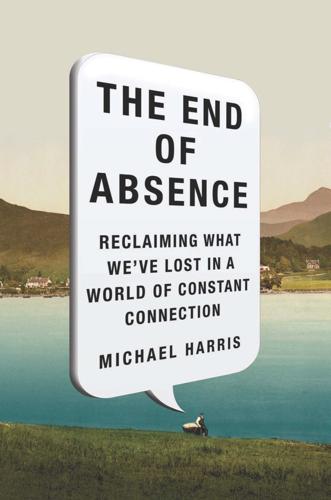
The End of Absence: Reclaiming What We've Lost in a World of Constant Connection
by
Michael Harris
Published 6 Aug 2014
[The Internet] seems to have become an end in and of itself. And how might we describe that end? So much of our inventiveness, it turns out, wells up from, and then perpetuates, a deep desire to gather the world into our arms. The harnessing of magnetism leads to the compass, making expansive seafaring possible. James Watt’s invention of the modern steam engine in 1765 obliterates distance. The telegraph, the transatlantic cable, and the telephone cast larger and larger lassos to draw home the voices of faraway lovers, peers, and purveyors of news. Motion pictures, at the end of the nineteenth century, reap a world’s worth of glittering images and deliver them to enthralled viewers in the dark.
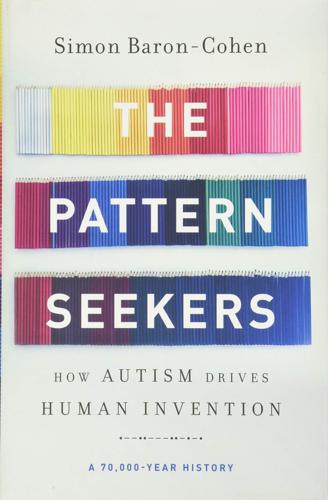
The Pattern Seekers: How Autism Drives Human Invention
by
Simon Baron-Cohen
Published 14 Aug 2020
For the Mayan system, see “Mayan mathematics,” The Story of Mathematics, www.storyofmathematics.com/mayan.html. 9. See R. Castleden (1993), The making of Stonehenge (New York: Routledge). 10. See D. Anthony (2007), The horse, the wheel, and language (Princeton, NJ: Princeton University Press). 11. This example can be thought of literally as “horse power,” although not in the way that James Watt, who invented steam engines, used the term. Watt calculated a mathematical way to equate horses to engine power. He measured the capability of a strong horse to pull a load. The conventional definition of “horsepower” is the power needed to pull 330 pounds 100 feet in one minute, or 33 pounds 1,000 feet in one minute, or 1,000 pounds 33 feet in one minute.

The Corruption of Capitalism: Why Rentiers Thrive and Work Does Not Pay
by
Guy Standing
Published 13 Jul 2016
Meanwhile, data from the European Patent Office analysed by the OECD in 2015 suggest that the average technological and economic value of patented inventions has been falling, probably reflecting growing defensive filings.8 Privatising innovation can actually impede scientific advance by making it harder for inventors to build on the inventions of others and by stifling the exchange of ideas. James Watt’s patent to protect his invention of the steam engine prevented further development of the technology until after his patent expired.9 Had César Milstein applied for a patent for his creation of monoclonal antibodies, many advances in cancer treatment would have been delayed.10 The decision of Tim Berners-Lee and CERN (the European Organization for Nuclear Research), where he worked, not to patent his 1989 invention of the World Wide Web paved the way for an explosion in information and communication technologies.
…
A once popular theory known as ‘Kondratieff long waves’ states that every sixty years or so the production structure is transformed by a technological revolution based on some marvellous invention: the water mill in the thirteenth century; the printing press in the late fifteenth century; the power loom and the steam engine in the eighteenth; the steel industry and electricity in the late nineteenth; and the car and Fordist mass production in the early twentieth. While there is little support for Kondratieff’s precise theory, clearly there have been periods of breakthroughs interspersed with periods of relative stability.

The Road to Conscious Machines
by
Michael Wooldridge
Published 2 Nov 2018
We could begin in the city of Prague in the 1600s, where, according to legend, the head rabbi created the Golem – a magical being fashioned from clay, intended to protect the city’s Jewish population from anti-Semitic attacks. We could begin with James Watt in eighteenth-century Scotland, designing the ‘Governor’, an ingenious automatic control system for the steam engines he was building, thereby laying the foundations for modern control theory. We could begin in the early nineteenth century with the young Mary Shelley, cooped up in a Swiss villa during a spell of bad weather, creating the story of Frankenstein to entertain her husband, the poet Percy Bysshe Shelley, and their family friend, the notorious Lord Byron.
…
A series of technological advances in textile processing from the 1730s onwards made it possible to build larger, faster textile-processing machines which could manufacture fabrics of a consistently high quality and on a scale that was impossible in cottage industries. Raw goods were imported through Liverpool and Manchester, from where they were taken to the mill towns that sprouted up to accommodate the new industry. At first, textile mills were water-powered, but advances in coal-powered steam engines led to a rapid take-up of this technology, relieving factories of the need to rely on potentially unpredictable water sources. Conveniently, coal to fuel these engines was also available in abundance across the north of England, and coal-mining towns thrived alongside the mill towns. The factory system that was ushered in by the Industrial Revolution brought with it a fundamental change in the nature of work for much of the population.

This Is for Everyone: The Captivating Memoir From the Inventor of the World Wide Web
by
Tim Berners-Lee
Published 8 Sep 2025
Following this, we travelled to London’s famous Science Museum, where I was scheduled to give a public talk. This was quite a spectacle. I had regularly visited the museum while growing up, and Rosemary had been there many times with her children. We walked through the museum’s grand Victorian hall, passing James Watt’s pioneering steam engine on the way to the event space, where perhaps a thousand people were waiting to see Dame Mary Archer present me with a Science Museum fellowship before my remarks around the birthday of the web. Tickets to the event had sold out within minutes. Those in attendance were, basically, fans of the web – they were my people.
…
Alongside them, on the canal banks, pedestrians and cyclists travelled the former towpaths where mules attached to ropes used to haul barges loaded with coal. This evolution of infrastructure was the parallel theme to my life as a technologist. The printing press; the glowing electronics at CERN; those great steam engines I had watched as a boy . . . I had seen them come and go. As each technology evolved, the kaleidoscope turned, rearranging the power dynamics of society, leaving old actors displaced, and bringing new ones to the fore. From my work with the early web, I knew that design choices made at the start would shape the nature and values of what was to come – and once those first design choices were made, they were very hard to change.
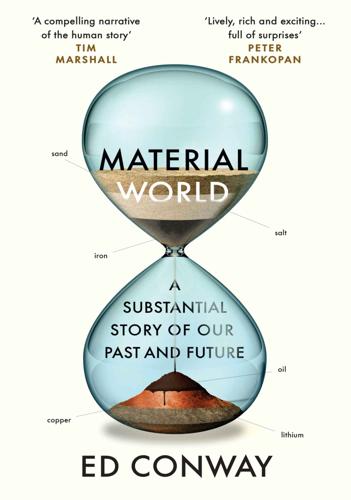
Material World: A Substantial Story of Our Past and Future
by
Ed Conway
Published 15 Jun 2023
And since coal was far more energy-dense a fuel than wood, not to mention far more abundant, Britain’s iron production suddenly rocketed ahead, prompting a series of other innovations. The more coal and iron Britain used, the more it needed to mine, and the deeper it mined, the more work it took to pump water out of the pits. This quandary prompted the invention of the steam engine – first the primitive machines of Thomas Savery and Thomas Newcomen and then the more sophisticated engines of James Watt. All of a sudden, coal could be used not just to make chemicals, glass and iron, but to fuel a moving wheel, which could just as easily push a locomotive as pump the water out of mines. Coal and iron were helping birth the industrial revolution – coal to fuel the machinery, iron to build it.
…
Glass When they consider humankind’s development, economic historians tend to look straight through glass. Why did the industrial revolution happen when and where it did: in Europe in the eighteenth and nineteenth centuries? There are many theories – about the role of political institutions or social and educational mores or geography. Sometimes one or two critical innovations might come up: the steam engine or the blast furnace, for instance. But if you posit that glass might have played a role, you are generally met with a blank stare. But glass lenses enabled us to peer into space, helping early astronomers such as Galileo discover that the earth orbited the sun. They helped boost the economic might of countries by enabling people to work more; until the invention of lenses, those losing their sight would have to retire early, but thanks to bi-convex lenses in spectacle frames, millions of people were able to extend their working lives.
…
A few years ago two historians, Alan Macfarlane and Gerry Martin, went methodically through 20 of the great experiments that advanced human knowledge – everything from Robert Boyle and Robert Hooke’s creation of a vacuum chamber to Isaac Newton’s theory of light to Michael Faraday’s investigations into electricity – and discovered that all but four of them relied in some way on glass prisms or containers or contraptions.4 Glass, in other words, was a foundational innovation, a general purpose technology like the wheel or the steam engine or the silicon chip. This magical product was important not just for what it was but for what it enabled us to do – to make further leaps of imagination and feats of invention. Indeed, it continues to play that role even today. The internet is mostly a mesh of information transmitted through glass wires and, as you’ll see later on in this section, without glass we would be unable to make the brains of the most advanced computers.
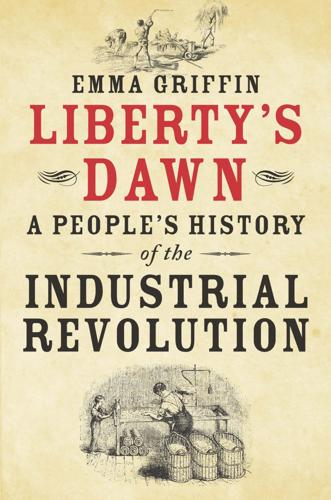
Liberty's Dawn: A People's History of the Industrial Revolution
by
Emma Griffin
Published 10 Jun 2013
But most of this work has focused on the great men and machines that turned Britain into the workshop of the world: James Hargreaves, Richard Arkwright, James Watt, George Stevenson, Isambard Kingdom Brunel; the spinning jenny, the water frame, the steam engine, the locomotive engine, the railways. These individuals and their achievements transformed Britain into an industrial nation and fully deserve the attention they have received. But so too do the ordinary men, women and children who worked the machines, hewed coal for the steam engines, and built and drove the trains. It is too often assumed that workers like these left little mark on the historical record and must for ever remain voiceless.
…
Here is Toynbee describing the advent of industrialisation: We now approach a darker period – a period as disastrous and as terrible as any through which a nation ever passed; disastrous and terrible because side by side with a great increase of wealth was seen an enormous increase of pauperism [and] the degradation of a large body of producers . . . The steam-engine, the spinning-jenny, the power-loom had torn up the population by the roots . . . The effects of the Industrial Revolution prove that free competition may produce wealth without producing well-being.40 Toynbee ushered the expression ‘industrial revolution’ into the English language, and his social interpretation of that newly named event continued to inform opinion through much of the twentieth century.
…
The evangelical churches invited male and female, young and old, respectable and very poor to take control of their lives. They empowered their members. And as such, they played their part in the transition to modern society. 4017.indd 211 25/01/13 8:21 PM chapter nine q Sons of Freedom In the towns and villages of the south men’s minds seemed to be slumbering, until the puff of the steam-engine should awaken them. (Frost, pp. 9–10) There was no Political Union in the village, there was no Odd Fellows’ Lodge, there was no circle of congenial spirits like those with whom he had associated for the last two years; but the young man was not inconvenienced by the deprivation. He became a leader where he had been a follower.
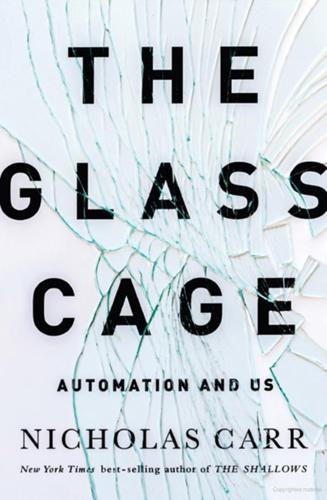
The Glass Cage: Automation and Us
by
Nicholas Carr
Published 28 Sep 2014
Sensory organs, a calculating brain, a stream of messages to control physical movements, and a feedback loop for learning: there you have the essence of automation, the essence of a robot. And there, too, you have the essence of a living being’s nervous system. The resemblance is no coincidence. In order to replace a human, an automated system first has to replicate a human, or at least some aspect of a human’s ability. Automated machines existed before World War II. James Watt’s steam engine, the original prime mover of the Industrial Revolution, incorporated an ingenious feedback device—the fly-ball governor—that enabled it to regulate its own operation. As the engine sped up, it rotated a pair of metal balls, creating a centrifugal force that pulled a lever to close a steam valve, keeping the engine from running too fast.

Empty Planet: The Shock of Global Population Decline
by
Darrell Bricker
and
John Ibbitson
Published 5 Feb 2019
“The coming together of the continents was a prerequisite for the population explosion of the past two centuries, and certainly played a role in the Industrial Revolution,” argues historian Alfred Crosby.29 But of course, the real cause of increasing lifespans was the Industrial Revolution itself: the acceleration in scientific and industrial knowledge that bequeathed the world we inhabit today. James Watt’s steam engine went into commercial use in the remarkable year of 1776. (Also in that year, Adam Smith wrote The Wealth of Nations and the United States declared its independence from Great Britain.) Mechanized production accelerated productivity—the factory, the railway, the telegraph, electric light, the internal combustion engine.

DarkMarket: Cyberthieves, Cybercops and You
by
Misha Glenny
Published 3 Oct 2011
The machines are only referred to as ‘skimmers’ if they are being used for nefarious purposes, otherwise they are identical in function to those commercially available. Some ‘skimmers’ are commercially produced and then acquired by criminals, others are home-made. The ‘skimmer’ was the carding equivalent of James Watt’s steam engine at the outset of the Industrial Revolution. Over the next decade the great majority of credit-card and PIN numbers (‘dumps’ and ‘wholes’, as they are known) used fraudulently were ‘skimmed’ from ATMs and businesses around the world. As a talented hacker, Dimitry also quickly noticed that the security systems developed by the nascent e-commerce community in the United States were primitive and easily cracked.
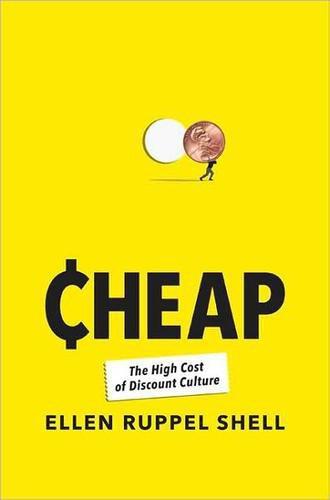
Cheap: The High Cost of Discount Culture
by
Ellen Ruppel Shell
Published 2 Jul 2009
The first contract known to stipulate interchangeable parts, it was a resounding step in the inexorable march toward low price. WHITNEY’S FAMOUS GIN, though not the font of mass production he claimed, nonetheless played a critical role in lowering the price of textiles. The gin separated cotton fiber from seed, cleaning more cotton in minutes than a battalion of humans could in a day. With the adaptation of James Watt’s steam engine as a power source, cotton cleaning became almost entirely mechanized, and within a few years of the gin’s patenting in 1774, the blizzard of cotton fiber spread beyond New England’s booming textile industry to Europe and as far away as Russia. The value of the U.S. cotton crop rose from $150,000 to more than $8 million in a decade.
…
Sears Sears, Richard Warren Sears catalog secondary processing system, of brain Sedona, Arizona selection, in discount stores selective discounting self-service ideal Sennett, Richard Shaiken, Harley shipping containers Shiv, Baba Shoppers World Discount Department Store shopping carts Shore, Steve shrimp farming imports of taste of wild vs. farm-raised Silk, Tim slavery, cotton production and Smith, Adam Smith, Christopher H. Smith, Merit Roe Smithfield Foods Soberman, David A. Sold American (McGovern) Southdale Spartan stagflation staleness factor standard of living post-World War II era during World War II, Starbucks steam engine Stichting Ingka Foundation strikes subsidies, farm subsistence farming suburbs decentralized shopping Korvette’s move into Subway Sudan Summers, Lawrence supermarkets Suri, Rajneesh ”A Survey of Outlet Mall Retailing: Past, Present and Future” (Coughlan and Soberman) Sysco Corporation tainted goods, from China Target taste, cheap food and Taylor, Frederick Winslow television Testament of a Furniture Dealer, The (Kamprad) textile industry Thailand Thaler, Richard Thomas, Dana thrift Tiffany Time Timmer, Peter Tommy Bahama ”Toward a Positive Theory of Consumer Choice” (Thaler) toy imports traditional marketplace Treasure Island Triangle Shirtwaist fire of 1911 Truman, Harry Trump, Donald Tversky, Amos Two Guys Ultimatum Game unemployment in 2008, Feds targeting of employment to fight inflation in Great Depression Uniform Product Code [UPC] unions.
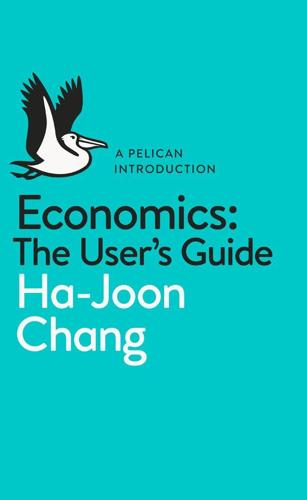
A Pelican Introduction Economics: A User's Guide
by
Ha-Joon Chang
Published 26 May 2014
Much of technological progress in complex modern industries happens through incremental innovations originating from pragmatic attempts to solve problems arising in the production process. This means that even production-line workers are involved in innovation. Indeed, Japanese automobile firms, especially Toyota, have benefited from a production method that maximizes worker inputs into the innovation process. Gone are the days when a genius like James Watt or Thomas Edison could (almost) single-handedly perfect new technologies. That is not all. When they innovate, firms draw on research output and research funding provided by various non-commercial actors – the government, universities and charitable foundations. The whole society is now involved in innovation.
…
.* All these ‘magical’ developments have been possible only because we have constantly invented better technologies, namely, better machines and better chemical processes. Starting from Abraham Darby’s coke-smelting technique in steel-making and John Kay’s flying shuttle for textile weaving in the early eighteenth century, an endless stream of technologies has emerged to change the world. We discussed some of these in Chapter 3. The steam engine, the internal combustion engine, electricity, organic chemistry, steel ships, (wired and wireless) telegraphy, aeroplanes, computers, nuclear fission, semiconductors and fibre optics are only the most important examples. Today, genetic engineering, renewable energy, ‘advanced’ materials (e.g., graphene) and nano-technologies are emerging to transform the world yet again.
…
Today, genetic engineering, renewable energy, ‘advanced’ materials (e.g., graphene) and nano-technologies are emerging to transform the world yet again. In the early days of the Industrial Revolution, new technologies were often developed by individual visionaries. As a result, until the late nineteenth and early twentieth centuries, many technologies were known by their inventors’ names – Kay’s flying shuttle, Watt’s steam engine, the Haber–Bosch process and so on. From the late nineteenth century, with technologies becoming increasingly complex, fewer and fewer of them have been invented by individuals. Companies started developing the capability to generate new technologies through R&D in their corporate labs. Around this time, governments also started investing actively in developing new technologies by either establishing public research labs (especially in agriculture) or subsidizing private-sector R&D activities.
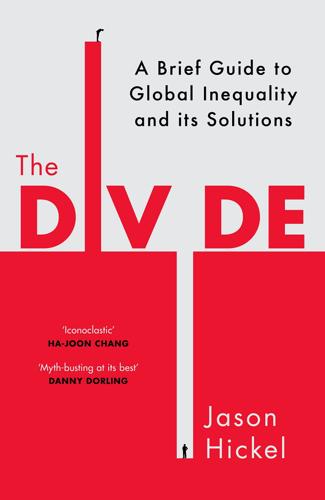
The Divide: A Brief Guide to Global Inequality and Its Solutions
by
Jason Hickel
Published 3 May 2017
The usual answer to these questions is the one we all learned in school. A series of technological innovations in Britain jump-started the Industrial Revolution that spread through Europe and the United States. The invention of the flying shuttle in 1733 made textile weaving much more efficient, and James Watt’s steam engine in 1781 made it possible to build large and powerful machines. Britain’s coal fields, which were usefully proximate to the large cities, provided cheap and abundant energy, and because the landscape was relatively flat it was easy to transport both coal and manufactured goods around the country via canals.
…
By virtue of scientific enquiry and geographical accident, Britain was able to build productive industries, and the sale of manufactured goods drove living standards to unprecedented new heights. This story is powerful in its simplicity, but by focusing only on what happened within Britain’s borders, it makes it seem as though these developments occurred in isolation from the rest of the world. Nothing could be further from the truth. In fact, by the time Watt built his steam engine, Britain was already at the centre of a world system that was roughly organised into two zones: the ‘core’ nations of Western Europe and the young United States, surrounded by the ‘peripheral’ regions of Asia, Africa and Latin America.5 And the two zones were in constant interaction, linked by a dense network of connections.
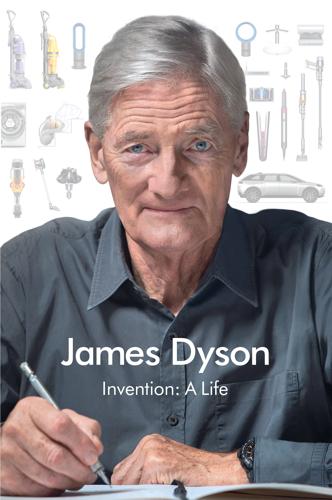
Invention: A Life
by
James Dyson
Published 6 Sep 2021
Lean engineering is good engineering. This is something engineers I admire have done since the advent of powered machinery. When, in 2010, I took part in Channel 4’s TV series Genius of Britain, I was able to show how by rethinking Thomas Newcomen’s slow and inefficient steam engine, dating from 1712 and used mostly for pumping water from mines, James Watt was able to increase its efficiency fivefold. The same was true for us at Dyson. From the DC01 onward, our first-generation vacuum cleaners used a proprietary Japanese 1400 W electric motor, while our competitors boasted of 2000 W and even 2400 W motors. However, we had no loss of suction, therefore we wasted none of our power, whereas the competitors lost suction and wasted so much of their power through clogged bags.
…
If unwittingly, the revolution in British agriculture during the seventeenth and eighteenth centuries, which also witnessed major improvements in the quality of sheep and cattle, did much to support the Industrial Revolution. In turn, the Industrial Revolution made farms ever more productive. In the 1850s, while engaged in the repair of agricultural machinery in a Kentish workshop at Rochester, Thomas Aveling had watched teams of six heavy horses dragging stationary steam engines to and from farms. He likened this to “six sailing vessels towing a steamer,” a thought, he said, that was “an insult to mechanical science.” In 1859, the thirty-five-year-old farmer and mechanic invented the steam traction engine that led to the internal combustion engine tractor and, ultimately, when combined with digital technology, the new generation of machines Dyson Farming uses today.
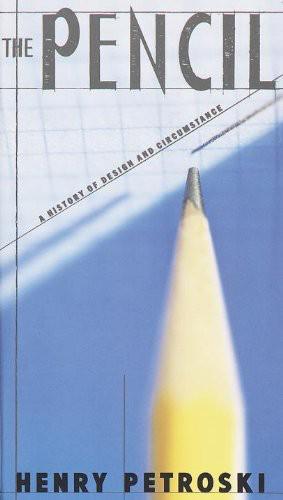
The Pencil: A History of Design and Circumstance
by
Henry Petroski
Published 2 Jan 1990
Many persons refused him help lest they should be thought to betray the secrets of their trade, and others were equally reluctant to enter into the nature of their profession, fearing that a free communication of their own thoughts would expose their ignorance of its principles, or would prove that its excellence did not depend upon any thing secret, or that could be concealed. Martin’s perception of the fears of mechanics is probably not exaggerated. James Watt, whose improvements in steam engines brought him fame and fortune, found that the production of copies of business letters was proving boring and time-consuming for him, and “yet their confidential and technical nature, coupled with Watt’s thriftiness, probably precluded using a copy clerk.” This situation prompted Watt to “discover a method of copying writing simultaneously,” by pressing tissue paper moistened with special liquids on the original written in a special ink.
…
This story of initial enthusiasm, early discouragement, repeated frustration, constant distraction, prolonged determination, total isolation, and, finally, a serviceable but far from perfect product has all the ring of an honest recollection of a real engineering endeavor, an odyssey from idea to crude prototype to artifact to improved artifact as full of adventure as Ulysses’ travels. And this is a story of research and development that can be repeated, mutatis mutandis, with “leadpencil” erased and “light bulb,” “steam engine,” or “iron bridge” written in its place. That the true course of development can be so easily forgotten, or not easily appreciated, especially by those who reap the benefits of the pioneers, is shown clearly by the romantic picture painted by someone who himself did not innovate so much as help make the pencils developed by others: In 1812 William Munroe, a cabinet maker by trade, pounded some plumbago with a hammer, mixed it in a spoon with some adhesive substance, and filled the compound into some cedar wood cases.
…
It became Johann Staedtler’s intention to establish a factory that would incorporate mills to grind graphite, kilns to bake leads, and machines to cut, slot, and shape wood for pencil cases, which at the time were being made out of imported Florida cedar as well as domestic alder and lime. Staedtler’s was an innovative and ambitious undertaking in the inaugural year of the first German railway, running between Nuremberg and Fürth, and only a year before the introduction of the first stationary steam engine in the area, but he was to succeed admirably. In addition to making black-lead pencils out of graphite and clay, the company also manufactured fine colored leads, using cinnabar and other natural pigments for the crayons, as colored pencils were called. While sixty-three different types of pencils would be shown by the firm at the 1840 Nuremberg Industrial Exhibition, J.
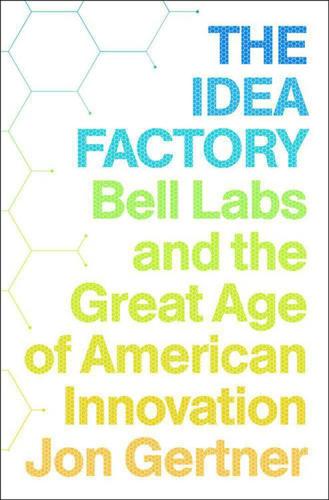
The Idea Factory: Bell Labs and the Great Age of American Innovation
by
Jon Gertner
Published 15 Mar 2012
They could talk to anyone in the national or global network. The only difference was that they could move. ENGEL WAS PUT IN CHARGE of the group planning the cellular system design. He would later look back and see the early 1970s as a perfect example of what engineers sometimes call “steam engine time.” This term refers to the Scottish engineer James Watt, the inventor of the first commercially popular steam engine, whose name is also memorialized in the term we use to measure power. In the late 1700s, Watt made startling improvements upon more basic ideas of how to use compressed steam to run heavy machinery. The knowledge needed to make such an engine had by then coalesced to the point that his innovation was, arguably, inevitable.
…
By the 1970s, the mobile business was ready to happen, Engel was sure, even if the marketers had their doubts. The technology was there. It was now just a matter of who was going to do it, and how fast they could make it work. “It was,” he says, “steam engine time for cellular.” The FCC’s decision to consider proposals for mobile radio had been the spark. But a number of other technologies made it steam engine time, too. To Engel’s colleague Dick Frenkiel, it seems unlikely that the early cellular pioneers at Bell Labs could have actually implemented their designs in the 1950s. “Cellular is a computer technology,” Frenkiel points out.
…
Pierce had grown up happily in Iowa and Minnesota; he admired his parents and was especially close with his mother, in part because (as he once told an interviewer) she had a sharper mind than his father.6 His father sold women’s hats to clothing stores, a job that often took him out of town for weeks on end, leaving Pierce’s mother in charge at home. He was always interested in technical things, even before he could understand them. Before he learned how to read, he would ask his mother to get him library books on electromotive force; as he grew older, he and his friends played with electric motors and steam engines, crystal radio sets and vacuum tube receivers. In the mid-1920s, Pierce, an only child, moved with his parents to California. At his high school in Long Beach, he discovered that algebra came easily to him. Then he discovered that geometry came easily to him. Then he discovered that chemistry came easily to him.

Warnings
by
Richard A. Clarke
Published 10 Apr 2017
As a result, due to our personal reluctance to appear amateur, we often quickly dismiss highly unconventional ideas, especially if they have only hitherto been explored on the big screen. *INVISIBLE OBVIOUS: For centuries, people had watched steam escape from the teakettle, but it took James Watt to realize this mundane daily phenomenon was a miraculous source of power that would fuel the steam engine and the Industrial Revolution. Richard Farson notes, “The most important discoveries, the greatest art, and the best management decisions come from taking a fresh look at what people take for granted or cannot see precisely because it is too obvious.”5 Farson calls this the “Invisible Obvious.”
…
In 1933, John Maynard Keynes predicted widespread unemployment “due to our discovery of means of economising the use of labour outrunning the pace at which we can find new uses for labour.”27 Technological evolution is part and parcel of the history of humanity; the introduction of the wheel, gunpowder, the steam engine, the car, the adding machine, have all led to systemic societal transformation. Most would contend that the world is better for it. The much-derided “buggy-whip maker,” who lost his job with the advent of the horseless carriage is a popular symbol of the workers left behind by technological progress.
…
See Gulf War Personal investment, of critics, 187–88 Personalized medicine, 331–32, 342 Personal responsibility, sense of, 185–86 Persuasion campaign, 364–65 Pessimism, 2, 3, 50, 236 “Pet Rock problem,” 321 Piccone, Michele, 380n Pielke, Roger, Jr., 254 Planetary Defense Program Office, 317, 322–23 Plant elevation, and Fukushima nuclear disaster, 89–90 Plaquemines Parish, 39 Plutonium spheres (pits), 83 Polar ice melt, 239, 245–52, 258–60, 360 Political threshold problem, 321–22 Polk Prize, 226 Pollack, James B., 273 Pomona College, 327 Pontchartrain, Lake, 40 Ponzi, Charles, 105 Ponzi scheme, 102–3, 105, 110–11, 113, 115 Population bomb, 192–93 Population Bomb, The (Ehrlich), 192–93 Population growth, 16, 192–93 Predictions, 13–15 Predictor (possible Cassandra), 168, 170, 182–86 President’s Daily Briefing, 24, 35 Prevention strategy, 362–64 Prince, Chuck, 145, 154, 156, 157 Professional investment, of critics, 187–88 Programmable logic controller (PLC), 291–92 Protecting Industrial Control Systems from Electronic Threats (Weiss), 286 Protein & Cell, 340 Providian, 152 Prykarpattyaoblenergo, 284–85 Public Health Service, 354–55 Pulitzer Prize, 50, 226 Putin, Vladimir, 285 Pyrrho of Elis, 185 Questioners, 184–85 Radiation exposure, 88 Ramadi, Iraq, 69 Rampart Investment Management, 101, 102, 105, 106, 109, 110 Raqqa, 68 Reacting, Ronald, 26 Reagan, Ronald, 21, 32, 277–78, 280 Recombinant DNA technology, 336–40 Red Army, 25, 26, 266 Red Team (Zenko), 379n Regulatory capture, 94–95, 96, 98, 115, 177–78 Reid, Ann, 222 Reis Crater, 307 Rendezvous with Rama (Clarke), 313 Response Availability, 170–71 Response strategies, 358–64 hedging, 361–62 mitigation and prevention, 362–64 surveillance, 359–60 Responsibility, diffusion of, 176–77, 215, 235, 321, 348 Revkin, Andrew, 244 Ribozymes, 328 Ring of Fire, 94 RNA, 327–28 Robock, Alan, 261, 273–74, 277–82 Robo-traders, 211 Roche, 225 Rockefeller Institute, 193 Roedersheimer, Keefe, 205 Rolling Stone (magazine), 338 Rometty, Ginni, 209 Roosevelt, Franklin D., 213 Roper, William, 214 Ross, Bill, 136 Ross, Lee, 184 Royal Academy, 345 Royal Air Force, 10 Royal Navy, 9 Royal Netherlands Meteorological Institute, 253 Rubenstein, Ariel, 380n Ruby, Jack, 99 Rumsfeld, Donald, 28–29 Russo, Rene, 219 Rutgers University, 261 Sagan, Carl, 273–77 Sago Mine disaster, 129–30 Salling, John Peter, 122 Samuel, Arthur, 381n San Bruno pipeline explosion of 2010, 293–94 Sandler O’Neill & Partners, 154 Sandworm, 285 Sanriku earthquake of 869, 77–81, 91, 97–98 Sarbanes-Oxley Act (SOX), 157 Sarin, 23, 230 Satisficing, 116, 117, 180–81, 319, 322, 359 Savage, Stefan, 297–98 Scacco, Gus, 149 Scanning for problems, 354–56 Scarface (movie), 99 Scenario modeling, 360, 363–64 Schapiro, Mary, 118–19 Schlesinger, Michael, 240–41 Schneider, Stephen, 241 Science (journal), 242 Science Story (show), 226 Scientific American, 278–79 Scientific method, 248–49 Scientific reticence, 79–80, 186–87, 234, 248–49, 259, 335 “Scope neglect,” 174 Sea-level rise, 238, 244–60, 360 Search for extraterrestrial intelligence (SETI), 304 Seawalls, and Fukushima nuclear disaster, 77, 85, 89–90, 92–93 Securities and Exchange Commission (SEC), 100, 105–12, 114–20, 189–90 Security by obscurity, 270 Seismologist Warns, A (Ishibashi), 91–92 Selection effect, 380n Self-confidence, 184, 240, 365 Self-interest, of critics, 187–88 Sendai, Japan, 80, 81, 82 Sentinel intelligence, 3, 16, 356 “Separation of parts” policy, 270 September 11 attacks, 7–9, 230, 361–62 Seven Pillars of Wisdom: A Triumph (Lawrence), 57 Sextus Empiricus, 185 Shearson Lehman, 162 Shia Muslims, 63 Shoemaker, Gene, 306–7 Shultz, George, 280 Siberian Unified Dispatch Control Center (SUDCC), 290 Siegel, Jeremy, 157–58 Siegfried Line, 10 Sieur de Bienville, Jean-Baptiste Le Moyne, 41 Signal and the Noise, The (Silver), 15 Signal from noise, separating, 356–58 Silver, Nate, 13, 15 Silver mining, 128–29 Simon, Herbert, 180–81, 322 Simons, Daniel, 175 Singularity, the, 209 60 Minutes (TV show), 119, 162, 244 Skepticism, 151–53, 168, 185, 240, 248–49 Skynet, 205 Smith & Wesson, 99, 109 Snowden, Edward, 211 Solid rocket boosters, and Challenger disaster, 11–13 Somalia, 65 Soothsayers, 1–2 “Sophistication effect,” 187 South Africa, 42–43 Soviet Union, 25–26, 266, 267–68, 271, 273–74, 277–78 Spaceguard goal, 312–17, 319 Space Shuttle Challenger disaster, 11–13 SpaceX, 202 Spanish flu pandemic of 1918, 195, 198, 217, 221–24 Spielberg, Steven, 101 Split-strike conversion, 103–5 SSH (Sayano-Shushenskaya Hydro), 289–2917 Stalin, Joseph, 174, 213 Standard project hurricane (SPH), 52–53 “Standing start,” 266 Stanford University, 89, 184, 192, 226, 337, 338 Steam engine, 174–75 Stock trading. See also Financial crisis of 2008 weak AI and, 211–12 Storm, The (van Heerden), 51 Stuxnet, 291–92 Subprime mortgage crisis, 147–48, 153–54, 157, 162 Suh, Simona, 117–18 Sunni Muslims, 63 Sunshine Mine disaster of 1972, 128–29 Sun Yat-sen University, 340 SUNY Downstate Medical Center, 186 Super Aegis II, 214 Superintelligence, 201, 203–16 Supervisory control and data acquisition (SCADA), 292, 293 Surveillance, 359–60 “Swarm boats,” 214 Swine flu, 195–98, 218 Symposium Greek Restaurant (New York City), 237, 252–53 Syria, 57–74 Ford scenario, 65–66, 67–69 slippery slope of intervention, 70–74 Syrian Civil War, 60–61, 62–64, 72–73 Szostak, Jack, 327 Tactical nuclear weapons, 267–69 “Take It Easy” (song), 305 Tamiflu, 225, 233 Taubenberger, Jeffery, 222 Team Louisiana Report, 55 Technical expertise, 182–83 Technological evolution, 212–13 Technological singularity, 209 Tectonic plates, 80, 81 “Tells,” 25–27, 29–30, 36–37 Tenet, George, 8 Terminator, The (movie), 205 Tesla, 202 Tetlock, Philip, 13–15 Thierry de la Villehuchet, René, 102–3, 109, 113 “Tickling the dragon’s tail,” 83 Titan III rockets, 11–12 Tōhoku earthquake and tsunami of 2011, 81–82, 84–85 Tohoku Electric Power Co., 91 Tokyo Electric Power Company (TEPCO), 76–78, 86–98, 92–98 Toon, Owen, 273, 278–79 Trenberth, Kevin, 253 Troy, 1–2 Truman, Harry, 127 TTAPS, 273–77 Tunguska event, 301–3, 316 Tunisia, 57, 58 Turco, Richard P., 273, 276–77 Turkey, 62–63 Tyrosinemia, 332, 334 UBS, 149 Ukraine power grid cyber attack of 2015, 283–85, 287–88, 289, 291 Umea University, 329 Unemployment, 212–13 United Arab Emirates (UAE), 28 United Nations Climate Change Conference (2015), 247–50 United Nations Scientific Committee on the Effects of Atomic Radiation (UNSCEAR), 88 Universal hackability, 296–300 University of California, Berkeley, 13–14, 226, 327, 329 University of California, San Diego, 297 University of Colorado, 254, 328 University of Hawaii, 256, 315, 326 University of Iowa, 238, 243 University of Massachusetts, 296 University of Texas Southwestern Medical Center, 332 University of Tokyo School of Engineering, 92 Upper Big Branch Mine disaster, 121–22, 130–37 accident report, 133 Cassandra system, 137–38, 140–41 ventilation system, 133–37 Van Allen, James, 238 Van Heerden, Ivor, 41–55 background of, 41, 42–43 coastal restoration program, 43–44, 53 government failures and, 50–55 New Orleans Scenario, 45, 46–50, 52 resignation of, 44 Veracode, 295 Vinge, Vernor, 202 Vulnerabilities, and complexity, 366–67 Wall Street Journal, 115, 119, 154, 158, 163 Ward, Grant, 106 Warfare and AI, 199, 200, 213–14 Warning, the, 168, 170, 170–76 Warsaw Pact, 278 Washington Post, 243, 340 Waterman Award, 328–29 Watson (computer), 202, 209 Watson, James, 328 Watt, James, 174–75 Weak AI, 201, 210–13 Weapons of mass destruction (WMDs), 30–31, 358 Webster, Robert G., 223–25, 231–32, 235–36 Weidner, David, 158, 163 Weiss, Joe, 283–84, 286–89, 291–96, 298–300 West Antarctic Ice Sheet, 239, 246, 360 West Berlin, 25 Wharton School, 157–58 White, Ryan, 227, 384n White House National Warning Office, 355–56 Principals Committee, 29 Situation Room, 26–27, 181 Whitney, Meredith, 143–46, 148–54, 160–65 background of, 151, 153–54 Citigroup downgrade, 143–46, 154, 156–60, 164–65 Wide-field Infrared Survey Explorer (WISE), 315–16 Wiesel, Elie, 113 Wilson, E.

Discover Great Britain
by
Lonely Planet
Published 22 Aug 2012
Three countries in one might seem a strange set-up, and visitors are sometimes confused about the difference between England and Britain – as are a lot of English people (although the Welsh and Scots are clear on the distinction). But getting a grip on this basic principle will ease your understanding of British history and culture. The Industrial Age While the empire expanded abroad, at home Britain had become the crucible of the Industrial Revolution. Steam power (patented by James Watt in 1781) and steam trains (launched by George Stephenson in 1825) transformed methods of production and transport, and the towns of the English Midlands became the first industrial cities. This population shift in England was mirrored in Scotland. From about 1750 onwards, much of the Highlands region had been emptied of people, as landowners casually expelled entire farms and villages to make way for more-profitable sheep farming, a seminal event in Scotland’s history known as the Clearances.
…
Hour-long tours leave every 30 minutes from the bridge near the main entrance; the last tour’s an hour before closing. Tower Bridge Landmark Offline map Google map London was still a thriving port in 1894 when elegant Tower Bridge was built. Designed to be raised to allow ships to pass, electricity has now taken over from the original steam engines. A lift leads up from the northern tower to the overpriced Tower Bridge Exhibition Offline map Google map ( www.towerbridge.org.uk; adult/child £7/3; 10am-5.30pm Apr-Sep, 9.30am-5pm Oct-Mar; Tower Hill) , where the story of its building is recounted within the upper walkway. The same ticket gets you into the engine rooms below the southern tower.
…
Sights City Centre Museum of Science & Industry Museum (MOSI; www.msim.org.uk; Liverpool Rd; charge for special exhibitions; 10am-5pm) If there’s anything you want to know about the Industrial (and post-Industrial) Revolution and Manchester’s key role in it, you’ll find the answers among the collection of steam engines and locomotives, factory machinery from the mills, and the excellent exhibition telling the story of Manchester from the sewers up. People’s History Museum Museum (www.phm.org.uk; Left Bank, Bridge St; 10am-5pm daily) NEIL SETCHFIELD / LONELY PLANET IMAGES © Don't Miss Imperial War Museum North War museums generally appeal to those with a fascination for military hardware and battle strategy (toy soldiers optional), but Daniel Libeskind’s visually stunning Imperial War Museum North, in Manchester, takes a radically different approach.
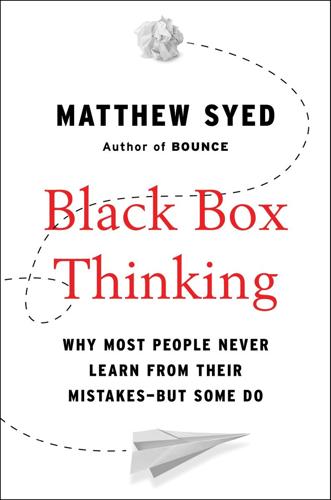
Black Box Thinking: Why Most People Never Learn From Their Mistakes--But Some Do
by
Matthew Syed
Published 3 Nov 2015
They didn’t fully understand the theory underpinning their inventions. They couldn’t have talked through the science. But—like the Unilever biologists—they didn’t really need to.* And this is where the direction of causality can flip. Take the first steam engine for pumping water. This was built by Thomas Newcomen, a barely literate, provincial ironmonger and Baptist lay preacher, and developed further by James Watt. The understanding of both men was intuitive and practical. But the success of the engine raised a deep question: why does this incredible device actually work (it broke the then laws of physics)? This question inspired Nicolas Léonard Sadi Carnot, a French physicist, to develop the laws of thermodynamics.
…
20 Years Later (documentary), 159 Scared Straight program, 150–54, 159–67 Campbell Corporation’s systematic review of, 164–65 Finnckenauer’s randomized control trial (RCT) of, 160, 162–64 Scheck, Barry, 67, 68, 70, 77, 78, 80, 82, 84, 85, 117 Schulz, Kathryn, 78–79, 81 Schumpeter, Joseph, 130 science, 41–45, 48 ancient Greeks and, 278–79 Bacon’s criticism of medieval, 279–80, 283 failure and, 266 history of, 277–82 Lysenko and, 108–10 method and mindset of, 51–52 scurvy, 56 second victim, 239 selection bias, 161–62 self-esteem, 74, 75–76, 82, 90, 97, 98, 101, 274 self-handicapping, 272–74 self-justification, 18, 87, 88–89, 90, 97–99 and Iraq War decisions, 92–93 Shapiro, Arnold, 153, 166 Shepherd-Barron, John, 196 Shirley, Michael, 69 Shoemaker, Paul, 102 Shoesmith, Sharon, 236, 239 signatures, 11, 18, 24, 52 Simeone, Diego, 274 Simons, Daniel, 117 Sims, Peter, 139–40, 144 Singer, Paul, 95 Skiles, Jeffrey, 38, 39 Slemmer, Mike, 138–40 soccer, 135–36, 253–55, 274–76, 289–90 social hierarchies, as inhibiting assertiveness, 28–29 Social Science and Medical Journal, 89 social tolerance, 285 social workers, 236–38, 239 social world, 283–87 Socrates, 278 software design, 138–40 South Korean ferry disaster, 12 Soyfer, Valery, 109 speed-eating, 187–88 Spelling Bees, 263 Speziale, Angelo, 165–67 sports, 132n, 135–36, 266, 289–90. See also cycling; Formula One; soccer Staker, Holly, 63, 64, 70, 82–83, 119, 120, 121 Stalin, Joseph, 109 Stanton, Andrew, 210, 212 steam engine, 132 Stern, Sam, 179 Stewart, William Glen, 240, 241–42, 243, 244, 245, 246, 247–49 stigmatization, 40, 97, 105 stock market, 101, 264 Stone, Jeff, 91 stroller, collapsible, 195, 199 structure of systems that learn from failure, 125–49 cumulative selection/adaptation and, 128–29, 130, 292 free markets systems and, 129–31, 284 guided missile approach of success and, 146 lean start-ups and, 141–45 narrative fallacy and, 135–38, 147–49 perfectionism, dangers of, 140–41 software design and, 138–40 technological change and, 131–35 testing and, 128–31 Unilever nozzle and, 125–26, 128, 129, 137, 147, 286 success, 7, 15, 19, 266–67 blind spot created by, 48 failure and, 39–40 Sullenberger, Chesley, 38, 39, 40–41 Sun, 236 Supreme Court, U.S., 84–85 surgery, 3–6, 15–16, 18 Swinmurn, Nick, 143 Syria, 92 systematic review, 164–65 system safety, 17, 18, 45 Taleb, Nassim Nicholas, 44–45, 133, 135 Tavris, Carol, 75, 93 Taylor, John, 95, 96 TD-Gammon, 134–35 Team Sky, 171–73, 179 technology/technological change, 19, 39, 131–35 bottom-up testing and learning and, 132–34 linear model of, 131–33 theory and, 133–34 Tellis, Gerard J., 205 temporal difference learning, 134–35 testing, 128–49 AIDS/HIV, strategies to combat, 147–49 lean start-ups and, 141–45 narrative fallacy as obstacle to, 135–38, 147–49 perfectionism, dangers of, 140–41 randomized control trials (RCTs) (See randomized control trials (RCTs)) of Scared Straight program efficacy, 160–65 software design and, 138–40 technological change and, 131–35 Tetlock, Philip, 99 theory, 133–34, 212 theory of relativity, 42, 133, 192, 195, 202 thermodynamics, laws of, 132 Think Like a Freak (Kobayashi), 187–88 Thomas, Dorothy, 201 Thompson, W.
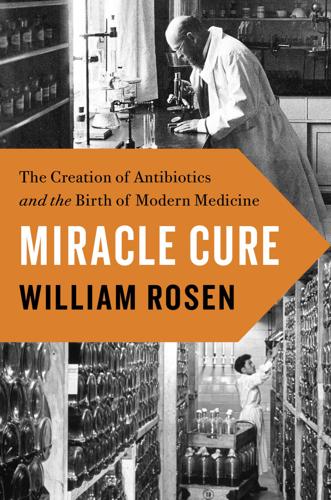
Miracle Cure
by
William Rosen
Published 14 Apr 2017
Heroic medicine was very much a creature of an age that experienced astonishing progress in virtually every scientific, political, and technological realm. The first working steam engine had kicked off the Industrial Revolution in the first decades of the eighteenth century. Between 1750 and 1820, Benjamin Franklin put electricity to work for the first time, Antoine Lavoisier and Joseph Priestley discovered oxygen, Alessandro Volta invented the battery, and James Watt the separate condenser. Thousands of miles of railroad track were laid to carry steam locomotives. Nature was no longer a state to be humbly accepted, but an enemy to be vanquished; physicians, never very humble in the first place, were easily persuaded that all this newfound chemical and mechanical knowledge was an arsenal for the conquest of disease.
…
The three phases of the newly empowered FDA made them a de facto requirement. Frances Kelsey’s intention was to use the objectivity of clinical trials to simultaneously protect the public and promote innovative therapies. It is unclear whether she understood the price. One of the underrated aspects of the wave of technological innovation that began with the first steam engines in the eighteenth century—the period known as the Industrial Revolution—was a newfound ability to measure the costs and benefits of even tiny improvements, and so make invention sustainable. Just as improvements in the first fossil-fueled machines could be evaluated by balancing the amount of work they did with the amount of fuel they burned, even small benefits of new drugs and other therapies could be judged using the techniques of double-blinding and randomization.
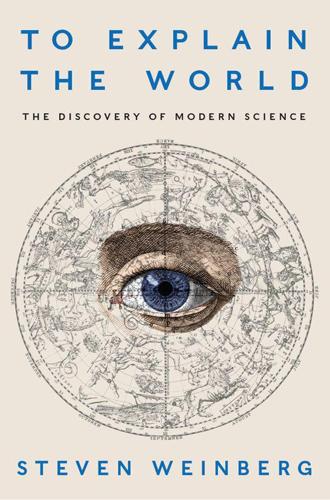
To Explain the World: The Discovery of Modern Science
by
Steven Weinberg
Published 17 Feb 2015
Drabkin, A Source Book in Greek Science (Harvard University Press, Cambridge, Mass., 1948), pp. 211–12. 4. H. Floris Cohen, How Modern Science Came into the World (Amsterdam University Press, Amsterdam, 2010), p. 17. 5. For the interaction of technology with physics research in modern times, see Bruce J. Hunt, Pursuing Power and Light: Technology and Physics from James Watt to Albert Einstein (Johns Hopkins University Press, Baltimore, Md., 2010). 6. Philo’s experiments are described in a letter quoted by G. I. Ibry-Massie and P. T. Keyser, Greek Science of the Hellenistic Era (Routledge, London, 2002), pp. 216–19. 7. The standard translation into English is Euclid, The Thirteen Books of the Elements, 2nd ed., trans.
…
But Hero was right; as we will see in Chapter 14, in the seventeenth century Huygens was able to deduce the principle of shortest distance (actually shortest time) from the wave nature of light. The same Hero who explored the fundamentals of optics used that knowledge to invent an instrument of practical surveying, the theodolite, and also explained the action of siphons and designed military catapults and a primitive steam engine. The study of optics was carried further about AD 150 in Alexandria by the great astronomer Claudius Ptolemy (no kin of the kings). His book Optics survives in a Latin translation of a lost Arabic version of the lost Greek original (or perhaps of a lost Syriac intermediary). In this book Ptolemy described measurements that verified the equal-angles rule of Euclid and Hero.
…
I don’t want to exaggerate the extent to which science-based technology was important in Hellenistic or Roman times. Many of the devices of Ctesibius and Hero seem to have been no more than toys, or theatrical props. Historians have speculated that in an economy based on slavery there was no demand for laborsaving devices, such as might have been developed from Hero’s toy steam engine. Military and civil engineering were important in the ancient world, and the kings in Alexandria supported the study of catapults and other artillery, perhaps at the Museum, but this work does not seem to have gained much from the science of the time. The one area of Greek science that did have great practical value was also the one that was most highly developed.

Television disrupted: the transition from network to networked TV
by
Shelly Palmer
Published 14 Apr 2006
All rights reserved. 13-Television.Glossary v2.qxd 3/20/06 7:29 AM Page 218 218 G L O S S A RY Waste Model advertisers purchase air time based upon a “best guess” of who is watching rather than an actual census or who is watching. Watchman® Sony’s brand of personal sized, portable televisions. Watt A watt is a unit of power equal to one joule of energy per second. The watt was named for the Scottish engineer and inventor James Watt (1736-1819). Wax Cylinders The earliest method of recording and reproducing sound was on phonograph cylinders. WiFi Short for ‘wireless fidelity’. A term for certain types of wireless local area networks (WLAN) that use specifications conforming to IEEE 802.11b-g. WiFi has gained acceptance in many environments as an alternative to a wired LAN.
…
Or, the railroad company could have recognized the airplane as an important way to move people from place to place and embraced the brave new world. They could have started buying real estate for airports and converting their workforce — but wait, was Copyright © 2006, Shelly Palmer. All rights reserved. xiii 0-Television.Prelims v6sp.qxd 3/20/06 7:19 AM Page xiv xiv I N T R O D U C T I O N there a way for steam engine mechanics to become gasoline engine mechanics? How about a way for railroad engineers to be retrained (no pun intended) as pilots? No.There was no practical way to transition the railroad company into an airline.The only real way for them to invest was with cash, a hope and a prayer. There are some who take the logic of this business case and apply it willy-nilly to several modern businesses — like the television industry.
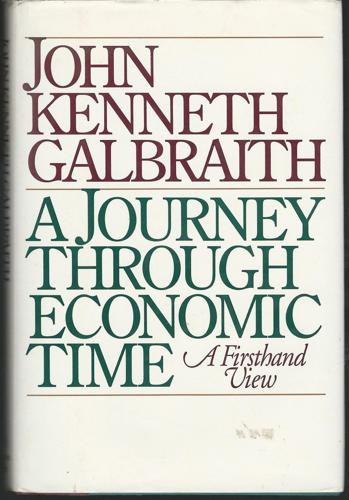
World Economy Since the Wars: A Personal View
by
John Kenneth Galbraith
Published 14 May 1994
Inventions were more often the result of brilliant flashes of insight than the product of long prepared training and development. The Industrial Revolution in England was ushered in by the invention of the flying shuttle by John Kay, the spinning jenny by James Hargreaves, the spinning frame by (presumptively) Richard Arkwright and, of course, by James Watt's steam engine. These represented vast improvements in the capital which was being put to industrial use. But only in the case of Watt could the innovation be related to previous education and preparation. Kay and Hargreaves were simple weavers with a mechanical turn of mind. Arkwright had been apprenticed as a boy as a barber and a wigmaker and was barely literate.
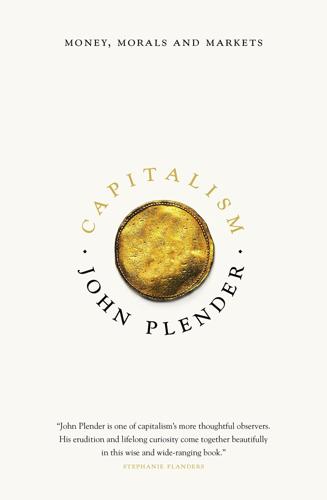
Capitalism: Money, Morals and Markets
by
John Plender
Published 27 Jul 2015
In short, Barbon is Mandeville’s theory personified, being both vicious and economically creative. But that does not make him a stereotypical entrepreneur. In practice, individual entrepreneurs are to be found at all points of the ethical spectrum. At the virtuous end are people like the English entrepreneur Matthew Boulton, who, with the Scottish engineer James Watt, developed the steam engine that was central to the industrial revolution that began in the second half of the eighteenth century. As well as being a leader in modern production methods, Boulton, a high-minded non-conformist like so many early English industrial innovators, was a model employer who pioneered a workers’ insurance scheme.

How to Be Idle
by
Tom Hodgkinson
Published 1 Jan 2004
People worked, yes, they did 'jobs ' , but the idea of being yoked to one particular employer to the exclusion of all other money-making activity was unknown. And the average man enjoyed a much greater degree of independence than today. Take the weavers. Before the invention in 1 764 of the spinning jenny by the weaver and carpenter James Hargreaves, and of the steam engine in the same year by James Watt, weavers were generally self-employed and worked as and when they chose. The young Friedrich Engels noted that they had control over their own time: ' So it was that the weaver was usually in a position to lay by something, and rent a little piece of land, that he cultivated in his leisure hours, of which he had as many as he chose to take, since he could weave whenever and as long as he pleased, ' he wrote in his 1845 study The Condition of the Working Class in England. ' They did not need to overwork; they did no more than they chose to do, and yet earned what they needed. ' In addition to this autonomous and leisure-filled life, the weavers were also in control of the whole manufacturing process: they produced the cloth and sold it to a travelling merchant.
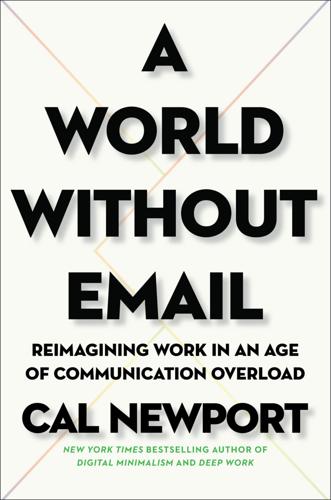
A World Without Email: Reimagining Work in an Age of Communication Overload
by
Cal Newport
Published 2 Mar 2021
Drucker’s sprint toward significance first picked up speed in 1942, when, as a thirty-three-year-old professor at Bennington College, he published his second book, The Future of Industrial Man. It asked how an “industrial society”—one unfolding within “the entirely new physical reality Western man has built up as his habitat since James Watt invented the steam engine”31—might best be structured to respect human freedom and dignity. Arriving in the midst of an industrial world war, the book found a wide readership. It impressed the management team at General Motors, who invited Drucker to spend two years studying how the world’s largest corporation operated.32 The 1946 title that resulted from this engagement, Concept of the Corporation, was one of the first books to look seriously at how big organizations actually operated.

Swindled: the dark history of food fraud, from poisoned candy to counterfeit coffee
by
Bee Wilson
Published 15 Dec 2008
Accum’s career was one of dramatic upward mobility, from humble origins in Westphalia to a glittering and lucrative position as part of the scientific establishment of London. The sixth of seven children, he was born in Buckeburg on 29 March 1769—the birth year of both Napoleon and Wellington, as well as the great scientist Cuvier, and the year that “James Watt patented his steam engine and Arkwright his spinning frame.”16 But nothing suggested that Accum’s birth would lead to similar greatness. Only two of his siblings reached maturity, a sister, Wilhelmina, and a brother, Phillip; the other four died, two of smallpox. Accum’s father was a soapmaker, a converted Jew, born Herz Marcus, who at the age of twenty-eight changed his name to Christian Accum, probably for reasons of love; soon afterwards, he married Accum’s mother, Judith Suzanne Marthe Bert la Motte, a devout Huguenot.
…
In 1815, he published his Practical Treatise on Gas-Light, the first work in any language on the subject, beautifully illustrated with pictures of gas chandeliers and lamps, published by Accum’s great friend, Rudolph Ackermann. In this work, one can see Accum’s passionate belief in industrial progress. Accum pleads with his readers to ignore the “common clamour” that rises up against all “improvements in machinery,” whether the steam engine, new spinning and threshing machines, or gaslight. “It ought never to be forgotten,” he wrote, “that it is to manufactories carried on by machinery, and abridgment of labour, that this country is indebted for her riches, independence, and prominent station among the nations of the world.”15 Well he might believe in progress and in Britannia, given his own personal progression from German obscurity to British fame and wealth.
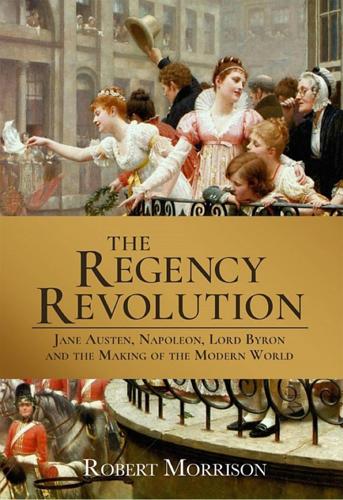
The Regency Revolution: Jane Austen, Napoleon, Lord Byron and the Making of the Modern World
by
Robert Morrison
Published 3 Jul 2019
Locomotives, he prophesized in 1820, “would revolutionize the whole face of the material world,” superseding canal boats and road vehicles and alleviating the terrible suffering inflicted on the half-million horses pushed hard over Britain’s turnpike roads by coach drivers determined to stay on schedule and ahead of the competition. Richard Lovell Edgeworth shared Gray’s confidence that locomotives would transform travel everywhere. He had been experimenting with railways for more than four decades when, in 1813, he wrote to the renowned Scottish inventor James Watt, whose improvements to the steam engine had powered the Industrial Revolution in the final third of the eighteenth century. “I have always thought that steam would become the universal lord, and that we should in time scorn post-horses,” Edgeworth told Watt.68 George Stephenson is probably the most famous of all British engineers.
…
“The times have changed in nothing more . . . than in the rapid conveyance of intelligence and communication betwixt one part of Scotland and another,” Walter Scott avowed in 1818.66 XI Meanwhile, in response to the transport needs of the burgeoning coal industry, other Regency engineers, innovators, and enthusiasts were at work on another travel revolution. British manufacture had been using steam engines for almost a century when, in 1804, the brilliant Cornishman Richard Trevithick built the first railway locomotive at Penydarren in South Wales. Four years later, near Euston Road in London, he exhibited a new locomotive, “Catch-me-who-can,” on a circular railway. The enterprise was not a commercial success and ended in disaster when a rail broke and the engine flew off the tracks and overturned.67 Thereafter, Trevithick lost interest in locomotives, and in 1811 he was declared bankrupt.

Britain Etc
by
Mark Easton
Published 1 Mar 2012
There may be profit in making niche, high-tech or patented products, but churning out widgets or Wispa bars is not the way to go. So, we prospered when the rules changed in the nineteenth century. We failed to adapt when the rule book was revised in the twentieth century. But we do have a chance to redeem ourselves in the twenty-first century. The rules are changing again. Just as James Watt was critical in developing the technology for Britain’s success in the industrial revolution, another Briton, Tim Berners-Lee is credited with the invention that is transforming the global economy today. The World Wide Web has powered a new period of globalisation. In the nineteenth century, it was about access to and the effective use of industrial machines.
…
We talk about globalisation as though it is something new. One could argue that the process began some 5,000 years ago when trade links were forged between Sumerian and Harappan civilisations in Mesopotamia and the Indus Valley. But one has to turn the clock back less than two centuries to see new technology transforming the global market: the steam engine was shrinking the planet. The railways revolutionised domestic communication and the development of steam-powered ocean-going ships dramatically accelerated business in the expanding worldwide web of trade. Farmers who would once have taken their crops to market on the back of a cart were able to sell goods around the planet.
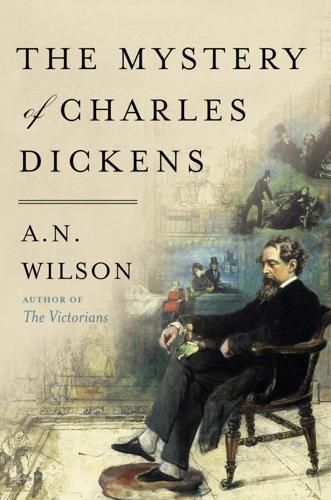
The Mystery of Charles Dickens
by
A. N. Wilson
Published 3 Jun 2020
It also protected and guaranteed the spread of British trade in the post-war years and protected the belligerent success of the new capitalist order – the order that had been brought to birth by the Industrial Revolution. This revolution – originating with the personal ingenuity of eighteenth-century technocrats, scientists and entrepreneurs such as Josiah Wedgwood, Matthew Boulton and James Watt – had led to an increase in the capacity of manufacture and trade of which previous generations could not have dreamed. The agricultural economy was to be transformed, in a few generations, into an urban, industrialized economy. The rural population flocked to the towns for work. The huge cities – London the hugest – that form the backdrop of all Dickens’s greatest works were the monstrous, cruel, vibrant, life-pulsating, filth- and plague-infested death-factories that generated the wealth of the Empire.
…
Having discovered the chemical property of water, it was almost no time before it became possible to see the technological power of steam. The magnetic property of iron was no longer a mystery – it was something that could be demonstrated and explained in terms of chemistry and physics. From H2O to steam engines was a short step: within decades of the chemists’ theoretical studies there were mechanized factories; the Luddites were trying to put back the clock and destroy the spinning jenny and the powered loom; and railroads were steaming across the fields and plains of Europe and America. A new world had dawned.

Free World: America, Europe, and the Surprising Future of the West
by
Timothy Garton Ash
Published 30 Jun 2004
The other half is the long-term threat to human life on Earth that will result from burning too much of it. There are, of course, many other global environmental concerns, most of which flow ultimately from the exponential growth in human exploitation of the physical world since a young Scotsman called James Watt harnessed the power of heated water to turn the first modern steam engine in 1769.119 Development economists talk of “global commons”: things like the extent of the world’s forests or the condition of the oceans. They identify an intrinsic difficulty: individual countries rarely have sufficient incentives to act to preserve these “global commons,” since they can themselves capture only a small part of the rewards for doing so, and those rewards will accrue only if others do the same.120 Indeed, the short-term interests of a single nation and the long-term interests of the wider world will often conflict.

The Miracle Pill
by
Peter Walker
Published 21 Jan 2021
Blair was the lead editor of a landmark 1996 report by the US Surgeon General into activity levels, which kicked off much of the modern era of government guidelines on the subject.8 He is also, incidentally, one of the pioneers of the idea that it is far better for your health to be overweight and active, rather than slim and immobile, which we’ll hear more about later. Blair is now aged eighty, old enough to remember first-hand how much things have changed in the home. ‘Do you want me to tell you who is the real cause of all of these problems?’ he tells me, his voice crackling with energy and mischief down the phone. ‘It was James Watt, inventing that steam engine. But to be serious, we’ve been engineering human energy expenditure down and down. I grew up on a farm in Kansas, and I didn’t have to do any exercise. I worked my tail off. At 5:30am Daddy would make me go out and get those cows in, and milk them, and feed them, and work all day.

The Elements of Choice: Why the Way We Decide Matters
by
Eric J. Johnson
Published 12 Oct 2021
It is therefore no surprise that companies advertise both as “60-watt equivalents”; however, in 2010 the EU started requiring lumens to be the most prominent standard on the package. The effort of having to learn a new metric helps explain why we have, for centuries, used old units to describe new technologies. Candlepower was used to rate electric lights until 1948, and horsepower, which was coined in 1782 by James Watt to measure the energy output of a steam engine, is still used today to measure a car’s energy output. (In case you are curious, 1 horsepower is about 742 watts.) The second drawback to borrowing another metric is that it makes it difficult to compare differences between attributes. Imagine you are looking at two dryers.

City: Urbanism and Its End
by
Douglas W. Rae
Published 15 Jan 2003
The force of steam which she ordinarily carries is four to six inches on an average [2–3 pounds] but on this voyage she seldom had more than one inch, often less. . . . Yet under all these disadvantages the boat completed her voyage . . . without any aid from sail.26 This voyage was part of a slow-starting transformation, a century after the first working steam engine in 1712 and half a century after James Watts’ demonstration of a well-regulated steam engine in 1765. So long as the transition to coal-steam energy generation remained immature, cities faced the ancient trade-off between access to transport and access to energy. As David Nye writes, Early American cities were located either at tidewater or along broad, navigable streams that could not be used to produce much water power.
…
Manufacturing centers of this era were consequently much smaller than industrial cities of a later generation. 8 C R E AT I V E D E S T R U C T I O N Even in the most profitable years of water-driven manufacturing, rival technology gathered steam, and soon enough its promise was touted everywhere, as for example in the May 12, 1849, issue of Scientific American: A water-mill is necessarily located in the country afar from the cities, the markets, and the magazines of labor, upon which it must be dependent. Water appears to run very cheaply, but it always rents for a pretty high price, and the [capital] cost of dams, races, water wheels etc is on the average quite as great as that of a steam engine and equipage. . . . A man sets down his steam-engine where he pleases—that is, where it is most to his interest to plant it, in the midst of the industry and markets, both for supply and consumption of a great city—where he is sure of always having hands near him, without loss of time in seeking for them, and where he can buy his raw materials and sell his goods, without adding the expense of double transportation.8 By 1870, the creative edge of capital had moved into steam-driven plants producing consumer goods—clocks, doorknobs, hammers, rubber boots—faster and cheaper than ever before.
…
Selected Manufacturing Firms in New Haven, 1845 Industry, by product Coaches, wagons, sleighs Latches, locks, handles Indian rubber suspenders Clocks Carriage springs, etc. Castings (metal) Chairs, cabinets Worsted fabric Tin and sheet iron Sashes, blinds Paper Leather Soap, candles Hats, caps Files Cordage Steam engines, boilers Brass foundries Musical instruments Total of samples Firms Total capital Total employment Mean employment 24 3 1 1 4 4 9 4 8 3 1 6 4 3 2 2 2 2 2 85 $287,600 $ 74,500 $ 14,000 $ 40,000 $ 38,500 $ 64,900 $ 26,050 $ 8,000 $ 24,400 $ 14,800 $ 50,000 $ 29,600 $ 12,200 $ 3,500 $ 3,500 $ 4,700 $ 2,000 $ 1,000 $ 2,000 $ 701,250 460 115 100 90 74 71 71 37 35 32 30 27 16 15 10 8 6 4 3 1,204 19.2 38.3 100.0 90.0 18.5 17.8 7.9 9.3 4.4 10.7 30.0 4.5 4.0 5.0 5.0 4.0 3.0 2.0 1.5 14.2 Source: Tyler, 1846.
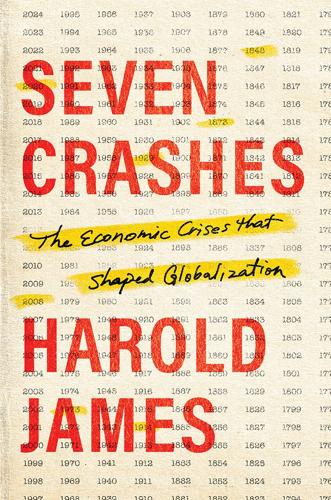
Seven Crashes: The Economic Crises That Shaped Globalization
by
Harold James
Published 15 Jan 2023
But it might be objected that discovery is a random process, though with more scientists and experimenters there are likely to be more innovations, and on a broader front, over a long time frame. The critical difficulty lies in the application of technology. In practice, there was often a long gap between a potentially transformative innovation and its wider useful diffusion. Matthew Boulton and James Watt produced a better steam engine in 1776, but the first railroad in Britain, the short Stockton-to-Darlington line, opened only in 1825 to connect collieries to the North Sea, and the first steamship, the paddle-driven SS Great Western of Isambard Kingdom Brunel, crossed the Atlantic in 1838. So it was only in the middle of the nineteenth century that railroads opened up interior spaces all over the world, and steamships carried goods globally.
…
Large-scale technical changes, involving the replacement of fixed equipment by improved machinery, were “mainly enforced through catastrophes or crises.”1 That enforcement was almost always not a question of inventing completely new technologies, but of applying and developing existing methods. The steam engine and its applications to transport were well known by the 1840s, the container ship and the computer by the 1970s, or nanotechnology, mRNA vaccines, and artificial intelligence applications by 2020. Suddenly, however, these techniques became much more relevant, and their transformative potential could be realized.

Green Tyranny: Exposing the Totalitarian Roots of the Climate Industrial Complex
by
Rupert Darwall
Published 2 Oct 2017
“Most of our demand for energy,” Mills and Huber point out derives from energy’s capacity to refine energy, and from power’s capacity to purify power. Our main use of energy—by far the most important in the “energy racket”—is to purify energy itself. It is only by grappling with that strange fact that we come to understand why we use so much energy, and why we will always demand still more.22 James Watt’s steam engine pumped water from coal mines; lasers consume light to generate a beam of highly concentrated, ordered light; power caches on microprocessors ensure a steady flow of electrons switching electronic logic gates operating at billions of cycles a second. Rising energy consumption is the very stuff of progress.
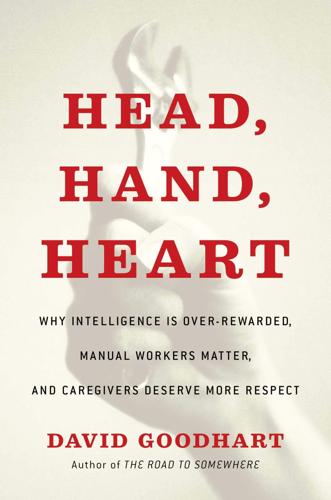
Head, Hand, Heart: Why Intelligence Is Over-Rewarded, Manual Workers Matter, and Caregivers Deserve More Respect
by
David Goodhart
Published 7 Sep 2020
In most countries touched by industrial takeoff, the universities initially had little to do with the training of the new scientific and technical class, and this was especially true of England, where Oxford (established in 1096) and Cambridge (established 1209) remained the only universities for more than six hundred years, well into the nineteenth century. Most of the innovations associated with the first industrial revolution in Britain—from the formation of the Royal Society in 1660 to key inventions such as James Hargreaves’s spinning jenny (1764) and James Watt’s steam engine (1775)—had nothing to do with England’s fossilized “Oxbridge duopoly.” Learned societies like the Lunar Society of Birmingham were far more intellectually significant. And although the philosopher John Locke graduated from Oxford in the mid-seventeenth century after having studied medicine, natural philosophy, and philosophy, the Enlightenment, too, had only a limited impact on the two institutions, which remained dominated by the Anglican church and the teaching of theology and the classics (with some mathematics and natural sciences) until the latter part of the nineteenth century.
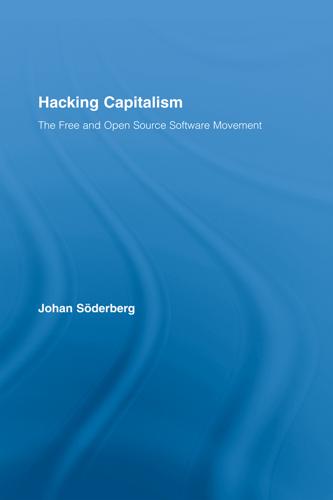
Hacking Capitalism
by
Söderberg, Johan; Söderberg, Johan;
Market Relations and Scientific Labour The historical record of intellectual property in hampering scientific research and technological development is a good place to start our inquiry. It is telling that the innovation iconic of the industrial age and capitalism, the steam engine, fell victim to patent disputes. James Watt’s refusal to license his innovation kept others from improving the design until the patent expired in year 1800. The introduction of locomotives and steamboats was delayed because of it.2 Watt’s patent had a stifling impact on the Cornish mining district where the machine was used to pump water from the underground.
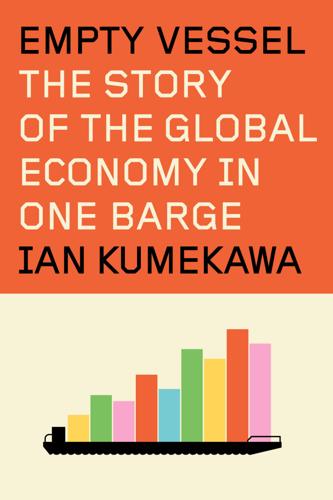
Empty Vessel: The Story of the Global Economy in One Barge
by
Ian Kumekawa
Published 6 May 2025
One of the most influential accounts of why the Industrial Revolution took off in Britain (as opposed to elsewhere) was that Britain had comparatively high prevailing wages.[27] High wages, the story goes, created an incentive for technological innovation. The resulting machines—like James Hargreaves’s spinning jenny, James Watt’s steam engine, and Richard Arkwright’s water frame—were catalysts for spectacular industrial growth. At the same time, for as long as factory owners turned to machines to save on labor, workers have resisted such movements. In the 1810s, facing the introduction of new industrial machinery and the inevitable loss of employment, textile workers across the English north and midlands began campaigns of machine breaking.
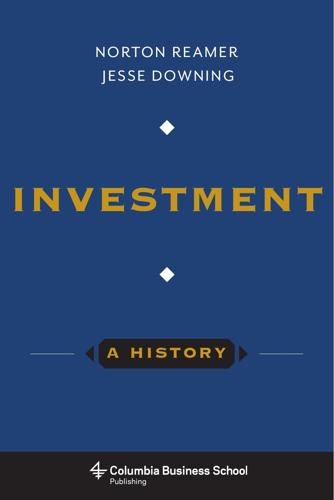
Investment: A History
by
Norton Reamer
and
Jesse Downing
Published 19 Feb 2016
Among the other facilitating technologies of the Industrial Revolution was James Hargreaves’s spinning jenny, a spinning frame with multiple spindles that vastly increased production volume in the textile industry. Combined with the flying shuttle, the spinning jenny took the textile industry into the next competitive era. James Watt’s late eighteenth-century steam engine changed most industries using mechanical power, especially transportation and agriculture, quite significantly. The previous costs of producing this mechanical power, no matter the application, were generally higher than the costs of heating water to steam, and thus enormous cost savings were realized and industrial and transportation projects became more feasible.
…
See Standard & Poor’s 500 speculation: art, stamps, coins, and wine, 283; in derivatives, 221; excesses, 197; impacts of, 232; value and, 4–5 spinning jenny, 71 split-strike conversion, 151–52 sponsor, 286–87 Stabilizing an Unstable Economy (Minsky), 214 Stagecoach Corporate Stock Fund, 284–85 Standard & Poor’s 500 (S&P 500), 187, 228, 285, 305–6, 309 Stanford, Allen, 153–56 Stanford, Leland, 155 Stanford Financial Group, 154 Starbucks, 277 State Street Corporation, 299 State Street Global Advisors, 299 State Street Investment Trust, 141 statistical arbitrage, 267 steam engine, 71 steamships, 90 Stefanadis, Chris, 94 sterling, 65 stock company, 134 stock exchanges: national or international, 94; new, 96; regional, 94–95 stock market: dislocations, 205; in England, 86–87; in Paris, 85 stock ownership: age and, 93–94; direct and indirect, 91, 93; gender and, 93–94; regulations prohibiting too much, 123; study of, 96; in United States, 90–94, 97 stock ticker, 89–90; network, 95 stones (horoi), 27, 60 Strong, Benjamin, 200–203, 206, 226 strong-form efficiency, 249 Studebaker-Packard Corporation, 111 sub hasta (public auction), 50 subprime, 39 subprime-mortgage lending, 223 Suetonius, 59 sugar consumption, in England, 75, 77 Sumerian city-states, 15–16 supply curve, 229 Supreme Court, 108 survivorship bias, 252 swap spread, 266 Swensen, David, 296, 328 SWFs.

Radical Technologies: The Design of Everyday Life
by
Adam Greenfield
Published 29 May 2017
But the withdrawal of innovation behind a scrim of intellectual property law once it has been consolidated is also a disturbing brake on development, because that law—precisely as it is intended to—keeps fabricator prices artificially high, and their supply constrained. Just as James Watt refused to license his steam engine, suppressing the development of that technology over the quarter century that elapsed between his first commercial model and the expiry of his patents in 1800, the evolution of digital fabrication has been hobbled by practices aimed at securing a remunerative monopoly.30 During the period that Stratasys enforced its patents, the practice of 3D printing went more or less nowhere.

Code: The Hidden Language of Computer Hardware and Software
by
Charles Petzold
Published 28 Sep 1999
(A brief reality check: If you actually try to measure the resistance of a flashlight lightbulb with an ohmmeter, you'll get a reading much lower than 4 ohms. The resistance of tungsten is dependent upon its temperature, and the resistance gets higher as the bulb heats up.) As you may know, lightbulbs you buy for your home are labeled with a certain wattage. The watt is named after James Watt (1736–1819), who is best known for his work on the steam engine. The watt is a measurement of power (P) and can be calculated as P = E x I The 3 volts and 0.75 amp of our flashlight indicate that we're dealing with a 2.25-watt lightbulb. Your home might be lit by 100-watt lightbulbs. These are designed for the 120 volts of your home.

It's Better Than It Looks: Reasons for Optimism in an Age of Fear
by
Gregg Easterbrook
Published 20 Feb 2018
The old steel mills and auto plants that commentators and politicians inexplicably sentimentalize were dirty, loud, hot, soul-crushing, and most of all dangerous. The wave of agricultural automation that began a century ago made farm workers less important, and today everyone is better off, while unemployment remains low. Exactly when the industrial era began can be disputed, but let’s say the starting point was James Watt’s steam engine of 1763. Since then, not only have material standards for average people grown ever better, but pay has risen steadily. Today’s attempts at mobile self-guiding robots tend to result in loud crashes into walls. Once autonomous small and midsized devices can move around well, they will replace hospital orderlies, construction-site journeymen, pizza delivery personnel, and some kinds of soldiers; they will also provide routine assistance to the elderly and disabled who live alone or have special needs.
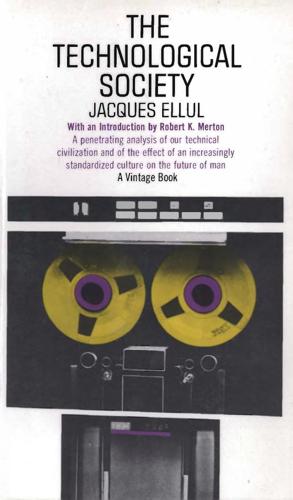
Ellul, Jacques-The Technological Society-Vintage Books (1964)
by
Unknown
Published 7 Jun 2012
This class put the interests of technique before the interests of individuals, who had to be sacrificed in order that technique might progress. It is solely be cause the bourgeoisie made money, thanks to technique, that tech nique became one of their objectives. This alliance is well known and we need recall but a few facts. James Watt, his steam engine perfected, was ruined and at a dead end. It was a bourgeois, Matthew Boulton, who grasped the industrial and financial possibilities of Watt’s invention and de cided to apply it. Two further facts are pertinent: commercial capitalism preceded industrial capitalism; industry owed its rise to the accumulation of capital originating from commerce.
…
When we speak oi technique in historical science, we mean a cer tain kind of preparatory work: textual research, reading, collation, study of monuments, criticism, and exegesis. These represent an ensemble of technical operations which aim first at interpretation and then at historical synthesis, the true work of science. Here, again, technique comes first. Even in physics, in certain instances, technique precedes science. The best-known example is the steam engine, a pure achievement of experimental genius. The sequence of inventions and improvements of Solomon De Caus, Christian Huygens, Denes Papin, Thomas Savery, and so on, rest on practical trial and error. The scientific explanation of the various phenomena involved was to come much later, after a lapse of two centuries, and even then it was not easy to formulate.
…
It is possible to compile a fine catalogue of seventeenth-century inventions, and to deduce from it that a great technical movement was in force at that time. Many writeis have fallen into this error— among them, Jean Laloup and Jean Nelis. It is not because Pascal invented a calculating machine and Papin a steam engine that there was a technical evolution; nor was it because a “prototype” of a power loom was built; nor because the process of the dry distillation of coal was discovered. As Cille has very judiciously noted: "The best-described machines in the eight eenth century Encyclopedic are possibly better conceived than those of the fifteenth century, but scarcely constitute a revolution."

The Rough Guide to Wales
by
Rough Guides
Published 14 Oct 2024
Bersham Ironworks Bersham Rd, LL14 4LP • April to mid-July Sat & Sun noon–5pm; mid-July to Aug Mon & Thurs–Sun noon–5pm The Clywedog Valley Trail runs through woodland to the seventeenth-century Bersham Ironworks, expanded by Cumbrian ironmaster John “Iron-Mad” Wilkinson who, in 1774, patented a method for horizontally boring out cylinders. This produced the first truly circular – and thus highly accurate – smooth-bore cannons, hundreds of which were made here for the Napoleonic and American Civil Wars. The works also produced fine-tolerance steam cylinders, for which engineer James Watt was a big customer, creating steam engines that eventually put water-powered sites such as Bersham out of business. The old foundry survives largely intact, and around it the ironworks’ remains are being unearthed after nearly two centuries of neglect, revealing a broad area of knee-high foundations. A ten-minute walk east, the Bersham Heritage Centre has closed, but outdoor equipment from the agricultural revolution and Bersham Coal Mine are still visible outside.
…
Llangollen Railway Llangollen station, Abbey Rd, LL20 8SN • April–Sept Mon–Fri 3 services daily (usually steam), plus most Sat & Sun year-round up to 7 steam and diesel services daily • Charge • http://llangollen-railway.co.uk Wherever you are in Llangollen, the hills echo to the shrill cry of steam engines easing along the standard-gauge Llangollen Railway. Shoehorned into the north side of the valley, it runs from Llangollen’s time-warped station past the Horseshoe Falls to Corwen, ten miles west. Using a restored section of the disused Ruabon–Barmouth line (pushed through Llangollen in 1865), belching steam engines (and diesels and railcars) haul ancient carriages sporting the liveries of their erstwhile owners. Most visitors simply ride to the end of the line and back (1hr 40min), but consider getting off partway along and walking back to town along the Dee Valley Way (see page 263), perhaps stopping for a pint in the riverside Grouse Inn at Carrog.
…
Wales’ steam railways: six of the best With the rising demand for quarried stone in the nineteenth century, quarry and mine owners had to find more economical means of transport than packhorses to get their products to market, but in the steep, tortuous valleys of Snowdonia, standard-gauge train tracks proved too unwieldy. The solution was rails, usually about 2ft apart, plied by steam engines and dinky rolling stock. The charm of these steam railways was recognized by train enthusiasts, and long after the decline of the quarries, they banded together to restore abandoned lines and locos. Most lines are still largely run by volunteers, who have also started up new services along unused sections of standard-gauge bed.

Europe by Eurail 2023
by
Laverne Ferguson-Kosinski
and
C. Darren Price
Published 8 Jan 2023
Keleti (East) Station is the terminus for most international express trains, with the exception of the Adriatica, Agram, Maestral, and Graz trains, which terminate in Budapest Deli (South) Station. Although it has undergone extensive improvements and restoration since its original construction in 1884, the old charm is still evident. Statues of George Stephenson, the inventor of the locomotive, and James Watt, creator of the steam engine, grace its entrance. The modern touch is found in the digital departure boards displayed at the platform entrances. Stairs at the front of the station take you to the city’s metro, a modern three-line subway system, but arrivals burdened with luggage should opt for the taxi queue immediately outside the station on the right.
…
Amsterdam—Hoorn Daily departures from Amsterdam Centraal Station at 19 and 49 minutes after the hour throughout the day beginning at 0719; last train at 2353; journey time: 42 minutes. Daily departures from Hoorn Station at 10 and 40 minutes after the hour throughout the day, last train at 2334; journey time: 40 minutes. Distance: 26 miles (42 km) Steam-engine buffs will find interest in Hoorn, too. You can travel on a genuine steam train from Hoorn to Medemblik and back in old-fashioned coaches. The Netherlands Railways operates a day excursion, “Historical Triangle,” during spring, summer, and fall. Starting either in Hoorn or Enkhuizen, a steam train plies between Hoorn and Medemblik and a boat between Medemblik and Enkhuizen.
…
Day 5 Bern-Lucerne: Sparkling highlights of Switzerland's lake city plus Mount Pilatus ascent. Day 6 Bern-Milan: Cross into Italy for a delightful day of sightseeing in fascinating Milan. Day 7 Bern-Amsterdam: Base-city transfer via Rhine. Day 8 Amsterdam-Enkhuizen: Visit the Zuider Zee museum, depicting the Dutch battle with the sea. Day 9 Amsterdam-Hoorn: Steam-engine ride from Hoorn to Medemblik; the old Dutch Market on Wednesday. Day 10 Amsterdam-Alkmaar: World-famous cheese market and site of Dutch revolt against Spanish rule. Day 11 Amsterdam-Paris: Base-city transfer via Brussels. Day 12 Paris-Chartres: Palaces and castles abound along with Gothic Cathedral of Notre Dame.

Great Britain
by
David Else
and
Fionn Davenport
Published 2 Jan 2007
He threatened to invade Britain and hinder the power of the British overseas, before his ambitions were curtailed by navy hero Viscount Horatio Nelson and military hero the Duke of Wellington at the famous Battles of Trafalgar (1805) and Waterloo (1815). Return to beginning of chapter THE INDUSTRIAL AGE While the Empire expanded abroad, at home Britain had become the crucible of the Industrial Revolution. Steam power (patented by James Watt in 1781) and steam trains (launched by George Stephenson in 1825) transformed methods of production and transport, and the towns of the English Midlands became the first industrial cities. This population shift in England was mirrored in Scotland. From about 1750 onwards, much of the Highlands region had been emptied of people, as landowners casually expelled entire farms and villages to make way for more-profitable sheep farming, a seminal event in Scotland’s history known as the Clearances (Click here).
…
Over the next few centuries Birmingham established itself in the field of industry, starting off with the wool trade in the 13th century, and becoming an important centre for the metal and iron industries from the 16th century onwards. It was also here that, in the mid-18th century, the pioneers of the Industrial Revolution formed the Lunar Society, which brought together geologists, chemists, scientists, engineers and theorists, including Erasmus Darwin, Matthew Boulton, James Watt, Joseph Priestly and Josiah Wedgwood, all of whom contributed to the ideas and vision of the times. By this time, Birmingham had become the largest town in Warwickshire, and the world’s first true industrial town, its population tripling by the end of the century. It had also become polluted, dirty and unsanitary.
…
Two buildings designed by Charles Rennie Mackintosh – the Glasgow School of Art and the Scotland School Church – are also in this area (Click here). GEORGE SQUARE Glasgow’s main square is a grand public space, built in the Victorian era to show off the city’s wealth and dignified by statues of notable Glaswegians and famous Scots, including Robert Burns, James Watt, General Sir John Moore and, atop a column, Sir Walter Scott. Overlooking the east side is the City Chambers ( 0141-287 4018; George Sq; admission & tours free) – the seat of local government – built in the 1880s at the high point of the city’s prosperity. The interior is even more extravagant than the exterior, and the building has been used as a movie location, standing in for the Vatican (in Heavenly Pursuits) and the British Embassy in Moscow (in An Englishman Abroad).

MacroWikinomics: Rebooting Business and the World
by
Don Tapscott
and
Anthony D. Williams
Published 28 Sep 2010
Luckily, we already have most of the necessary tools as well as the strongest motivating factor: the lack of alternatives. 6. WIKINOMICS MEETS THE GREEN ENERGY ECONOMY Humanity’s ability to transform raw materials into energy powered the rise of modern civilization and shaped the fortunes of nations throughout history. James Watt’s coal-fired steam engine was the spark that set off the industrial revolution in Britain and triggered a period of enormous technological, social, and economic transformation. Roughly a century later, the invention of electric power and lighting furthered the rise of industrial capitalism and helped sweep a youthful United States into international prominence.
…
Nevertheless, many of their legacies remain with us today: the birth of modern nation-states; the expansion of political rights and freedoms; the rise of the university, the media, and the industrial corporation; and a Cambrian explosion of science, medicine, knowledge, and cultural expression. Clearly, the printing press can’t account for all of this. European imperialism, the assembly of large standing armies, and other powerful inventions such as the mariner’s compass, gunpowder, and the steam engine were influential in shaping the modern world. But it is equally true that one can’t begin to understand how today’s world came into existence without comprehending how a modest innovation in movable type helped broaden the distribution of power and knowledge in society. Thanks largely to the Internet we are crossing a similar chasm today.

The Profiteers
by
Sally Denton
Saudi Arabia had also stopped construction of a $1 billion refinery Bechtel was building at Port Qasim, as conflicts in the region and oil company manipulation led to dwindling oil revenues. Meese resigned under a cloud of suspicion, for among other things, his unseemly role as intermediary between Bechtel and various collaborators in the scheme, “becoming an object of media ridicule and late-night jokes, depicting the pudgy prosecutor of public morality as the James Watt of the Justice Department.” Prior to his resignation, several top Justice officials quit in protest of Meese’s improper acts as the country’s top law enforcement officer. But the government’s bribery probe came to a halt when, after four expensive years of Bechtel’s strategizing, Saddam refused to trust the Israelis’ promises and began equivocating on the pipeline.
…
Home now to a family of five, their residential boxcar was called WaaTeeKaa for the combination of their three toddlers’ baby names: “Waa-Waa” for Warren, “Tee-Tee” for Steve, and “Kaa-Kaa” for Kenneth. “Still largely undeveloped, California was booming . . . and, with the recent addition of the steam engine, railroads couldn’t lay track fast enough to link the new west to the rest of the country,” a newspaper described the moment. A man of unlimited ambition, Dad expanded his vision to the western slope of the Rocky Mountains, where he came into contact with the imposing and pugnacious sheep-ranching Wattis brothers of Ogden, Utah.
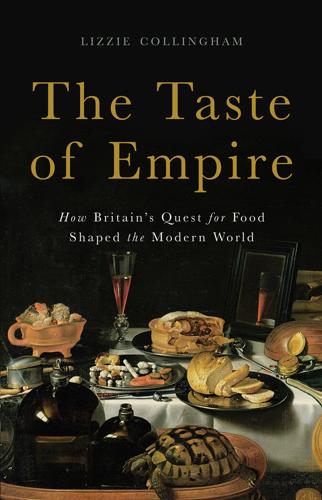
The Taste of Empire: How Britain's Quest for Food Shaped the Modern World
by
Lizzie Collingham
Published 2 Oct 2017
In fact, it was probably a food-processing factory rather than a textile mill that inspired William Blake’s phrase ‘dark satanic mills’ in his poem ‘Jerusalem’. On the south-eastern bank of the Thames near Blackfriars Bridge, close to where Blake lived, stood the Albion flour mill. Built in 1786, this was the first steam-powered flour mill in Britain, equipped with machinery designed by Matthew Boulton and James Watt, two of the architects of the Industrial Revolution. The small independent millers that the mill put out of business denounced it as ‘satanic’.69 10 In which Sons of Liberty drink rum punch at the Golden Ball Tavern, Merchants Row, Boston (a cold evening in January 1769) How rum brought the American colonies together and split Britain’s First Empire apart ‘May the Sons of Liberty Shine with Lustre!’
…
For the decades during which wheat was California’s leading export crop, the state was effectively a British colony.36 The San Francisco–Liverpool wheat run was, however, the last hurrah of the sailing ships. In 1863, the compound engine, developed in the textile mills, was applied to marine steam engines. This was quickly followed by the invention of triple and quadruple expansion engines. Within the decade, marine-engine fuel consumption was halved.37 Steamships could now make much longer sea journeys, and larger steamships created economies of scale that caused freight prices to plummet throughout the last quarter of the century.

England
by
David Else
Published 14 Oct 2010
Meanwhile, the British Empire – which, despite its title, was predominantly an English entity – continued to grow in the Americas, as well as in Asia, while claims were made to Australia after James Cook’s epic voyage in 1768. Return to beginning of chapter THE INDUSTRIAL AGE While the Empire expanded abroad, at home Britain had become the crucible of the Industrial Revolution. Steam power (patented by James Watt in 1781) and steam trains (launched by George Stephenson in 1830) transformed methods of production and transport, and the towns of the English Midlands became the first industrial cities. The industrial growth led to Britain’s first major period of internal migration, as vast numbers of people from the countryside came to the cities in search of work.
…
Over the next few centuries Birmingham established itself in the field of industry, starting off with the wool trade in the 13th century, and becoming an important centre for the metal and iron industries from the 16th century onwards. It was also here that, in the mid-18th century, the pioneers of the Industrial Revolution formed the Lunar Society, which brought together geologists, chemists, scientists, engineers and theorists, including Erasmus Darwin, Matthew Boulton, James Watt, Joseph Priestly and Josiah Wedgwood, all of whom contributed to the ideas and vision of the times. By this time, Birmingham had become the largest town in Warwickshire, and the world’s first true industrial town, its population tripling by the end of the century. It had also become polluted, dirty and unsanitary.
…
Hour-long tours leave every 30 minutes from the Middle Tower; the last tour’s an hour before closing. TOWER BRIDGE London was still a thriving port in 1894 when elegant Tower Bridge was built. Designed to be raised to allow ships to pass, electricity has now taken over from the original steam engines. A lift leads up from the modern visitors’ facility in the northern tower to the Tower Bridge Exhibition (Map; 7403 3761; www.towerbridge.org.uk; adult/child £6/3; 10am-6.30pm Apr-Sep, 9.30am-6pm Oct-Mar; Tower Hill), where the story of its building is recounted with videos and animatronics. If you’re coming from the Tower, you’ll pass by Dead Man’s Hole, where corpses that had made their way into the Thames (through suicide, murder or accident) were regularly retrieved.
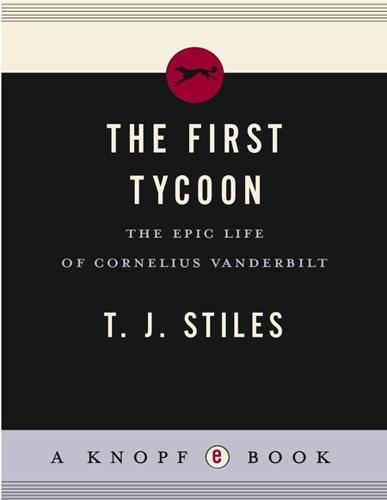
The First Tycoon
by
T.J. Stiles
Published 14 Aug 2009
This outlook, this merging of the private and public roles of the elite, was the essence of mercantilism, in which the state empowered private parties to carry out activities thought to serve the public interest.13 The standard reward for such an undertaking was a monopoly—just what Chancellor Livingston sought when he offered to meet a most pressing public need, the need for steamboats. Even before Americans learned of James Watt's work with the steam engine in England in the 1760s, they had dreamed of bolting it to the hull of a boat to speed themselves across the vast stretches of water that linked their scattered communities. Experiments abounded: paddlewheels, early propellers, even a water jet and mechanical oars.14 Chancellor Livingston dreamed and experimented as ambitiously as anyone.
…
“Let no such boats be trusted,” the Evening Post fumed. Vanderbilt swiftly took advantage by notifying the newspaper that all of the boats on the Union Line “are propelled by the low pressure Steam Engines.”9 Time would show that the difference between high- and low-pressure engines barely mattered when opposing captains strained their boilers beyond their limits. It was not merely the technology but the new culture of economic conflict that made the steam engine so dangerous to the public. Yet competitive zeal was what powered Vanderbilt in those weeks after Gibbons v. Ogden; rivalry seemed to make his mind ever more nimble, ever quicker, in these rapidly changing times.
…
Chapter Two THE DUELIST The twenty-three-year-old Cornelius Vanderbilt who took command of the Mouse on November 24, 1817, had no way of knowing he was making the most important decision of his life. Then again, not even Thomas Gibbons, who saw a good deal, could foresee how far-reaching their collaboration would prove to be—how it would help unlock the potential of the steam engine, recast the Constitution, and contribute to the remaking of American society. Gibbons had his hard eye fixed on his enemies, unaware that his struggle would inexorably link his own name to Vanderbilt's for the rest of time. Even as an impulse, Vanderbilt's snap decision to take orders from Gibbons must have mystified his friends and associates, for the brusque sailor was nothing if not commanding.

Frommer's England 2011: With Wales
by
Darwin Porter
and
Danforth Prince
Published 2 Jan 2010
For entrance to the cathedral, a donation of £3.50 per adult is suggested; tower admission is £3 adults, £1 children 5 to 15. BIRMINGHAM 193km (120 miles) NW of London; 40km (25 miles) N of Stratford-upon-Avon England’s second-largest city may lay claim fairly to the title “Birthplace of the Industrial Revolution.” It was here that James Watt first used the steam engine with success to mine the Black Country. Watt and other famous 18th-century members of the Lunar Society regularly met under a full moon in the nearby Soho mansion of manufacturer Matthew Boulton. Together, Watt, Boulton, and other “lunatics,” as Joseph Priestly, Charles Darwin, and Josiah Wedgwood cheerfully called themselves, launched the revolution that thrust England and the world into the modern era. 502 17_615386-ch14.indd 50217_615386-ch14.indd 502 8/24/10 2:13 PM8/24/10 2:13 PM Birmingham Jewellery Quarter St.
…
Gr ea tC Lio ha rle ne Co sS lS rn t. t. wa Qu ll S ee t. ns wa y d un m Ed Birmingham Museum & Art Gallery g brid e St. Cam Colmore Circus t. ll S rn Bu este e t W ad ea rc Gr A rR ow l hil ay ow sw Sn een Qu Ne wh all St . . t tS e e Fl . St Su mm e el ch ur Ch hann ish C Engl Snow Hill Station t. yS er Liv ck St. Fredri London 4 London n to As Queensway James Watt ENGLAND St. Birmingham Graham WALES Lancaster Circus ads Ch North Sea Irish Sea . St ell dw ensway a Qu e Sh d’s ha C . St W hi tta ll S t. 100 mi 0 100 km W at er St . 0 SCOTLAND 503 17_615386-ch14.indd 50317_615386-ch14.indd 503 8/24/10 2:13 PM8/24/10 2:13 PM Essentials GETTING THERE SHAKESPEARE COUNTRY & THE HEART OF ENGLAND Birmingham 14 BY PLANE Major international carriers operate transatlantic flights with direct service to Birmingham International Airport (BHX; & 0844/576-6000; www. birminghamairport.co.uk).
…
In 1993, the Tower Bridge Exhibition opened inside the bridge to commemorate its century-old history; it takes you up the north tower to high-level walkways between the two towers with spectacular views of St. Paul’s, the Tower of London, and the Houses of Parliament. You’re then led down the south tower and into the bridge’s original engine room, containing the Victorian boilers and steam engines that used to raise and lower the bridge for ships to pass. Exhibits in the towers use animatronic characters, video, and computers to illustrate the history of the bridge. Tower Bridge Rd., SE1. & 020/7403-3761. www.towerbridge.org.uk. Tower Bridge Exhibition £7 adults, £5 students and seniors, £3 children 5–15, £14 family ticket, free for children 4 and younger.

I Am a Strange Loop
by
Douglas R. Hofstadter
Published 21 Feb 2011
If this all seems topsy-turvy, it certainly is — but it is nonetheless completely consistent with the fundamental causality of the laws of physics. CHAPTER 4 Loops, Goals, and Loopholes The First Flushes of Desire WHEN the first mechanical systems with feedback in them were designed, a set of radically new ideas began coming into focus for humanity. Among the earliest of such systems was James Watt’s steam-engine governor; subsequent ones, which are numberless, include the float-ball mechanism governing the refilling of a flush toilet, the technology inside a heat-seeking missile, and the thermostat. Since the flush toilet is probably the most familiar and the easiest to understand, let’s consider it for a moment.
…
F., on self-referential sentences skivaganzas slaughterhouse, tour of slavery sleazeball, as familiar but blurry pattern slider on wire determining identity sliding scale: of consciousness; of élan mental; of symbol repertoire slingshots slippery slope of teleological language slow vs. fast: controlling of bodies by brains; feeding of brains by perceptual systems; Sluggo, daydreaming about himself smallest uninteresting integer “small-souled men” small-souled vs. large-souled beings smiling like Hopalong Cassidy snippets of other people’s talk and inner worlds “snow”, elusiveness of concept “s0 + s0 = ss0” “soap digest rack” explained in Sanskrit “soap opera”: causality attached to the concept of; as deeply nested concept; as very real pattern soaring up to into the sky soaring up to into this guy soccer ball, as goal-seeker social hierarchies, position in, in self-symbol Socrates, as dialogue character software beings inside us soil of novels and of souls Solar System, vagueness of the notion solid-state physics Sommerfeld, Arnold “Song of Myself ” (Whitman) Sophie’s Choice soul: and ability to think; architecture of; as dot located on a line; as efficient shorthand; expressed on face; of flea; floating up into heaven; higher-level, forged in marriage; as illusion; lacking in animals, dogma of; lacking in women, dogma of; likened to butterfly swarms; living in brains of other souls; of mosquito; of mouse; as pattern; as region along a line; serial number of; sizes of; slow growth of; sudden extinction of; traditional immortality of; in Twinwirld; value of; as wispy aura soul merger: speculated about before Carol’s death; wedding ceremony as soular corona soular eclipse souledness: correlation with musical taste; degrees of; increasing with age; not limited to 100 hunekers soulless creatures souls: deep vs. shallow alignment of; hierarchy of values of soul-shards, survival of soul-soil sound transmission, predictability of soup can in cart, reliability of behavior of speaking in unison spectrum of mentalistic verbs speech, unpredictability of one’s own sperms Sperry, Roger splashtacular scuba specials splits in oneself (or in one self ) as suggesting presence of two or more selves spotting the gist spouse, death of, as trauma spying on dog in kennel via webcam squabbles among subselves for dominance in brain squares; sums of two squirting chemicals, in brain “ss0 + ss0 = sssss0”, as conceivable PM theorem stable volume of audio feedback Stanford Elementary School Stanford University Stanley (robot vehicle); claimed to be “thinking”; counterfactual version of; episodic memory of; episodic projectory of; episodic subjunctory of; hopes and fears of; irrelevance of location of computer; self-image of; supposedly having “algorithmic equivalent of self-awareness”; what is lacking for an “I” to exist in it Star Wars statistical mechanics statistical mentalics statistical robustness of coin flips steam-engine governor steering wheels, reliability of Stephen, the stoning of sticking a formula’s Gödel number inside the formula itself storytelling technique, efficacy of strange loop: as core of “I”-ness; definition of; enhanced by élan mental; essence of; existence of; flavorings of; Gödel’s discovery of; growth of; illusory, in Drawing Hands; lack of, in mosquito; less than one per neonate brain; as level-crossing feedback loop; many per brain; nonphysicality of; one per brain; one privileged one, per brain; as paradoxical; in Principia Mathematica; seeming lack of identity; of selfhood, as trap; small size, in dog; as soul-less; as ungraspably elusive; “vanilla”; various “sizes” of; and video feedback Strange Loops #641 and #642: dialogue between; names of; rift between strangeness (of loops), essence of strength of PM is its doom strings of symbols; edible vs. inedible strong force in physics stuff of consciousness; see also feelium, élan mental subjectless formula fragment by Gödel subjectless sentence fragments subjunctive replays of episodes subjunctory, see episodic subselves; see also “i” substrate of thought: improbability of a mind postulating it; invisibility of; irrelevance of details of subsymbolic frenzy, imperceptibility of subwoofers producing rumbles “suffer along with”, meaning of “compassion” suffrage inside brain, at desire level Sullivan, Maxine sunflowers as desire-possessing systems Super-PM, just as incomplete as PM super-prim numbers Suppes, Patrick C.
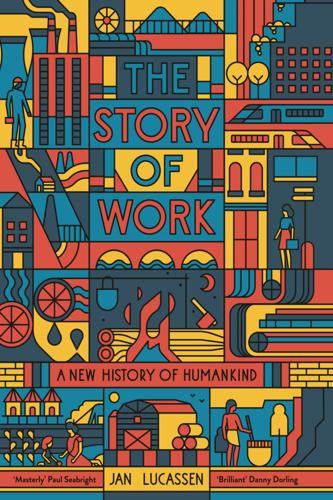
The Story of Work: A New History of Humankind
by
Jan Lucassen
Published 26 Jul 2021
The motive power of steam was already known to the Chinese, but as a curiosity, not for economic application.2 The first industrial application occurred in coal mining, which was hampered by groundwater flooding the more deeply they wanted to dig. In 1712, Thomas Newcomen constructed a steam engine that could successfully power the pumps, allowing for the manual force used previously to be economized. Not only that, but the power of the pumps increased and, moreover, more coal became available to power yet more industrial steam engines. Canals were needed for the transport of coal, and a profusion was therefore excavated. A next big step was James Watt’s steam engine, patented in 1769. This used five times less fuel than Newcomen’s version, and Watt also designed a transmission mechanism enabling rotary motion.
…
A number of factory owners, particularly interested in a stable and reliable workforce, but at the same time with idealistic motives, did aim at maximizing profit, but believed that they could guarantee success by investing in the well-being of their workers in many ways. On the occasion of the delivery of his hundredth steam engine in 1873, the Dutch machine builder Charles Theodoor Stork invited his 500 to 600 employees to the Bourse in Deventer. Seated at long tables, ‘each with his plate, glass, and half bottle of wine in front of him’, they listened to his views on labour relations, expressed in plain language in the local dialect: [Manufacturers] work with the pen and with the head, which is even more difficult than with the hands and they often have concerns that you don’t know about this. . . .
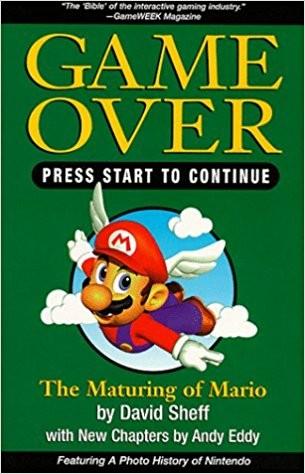
Game Over Press Start to Continue
by
David Sheff
and
Andy Eddy
Published 1 Jan 1993
It was like we were making gas guzzlers and the Japanese were making subcompacts. Our competitors saw the writing on the wall and started making subcompacts.” The NES sounded the death knell for the dream of the personal-computer revolution, that of one computer per family. Bing Gordon, Hawkins’s buddy, compared it to the dream of James Watt, inventor of the steam engine. Watt had believed that one day there would be a single engine in every household that would connect to all kinds of pulleys and gears to run everything from the washing machine to a food mixer. Instead, technology progressed rapidly and motors were soon so cheap that every household could have many—everything from the washing machine to the Cuisinart.
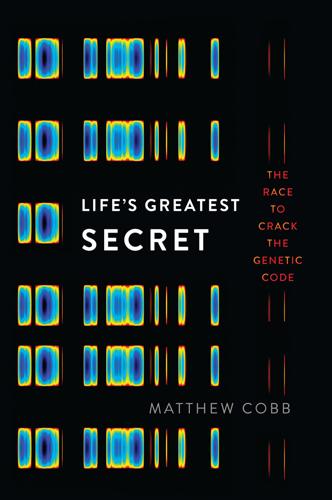
Life's Greatest Secret: The Race to Crack the Genetic Code
by
Matthew Cobb
Published 6 Jul 2015
Cybernetics was not just about information, it was fundamentally based on the concept of negative feedback that Wiener had first explored in his anti-aircraft work during the war.8 Negative feedback had been known in antiquity and during the golden age of Islam, in the form of liquid-level regulators (like a cistern in a toilet), and in the eighteenth century the phenomenon had been used by the steam engineer James Watt, who developed a ‘governor’ to prevent his machines from running out of control. Although Watt’s invention led to new forms of everyday language – it was the origin of terms such as ‘self-regulation’ and ‘checks and balances’ – it was not generalised into something that operated in all systems.

The Precipice: Existential Risk and the Future of Humanity
by
Toby Ord
Published 24 Mar 2020
Humanity may have been able to eventually reach the modern level of total wealth without fossil fuels, though it is not clear whether the growth in income could have broken free of the growth in population, allowing higher prosperity per capita. A striking consequence of these numbers is that solar energy has the potential to eventually produce more energy in a year than is contained in all fossil fuels that ever existed. 20 In particular, James Watt’s improved design of 1781. Earlier engines were so inefficient that they were only financially viable for a narrow range of tasks. The diesel engine would be another major breakthrough, more than 100 years later. 21 Many other factors are also important, notably political, economic and financial systems. 22 Mummert et al. (2011). 23 Consider, for example, the vivid description of working and living conditions in industrial England by Engels (1892). 24 Van Zanden et al. (2014).
…
These are formed from the compressed remains of organisms that lived in eons past, allowing us access to a portion of the sunlight that shone upon the Earth over millions of years.19 We had already begun to drive simple machines with the renewable energy from the wind, rivers and forests; fossil fuels allowed access to vastly more energy, and in a much more concentrated and convenient form. But energy is nothing without a way of converting it to useful work, to achieve our desired changes in the world. The steam engine allowed the stored chemical energy of coal to be turned into mechanical energy.20 This mechanical energy was then used to drive machines that performed massive amounts of labor for us, allowing raw materials to be transformed into finished products much more quickly and cheaply than before. And via the railroad, this wealth could be distributed and traded across long distances.
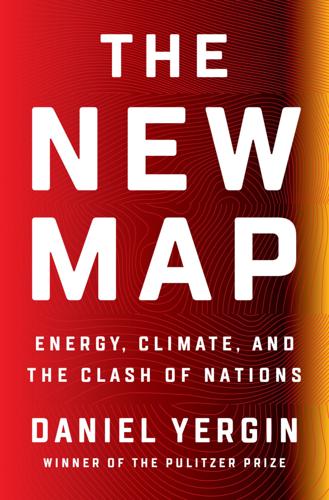
The New Map: Energy, Climate, and the Clash of Nations
by
Daniel Yergin
Published 14 Sep 2020
But his method worked.1 Though it took a few decades to spread, Darby’s innovation lowered the cost of smelting iron, making iron much more available for industrial uses, helping to spur the Industrial Revolution. Coal was the fuel source for Thomas Newcomen’s steam engine, developed around the same time as Darby’s innovation to pump water out of coal mines, and for James Watt’s much-improved engine, the commercial introduction of which in 1776—the same year as the outbreak of the American Revolution and the publication of Adam Smith’s Wealth of Nations—was a decisive moment in the Industrial Revolution. But as energy scholar Vaclav Smil observes, “Even with the rise of industrial machines, the nineteenth century was not run on coal.

Blue Mars
by
Kim Stanley Robinson
Published 23 Oct 2010
In fact Sax had always believed that the amplitude of emotional response exhibited in the people around him could be turned down a fair bit with no very great loss to humanity. Of course it wouldn’t work to try consciously to damp one’s emotions, that was repression, sublimation, with a resulting overpressure elsewhere. Curious how useful Freud’s steam-engine model of the mind remained, compression, venting, the entire apparatus, as if the brain had been designed by James Watt. But reductive models were useful, they were at the heart of science. And he had needed to blow off steam for a long time. So he and Desmond walked around Chernobyl, throwing rocks at it, laughing, talking in a halting rush and flow, not so much a conversation as a simultaneous transmission, as they were both absorbed by their own thoughts.
…
So much of it consisted of throwing together. Of thinking of the mind as a steam engine, the mechanical analogy most ready to hand during the birth of modern psychology. People had always done that when they thought about the mind: clockwork for Descartes, geological changes for the early Victorians, computers or holography for the twentieth century, AIs for the twenty-first . . . and for the Freudian traditionalists, steam engines. Application of heat, pressure buildup, pressure displacement, venting, all shifted into repression, sublimation, the return of the repressed. Sax thought it unlikely steam engines were an adequate model for the human mind.
…
He explained the groundswell, the cross chop, the negative and positive interference patterns that could result. But then he said, “Did you remember much about Earth, during the Underhill experiment?” “No.” “Ah.” This was probably some kind of repression, and exactly the opposite of the psychotherapeutic method that Michel would probably have recommended. But they were not steam engines. And some things were no doubt better forgotten. He would have to work on once again forgetting John’s death, for instance; also on remembering better those parts of his life when he had been most social, as during the years of work for Biotique in Burroughs. So that across the cockpit from him sat Counter-Ann, or that third woman she had mentioned— while he was, at least in part, Stephen Lindholm.
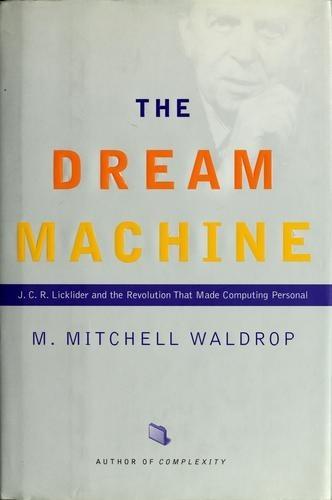
The Dream Machine: J.C.R. Licklider and the Revolution That Made Computing Personal
by
M. Mitchell Waldrop
Published 14 Apr 2001
In a world where no device is ever perfectly accurate or reliable, the two men recognized, some such self-correcting mechanism was essential for any kind of effective operation. And indeed, many specific examples of feedback mecha- nisms were already well known. In the late eighteenth century, for example, the Scottish inventor James Watt had equipped his new steam engine with a simple "governor" for safety: if the engine ever started going too fast, the governor de- vice would automatically cut back the power and force it to slow down. By 1868 such governor devices had become common enough that the Scottish physicist James Clerk Maxwell published a pathbreaking mathematical analysis of them.
…
Then, during the In- dustrial Revolution of the nineteenth century, the defining technology had been that of the steam engine, which was capable of converting vast amounts of energy and heat into work. And again it was no coincidence that scientists of that era had conceived of living organisms as biological heat engines, mechanisms that burned food to do useful physiological work. But now, said Wiener, in the twentieth century, we could perceive the begin- nings of a new revolution. Unlike clocks and steam engines, he argued, the emerging technologies of the modern age didn't just operate blindly, forging ahead without any reference to the world around them.
…
"They already exist as thermostats, automatic gyrocompass ship-steering systems, self-propelled mis- siles-especially such as seek their target-anti-aircraft fire-control systems, auto- matically controlled oil-cracking stills, ultra-rapid computing machines, and the MISSOURI BOYS 23 like. . . . Scarcely a month passes but a new book appears on these so-called con- trol mechanisms, or servomechanisms, and the present age is as truly the age of servomechanisms as the nineteenth century was the age of the steam engine or the eighteenth century the age of the clock."11 By the same token, said Wiener, the dominant sciences of the past had largely been physical sciences, dealing with matter, energy, motion, and intensity. But the central sciences of the modern era would increasingly deal with systems-level issues such as communication, control, organization, and information-whether in "the animal or the machine," as he put it.
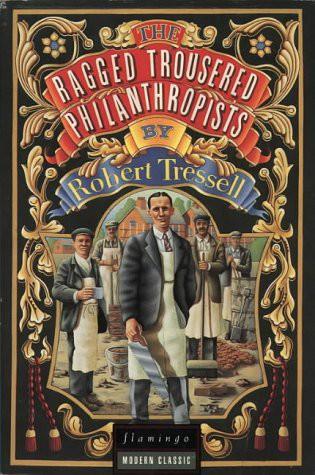
The Ragged Trousered Philanthropists
by
Robert Tressell
Published 31 Dec 1913
(p. 49). 277 half a dozen drapers’ shops: Blatchford repeatedly used the example of a street in which six privately employed milkmen deliver milk, but only one publicly employed postman delivers mail. 279 [Diagram]: Both the ‘Oblong’ and the diagram in ‘The Undeserving Persons’ (p. 148) are refinements of Blatchford’s diagram of social classes and their respective proportions of national income (Merrie England, p. 56). 282 block ornaments: small pieces of meat standing on display on butchers’ blocks or counters as advertisements (and so exposed to dirt, heat, and insects) and which would be sold cheaply at the end of the day. adulterated tea: the adulteration of tea had been banned by Act of Parlia- ment in 1725 and was reinforced by the Food and Drug Act of 1875. 286 Watt and Stevenson . . . already existing: James Watt (1736–1819) radically improved the steam engine design of Thomas Newcomen (1663–1729). Explanatory Notes George Stephenson (1781–1848), designer of ‘Rocket’, gained expertise in his field by taking apart steam engines made by both Newcomen and Watt. Richard Trevithick (1771–1833) was running steam engines as locomotives some years before Stephenson. Trevithick certainly died in great poverty, although Watt and Stephenson both died wealthy men. In his ironically entitled chapter ‘The Self-Made Man’ in Merrie England, Blatchford deals with the issue of invention as improvement dependent on anonymous forerunners. 287 the poor shall always be with us: ‘For ye have the poor with you always’ (Mark 14: 7). 295 the Man of Sorrows . . . to lay His head: ‘He is despised and rejected of men; a man of sorrows and acquainted with grief ’ (Isaiah 53: 3); ‘Foxes have holes, and birds of the air have nests; but the Son of Man hath not where to lay His head’ (Luke 9: 58). 298 Jim Scalds . . . technical education: technical education was a long-term theme of British politics, gathering force from the 1860s and marked by a Parliamentary Select Committee on Scientific Education (1868), a Royal Commission on Technical Education (1882), and Technical Instruction Acts (1889 and 1891).
…
[The inventors too were robbed by the] exploiter-of-labour class. ‘There are no men living at present who can justly claim to have invented the machinery that exists today. The most they can truthfully say is that they have added to or improved upon the ideas of those who lived and worked before them. Even Watt and Stevenson merely improved upon steam engines and locomotives already existing.* Your question has really nothing to do with the subject we are discussing: we are only trying to find out why the majority of people have to go short of the benefits of civilisation. One of the causes is––the majority of the population are engaged in work that does not produce those things; and most of what is produced is appropriated and wasted by those who have no right to it. . . . .

This Sceptred Isle
by
Christopher Lee
Published 19 Jan 2012
By the last decade of the eighteenth century there would be more than 900 new inventions. In 1769 a one-time barber and wigmaker patented a machine that would make him a famous, rich, dark satanic mill-owner. His name was Richard Arkwright and his invention was a spinning frame powered by water. In the same year, James Watt patented his steam engine and Josiah Wedgwood opened another pottery. The Royal Academy had just been established and its first president, Joshua Reynolds, gave the first of his Fifteen Discourses, in which he claimed history painting to be the most noble form of art. Tobias Smollett left England for ever, William Smith, the founder of English geology, was born and, in the summer of 1769, the men of Hambledon were having a lean season on the cricket field.
…
The century began with a population of less than six million, but by the end of the century it was more than ten million. And by 1800 the National Debt, which had been about £19 million at the beginning of the century, was closer to £500 million. However there had been a 400 per cent increase in cotton output and a four-fold increase in coal mining; the steam engine was invented, the first canal opened and the first edition of The Times was printed. And it was the century of the Georges, the third of whom they said was insane. However, the momentous event at the end of the century was the Union of Great Britain with Ireland. It was more than a significant constitutional moment.
…
The Poor Laws were supposed to help but, in many cases, they failed to do so – a reminder that this was a period when the advances of the age outstripped the social needs of the people. Many of those freezing London dockers would have started their working lives loading and unloading sailing ships. Now there were vessels with steam engines even though sail was by no means finished – the famous Cutty Sark wasn’t launched until 1869, the year the Suez Canal opened. (Sailing cargo ships were a common enough sight on the oceans.) The railways now criss-crossed the country and, as transport spread, so did suburbs of tightly packed housing, especially small houses, 20 per cent of which often contained two families.

Adaptive Markets: Financial Evolution at the Speed of Thought
by
Andrew W. Lo
Published 3 Apr 2017
Writing, literacy, the printing press: these inventions allowed ideas to flow to millions of different mental environments. Each person became a test-bed for the usefulness of an idea. At the beginning of the Industrial Revolution, there may have been only a few thousand people who really understood the usefulness of James Watt’s steam engine. Today, there are millions of people who regularly think about how to improve technology, who communicate and compete with each other. With ideas at work in so many active minds and different mental environments, it’s no wonder why modern technological progress shows no signs of stopping.

Lonely Planet Scotland
by
Lonely Planet
Before the Clyde was dredged, larger ships couldn’t progress further than Greenock, which consequently raked in considerable customs dues. In summer and on fine days, these become little resort towns for Glasgow families looking for a day out. Greenock was the birthplace of James Watt, the inventor whose work on the steam engine was one of the key developments of the Industrial Revolution. A statue of him marks his birthplace; behind this looms the spectacular Italian-style Victoria Tower on the municipal buildings, constructed in 1886. McLean Museum & Art GalleryMUSEUM, GALLERY (%01475-715624; www.inverclyde.gov.uk; 15 Kelly St, Greenock; h10am-5pm Mon-Sat) F In the historic centre of Greenock, this was closed for refurbishment at the time of research and due to reopen in 2019.
…
The writings of Sir Walter Scott and the poetry of Robert Burns achieved lasting popularity. The cliched images that spring to mind when you say ‘Scotland’ – bagpipes, haggis, tartans, misty glens – owe much to the romantic depictions of the country developed at this time. The Industrial Revolution The development of the steam engine ushered in the Industrial Revolution. Glasgow, deprived of its lucrative tobacco trade following the American War of Independence (1776–83), developed into an industrial powerhouse, the ‘second city’ of the British Empire. Cotton mills, iron and steelworks, chemical plants, shipbuilding yards and heavy-engineering works proliferated along the River Clyde in the 19th century, powered by southern Scotland’s abundant coal mines.

When China Rules the World: The End of the Western World and the Rise of the Middle Kingdom
by
Martin Jacques
Published 12 Nov 2009
Even in technology, there appears to have been little to choose between Europe and China, and in some fields, like irrigation, textile weaving and dyeing, medicine and porcelain manufacture, the Europeans were behind. China had long used textile machines that differed in only one key detail from the spinning jenny and the flying shuttle which were to power Britain’s textile-led Industrial Revolution. China had long been familiar with the steam engine and had developed various versions of it; compared with James Watt’s subsequent invention, the piston needed to turn the wheel rather than the other way round.6 What is certainly true, however, is that once Britain embarked on its Industrial Revolution, investment in capital- and energy-intensive processes rapidly raised productivity levels and created a virtuous circle of technology, innovation and growth that was able to draw on an ever-growing body of science in which Britain enjoyed a significant lead over China.7 For China, in contrast, its ‘industrious revolution’ did not prove the prelude to an industrial revolution.
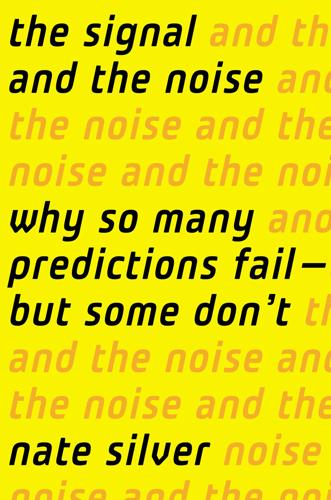
The Signal and the Noise: Why So Many Predictions Fail-But Some Don't
by
Nate Silver
Published 31 Aug 2012
I will start by buying the first beer for anybody on this list, and the first three for anybody who should have been, but isn’t. —Nate Silver Brooklyn, NY NOTES INTRODUCTION 1. The Industrial Revolution is variously described as starting anywhere from the mid-eighteenth to the early nineteenth centuries. I choose the year 1775 somewhat arbitrarily as it coincides with the invention of James Watt’s steam engine and because it is a nice round number. 2. Steven Pinker, The Better Angels of Our Nature: Why Violence Has Declined (New York: Viking, Kindle edition, 2011); locations 3279–3282. 3. Much of the manuscript production took place at monasteries. Belgium often had among the highest rates of manuscript production per capita because of its abundant monasteries.
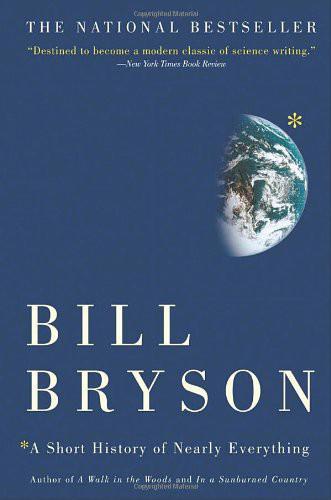
A Short History of Nearly Everything
by
Bill Bryson
Published 5 May 2003
Edinburgh at that time was a center of intellectual vigor, and Hutton luxuriated in its enriching possibilities. He became a leading member of a society called the Oyster Club, where he passed his evenings in the company of men such as the economist Adam Smith, the chemist Joseph Black, and the philosopher David Hume, as well as such occasional visiting sparks as Benjamin Franklin and James Watt. In the tradition of the day, Hutton took an interest in nearly everything, from mineralogy to metaphysics. He conducted experiments with chemicals, investigated methods of coal mining and canal building, toured salt mines, speculated on the mechanisms of heredity, collected fossils, and propounded theories on rain, the composition of air, and the laws of motion, among much else.
…
In 1875–78, Gibbs produced a series of papers, collectively titled On the Equilibrium of Heterogeneous Substances, that dazzlingly elucidated the thermodynamic principles of, well, nearly everything—“gases, mixtures, surfaces, solids, phase changes . . . chemical reactions, electrochemical cells, sedimentation, and osmosis,” to quote William H. Cropper. In essence what Gibbs did was show that thermodynamics didn't apply simply to heat and energy at the sort of large and noisy scale of the steam engine, but was also present and influential at the atomic level of chemical reactions. Gibbs's Equilibrium has been called “the Principia of thermodynamics,” but for reasons that defy speculation Gibbs chose to publish these landmark observations in the Transactions of the Connecticut Academy of Arts and Sciences, a journal that managed to be obscure even in Connecticut, which is why Planck did not hear of him until too late.

Money Changes Everything: How Finance Made Civilization Possible
by
William N. Goetzmann
Published 11 Apr 2016
For each one of these amazing technological developments, Needham and the other authors of Science and Civilization in China are able to point to some feature of Chinese science that could have led to a similar development. For example, Chinese hydraulic engineers created the world’s most extensive system of canals, and they were the world’s leaders in iron mining and metallurgy. They understood steam power. Why didn’t China develop the world’s first steam-powered rail system? Why were James Watt, Robert Fulton, and Alexander Graham Bell not Chinese? How could China have been so far ahead of the rest of the world technologically (and for that matter, as we have seen from this chapter—bureaucratically) and yet have stumbled on the eve of the greatest technical transformation in world history, the Industrial Revolution?
…
As will be discussed in Part III, the process to develop a system that rewards investment was a long and complex one and it took place principally in Europe. The most telling evidence is that the differential in financial development between China and the West preceded the differences in technological advancement. European financial markets did not suddenly spring up with the invention of the steam engine and the mechanization of manufacturing processes. By the time of the Industrial Revolution in Europe, commercial banks and organized securities exchanges had existed for at least two centuries. When nineteenth-century railway companies wanted to raise capital to lay track and build cars, they had access to a pre-existing widespread class of investors who were accustomed to paying good money for future promised cash flows—there was a demand for investment opportunity and the structural know-how to create products that met this demand.

Andrew Carnegie
by
David Nasaw
Published 15 Nov 2007
Madam thinks higher air for two weeks best for Baba. She also gets a rest preparatory to shooting season. It is an experiment we are to try—I think a wise one. She wished to postpone it until next year when you wrote you could come but I insisted you could and would come later, or sooner.”28 Carnegie, who had been invited to write a life of James Watt for a “Famous Scots” book series, seized upon the enforced retreat to get started. As he wrote Morley from the lodge, the “Hilltop Experiment” had proved “a decided success. Lou and Baba and I get a chance to live with each other. We are enjoying our holiday in this delightful cozy lodge. Everything very nice.”
…
The Empire of Business. 1902. Garden City, NY: Doubleday, Page & Company, 1913. ———. “Confession of Religious Faith” (October 11, 1902), in MW, II. ———. “A Rectorial Address, Delivered to the Students in the University of St. Andrews 22 October, 1902,” New York: Doubleday, Page & Company, 1903, in MW, I. ———. James Watt. 1905. Garden City, NY: Doubleday, Page & Company, 1913. ———. “The Negro in America: An Address Delivered before the Philosophical Institution of Edinburgh, 16th October, 1907,” Inverness: Robt. Carruthers & Sons, 1907, in MW, II. ———. Problems of To-Day: Wealth—Labor—Socialism. 1908. Garden City, NY: Doubleday, Page & Company, 1933. ———.
…
I am in love with my hero and enjoy leisurely penning a few paragraphs of the book.” His full-length biography, well researched and written with his usual fluency, was published the following May to good reviews. The book was an old-fashioned hagiography, with a quite lucid description of the science that had gone into the invention of the steam engine. Much of it was composed of long passages imported wholesale from other writers, but such was the style of the day. Richard Gilder asked if he might have permission to serialize the biography in the Century.29 The stone lodge at Auchinduich, though off the beaten path, was close enough to Skibo for Carnegie to get mail and newspapers.
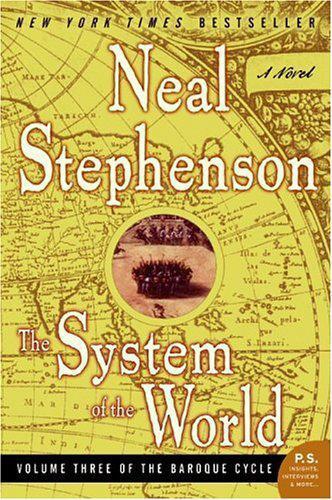
The system of the world
by
Neal Stephenson
Published 21 Sep 2004
Threader to turn around and rediscover it, “we might grow accustomed to multitudes of black slaves, or steam-engines, or both. I speculate that the character of England is more constant. And I flatter us by asserting, furthermore, that ingenuity is a more essential element of that character than cruelty. Steam-engines, being a product of the former virtue, are easier to reconcile with the English scene than slavery, which is a product of the latter vice. Accordingly, if I had money to bet, I’d bet it on steam-engines.” “But slaves work and steam-engines don’t!” “But slaves can stop working. Steam-engines, once Mr. Newcomen has got them going, can never stop, because unlike slaves, they do not have free will.”
…
Queen Anne has recently been forced to create a large number of such titles in order to pack the House of Lords with Tories, the party that she currently favors. Daniel has spent the twelve days of Christmas with Will’s family at his seat near Lostwithiel, and Will has talked him into making a small detour en route to London. Book 6 Solomon’s Gold Dartmoor 15 JANUARY 1714 In life there is nothing more foolish than inventing. —JAMES WATT “MEN HALF YOUR AGE and double your weight have been slain on these wastes by Extremity of Cold,” said the Earl of Lostwithiel, Lord Warden of the Stannaries, and Rider of the Forest and Chase of Dartmoor, to one of his two fellow-travelers. The wind had paused, as though Boreas had exhausted his lungs and was drawing in a new breath of air from somewhere above Iceland.
…
Newcomen to erect a frightful Engine; now that we have the Asiento, I need only send a ship southwards, and in a few weeks’ time I shall have all the slaves I need, to pump the water out by stepping on tread-mills, or, if I prefer, to suck it out through hollow straws and spit it into the sea.” “Englishmen are not used to seeing their mines and pastures crowded with Blackamoors toiling under the lash,” Daniel remarked. “Whereas, steam-engines are a familiar sight!?” asked Mr. Threader triumphantly. Daniel was overcome with tiredness and hunger, and leaned his head back with a sough, feeling that only a miracle could get him out of this conversation whole. At the same moment, they arrived at the Fleet Bridge. They turned right and began back-tracking westwards, since the driver had over-shot their destination.

The Rough Guide to Brazil
by
Rough Guides
Published 22 Sep 2018
It’s another church designed by Aleijadinho in the eighteenth century – note his exquisite sculptures around the entrance. Museu Ferroviário Av Hermílo Alves 366 • Wed–Sat 9–11am & 1–4pm, Sun 9am-12.30pm • Free • 32 3371 8485 • Enter through the main train station Rail aficioandos should make for the nineteenth-century train station, where the Museu Ferroviário charts the history of rail transport, from James Watt and George Stephenson et al, through to the genesis of Brazilian railways and the Maria Fumaça or “Smoking Mary” in the 1870s (primarily through information boards and paintings labelled in Portuguese only). It also houses the first engine to run on the track here, an old “Baldwin” steam locomotive like you see in Westerns, made in Philadelphia in 1880.
…
Once you’ve purchased tickets, walk to the mine head via the tiny museum (full of rusting equipment) and craft store. At the mine head you line up to board what for many tourists is the main attraction: a rickety open-seat railcar that trundles 315m down a steep slope into the main tunnel (be careful of bumping your head). The railcar is driven by a drum cable powered by a vintage 1825 British steam engine, now adapted to run on compressed air. At the bottom, guides lead you around the dripping, muddy but fairly spacious main tunnel, with smaller galleries branching off into the gloom in all directions. Tours end at a small, crystalline floodlit lake, 120m underground, and round off with a demonstration of gold panning back on the surface, complete with real gold.
…
SMOKING MARY If you’re in São João between Friday and Sunday, don’t miss the half-hour train ride to the colonial village of Tiradentes, 12km away. There are frequent buses too, but they don’t compare to the trip on a nineteenth-century steam train, with immaculately maintained rolling stock from the 1930s. You may think yourself immune to the romance of steam and be bored by the collection of old steam engines and rail equipment in São João’s railway museum, but by the time you’ve bought your ticket you’ll be hooked: the booking hall is right out of a 1930s movie, the train hisses and spits out cinders, and as you sit down in carriages filled with excited children, it’s all you can do not to run up and down the aisle with them.

Lonely Planet Scotland
by
Lonely Planet
Here, the strikingly colonnaded 2Gallery of Modern Art was once the Royal Exchange and now hosts some of the country's best contemporary art displays. Turn left up Queen St to 3George Square, surrounded by imposing Victorian architecture, including the grandiose 4City Chambers. Statues include Robert Burns, James Watt and, atop a Doric column, Sir Walter Scott. Walk down South Frederick St. Ahead of you, the former Court House cells now house the 5Corinthian Club; drop into the bar for a glimpse of the extravagant interior, then continue to 6Hutcheson's Hall. This was built in 1805 as a hospital and school for the poor with a bequest from the brothers whose statues stand in the facade.
…
The cliched images that spring to mind when you say 'Scotland' – bagpipes, haggis, tartans, misty glens – owe much to their romantic depictions of the country. Most clan tartans are in fact a 19th-century invention (long after the demise of the clan system), partly inspired by the writings of Sir Walter Scott. The Industrial Revolution The development of the steam engine ushered in the Industrial Revolution. Glasgow, deprived of its lucrative tobacco trade following the American War of Independence (1776–83), developed into an industrial powerhouse, the 'second city' of the British Empire. Cotton mills, iron and steelworks, chemical plants, shipbuilding yards and heavy-engineering works proliferated along the River Clyde in the 19th century, powered by southern Scotland's abundant coal mines.

Empire of Things: How We Became a World of Consumers, From the Fifteenth Century to the Twenty-First
by
Frank Trentmann
Published 1 Dec 2015
The ‘great divergence’, he has argued, happened in the nineteenth century and resulted not from Europe’s genius for modernity but rather, in Britain’s case, from geographic luck and imperial force that provided the first industrial nation with abundant coal, slaves and cheap food.127 Recent calculations confirm that British wages did decline between 1740 and 1800, but they also highlight that this was a comparatively small dip from a unique high-wage plateau that Britain had enjoyed for four centuries following the Black Death. High wages preceded imperial expansion and were in large part the result of a small population and cheap energy, which encouraged innovation and productivity, with big inventions, such as Thomas Newcomen’s steam engine (1710), but also smaller ones of tinkering and adaptations, such as James Watt’s development of the separate condenser in the 1760s, which made Newcomen’s engine even more efficient. Already by the seventeenth century a divergence was under way that cut across Europe as well as separating East from West. Workers in Delhi and Beijing lived near a subsistence level comparable to those in Florence and Vienna.
…
Two generations earlier, touring the United States, it struck Alexis de Tocqueville that ‘the American’ was always in a hurry: ‘he is so hasty in grasping at all within his reach that one would suppose he was constantly afraid of not living long enough to enjoy them.’8 Acceleration has been driven by three main forces. One is technological innovation: steam engines and the internet, trains, planes and automobiles. A conservative estimate is that the speed of communication increased by a factor of 107 in the course of the twentieth century.9 The second is cultural: we feel the world is moving faster. It is tempting to think our sense of acceleration must have been the child of technological change, but perhaps it also worked the other way around.
…
R. 412–13 Semedo, álvaro 44 Sen, Amartya 539 Seneca 677, 678 Senegal 591 Senegambia 124, 125 Seoul 351, 384, 661 serfdom 123, 203 SERO (Kombinat für Sekundärstofferfassung) 646 servants 21, 22, 42, 43, 78, 90; Asian 48, 51, 144; dress 21, 22, 67, 68, 73–4; Elizabethan 58–9; French 68 Seventeen 312 sewage 178, 179, 180, 634 sex 304, 305, 441, 453, 454, 455; and affluence in South Korea 384; consumption and libido 320; and the elderly 501; and family planning 365; and Freudianism 284; premarital, in China 369; promiscuous 313; selling power of 196; sexual freedom 304, 325; and shopping 485; teenage 217, 311, 313, 333 Sha’arawi, Huda 202–3 Shakespeare, William 107, 499 shamanism 616 Shandong 46, 299 Shanghai 149, 178, 179, 180, 299, 374, 376–7; cholera 633; credit and debt 408; kitchens 249, 250; labourers 361, 408; municipal markets 208; as ‘Paris of the East’ 359; pawnshops 408; wages 408; waste disposal 633–4 Sharar, Abdul Halim 137 shares 423, 428, 436, 437 Shinto 585, 615–16 shipping 23, 24–6, 84, 88, 120, 124, 168, 357, 565 Shiseido 516 shoes 38–9, 51, 58, 114, 143, 282, 293, 660; repairmen 660; sports shoes 320 Shonen Jump magazine 492 shop assistants 196, 197, 202, 281, 350, 351, 480, 486, 487, 495 shopkeepers 35, 40, 76, 141, 192 shoplifting 197, 306–7, 321 shoppers’ leagues 275, 549–50 shopping 3, 6, 190–210, 403, 456, 618 see also customer service; fair trade; and advertisers’ view of shoppers 288; in America 371; arcades 194, 198; bags 671; binges 13, 14, 681; and Chanukah 615; in China 190–91, 371; Christmas 156, 477, 529, 574; and the city 190–210; and class 350; clothes shopping by British women 674; and control of one’s life 324; as core element of public concern and policy 9; on credit 201, 328, 407, 412, 424, 429 see also credit; cultured 295; customer control 317; dehumanizing impacts of 197; Empire shopping weeks 300, 572; empowerment through 6, 203; ethical 155, 390, 567, 569 see also fair trade; in France 685; galleries 192; and gender 6, 156, 198–9, 200–201, 204, 332, 350; habits 570; in India 141, 371, 375; in inter-war Russia 276–7; as a leisure activity 93, 191, 480–82; for local/regional food 580–88; mail order 416–17, 524; as a meaningful social experience 6; and men 200–201; moral and sexual anxieties about 196, 197; in music-hall song 201; Muslim 618, 619; opening hours for 295, 332, 349, 372, 476, 477–81; for pleasure 154, 659, 678; and public space 194, 198, 207, 208; and Ramadan 618; recreational 100, 480–82; by Renaissance aristocrats 35; Renaissance suspicion of 35; retail therapy 485; rhythms 209–10; ‘sales’ 194; self-service see self-service; and sex 485; in Spain 196; ‘specials’ and over-shopping 649; from street sellers see street sellers; supermarket shopping see supermarkets; total shopping 194, 206; travel for 685; in USSR 295; virtual 481–2; and women 6, 156, 198–9, 200, 204, 332, 350 Shopping Hours Reform Council 478–9 shops see also retail trade: architecturally notable 192; Benjamin on 198; candy stores 217, 219; charge plates 412; charity 574, 624, 654, 657; Chinese 190–91; clothing shops for infants and children 486; co-operative 205–7; company shops 524–5, 528; with covered arcades 194, 198; decorating 89; department stores see department stores; discount stores 205, 221, 372, 478; displays 160, 192, 194, 202, 263, 295; English Shops Act (1911) 476; ethnic 597; fair-trade/world shops 564, 565, 566, 574–5, 576; French 351; hypermarkets 371, 618; Japanese 372; luxury shops in East Germany 334; multiplication of small shops across Europe 205; ‘national’ 300; opening hours 295, 332, 349, 372, 476, 477–81; with own cafés 330; pawnshops/pawnbrokers 71, 113, 114, 361, 406, 408, 409, 410; proliferation with urban growth 191; and public space 194, 198, 207, 208; second-hand 145, 632–3, 656; self-service 328, 329, 330, 349 see also supermarkets; Soviet 293, 295–6, 330, 334; stealing from 197, 306–7, 321; Sunday closure/restrictions 156, 476, 477–81; supermarkets see supermarkets; virtual 481–2; Western shops in the Gulf region 618 Shostakovich, Dmitri 292 Shufuren (All-Japan Housewives’ Association) 393 Sichuan, China 359 Sicilians 215 Siemans, Werner von 523 Siemens (company) 523, 526 Sierra Leone 130 Siliguri, Bengal 375 silk 23, 26, 27, 28, 29, 33, 39, 40, 41, 42, 43, 45, 47, 48, 49, 50, 51, 58, 64, 67, 83, 140; artificial 144, 299–300, 381; British export 67; and the EIC directors 70; embroidery 36, 48; French export 67; industry 32, 58, 67; London production 58; plush 60; smuggled 65; stockings 140, 293, 294, 299; trade routes 45 Silk Road 23 silkworms 64 silver 25–6, 29–30, 34, 37, 42, 45, 46, 56, 57; China and 25–6, 46, 90; jewellery 48, 140; and maté rituals 80–81; Spain and 25–6, 64; spoons 29–30, 31, 32, 34, 55, 87; tableware 29–30, 31, 32, 34, 55, 87; thread 139 Simmel, Georg 197, 211, 214 Simon, Arthur 577 Simon, Heidi 272–3 Simon, John 177 Sims, George 209 Sinatra, Nancy 352 Singapore 265, 362, 371, 379, 517–18, 552, 558; Central Provident Fund 418; forced savings 371, 418; New World amusement park 220; public housing 681 Singer, Hans 573 Singh, Gooroo Churn 145 Single European Act 559 Siwertz, Sigfrid 196 Skansen museum 231 SKF 531 skirts 21 Slater, Samuel 523 slavery/slaves 27–8, 63, 91, 122–3, 128; abolition by Britain 121, 122, 123, 125, 572; within Africa 122, 123, 125, 127, 131; African shift from trade in humans to trade in goods 129–31; anti-slavery boycotts 128, 156, 184, 559, 571–2; Ashanti 131; battle against slavery 121, 123–4, 128; as constraint of choice 132; and consumption 123; and destruction of home life 238–9; and eating of English food 170; end of domestic slavery in Africa 122; imperial flow of goods and slaves 82–3; land grants to freed slaves 163; and luxury 123; Portuguese use of 163; slave plantations 79, 91, 123, 162, 163; slavery to wants and pleasure 74, 677; slaves eating English food 170; and sugar 27–8, 79, 91, 162, 571; women slaves 132 sleeves 21, 37, 43, 69 Slow Food movement 442, 470, 580, 581, 587 slow movement 441–2, 470 slums 179, 329, 553, 554, 575 ‘smart’ technologies 686 smartphones 464, 465, 482 Smiles, Samuel 419 Smith, Adam 3, 54, 100, 102–3, 104, 151, 274, 390, 611 Smolensk 546 smuggling 24, 44, 65, 91, 162, 170 Snow White (Disney film) 489 snuffboxes/snuff bottles 22, 103, 110 soap 59, 170, 178, 254, 262, 294, 315, 358; adverts 171; in Asia 359, 360, 366, 367; in East Germany 645 sociability 14, 30, 52, 87, 108, 109, 155, 191–2, 270 see also socializing; feminine 87; and politeness 108–9; socializing effect of the internet 687 see also social networking; and trade 96 social activism 154 social capital 142, 340 social citizenship 157, 278 see also citizenship, consumer social control 7, 42–3 see also sumptuary laws Social Democrats 159, 324 social equality 12, 13, 36–7, 100–101, 161–2, 383, 438, 681 see also inequalities social exclusion 178, 327, 432 social gerontology 502, 503 social inclusion 135, 325, 389–90 social life 3, 155, 239, 341, 461–2, 554, 650 see also leisure; sex; of the elderly 509; of goods 4, 79; urban see cities and urban life social metabolism 664, 668, 677 social mobility see mobility social motivation 13 social networking 464, 465, 654 social positioning see status and social positioning social services 12, 304, 538; company services see company services, and corporate-led consumption; of religious bodies 612 social spaces 107, 109, 674–5 social spending 12–13, 284–5, 304 see also consumer activism; welfare; and affluence 304–5, 326, 373; American 304, 305, 539–40, 541, 542; British 537, 539; Canadian 540; and the Cold War 542; and consumer durables 542; cultural 546–7; and distribution of money from richer to poorer 681; on education 148, 304, 326, 537; on energy 538; EU 537, 537, 538, 541; Finnish 539; French 537, 537, 539, 679; German 537, 539, 541; on health 148, 304, 326, 429, 537, 542; household consumption and social transfers 539; Japanese 12, 537, 539; justified by Galbraith’s The Affluent Society 304, 305; in New Zealand 537; OECD countries 12, 537, 539; on pensions 12, 542–3, 681; as percentage of GDP 326, 537, 537, 538, 539, 541; and private savings 681; by Russian state enterprises 535; Scandinavian 537, 541, 679; ‘social transfers’ 13, 243, 538, 539, 541–2, 681; South Korean 384, 539; Spanish 537; transferred to the private sphere in Communist China 372; on welfare 537 socialism: advertising 327; affluence and the socialist consumer culture 326–37; aspirations measured against Western watermark 327, 333, 337; and austerity 331, 337; and the Cold War see Cold War; communist see communism; Maoism; Marxism; Stalinism; consumers’ responsibility for building 295; and consumption 276–7, 295, 326–37; Crosland’s The Future of Socialism 302, 303; French socialists 552; housing under 329, 330, 331, 535; and leisure 327, 545–6; private lifestyles and socialist regimes 333, 375–6, 377; as recipe for private austerity and public squalor 331; Russian 276–7, 292–6 see also Stalinism; the socialist self 294; Soviet/socialist propaganda 293, 644; standard of living under 277, 334; view of the consumer 397; and waste 331, 644–6 socializing 53, 346, 456, 457, 459, 461, 464, 507 see also sociability; in national time-use surveys 458–9; social networking 464, 465 Society for the Deceleration of Time 441 Soconusco 79 Socrates 98 Soelami, Miss 263 solar power 325 Solzhenitsyn, Alexander 324 Sombart, Werner 174, 191, 203, 319, 416 Somerset Waste Partnership 648 Song Lin 47 Songjiang 73 souls 102, 105, 385 South Africa 158, 236, 254, 285, 590; apartheid 577; Xhosa migrating to East London 347–8 South Carolina Negro Act (1735) 63 South Korea 355, 362, 363–4, 371, 372, 379; boycotts and duties on foreign goods 385; company services and leisure 535; conspicuous consumption and the state 384–5; department stores 385; electronic waste 652; ‘excessive consumption’ 384–5, 407; K-pop 379; luxury goods 438; nationalism 385; public sports grounds 545; ratio of children to old people 518; savings 418; shamans 616; social spending 384, 539; and US bankruptcy code 418 South London Gas Consumers’ Mutual Association 183 Soviet Union 245, 246, 292–6 see also Bolsheviks; Russia; Cold War see Cold War; collapse of 535, 646, 668, 669; collectivization 277, 331–2; consumer culture and the path to self-destruction 324, 327–37; consumer durables 327; consumer goods spread, 1960s–1970s 301; consumer politics 276–7, 294–5; cultured (kul’turnost’) lifestyle 294–6; department stores 293, 295, 685; education 330, 331–2; factories 330; fashion cravings 302; furniture 327, 330; housing/the home 329, 330, 331, 335; industry 330; leisure 327, 545–6; material culture 293–6; media 329; oil 330; politics of productivity 294; radios 293, 294, 295; shops/shopping 293, 295–6, 330, 334; Stakhanovites 245, 293, 294; Stalinism see Stalinism; state subsidies 330; teenagers 330; tourism 327; ‘uninterrupted work weeks’ 475 space: shops and public space 194, 198, 207, 208; urban entertaining spaces 210–21 Spain 12, 25, 64, 77, 464; Catalonia 75–6; and cocoa/chocolate 80, 81, 84; consumer protection 557, 558; electronic waste 652; food banks 338–9; foreign pensioners and ‘Costa Geriatrica’ 512–13; gender gap in leisure and unpaid work 450; holiday homes in 655; household waste 1980–2005 643; mobile phones 464; New Spain 25, 64, 84 see also Spanish empire; nobility corroded by luxury 100; Ombudsmen 557; paper waste 644; recycling 644, 645; shopping 196; and silver 25–6, 64; social spending 537; Sunday restrictions 478; waste generation lowering 640; water supply 182 Spanish empire 64, 77, 162; breakup 162; and cocoa/chocolate 80, 81, 84; colonial customs zone 162; flow of goods and slaves (1770) 82–3 spending: credit, saving and 417–28 see also credit; emulation in 8, 316, 325, 340, 374, 383, 438; on food 338, 339, 340; on furniture by labourers after English Civil War 75; Japanese credit-card spending and indebtedness 371–2, 424; on leisure 340, 342, 347; power see spending power; public see social spending; spiral of aspirational spending 74 spending power 12, 76, 146–7, 149, 216, 246, 283, 286, 287, 289, 357, 366, 398, 485, 517, 687 see also standard of living; African depression of 173; of children and teenagers 312, 485, 491, 493, 495–6; and loss of time to spend 477; and social services 526; of young British workingclass men 281 Spice Islands 96 spices 23, 25, 28 see also pepper Spiegel House Furnishing Company 411 spinning wheel 297–8 Spinoza, Baruch 102 spiritual life see also religion: affluence, consumer culture and 386–7, 606–21; interplay between spiritual and material rebirth in Africa 614; and the material order 126, 284, 606; New Age spirituality and baby boomers 613; spiritual beauty 620–21; spiritual seekers 613 Spitalfields 65 Spon, Jacob 85 sports 3, 14, 153, 304, 342, 346, 354, 457, 458, 462, 463; clubs 347; companybased 456, 523, 525, 526, 527, 531, 533, 534; and the elderly 515; equipment 219, 280, 322; extreme sports 469; facilities 545; football 347, 477, 617; grounds 219, 536, 545; martial arts 472; in national time-use surveys 458–9; state sponsoring, and ‘sport for all’ 545; televised 365; US boom in spectator sport 463 sportswear 201, 320 Squarciafico, Marquis 29 Sri Lanka/Ceylon 79, 146, 375, 541 Stakhanovites 245, 293, 294 Stalin, Joseph 122–3, 292, 293, 294 Stalinism 245, 246, 274, 292–6, 328 stamp money 408 standard of living 9, 58, 72–3, 72, 129, 147–8, 149, 157, 159, 205, 688–9 see also living conditions; spending power; American 149, 150, 240, 280–83; fair standard of clothing requirements, Philadelphia 150; and the Food and Agriculture Organization 573; and GDP 538–9; German exhibit on 308; inter-war 280–83; in Lower Yangzi 71; Russian 277; socialist 277, 334; in Tokugawa Japan 108 standardization 3, 138, 223, 225, 288, 463, 634 see also homogenization; mass production; and Americanization 348, 349; in car production 634; and Ford 634; of homes 237, 240, 242, 250, 378, 525; in menus 601; the ‘standard package’ (Riesman) 436; standardized living 525; and supermarkets 349 Stanley, Henry Morton 171 Starbucks 562–3 states: and alimentary localism 587; as benefactors of cultural life 547; British state 65–6, 77, 92, 121 see also Britain and the United Kingdom; Chinese state 92 see also China; consumer activism and the relationship between state and citizen 557–9; consumer lives defined by people’s relation to 277; consumption promoted and shaped by 12, 13, 286–96, 371, 536–48 see also social spending; control of goods 277; control of growth 368, 394; credit liberalization by 419–20; demands on the state 283; and ethnic cuisine 603–4; European expansionist state system 76; helping industry 65–6, 77; interventions and materially intensive lifestyle 688–9; leisure supported by 544–8; ‘nanny state’ 553; paternalist see paternalism; pension control 139; power bolstered by scarcity 277; price supervision 27, 278; private capitalism versus state capitalism 288; promotion of higher standard of living 688–9; propaganda 277–8; and public services see public services; response to consumers 548–61; social bargains between consumers and 278; social spending and transfers see social spending; and ‘sport for all’ 545; state fairs 203; state parks (US) 544; subsidies 330, 546–7, 681; taxation see taxation; totalitarian see totalitarianism; tourism and the racial state 291; trade barriers 120, 136, 159, 160, 298, 572, 580; welfare states see welfare state status and social positioning 13–14, 123 see also caste; class; and accumulation and display 227–8; and affluence 303, 316, 339–48; based on place in production system 381; Chinese competition for 48–9; and clothes 13, 39, 41, 94; and connoisseurship 52; conspicuous consumption as moral threat to 380; and durables 260; and ethnic food cultures 602; knowing one’s place 41; and opulence 36–7; and proximity to the Communist Party 374; slowing down of competitive status-seeking with affluence 303, 316; status of ‘customer’ 391; symbolic status goods 14; and taste 109 steam engine 72 steamships 132, 146, 161, 167, 193 steel 122, 222, 635, 669; Krupp steel maker 166, 523; shortages 376; stainless 365; steel-plated cutlery 359; thimbles 59; waste 652 Steuart, James 74 Stevenson, Robert Louis 449 Stiftung Warentest 276 Stiglitz, Joseph E. 539, 679 Stirling, Scotland 648 Stockholm 671, 684 stockings 59, 67, 143, 149, 150, 203, 282, 312, 495; children’s 486; silk 140, 293, 294, 299 Stollwerck 172–3 storage: as alternative to wasting 660–62, 663; and space in the home 674; warehouses 661; wealth storage 34, 37, 55 stoves 59; electric see cookers: electric; gas 176, 180, 181, 189; oil 360; spirit 87 Strasbourg 39; 1660 law 41 Strasser, Susan 623 Stravinsky, Igor 267 street entertainment 191 street lighting 176, 181–2 street sellers 204, 207, 208–9, 221 see also hawkers; pedlars Strozzi, Filippo 29 Strozzi, Palazzo 33 Strozzi family 33 Stuarts 59 students 96, 190, 313, 333, 358, 390, 495, 522; advertising role 494–5; as advertising target 312, 495; American 281–2, 312, 495, 497, 650; and boycotts 299; in Cairo 299; Chinese 299; and credit/debt 407, 429; female 257, 281–2; French 496; and Gide 155; Indonesian 620; and material comfort 334, 369; and Patten 154; Piaster Plan 299; radical students and simple living 577; and transition from charity to trade justice 574–5 Stumpf, Ludwig 574 sub-Saharan Africa 252 suburbanization/suburbs: American 239, 270, 305, 309, 340–41; Amsterdam 310–11; Chinese 398; satire on the suburban home 229–30; suburban council estates 243 Suchard 167 suffrage 156–7, 283, 680 suffragettes 156, 157 Sufis 80 sugar 23, 26, 27, 44, 45, 47, 58, 74, 75, 79, 81, 88, 92, 161, 162, 163; American consumption 164; and the armed forces 166–7; British consumption 91, 165–6; cane 79, 163; China and 91; in coffee 90; French consumption 165, 166–7; Queensland consumption 166; and the slave trade 27–8, 79, 91, 162, 571; taxes 91; and the working class 165, 166 suicide, with debt 371–2, 408 Sumatra, Dutch 142 sumo wrestling 365 sumptuary laws 37, 39–43, 63, 66, 68, 103, 136, 331, 360, 677–8 Sun City, Arizona 514 Sundays 341, 450, 470, 473–83; closure, and opening restrictions 156, 476, 477–81; deregulation 478, 482–3 Sunningdale civil service college 389 superiority feelings 13 supermarkets 1, 9, 348, 371, 551, 584, 651; and Americanization 348–51; and choice 348, 350, 522; in Eastern Bloc 329; electronic check-outs 349; and fair trade 562, 565, 568, 579; hypermarkets 371, 618; in literature 350; and local food 587, 588, 605; opening hours 349 Surat 139 Surinam 79 surplus 157 Susanna tutta panna 301–2 sustainability 12, 18, 236, 301, 676, 688–90 see also climate change; environment; consumer rights and sustainable development 552; eco-gastronomic politics of 442; Global e-Sustainability Initiative 686; and growth 301, 302, 541; and ICT 686; in social spending 541; sustainable products 404; and zero-waste 670–71 Suzuki motorcycles 315 swadeshi (home industry) 297, 298, 380; Swadeshi League 298 Swahili 135–6 sweatshops and sweated goods/labour 128, 155, 156, 184, 355, 567, 578 Sweden 196, 328, 331, 471, 684–5; advertising restrictions 485; artists 547; ‘cashing out’ on the home 428; communal leisure halls 545; consumer complaints 558; credit cards 424; elderly people 507, 508, 510; energy consumption 673; fair trade 564, 568; free time activities of men and women aged 20 to 74 (1998–2002) 458–9; freezers 650; home ownership 236, 428; income share of the rich 436, 437; leisure hours 452; National Consumer Council 551; National Institute for Consumer Issues 551; Ombudsmen 557; paper waste 644; recycling 639–40, 645; shopping hours 478, 480–81; solo living 654; Sunday deregulation and shopping 478, 481; Waste Minimization Programmes 648, 684; water supply 182; welfare 542 Swift, Jonathan 105 swimming baths 190 swimming pools 183, 219, 417, 475 swine fever/viruses 631, 632 Switzerland 117–18, 156, 275, 319, 349, 482, 643; 50plus Hotels 513; fair trade 564, 568 sympathy 103, 107 table linen/tablecloths 25, 34, 55, 56, 61, 77, 203, 294 tableware 29, 30, 32, 37, 55, 76, 88; silver 29–30, 31, 32, 34, 55, 87 Tadgell, John 62–3 Taft-Harley Act (1947) 529 Tago Ichimin 257 Taipei 351 Taiwan 355, 379, 493, 518 Tale of Genji 472 Talmadge, Norma 282 Tampere 179 Tango King and Queen, Finland 352 Tanizaki, Jun’ichirō 181 tape recorders 464 tarboosh 299 tariffs 159 Tarzan films 312 taste 1, 6, 108–9, 270; ambassadors of 81–4; barriers 81; and class 79, 108–9, 226, 304, 344–6, 436–8, 548; as creator of cultural capital 50; and demand 74; democratization of 346; dulling of European taste buds 168; and education 214, 548; elite taste 436–7; for exotic food and drink 58, 78–93, 120, 165, 166, 579, 601, 603, 678; for exotic goods 4, 10, 32, 162, 170–71, 678; flow of 78–9, 165, 203, 214–15, 589, 596–605; hierarchies of 5; impact of empire on 78–93, 119, 170–71; and individuality 226; for the local 169–73, 580–88; mass culture versus educated taste 304; migration and the diffusion of 79, 165, 214–15, 596–602; national tastes 81, 547, 566; people and things brought together by (Bourdieu) 344–5; popularization of new tastes 78–93; power of 601; private tastes with public consequences 466; refined 108; social structuring of personal taste 605; subsidized by the state 546–7; travel, tourism and the flow of foreign tastes 602–3 Tate & Lyle 568 Taut, Bruno 222–3, 225, 227, 229, 230, 241, 386 tax credits 309 taxation: in British empire 121, 139, 141, 161–2; on coffee 86, 91–2; on department stores 199; exemption on repair services 682; under liberal imperialism 121, 139; luxury taxes 331; rebates 371; relief 546; savings exemptions 414–15; and smuggling 162; Spanish consumption taxes 77; on sugar 91; tax collectors 137; on tea 91, 92, 162; on tobacco 162; tribute tax 131; US Tax Reform Bill (1986) 427 Tbilisi 312–13 tea 4, 10, 23, 27, 44, 45, 49, 53, 74, 78, 79, 80, 83, 84, 87, 88, 90, 168, 678; annual consumption 81; Assam 79, 169; Bohea 92; Boston tea party 111; boycotts 111; Britain and 60, 61, 65, 75, 79, 81, 90, 91–2, 162, 165; colonial tea plantations 79; green 80, 169; Indian 79, 169; Japanese tea hour 473; parties 80, 87; powdered green tea 80; Russia and 80, 163; sweetened 162; taxes 91, 92, 162; Victorians’s branding of Chinese tea 169 teapots/tea ware 71, 87, 88 technology: and acceleration of life 442, 471; and disenchantment 235; domestic labour-saving and convenience technologies see domestic appliances and technologies; facilitating ‘voice’ 558; ICT see information and communication technology; ‘smart’ 686 see also smartphones; and time 465 Teddy-Boys 303 teenagers see youth and teenagers Tekbir 620 Tel Aviv 633 Telefunkensuper 264 televangelism 610–11 television 307, 321, 324; advertising 319–20, 489–90; in America 454, 455, 489, 673, 674; in Asia 355, 363, 364, 365, 366, 367, 368, 374, 375, 378, 379, 382, 383, 388, 393, 472, 473; and children 489; and class 346; and the elderly 510; in France 353, 411, 455; in Italy 321, 324; and pluralism 346; and privatized lifestyle 329; repairmen 659–60; romances 329; sets 2, 179, 247, 254, 301, 323, 327, 331, 337, 355, 363, 364, 365, 367, 370, 461, 542, 622, 652, 653, 662, 663, 674; stations 353, 379; televangelism 610–11; uneven TV habits across Europe 461; wasted/recycled TVs 622, 652, 653; watching 346, 453, 454, 455, 457, 458–9, 459, 461, 467, 489 temperance groups 166 Tenco, Luigi 352 terrorism 321–2 Tesco 587 testing organizations 275–6 Texas 248, 433 textiles: Asian textiles in France 65; British textiles bought in India 139–40; cheap British 139, 140; cotton see cotton; Dutch Republic 54; in England 58; factory textiles 139; Indian textiles in East Africa 132; linen see linen; Renaissance local textiles 30; and silver 25; trade routes 25, 45; as wealth storage 34; woollen see wool textual culture 47 see also books Thailand 518 Thatcher, Margaret 375, 478, 479, 553, 555 Thatcher government 640 theatre 112, 190, 214, 220, 463, 466, 467; gas-lit theatres 181; puppet theatres 105, 472; state-supported 546 Thelwall, John 112 theobromine 80 Thiesing, Hans 627 Third World movement 574–5, 576–7 see also fair trade Thirty Years War 38, 41 Thompson, E.

Hawaii Travel Guide
by
Lonely Planet
In addition to more than 500 species of often neon-colored tropical fish, endangered sea turtles are sometimes spotted, and you may see manta rays, spinner dolphins, jacks, sharks and other impressive predators. Every island has fantastic shoreline snorkeling spots, in addition to snorkel cruises that deliver you to places you can't swim to. Snorkeling, Kealakekua JAMES WATT/GETTY IMAGES © Best Places to Snorkel Snorkel Rental & Safety Tips AGear rental – including snorkel, mask, fins and usually a bag to carry them in – starts at as little as $6 a day or $20 per week. Quality gear costs more. AIt may be a worthwhile investment to bring or buy your own high-quality mask, if you plan on snorkeling more than once or twice.
…
In 1876, when a new treaty allowed Hawaii sugar planters to export sugar duty free to the US, Meyer turned his lands over to sugar and built a mill; it operated for only a decade until falling prices rendered it unviable. 1Sights & Activities Molokaʻi Museum & Cultural CenterMUSEUM ( MAP GOOGLE MAP ; %808-567-6436; Hwy 470; adult/child $5/1; h10am-2pm Mon-Sat) The RW Meyer Sugar Mill has enjoyed a series of restorations over time. It now houses a museum and cultural center, which has a small but intriguing display of Molokaʻi's history with period photos, cultural relics and a 10-minute video. Features of the mill include a 100-year-old steam engine, a mule-powered cane crusher and other working artifacts. Watch for special exhibits. Ironwood Hills Golf CourseGOLF ( MAP GOOGLE MAP ; %808-567-6000; www.molokaigolfcourse.com; off Hwy 470; greens fee $18; h8am-5:30pm) The 'pro shop' in the modest trailer tells you everything you need to know about this casual nine-hole golf course, which was originally built for plantation managers in the 1920s.

Europe: A History
by
Norman Davies
Published 1 Jan 1996
The most favoured locations would be found where artisan traditions were most developed. Steam-power had been known since antiquity. But it had never been given any practical application until it was harnessed in 1711 by Thomas Newcomen (1663–1729) to a clumsy great engine for pumping flood-water from a mine in Devon. The steam-engine was immensely improved by James Watt (1736–1819), a Scots instrument-maker from Glasgow, who in 1763 was called in to repair a model of Newcomen’s monster, and perfected the condenser. From then on, the different sorts of machinery to which the motive power of steam could be applied seemed limitless. Machinery had been used ever since the water-mill and the printing-press.
…
Aristarchus of Samothrace (fl. c.150 BC) established the text of the Iliad and the Odyssey. Philon or Philo Judaeus (30 BC–AD 45), a leader of Alexandria’s thriving Jewish community, attempted to reconcile Greek philosophy with traditional Judaic theology. Heron, an Alexandrian engineer of uncertain date, is reputed to have invented, among other things, the steam-engine, the syphon, and a drachma-in-the-slot machine. Specially important in the history of cultural transmission were the so-called Hermetic Writings. Long attributed to an otherwise unknown author, Hermes Trismegistus (the ‘thrice greatest Hermes’, scribe of the Gods), this huge collection of Greek texts from Alexandria purports in effect to be an encyclopedia of ancient Egypt.
…
All this was too much for the British government, which in advising the Prince Regent against the Holy Alliance had put him into the company of the Sultan and the Pope. By British standards, Lord Liverpool’s government was unusually conservative: in its internal policies it was resisting reform on all fronts. But it could not allow the reactionaries of Europe to create the international equivalent of a steam-engine with no form of safety-valve. At each of the subsequent Congresses held at Troppau (1820), Laibach (1821), and Verona (1822), the British held strong reservations about the successive expeditions for crushing revolution in Naples, Greece, and Spain. On the critical issue of the revolt of Spain’s South American colonies, the British Foreign Secretary, George Canning, joined the US President, James Monroe, in forbidding any sort of European intervention in the Americas.

Artificial Intelligence: A Modern Approach
by
Stuart Russell
and
Peter Norvig
Published 14 Jul 2019
Ktesibios of Alexandria (c. 250 BCE) built the first self-controlling machine: a water clock with a regulator that maintained a constant flow rate. This invention changed the definition of what an artifact could do. Previously, only living things could modify their behavior in response to changes in the environment. Other examples of self-regulating feedback control systems include the steam engine governor, created by James Watt (1736–1819), and the thermostat, invented by Cornelis Drebbel (1572–1633), who also invented the submarine. James Clerk Maxwell (1868) initiated the mathematical theory of control systems. A central figure in the post-war development of control theory was Norbert Wiener (1894–1964).
…
Hans Moravec (2000) introduces some of the ideas of transhumanism, and Bostrom (2005) gives an updated history. Good’s ultraintelligent machine idea was foreseen a hundred years earlier in Samuel Butler’s Darwin Among the Machines (1863). Written four years after the publication of Charles Darwin’s On the Origins of Species and at a time when the most sophisticated machines were steam engines, Butler’s article envisioned “the ultimate development of mechanical consciousness” by natural selection. The theme was reiterated by George Dyson (1998) in a book of the same title, and was referenced by Alan Turing, who wrote in 1951 “At some stage therefore we should have to expect the machines to take control in the way that is mentioned in Samuel Butler’s Erewhon” (Turing, 1996).